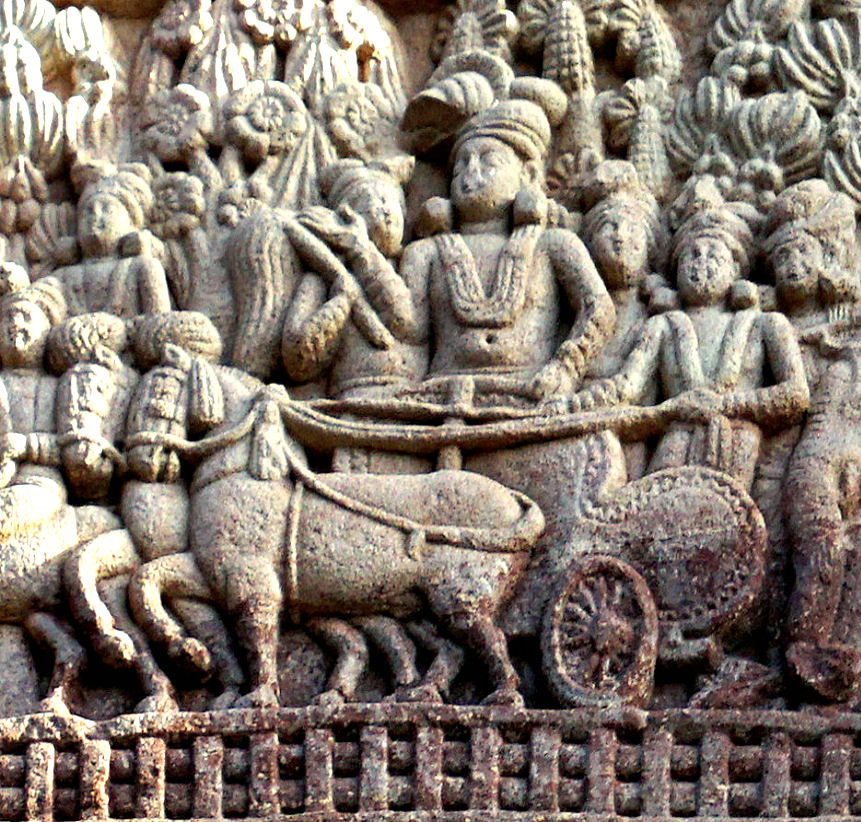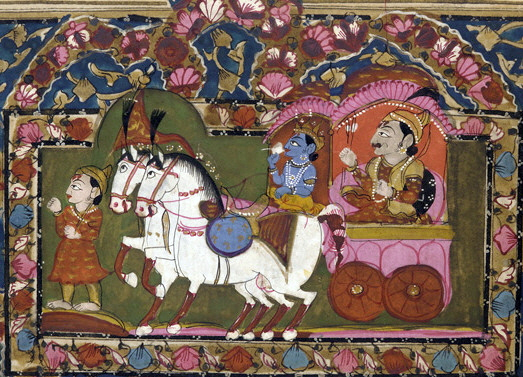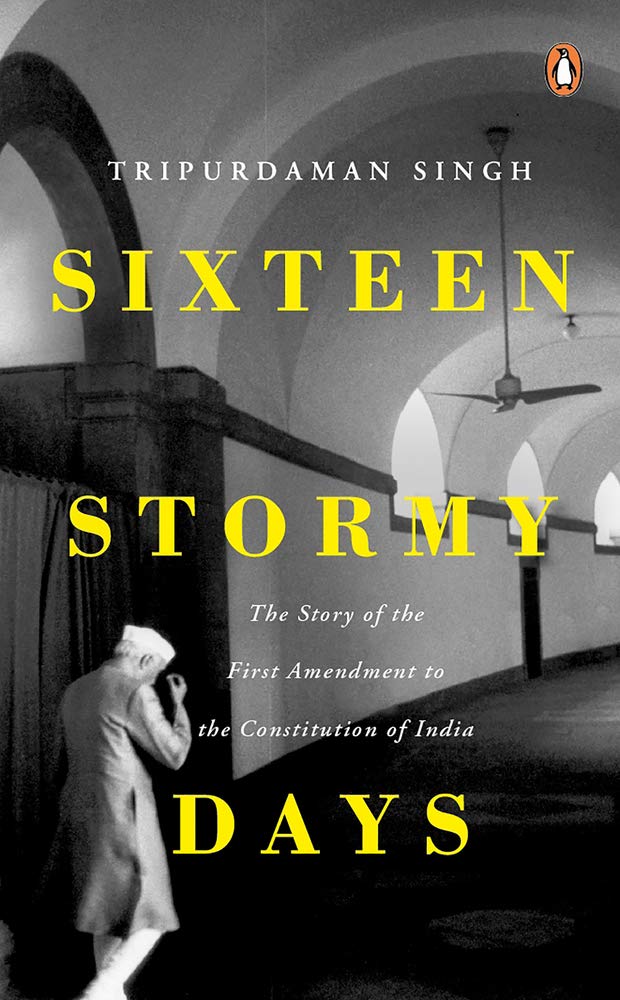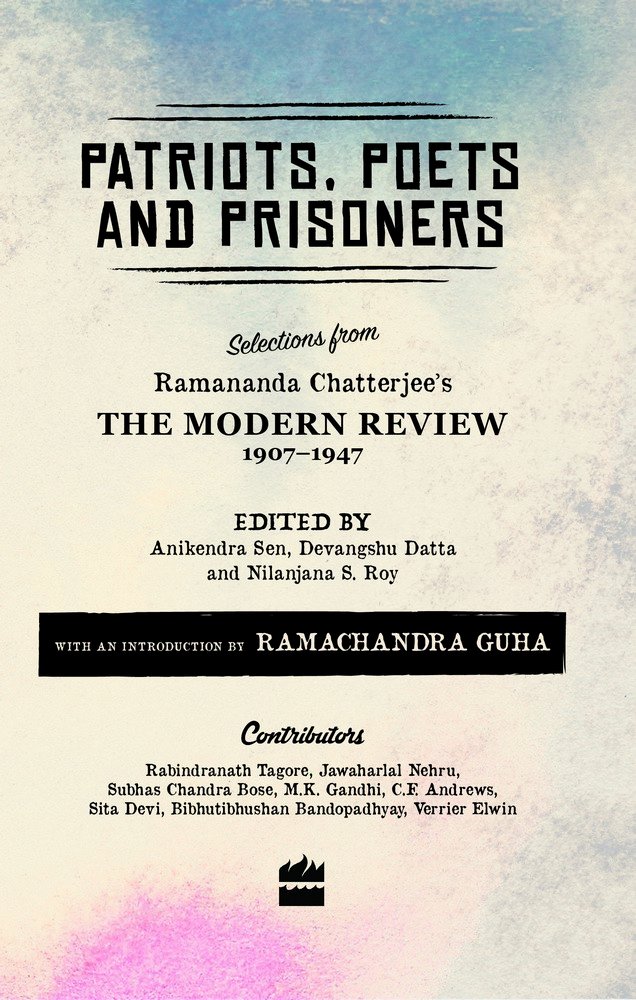ARCHIVE
My Future Visit to America, 1883
— Anandibai Joshi
. . . Our subject to-day is, “My future visit to America, and public inquiries regarding it.” I am asked hundreds of questions about my going to America. I take this opportunity to answer some of them. . .
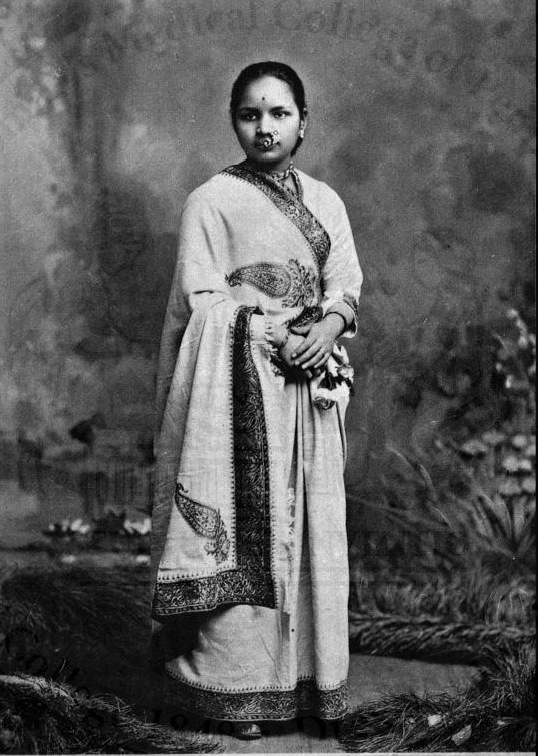
Anandibai Joshi
Why do I go to America? I go to America because I wish to study medicine. I now address the ladies present here, who will be the better judges of the importance of female medical assistance in India. I never consider this subject without being surprised that none of those societies so laudably established in India for the promotion of sciences and female education have ever thought of sending one of their female members into the most civilized parts of the world to procure thorough medical knowledge, in order to open here a College for the instruction of women in medicine. There is probably no country that would not disclose all her wants and try to stand on her own feet. The want of female doctors in India is keenly felt in every quarter. Ladies both European and Native are naturally averse to expose themselves in cases of emergency to treatment by doctors of the other sex. There are some female doctors in India from Europe and America, who, being foreigners and different in manners, customs and language, have not been of such use to our women as they might. As it is very natural that Hindu ladies who love their country and people should not feel at home with the natives of other countries, we Indian women absolutely derive no benefit from these foreign ladies. They indeed have the appearance of supplying our need, but the appearance is delusive. In my humble opinion there is a growing need for Hindu lady doctors in India, and I volunteer to qualify myself for one.
There is one College at Madras, and midwifery classes are opened in all the Presidencies; but the education imparted is defective and not sufficient, as the instructors who teach the classes are conservative, and to some extent jealous. I do not find fault with them. That is the characteristic of the male sex.
Are there no means to study in India? No. I do not mean to say there are no means, but the difficulties are many and great. There is one College at Madras, and midwifery classes are opened in all the Presidencies; but the education imparted is defective and not sufficient, as the instructors who teach the classes are conservative, and to some extent jealous. I do not find fault with them. That is the characteristic of the male sex. We must put up with this inconvenience until we have a class of educated ladies to relieve these men.
I am neither a Christian nor a Brahmo. To continue to live as a Hindu and to go to school in any part of India is very difficult. A convert who wears an English dress is not so much stared at. Native Christian ladies are free from the opposition or public scandal which Hindu ladies like myself have to meet within and without the zenana. If I go alone by train or in the street some people come near to stare and ask impertinent questions to annoy me. Example is better than precept. Some few years ago, when I was in Bombay, I used to go to school. When people saw me going with my books in my hands, they had the goodness to put their heads out of the window just to have a look at me. Some stopped their carriages for the purpose. Others walking in the streets stood laughing and crying out so that I could hear:—
“What is this? Who is this lady who is going to school with boots and stockings on?”
“Does not this show that the Kali Yuga has stamped its character on the minds of the people?”
Ladies and gentlemen, you can easily imagine what effect questions like these would have on your minds if you had been in my place!
Once it so happened that I was obliged to stay in school for some time, and go twice a day for my meals to the house of a relation. Passers-by, whenever they saw me going, gathered round me. Some of them made fun, and were convulsed with laughter. Others, sitting respectably in their verandahs, made ridiculous remarks, and did not feel ashamed to throw pebbles at me. The shopkeepers and venders spit at the sight of me, and made gestures too indecent to describe. I leave it to you to imagine what was my condition at such a time, and how I could gladly have burst through the crowd to make my home nearer!
If I go to take a walk on the Strand, Englishmen are not so bold as to look at me. Even the soldiers are never troublesome; but the Babus lay bare their levity by making fun of everything. “Who are you?” “What caste do you belong to?” “Whence do you come,” “Where do you go?” are, in my opinion, questions that should not be asked by strangers.
Yet the boldness of my Bengali brethren cannot be exceeded, and it is still more serious to contemplate than the instances I have given from Bombay. Surely it deserves pity! If I go to take a walk on the Strand, Englishmen are not so bold as to look at me. Even the soldiers are never troublesome; but the Babus lay bare their levity by making fun of everything. “Who are you?” “What caste do you belong to?” “Whence do you come,” “Where do you go?” are, in my opinion, questions that should not be asked by strangers. There are some educated native Christians here in Serampore who are suspicious; they are still wondering whether I am married or a widow; a woman of bad character or ex-communicated! Dear audience, does it become my native and Christian brethren to be so uncharitable? Certainly not. I place these unpleasant things before you, that those whom they concern most may rectify them, and those who have never thought of the difficulties may see that I am not going to America through any whim or caprice.

Anandibai Joshee graduated from Woman’s Medical College of Pennsylvania (WMCP) in 1886. Seen here with Kei Okami (center) and Sabat Islambooly (right). All three completed their medical studies and each of them was among the first women from their respective countries to obtain a degree in Western medicine.
Why do I go alone? It was at first the intention of my husband and myself to go together, but we were forced to abandon this thought. We have not sufficient funds; but that is not the only reason. There are others still more important and convincing. My husband has his aged parents and younger brothers and sisters to support. You will see that his departure would throw those dependent upon him into the arena of life, penniless and alone. How cruel and inhuman it would be for him to take care of one soul and reduce so many to starvation! Therefore I go alone.
Shall I not be excommunicated when I return to India? Do you think I should be filled with consternation at this threat? I do not fear it in the least. Why should I be cast out, when I have determined to live there exactly as I do here? I propose to myself to make no change in my customs and manners, food or dress. I will go as a Hindu, and come back here to live here as a Hindu. I will not increase my wants, but be as plain and simple as my forefathers, and as I am now. If my countrymen wish to excommunicate me, why do they not do it now? They are at liberty to do so. I have come to Bengal and to a place where there is not a single Maharashtrian. Nobody here knows whether I behave according to my customs and manners, or not. Let us therefore cease to consider what may never happen, and what, when it may happen, will defy human speculation.
Shall I not be excommunicated when I return to India? Do you think I should be filled with consternation at this threat? I do not fear it in the least. Why should I be cast out, when I have determined to live there exactly as I do here? I propose to myself to make no change in my customs and manners, food or dress. I will go as a Hindu, and come back here to live here as a Hindu.
What will I do if misfortune befall me? Some persons fall into the error of exaggerated declamation, by producing in their talk examples of national calamities and scenes of extensive misery which are found in books rather than in the world, and which, as they are horrid, are ordained to be rare. A man or a woman who wishes to act does not look at that dark side which others easily foresee. On necessary and inevitable evils which crush him or her to dust, all dispute is vain. When they happen they must be endured, but it is evident they are oftener dreaded than experienced. Whether perpetual happiness can be obtained in any way, this world will never give us an opportunity to decide. But this we may say, we do not always find visible happiness in proportion to visible means. It is not a thing which may be divided among a certain number of men. It depends upon feeling. If death be only miserable, why should some rejoice at it, while others lament? On the other hand, death and misery come alike to good and bad, virtuous and vicious, rich and poor, travelers and housekeepers; all are confounded in the misery of famine and not greatly distinguished in the fury of faction. No man is able to prevent any catastrophe. Misery and death are always near, and should be expected. When the result of any hazardous work is good, we praise the enterprise which undertook it; when it is evil, we blame the imprudence. The world is always ready to call enterprise imprudence when fortune changes.
Some say that those who stay at home are happy, but where does their happiness lie? Happiness is not a readymade thing to be enjoyed because one desires it. Some minds are so fond of variety that pleasure if permanent would be insupportable, and they solicit happiness by courting distress. To go to foreign countries is not bad, but in some respects better than to stay in one place. [The knowledge of history as well as other places is not to be neglected. The present state of things is the consequence of the former, and it is natural to enquire what were the sources of the good that we enjoy or the evils we suffer. To neglect the study of sciences is not prudent; it is not just if we are entrusted with the care of others. Ignorance when voluntary is criminal, and one may perfectly be charged with evils who refused to learn how he might prevent it. When the eyes and imagination are struck with any uncommon work, the next transition of an active mind is to the means by which it was performed. Here begins the true use of seeing other countries. We enlarge our comprehension by new ideas and perhaps recover some arts lost by us, or learn what is imperfectly known in our country. So I hope my going to America will not be disadvantageous.]
[I have seriously considered our manners and future prospects and find that we have mistaken our interests.] Everyone must do what he thinks right. Every man has owed much to others. His effort ought to be to repay what he has received. [This world is like a vast sea, mankind like a vessel sailing on its tempestuous bosom. Our prudence is its sails; the sciences serve us for oars; good or bad fortunes are the favorable or contrary winds and judgement is the rudder; without this last the vessel is tossed by every billow and will find ship-wreck in every breeze.] Let us follow the advice of Goldsmith who says: “Learn to pursue virtue of a man who is blind, who never takes a step without first examining the ground with his staff.” I take my Almighty Father for my staff, who will examine the path before He leads me further. I can find no better staff than He.
I ask my Christian friends, “Do you think you would have been saved from your sins, if Jesus Christ, according to your notions, had not sacrificed his life for you all?” Did he shrink at the extreme penalty that he bore while doing good? No, I am sure you will never admit that he shrank! Neither did our ancient kings Shibi and Mayurdhwaj. To desist from duty because we fear failure or suffering is not just. We must try. Never mind whether we are victors or victims. Manu has divided people into three classes.
And last you ask me, why I should do what is not done by any of my sex? [To this I cannot but say that we are bound by the rights of society to the labours of individuals. Everyone has his duty and he must perform it in the best way he can; otherwise his fear and backwardness are supposed to be a desertion of duty. It is very difficult to decide the duties of individuals. It is enough that the good of the whole is the same with the good of an individual. If anything seems best for mankind, it must evidently be best for an individual and that duty is to try one’s best, according to his sentiments to do good to the society.] According to Manu, the desertion of duty is an unpardonable sin. So I am surprised to hear that I should not do this, because it has not been done by others. [I cannot help asking them in return “who should stand the first if all will say so?”] Our ancestors whose names have become immortal had no such notions in their heads. I ask my Christian friends, “Do you think you would have been saved from your sins, if Jesus Christ, according to your notions, had not sacrificed his life for you all?” Did he shrink at the extreme penalty that he bore while doing good? No, I am sure you will never admit that he shrank! Neither did our ancient kings Shibi and Mayurdhwaj. To desist from duty because we fear failure or suffering is not just. We must try. Never mind whether we are victors or victims. Manu has divided people into three classes. [Those who do not begin for fear of failure, are reckoned among the meanest; those who begin but give it up through obstacles belong to the middle class; and those who begin but [do] not give it up till they attain success, through repeated difficulties, are the best. Let us not therefore be guilty of the very crime we absolutely hate. The more the difficulties, the greater must be the attempt. Let it be our boast never to desist from anything begun. Sufferance should be our badge.]
The Hindu Sea Voyage Movement in Bengal, 1894
— Standing Committee on the Hindu Sea-Voyage Question
. . . Hindoo young men, in appreciable numbers, proceed to England to receive education in the universities, to qualify for the Bar, to compete for the Indian Civil Service, for the Medical Service, and in various other ways to equip themselves for the practical work of life. The number is on the increase, of gentlemen, who, if all restrictions were removed, would like to proceed to Europe for purposes of travel, and all the pleasures and profits it brings. There is a growing desire also in some quarters to make excursions to the West for commercial purposes. It cannot be a matter of indifference to the Hindoo community if the gentlemen who come back from Europe after perfecting their education and enlarging their experience are to be received back into society or excluded from it. It cannot be a matter of indifference also whether adventurous gentlemen should have free scope given to them in the matter of travel, or they should have their ambition curbed by social restrictions. The welfare of a country is the welfare of its individuals, and no subject can be of greater national importance than the discussion of the limits which custom may have prescribed to the liberty of movement of the men who compose the nation.
On economic grounds alone the question of sea-voyages is of great practical importance. People may feel themselves driven by sheer necessity to try their fortune in remote countries, to seek new careers, learn the arts of foreign nations, and come back home with added qualification and augmented resources. If these poor, adventurous souls should be denied the opportunities they sought, it is not they alone that would be sufferers, but the country as well. Social restrictions, however, are likely to prove an effectual barrier to most of them, and the legitimacy of those restrictions therefore deserves serious consideration. The possibility of natives of India marching out in quest of occupation to distant lands may now appear to be too remote, and as a dream. But there are reasons to believe that if the restrictions were repealed or relaxed, opportunities of adventure would often be utilized.
Hindoo society is governed by rules which have their basis in the Hindoo religion. That religion is enshrined in the shastras, of which the recognised, authoritative interpreters are the Pandits. The Pandits give their vyavasthas or ordinances founded upon the texts. These are accepted by the leaders of the different castes which make up society, and they thus come to regulate usage. On the subject of sea-voyage, therefore, the first thing necessary was to obtain the opinions of the Pandits. That step has already been taken. It was not of course to be expected that the opinion of every single Pandit in Bengal should be obtained, but many of the leading Pandits have been consulted. . . . The next step that was taken was to refer the subject to some of the leading members of Hindoo society, all of the higher castes, and their opinions have also been recorded. Attention may be specially called to the opinion of so distinguished an apostle of Hinduism as Bankim Chandra Chatterjee. Lastly, a large body of public opinion from various sources, which had been elicited by the discussion, has been set forth in its proper place. It includes the opinions as well of eminent Englishmen as of newspapers, Hindoo and English. These opinions have a value which must not be overlooked. Pandits interpret the shastras; social leaders judge practicability; but an intelligent public have also a right to be heard, for, unfettered by considerations of authority and custom, they are able to utter the voice of abstract reason. Mere reasonableness is not an excuse for an innovation, but it will hardly be denied that a practice which is manifestly contrary to reason cannot long remain unmodified, and that so long as it does exist it will work mischief. The opinions, therefore, of intelligent and educated men who are even outsiders to our society have an importance that should not be underrated. . . .
For a full appreciation of the issues involved in the sea-voyage question it is necessary to bear in mind a few well-known facts which may be thus stated:
- For a long time past the practice of eating things condemned by Hindoo rules or custom has been pretty common in Hindoo society, but the gentlemen who have indulged in such practices have not been put out of caste. Their number is growing. They include not merely schoolboys or wild young men, not merely a few insignificant people who might be regarded as the waifs and strays of society, but also and mainly, elderly, respectable, influential gentlemen, some of whom have been recognised as social leaders. In their own private residences or those of their friends, European or Native, in garden houses, in hotels kept by Europeans or Mohammedans, on steamers, in railway refreshment rooms, numbers of Hindoo gentlemen dine in the European style, and the orthodox members of society find it convenient to connive at these practices. Demand creates supply. Hence it is we find that restaurants where European dishes are offered, are multiplying. They are set upon largely frequented streets, and near offices and theatres. Year after year, in every town in which the Indian National Congress is held, it is found necessary by the organizers to make special arrangements for those delegates and visitors who are to live in the European style. In a word, the rules as regards orthodox living are every day trampled underfoot, and the violations are in no way punished.
- There was a time when it was considered an un-Hindoo practice to drink pipe-water. Not only is pipe-water drunk today by Hindus of unquestioned orthodoxy, but aerated waters, European wines and spirits, and medicines prepared by Europeans, are habitually consumed by large numbers of them. Bread, biscuits and confectionery of European or Mahomedan manufacture are also largely indulged in.
- Hindu society has not been able consistently to keep out of its pale all those who have made voyages to Europe. Some of them received recognition in society, at any rate among their friends and relations; and after their death, their sons and other relations have had no difficulty in being accepted as members of society, though no prayaschitta [penance] had ever been performed by them.
- Some of those that have made voyages to Europe have, on their return to this country, lived, permanently or for a time, with their relations. Many of their friends and relations have also dined with them on many occasions. Orthodox society has never ceased to recognise these friends and relations.
- Either for purposes of business or on pleasure trips, several Hindoos have made voyages to Rangoon, to Madras, to Ceylon. Nobody dreams of excommunicating them.
- Esteemed Hindoo gentlemen have on some occasions taken part, as host or guest, in entertainments, almost of a public character, conducted in the European style. The names of those who dined on the occasions have sometimes been reported in the newspapers, but orthodox society has never cared to take any notice of their errors.
- Hindoo Society has exhibited nothing like consistency, observed no definite principle, in dealing with those of its members who have made voyages to Europe. The same men that recognise them on one occasion do not recognise them on another. They dine with them today and decline to dine with them tomorrow. If they are to be excommunicated, those who have dined with them, or otherwise mixed with them in formal social intercourse on ceremonial occasions, should be excommunicated also. But the utmost that the ultra-orthodox members of the community seek to do is to omit to recognise only the travelled men, while they permit themselves to mix freely with men who have been tainted by association with the chief offenders.
What is the inference to be drawn from these facts? Obviously this, that it would not be fair or consistent to exclude from society men who had made only a voyage by sea without transgressing Hindoo rules of living. Surely it cannot be contended that a mere crossing of the sea is a grosser offence than living in a non-Hindu style, or even as gross as that. When open, or, at any rate, well-known violations of Hindoo rules of eating and drinking are connived at and excused, neither reason nor orthodoxy demands the exclusion of men who living as Hindoos had merely travelled to the West. . . That a voyage by sea as such, does not militate against Hinduism seems to be tacitly admitted by Hindoo society by the manner in which it has been treating Swami Vivekananda’s visit to America. The Swami, so far from being regarded as an apostate by reason of his visit, is being looked up to as a prince of Hindoos and the pride of Hinduism. It is inconceivable, therefore, that the sea-voyage movement should be opposed on grounds either of religion or logic. If there could be any objection to it, it would be its conservative rather than its revolutionary character. . .
Letter regarding the Movement, 1894
— Bankim Chandra Chatterjee
. . . The questions which you wish me to answer are such as are best answered by professors of the Dharma Sastras. I do not profess the Dharma Sastras, nor am I prepared to undertake the office of expounding them. But I have no objection to offer a few observations regarding the present agitation about sea-voyages by Hindus.
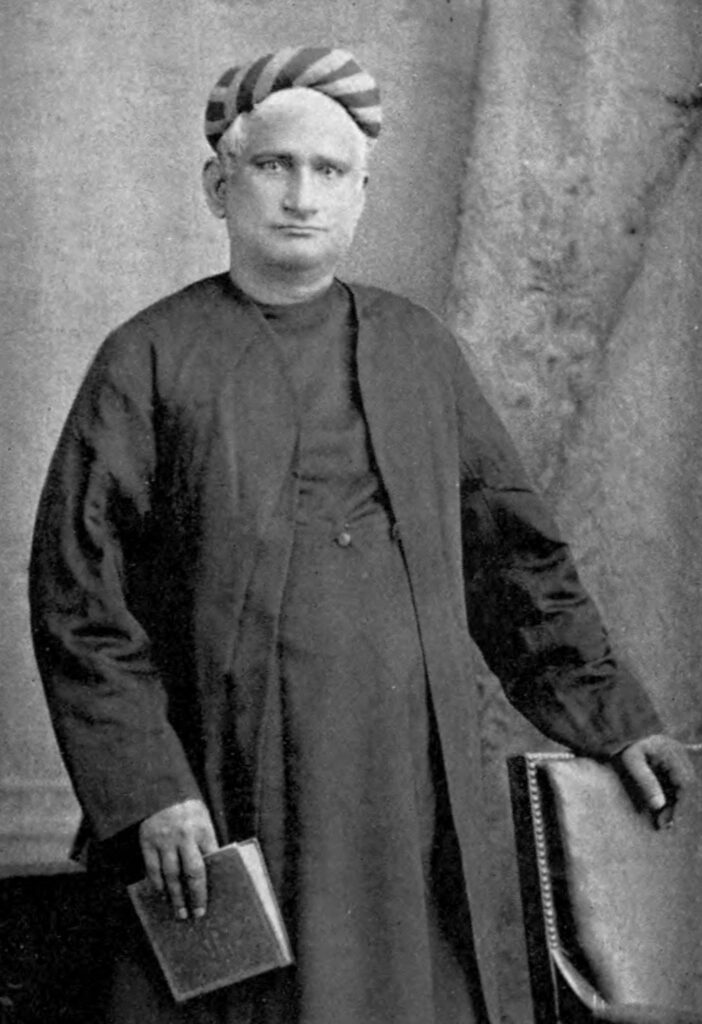
Bankim Chattapadhyay
In the first place, I do not believe that it is either possible or desirable to promote social reforms by invoking the authority of the Sastras. I had to object on the same ground to the late lamented Ishwar Chandra Vidyasagar’s proposals to suppress polygamy with the aid of the Sastras; and I have seen no ground since then to change my opinion. This opinion I hold on two grounds. The first is, that Bengali society is governed not by the Sastras but by custom. It is true, that very often custom follows the Sastras; but as often again custom conflicts with the Sastras. When there is such a conflict custom carries the day.
You seek to collect the behests of the Sastras, regarding sea-voyages, and to induce society to follow them;—are you prepared to induce society to be guided by the Sastras on all other matters as well? One of the precepts of the Dharma Sastras is, that it is the duty of the Shudras to perform menial offices for the Brahmins and other superior castes;—do the Shudras of Bengal follow the precept?
The second reason for my opinion is that if society were everywhere governed by the Sastras, it is doubtful whether the result will be social welfare. You seek to collect the behests of the Sastras, regarding sea-voyages, and to induce society to follow them;—are you prepared to induce society to be guided by the Sastras on all other matters as well? One of the precepts of the Dharma Sastras is, that it is the duty of the Shudras to perform menial offices for the Brahmins and other superior castes;—do the Shudras of Bengal follow the precept? The Sastras are not a guide here. Are any of you prepared to enforce this precept? Do you think that any endeavours to enforce it will succeed? Will a Sudra Judge of the High Court leave the bench, or will the prosperous Shudra zamindar leave the zamindar’s seat, to respectfully tend the feet of the Brahmin manufacturer of eatables? By no means. Bengali society obeys a portion of the Dharma Sastras according to its necessities. The rest it has cast off because of its necessities. The same feeling of necessity may induce it to cast off what still remains. What good then there is in seeking to ascertain the commands of the Dharma Sastras?
My own conviction is that it is impossible to carry out social reformation regarding any particular practice merely on the strength of the Sastras without religious and moral regeneration along the whole line. This I have tried to explain at length in my work on Krishna Charitra. I have already stated that society here is governed by custom, not by the Sastras. Reforms in custom can be achieved only when there is an advance in religion and morals along the whole line. The present agitation is the outcome of the advance that has already taken place. As society advances gradually in religion and morals, the objections against sea-voyages will disappear, or if any opposition should still continue to exist, it would be powerless. But so long as the full measure of advance is not attained, so long it will be impossible to make sea-voyages acceptable to society.
But it has also to be observed that none of us are aware of the exact measure of opposition which exists in Bengali society towards sea-voyages. I see that whoever commands the necessary means and is otherwise favorably circumstanced, does proceed to Europe when willing to do so. I have not come across a single instance in which the journey to Europe was abandoned out of respect to the authority of the Sastras. But I am also bound to admit that most of those who return from Europe remain outside the pale of Hindu society. It is a question whether the fault lies with them, or with Hindu society. On their return to this country they voluntarily keep away from Bengali society by adopting European habits and customs. They separate themselves from us by adopting foreign costumes, foreign habits of living, and foreign usages. Those who on their return from Europe did not adopt this course have in many instances been re-admitted into Hindu society. If gentlemen returning from Europe did generally resume habits and usages conformable to Hindu society, it is impossible to say that they would be as a body left outside its precincts.
I have not come across a single instance in which the journey to Europe was abandoned out of respect to the authority of the Sastras. But I am also bound to admit that most of those who return from Europe remain outside the pale of Hindu society. It is a question whether the fault lies with them, or with Hindu society.
Lastly, I have to point out that before deciding the question as to whether sea-voyages are in conformity to the Dharma Sastras of the Hindus, it is necessary to decide whether it is not in conformity to Dharma (religion) itself. Must we reject that which is conformable to religion but opposed to the Dharma Sastras, merely because it is opposed to the Dharma Sastras? Many will say that alone which is conformable to the Hindu Dharma Sastras is religion; and that which is not conformable to them is irreligion. I am not prepared to admit this. None of the older sacred books of Hindus say so. Krishna in the Mahabharata says— “Dharma is so called because it holds all. Know that for certain to be Dharma, which contributes to the general welfare.” If the Mahabharata is not guilty of a falsehood, if he whom the Hindus worship as the Divine Incarnation is not guilty of falsehood, then that which is for the general welfare is religious. Now, are sea-voyages for the general welfare or not? If they are, why should they be opposed because they do not happen to be encouraged by the Smritis? . . . Sea-voyages are conformable to religion because they tend to the general good. Therefore, whatever the Dharma Sastras may say, sea-voyages are conformable to the Hindu religion.
These excerpts have been carried courtesy the permission of Rahul Sagar and Juggernaut. You can buy To Raise a Fallen People, here.
ARCHIVE
New Leaders and Their Different Ideologies
After the failure of the non-cooperation movement, the Indian people had lost hope. Communal conflict between Hindus and Muslims wiped out the little resolve that still remained. But once a sense of awakening has come upon a nation, it cannot remain asleep for long. In just a few days, the public is back on its feet and ready for battle. Today, India is full of life and vigour again; it is awake. We may not see clear signs of a great mass movement, but the ground is certainly being prepared for it. Many new leaders with a modern sensibility are emerging. Young leaders are at the forefront this time, and youth movements are proliferating. Only young leaders are commanding the attention of patriotic-minded Indians. Even the tallest veteran leaders are being left behind.

Bhagat Singh
Many new leaders with a modern sensibility are emerging. Young leaders are at the forefront this time, and youth movements are proliferating. Only young leaders are commanding the attention of patriotic-minded Indians.
The leaders who have gained prominence this time are the venerable Subhash Chandra Bose of Bengal and the eminent Pandit Jawaharlal Nehru. These are the two leaders who appear to be rising above all others in India and involving themselves in youth movements in particular. They are both uncompromising champions of Indian independence; both intelligent and genuine patriots. And yet, their ideologies are as different as night and day. One is believed to be a devotee and proponent of India’s ancient culture and the other a committed follower of western civilization. If one is regarded as tender-hearted and sensitive, the other is spoken of as a quintessential revolutionary. Our attempt in this essay will be to present their respective ideologies before the public, so that people understand the difference between the two and make up their own minds.
But before we examine the ideas of these two leaders, it is important to mention another who is a champion of independence just as they are, and is also a prominent figure in certain youth movements. Sadhu Vaswani may not be as well known as the leading lights of the Congress, he may not occupy a special place in the country’s political arena, yet his influence is apparent among the youth, who will shape the country’s future. The organization Sadhu Vaswani founded — Bharat Yuva Sangh — has a particular hold on young Indians. Vaswani’s ideology can be summed up in a single phrase: back to the Vedas. This call was first given by the Arya Samaj. It is based on the belief that the Almighty has poured all the knowledge of the world into the Vedas. No progress is possible beyond them. Therefore, the world has not and cannot achieve anything greater than the wonders our very own India had achieved in the ancient past! So that is the entire faith of people like Vaswani. Which why he says:
“Up until now, our politics has either considered Mazzini and Voltaire as its ideals, or it has sought inspiration from Lenin and Tolstoy. This, when they should know that they have far greater ideals in our ancient rishis…”
Vaswani is convinced that once upon a time, our country had reached the final summit of development and today there is no reason for us to move forward at all; we only need to go back to the past.
Vaswani is a poet. Everything about his ideology is poetic. He is also a great practitioner of religious dharma. He wants to establish ‘Shakti-dharma’. He says, ‘At this time we need shakti — power — more than ever. He does not use the word ‘shakti’ only for India. He sees the word as the path and means to a kind of Devi, a special godhead. Like a very emotional poet he tells us:
‘For in solitude have I communicated with her, our admired Bharat Mata and my aching head has heard voices saying — “The day of freedom is not far off.” Sometimes indeed a strange feeling visits me and I say to myself: Holy, holy is Hindustan. For still is she under the protection of her mighty Rishis and their beauty is around us, but we behold it not.’
It must be the poet’s lament that makes him declare, over and over like a man deranged or distracted: ‘Our mother is the greatest. She is the mightiest. No one alive can vanquish her!’ In this fashion, driven purely by emotion, he ends up saying things like this: ‘Our national movement must become a purifying mass movement, if it is to fulfill its destiny without falling into class war one of the dangers of Bolshevism.’
He believes that all one needs to do is to say — ‘Go among the poor, go to the villages, give them free medicines’ — and our mission is accomplished. He’s a romantic poet. His poetry can offer no special purpose, it can only excite the heart a little. In fact, he has no vision to offer, except great noise about our ancient civilisation. He gives nothing to young minds. His only aim is to fill every heart with plain emotion. He has obvious influence among the youth, and it is growing. His ideas are regressive and patchy, as we’ve seen above. Such ideas have no direct connection with politics, and yet they have a significant effect. Mainly because it is the youth who are the future, and it is among them that such ideas are being propagated.
The leaders who have gained prominence this time are the venerable Subhash Chandra Bose of Bengal and the eminent Pandit Jawaharlal Nehru. These are the two leaders who appear to be rising above all others in India and involving themselves in youth movements in particular. They are both uncompromising champions of Indian independence; both intelligent and genuine patriots. And yet, their ideologies are as different as night and day.
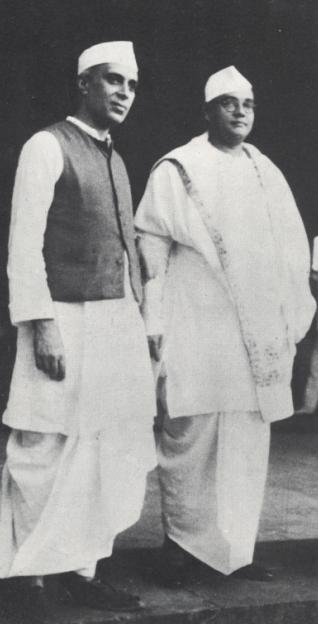
Jawaharlal Nehru with Subhas Chandra Bose
Let us now return to Subhash Chandra Bose and Jawaharlal Nehru. During the last three months, they have both chaired many conferences and put their thoughts and ideas before people. The government considers Subhash Babu a member of the group that is committed to overthrowing it, for which reason it had charged and imprisoned him under the Bengal Act. Upon his release, he was chosen as the leader of the Extremist group [of the Congress]. He espouses Purna Swaraj [complete independence], and argued for this in his presidential address at the Maharashtra session [of the Congress].
Pandit Jawaharlal Nehru is the son of the Swaraj Party leader Motilal Nehru. He is a barrister, and a very learned man. He has travelled to Russia and other countries. He is also a leader of the Extremist group, and it was due to his efforts, and those of his fellow leaders, that the resolution for Purna Swaraj was passed and adopted at the Madras session. Before this, he had spoken emphatically in favour of Purna Swaraj at the Amritsar session.
And yet, the two leaders are poles apart in their thinking. Reading the transcripts of their speeches at the Amritsar and Maharashtra sessions, this difference was apparent to us. But the difference became clear as daylight after a speech delivered in Bombay. Pandit Nehru was chairing the conference and Subhash Bose made a speech. He is a very emotional Bengali. He began his address with the statement that India has a special message for the world. It has a lesson in spirituality for humanity. And then he launched into his speech like a man in the grip of disorienting emotion — ‘Behold the Taj Mahal on a moonlit night and think of the vision of that heart that imagined it. Recall that a Bengali novelist has written that “our flowing tears hardened into stone within us”. Bose also declares that we should return to the Vedas. In his Poona [Congress session] address, he had expounded on ‘nationalism’ and said that internationalists criticize nationalism as narrow, chauvinistic ideology, but that this is a mistake. Indian nationalist thought, according to him, is nothing of the kind. It is not chauvinistic. It is not born of self-interest, and it is not oppressive, because at its root is the philosophy of Satyam Shivam Sundaram — Truth is bountiful and beautiful.
The same old romanticism. Pure emotionalism. And [like Vaswani], Bose too has great faith in his ancient past. He sees only greatness in this ancient era. In his thinking, there’s nothing new in the system of panchayati raj, or the rule of the people, which he says is very old in India. He goes so far as to say that Communism isn’t new to India either. Anyway, that day in Bombay, he went on long and hard about India’s special message for the world.
Pandit Jawaharlal Nehru, like many others, holds an entirely different view: ‘Every country thinks it has a special message for the world. England has arrogated to itself the right to teach the world culture. I don’t see anything special that belongs to my country alone. But Subhash Babu has great belief in such things!’ Nehru also says, ‘Every youth must rebel. Not only in the political sphere, but in social, economic and religious spheres also. I have not much use for any man who comes and tells me that such and such thing is said in the Koran. Everything unreasonable must be discarded, even if they find authority for it in the Vedas and the Koran.’
One man thinks our old systems are very superior; the other man believes we should rebel against these systems. Yet the latter is called emotional, sensitive, and the former a transformative revolutionary!
These are the thoughts of a true revolutionary, while Subhash Chandra’s are the thoughts of someone who wants to replace one regime with another. One man thinks our old systems are very superior; the other man believes we should rebel against these systems. Yet the latter is called emotional, sensitive, and the former a transformative revolutionary! At one point Pandit Nehru says:
“To those who still fondly cherish old ideas and are starving to bring back the conditions which prevailed in Arabia 1300 years ago or in the vedic age in India, I say that it is inconceivable that you can bring back the hoary past. The world of reality will not retrace its steps, the world of imagination may remain stationary.”
This is why it feels necessary to revolt.
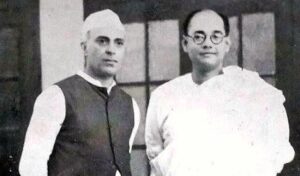
Jawaharlal Nehru and Subhash Chandra Bose
Subhash Babu supports Purna Swaraj, complete independence, because the British are people of the West and we are of the East. Pandit Ji’s position is that we need to establish our own rule so that we can change the entire social structure. This is why we must have complete and absolute independence.
Subhash Babu is in sympathy with labour, the working class, and wants to improve their condition. Pandit ji wants to bring in revolution and change the existing system altogether. Subhash Chandra is emotional and romantic — he is giving the young food for their hearts, and only their hearts. The other man is an epochal change — maker who is fuelling not just the heart but also the mind:
“They should aim at Swaraj for the masses based on Socialism. That was a revolutionary change which they could not bring about without revolutionary methods… Mere reform or gradual repairing of the existing machinery could not achieve the real, proper Swaraj for the general masses.”
Subhash Babu feels the need to focus on national politics only as long as it is necessary to safeguard and promote India’s position in world politics. But Pandit ji has freed himself of the narrow confines of plain nationalism and emerged into an open field.
Subhash Babu feels the need to focus on national politics only as long as it is necessary to safeguard and promote India’s position in world politics. But Pandit ji has freed himself of the narrow confines of plain nationalism and emerged into an open field.
Now the ideas of the [two] leaders are before us. Which way should we incline? One Punjabi newspaper has heaped praise upon Subhash Chandra and said of Pandit ji and others that such rebels destroy themselves beating their heads against stone. We must of course remember that Punjab has always been a rather emotional province. People’s passions here rise very quickly and just as quickly subside, like foam.
Subhash Chandra doesn’t appear to be providing any intellectual nourishment, only food for the heart. The need of the hour now is for the youth of Punjab to understand and strengthen revolutionary ideas. At this time, Punjab needs food for the mind, does not mean we should become his blind followers. But as far as ideas are concerned, the young people of Punjab should align themselves with him, so that they can know the true meaning of revolution, realize the need for a revolution in India, understand the significance of revolution in the world at large, and so on Through serious thought and analysis, the youth should bring clarity and conviction to their ideas, so that even in times of very little hope, times of disillusionment and defeat, they should not lose direction, stand tall and strong against a hostile world and not give up. This is how the public will achieve the goal of revolution.
— Bhagat Singh
This is a translation of Bhagat Singh’s ‘Naye Netaaon ke Alag Alag Vichar’ in the July 1928 issue of the journal Kirti. This translated version has been carried courtesy the permission of Purushottam Agrawal.
You can buy Who is Bharat Mata? On History, Culture and the Idea of India: Writings by and On Jawaharlal Nehru here.
ARCHIVE
Dalit ‘Viranganas’ and Reinvention of 1857
The past three decades particularly have seen a flourishing of popular dalit literature, pamphlets and booklets, which have emerged as a critical resource for deeper insights into dalit politics and identity. Dalits themselves are disentangling received knowledge from the apparatus of control. This literature brings fresh hope, as it is believed that now dalits are in charge of their own images and narratives, witness to and participants in their own experience. They are rescuing dalit culture from degeneration and stereotypes, and bringing in a new dalit aesthetic. They are not the “Other”, and are themselves articulating critical questions of choice and difference.
Most of this literature is mass produced in thousands, usually in the form of thin pamphlets. It is sold in large quantities through small ad hoc stalls put up at various public rallies, conglomerations and melas of dalits, on pavements, and through dalit presses and publishers, reaching through such commercial networks into a large number of dalit households. Most of the authors are not known much or well established. There is a technical lack of sophistication in the production of these pamphlets, and they are usually thin, reproduced with many editions, priced very cheaply at approximately between Rs 2 and Rs 50, printed on cheap paper, through private dalit presses. They are written in simple colloquial Hindi, and encompass various literary genres.
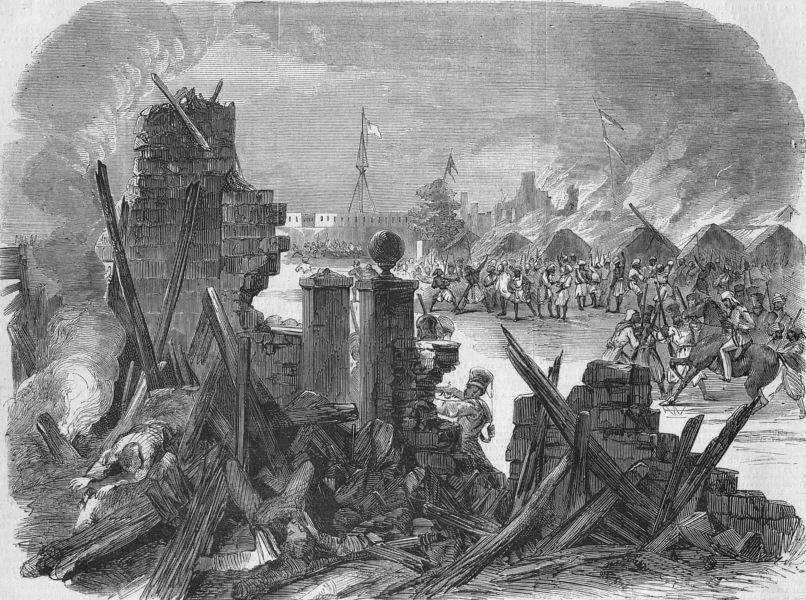
“The Sepoy revolt at Meerut,” wood-engraving from the Illustrated London News, 1857
While covering a huge range, from works by and on Ambedkar, status of dalits and atrocities on them, reservations, conversions, dalit literary writings, theatre and songs, what interests me here are the representations of nationalist struggle in this literature. It has been argued that dalits have had an ambivalent relationship with both Indian nationalism and colonialism, often contradictory with the views of dominant Hindu communities. Some dalit intellectuals argue that the British liberated the dalit masses from the oppressions of Hindu society, and that British rule was good for the dalits. In Uttar Pradesh, many of the activists within the dalit movement had articulated similar ideas as early as the 1920s. For example, the Adi-Hindu movement in the 1920s and 1930s and its leaders were against the Congress and the national movement, and were pro-British. However, in post-independent India, given the imperative political assertions by the dalits, there has been a need felt to assert the nationalist credentials of the dalits and the positive role they played in the freedom struggle. Thus dalit histories have come out with copious volumes on their contribution and role in the independence movement, digging out hitherto ignored accounts. The social constructions of the role played by dalits in the struggle for India’s freedom have thus been changed by the dalits themselves in tandem with changing social and political conditions in specific historical moments within dalit communities. What is significant, however, is that weather dalits argue for an anti-nationalist or a pro-nationalist stance in the colonial period, their agendas and articulations are substantially different, departing from and challenging conventional nationalists and mainstream historians of the period. Dalit perspectives on their own histories offer a dramatically different account from the received wisdoms taught in most Indian universities.
Thus dalit histories have come out with copious volumes on their contribution and role in the independence movement, digging out hitherto ignored accounts. The social constructions of the role played by dalits in the struggle for India’s freedom have thus been changed by the dalits themselves in tandem with changing social and political conditions in specific historical moments within dalit communities. What is significant, however, is that weather dalits argue for an anti-nationalist or a pro-nationalist stance in the colonial period, their agendas and articulations are substantially different, departing from and challenging conventional nationalists and mainstream historians of the period. Dalit perspectives on their own histories offer a dramatically different account from the received wisdoms taught in most Indian universities.
Promoting alternative accounts of role of dalits in the freedom struggle, this literature portrays itself as the real and comprehensive truth. It catalogues their enormous sacrifices and enumerates the many occasions on which dalits rose in defence of the nation. These stories are endlessly repeated in pamphlets after pamphlets, though they have not found their way in canonised/ mainstream history. What is being proposed by dalit writers here is the concreteness and the almost palpable truth of this history. This popular dalit literature can be seen to represent alternative and dissident voices, coexisting with and simultaneously challenging hegemonic ideologies. It is a counterpoint to hegemony. It also reflects Bakhtin’s notions of dialogics and heteroglossia, and Stuart Hall’s concept of “oppositional” decoding, challenging “dominant-hegemonic” and “negotiated” reading positions.
1857 Revolt, Conventional Histories and Dalit Retellings
The revolt of 1857 figures in a major way in the narratives of popular dalit histories, where a completely alternative account of the revolt emerges, converging histories, myths, realities and retelling of the pasts. The outbreak of 1857 has been regarded as a memorable episode in Indian history. It was in a sense one of the first formidable revolt that had broken out against foreign domination. To prove the nationalist credentials of dalits, their popular histories have thus completely transformed 1857.
Before going into these narratives let us briefly examine conventional and standardised histories of the revolt. Various strands of historiography largely seem to converge, particularly on the question of the caste character of the revolt. According to nationalist historians like S B Chaudhuri, Tara Chand and R C Mazumdar, the social composition of 1857 consisted of the ruling class and the traditional elite of the society, who were the “natural leaders” of the revolt. The elitist character of the revolt is highlighted by referring to it as a general movement of the Muslims and the Hindus-princes, landholders, soldiers, scholars and theologians. Marxist scholars seem to fall within the same paradigm where they basically see the revolt as a last attempt of the elite medieval order to halt the process of its dissolution and recover its lost status. Thomas R Metcalf too emphasises that it was not merely a mutiny nor a war of independence. For him 1857 was “a traditionalist movement in which those who had the most to lose in the new sought the restoration of the old pre-British order”. In his significant work, Eric Stokes, while highlighting the local background of the upsurge, also argues that it was the fear of the loss of an upper caste status due to the use of fat-greased cartridges that precipitated the uprising. He shows how ashraf Muslims, brahmins and rajputs had secured a near monopoly over entry into the Bengal army and they were afraid of a loss to their status. Many other contemporary accounts too emphasise the hurt and the fears of pollution felt up upper caste Hindus as an important reason for the revolt. How do dalit histories of 1857 sit in with these accounts? The purity/pollution ties of the upper castes and classes, linked with the crossing of seas or biting of the flesh of the cow or the pig, do not fit in with dalits. There have been other scholars who have emphasised the lower caste base of the revolt as well. Thus, for example, Rudrangshu Mukherjee emphasises the mutual dependence between peasantry and talukdars, which provided the basis for common and united action at this tumultuous juncture. He thus links the seemingly disjointed and contradictory realms of the elite and the common masses. Gautam Bhadra also highlights the common leaders of the revolt. However, even these scholars, in spite of their best intentions, do not explicitly focus on dalits and even less so on women. As Bhadra says, “In all these representations what has been missed out is the ordinary rebel, his role and his perception of alien rule and contemporary crisis” (emphasis in original).
How do dalit histories of 1857 sit in with these accounts? The purity/pollution ties of the upper castes and classes, linked with the crossing of seas or biting of the flesh of the cow or the pig, do not fit in with dalits. There have been other scholars who have emphasised the lower caste base of the revolt as well. Thus, for example, Rudrangshu Mukherjee emphasises the mutual dependence between peasantry and talukdars, which provided the basis for common and united action at this tumultuous juncture. He thus links the seemingly disjointed and contradictory realms of the elite and the common masses. Gautam Bhadra also highlights the common leaders of the revolt. However, even these scholars, in spite of their best intentions, do not explicitly focus on dalits and even less so on women.
With the rise of the dalit movement and literature in north India, the history of 1857 however has been completely inversed, with many histories of it being rewritten, particularly since the 1960s. Contemporary dalit perceptions and compositions of 1857 are very different from scholarly historical studies on the subject, or even constructed “popular” perceptions, and represent the historical consciousness of the revolt in the public memory of the dalits. The pamphlets and books on dalit histories of 1857 – which may also be described as unofficial dalit histories of colonial India – combine myths, memories and histories, depicting dalit versions of the revolt. Dalit writers are attempting here to look upon the mutiny as part of their struggle for freedom. The revolt has taken on the character of a dalit resistance, where alternative dalit heroes are represented as the real symbols of 1857 in dalit popular nationalist consciousness. The rebel dalit heroes – some constructed, some exaggerated, some “discovered” – have become heroes fighting for a free India. In these accounts, the armies of soldiers against British consist largely of dalits. New dalit histories argue that the dalits had nothing much to lose in pre-British times, as their condition had been miserable even then. So it was actually dalits who fought for independence in 1857, while the upper caste Hindus and Indian rulers only fought to restore their rule. The focus of this literature is no longer on the sepoys or the greased cartridges, but on dalits groaning under foreign oppression. As the famous dalit poet Bihari Lal Harit says regarding 1857:
nai, dhobi, kurmi, kachchi/bharbhuje bhaat kumhaar lare.
Lare khak rub mochi dhanak/sab daliton ke parivar lare.
(Barbers, washermen, kurmis, gardeners, grain-parchers, bards and potters fought.
Cobblers rolling in dust and cotton-carders fought. All dalit families fought.)
Dalit narratives of 1857 deploy an impassioned language, and are written usually by dalit men who are not trained historians. These writers are inspired by altogether different sentiments, and their writings reveal the inner dynamics of dalit politics as well. They are writing history with a mission by claiming a past and using it for the furtherance of their future. One of their purposes in writing inspirational histories of this kind is to stimulate dalit nationalism, dalit patriotic sentiment, and their pride. They are rewriting history to provide dignity to the dalits. Present day feelings are ascribed to dalit heroes of 1857, and they are seen as teaching a moral lesson that the dalits of today need to emulate the heroic deed of their past heroes, and fight for their rights today as well. In the dalit literature, 1857 has become the Caesar of India, which is more powerful when dead than alive. It has got inscribed as a heroic popular uprising fought by the lowly, a symbol of challenge to the British power by the dalits. It entailed united dalit activism and sacrifice of enormous numbers. Its history is constantly being reshaped in the present socio-cultural and political context. It has an inspirational quality, an effective conviction, which signifies a present political importance.
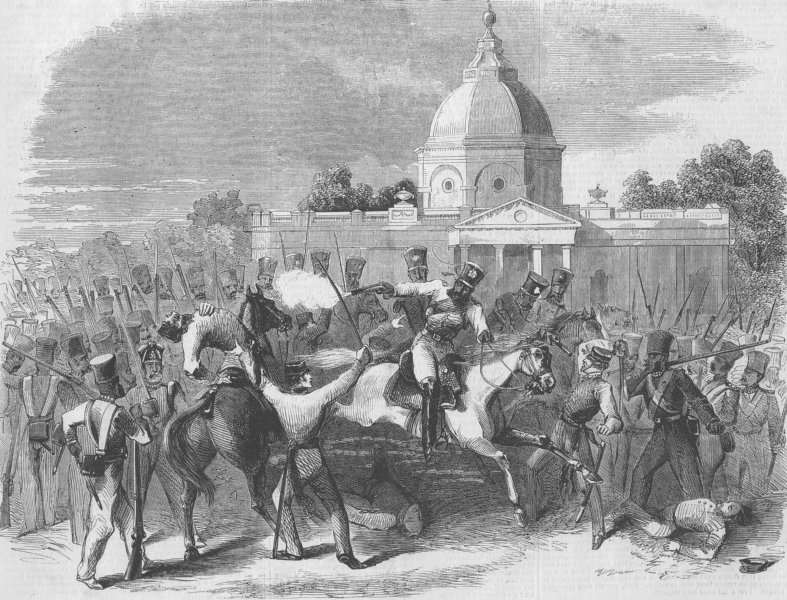
Wood-engraving depicting the massacre of officers by insurgent cavalry at Delhi
1857 has also become a marker for the dalits to prove their nationalist credentials, and claim their own space in the freedom struggle and the history of a nation in the making. By this, dalits also seek to win acceptance from the wider society by creating and legitimising a space for themselves within the nationalist narratives. However, these histories are not just reinventions of the past or inspirational histories. They also reveal a deep impassioned plea to recognise the unsung heroes of the revolt, who were often illiterate and left no written records. Folksongs, oral narratives and myths also thus become the basis of these accounts. As says one:
yatra-tatra sarvatra milegi, unki gaatha ki charcha.
kintu upekshit veervaron ka – kabhi nahin chapta parcha.
(Here, there and everywhere, you will find discussions on their deeds, but the scorned [dalit] heroes are never written about in papers.)
However, this literature has not found its way in mainstream, conventional and canonised historical narratives of 1857, be it school textbooks, restructured curricula or scholarly works. The reasons for this may be camouflaged in a language about “quality”, authenticity and written historical records. Dalit literature on 1857 may be seen as “inferior”, sensational, mimetic and unintellectual, though moving and passionate. The cannon fodder of 1857 history has thus kept dalit versions of 1857 away from the loci of authority – university departments, literary associations and syllabi. Dalit literature on 1857 occupies a different publicpolitical domain and presents an alternate form of knowledge. The language and vocabulary deployed in dalit literature on 1857 stresses the need for dalitisation of history and to examine the dalit leaders of the revolt. Dalits claim that reinventing 1857 from a dalit perspective is imperative in order to represent reality. While appropriating the past, dalit writers are simultaneously questioning the blurred presentations and partial/prejudiced histories of historians, arguing that dalit heroes of the revolt have been completely erased by them. They argue that most historians implicitly hold their high caste biases when writing histories of 1857.
Dalit ‘Viranganas’ of 1857
A chief feature of these popular dalit histories of 1857 is the way dalit women get represented in them. Here myths about dalit viranganas (heroic women) are being reinvented as a potent symbol for identity formation and as a critical part of a movement to define political and social positioning of dalits. Narratives of dalit viranganas abound, with a long list of them littering the Indian past. These women are ascribed particularly heroic roles. In fact, dalit female icons, engaged in radical armed struggles, far outnumber dalit men in 1857. These writings invoke political and public dalit memories, where women like Jhalkari Bai of the kori caste, Uda Devi, a pasi, Mahabiri Devi, a bhangi and Asha Devi, a gurjari, all stated to be involved in the 1857 revolt, have become the symbols of bravery of particular dalit castes and ultimately of all dalits.
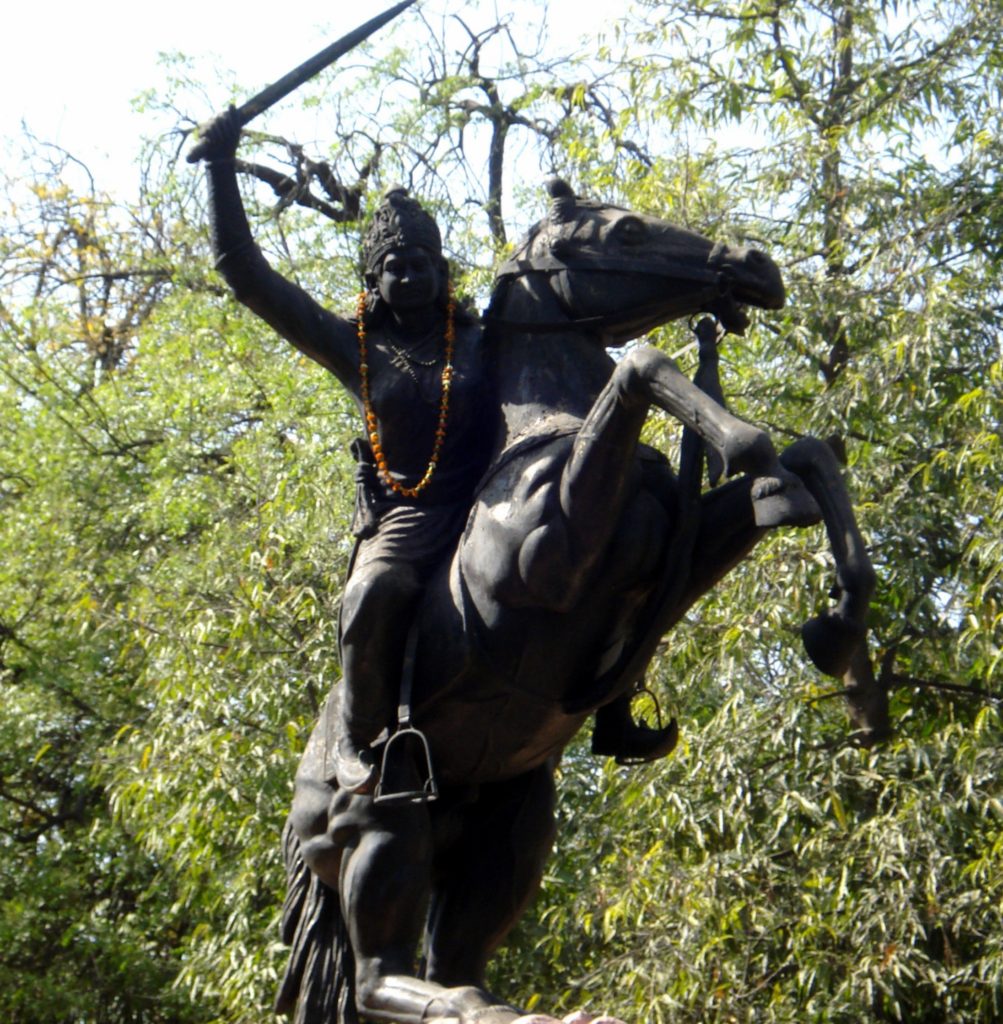
Jhalkari Bai statue at Gwalior
Representing the dalit woman in certain modes in 1857 also indicates ways in which pasts are remembered and retailed, and the relationships of such pasts to people’s sense of belonging. As has been remarked, representation can pose afresh the relationship between memory, myth and history, oral and written, transmitted and inscribed, stereotypicality and lived history. Reading the histories of dalit women viranganas of 1857 through the lens of representation adds important dimensions to our understandings of it, while also revealing tensions between the pedagogical and the performative, the rhetoric and the reality. Foucault has argued that all representations are by their very nature insidious instruments of surveillance, oppression and control – both tools and effects of power. However, if we argue that representations of dalit women are constructed only to support dominant modes of ideology, and that their aim is ultimately coercive, then how can we use this space also for confrontation? Does representation have the scope of carving out more contingent, varied and flexible modes of resistances? Within the field of representation, counter-images can emerge, challenging hegemonic images.
Representing the dalit woman in certain modes in 1857 also indicates ways in which pasts are remembered and retailed, and the relationships of such pasts to people’s sense of belonging. As has been remarked, representation can pose afresh the relationship between memory, myth and history, oral and written, transmitted and inscribed, stereotypicality and lived history. Reading the histories of dalit women viranganas of 1857 through the lens of representation adds important dimensions to our understandings of it, while also revealing tensions between the pedagogical and the performative, the rhetoric and the reality.
In India, there have been a significant number of studies concerned with the representations of high caste, middle class women, particularly of the colonial period. My own earlier work had focused on this. While significant in their own right, there is an implicit implication in these works that since dalit women fall within the category of “women”, their representation need not be singled out for a separate study. Thus, portrayal of dalit women of the colonial period as a major area of feminist scholarly examination has remained negligible and on the fringes. Dalit literature on 1857 provides us a significant moment to examine alternative representations of dalit women. It can be an important source of insight into gender politics from a dalit perspective and a site of struggle over meanings. While highlighting the centrality of these dalit women viranganas in the symbolic constitution of dalit identity, this literature simultaneously reveals a world turned upside down, challenging textual, academic and historical narratives of 1857. It further shows how resistance to dominant discourses about dalit women has been coded and lived by various groups of dalits within dalit communities at different historical moments. Dalit women viranganas emerge here as not only visible, but as conspicuous and central characters, and objects of attention and adulation.
Thus for example, to take the case of Jhalkari Bai, there has been a proliferation of a vast number of popular Hindi tracts, written by various authors, and cultural invocations on her, including comics, poems, plays, novels, biographies, ‘nautankis’, and even magazines and organisations in her name. To name just a few, there is the comic Jhalkari Bai; poems variously titled Virangana Jhalkari Bai Kavya, Jhansi ki Sherni: Virangana Jhalkari Bai ka Jeevan Charitra and Virangana Jhalkari Bai Mahakavya; plays and nautankis called Virangana Jhalkari Bai and Achhut Virangana Nautanki; novels and biographies like Virangana Jhalkari Bai and Achhut Virangana; and a magazine called Jhalkari Sandesh, published from Agra. Various dalit magazines have published articles on her. Similarly, on Uda Devi, there are poems, plays, stories and magazines penned and narrated on various occasions.
The various narratives go something like this. Jhalkari Bai is depicted as an ‘amar shaheed’ (immortal martyr) of 1857, belonging to the kori caste. Jhalkari Bai hailed from Jhansi. Her husband Puran Kori was an ordinary soldier in the kingdom of raja Gangadhar Rao. Jhalkari Bai is depicted as an ideal woman, occasionally helping her husband in his traditional occupation of cloth weaving, and also sometimes accompanying him to the royal palace. She is stated to be brave since her childhood and further got training from her husband in archery, wrestling, horseriding and shooting. Her face and body structure is said to resemble Lakshmibai exactly. Slowly Jhalkari Bai and Lakshmibai become friends. Jhalkari was entrusted with the charge of leading the women’s wing of the army, known as the “Durga Dal”. When the 1857 revolt began, the rulers were mostly interested in just saving their thrones and it was not a freedom struggle for them. It was dalits who made it a freedom struggle. When the British besieged the fort of Jhansi, Jhalkari Bai fought fiercely. She urged Rani Lakshmibai to escape from the palace and instead she herself took on the guise of the Rani and led the movement from Dantiya gate and Bhandari gate to Unnao gate. Her husband died while fighting with the British and when Jhalkari Bai heard this, she became a “wounded tigress”. She killed many British, and managed to hoodwink them for a long time, before they discovered her true identity. According to some versions, suddenly many bullets hit her, and she died. Some state that she was set free, lived till 1890 and became a legend of her time.
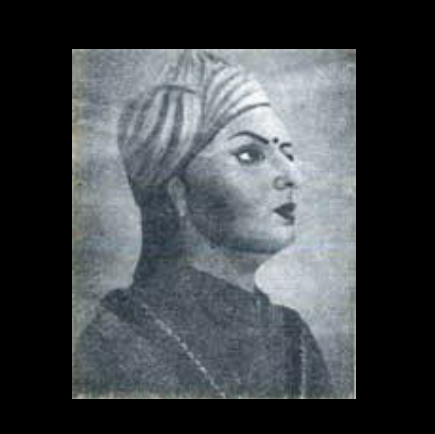
Uda Devi
Uda Devi is said to have been born in the village Ujriaon of Lucknow. She was also known as Jagrani and was married to Makka Pasi. She became an associate of Begum Hazrat Mahal, and Uda formed a women’s army, with herself as the commander. Her husband became a martyr in the battle at Chinhat. Uda decided to take revenge. When the British attacked Sikandar Bagh in Lucknow under Campbell, he was faced with an army of dalit women:
koi unko habsin kehta, koi kehta neech achchut.
abla koi unhein batlaye, koi kahe unhe majboot.
(Some called them black African women, some untouchable. Some called them weak, others strong.)
It is significant here that even W Gordon-Alexander’s account of the storming of Sikandar Bagh by British troops states:
In addition…there were…even a few amazon negresses, amongst the slain. These amazons having no religious prejudices against the use of greased cartridges, whether of pigs’ or other animal fat, although doubtless professed Muhammadans, were armed with rifles, while the Hindu and Muhammadan East Indian rebels were all armed with musket; they fought like wild cats, and it was not till after they were killed that their sex was even suspected.
Uda Devi was one of them, who is said to have climbed over a ‘pipal’ tree and shot dead, according to some accounts 32 and some 36, British soldiers. One soldier spotted someone in the tree and shot the person dead, and only then it was discovered that she was a woman. Realising her brave feat, even British officers like Campbell bowed their heads over her dead body in respect.
Asha Devi Gurjari is portrayed as a leader to a large number of young girls and women and it is stated that on May 8, 1857, she along with a large number of other women like Valmiki Mahaviri Devi, Rahimi Gurjari, Bhagwani Devi, Bhagwati Devi, Habiba Gurjari, Indrakaur, Kushal Devi, Naamkaur, Raajkaur, Ranviri Valmiki, Seheja Valmiki and Shobha Devi attacked the British army and died while fighting.
Certain features stand out in these various narratives. Many of them claim to be centred around neglected dalit women warriors specifically, whose marginalisation cannot be tolerated by dalits any longer. In all of them, these dalit women are depicted as brave from their very childhood, and the 1857 revolt becomes the turning point which sparks them to accomplish great deeds in the face of high odds. However, the voices of dalit viranganas themselves are usually faint discursive threads, as their stories of adventure and bravery are narrated through a variety of sources – oral, official accounts and dalit male authors. It is these authors who provide narrative coherence, filling in the gaps, and slipping into the present tense to add dramatic flourish and detail to the stories. The past and the present blur and mingle to provide a cohesive narrative of dalit oppression and the bravery of these women against all odds. Many of these dalit viranganas become the symbols of pride for one particular dalit caste. Thus Uda Devi is revered by the pasis particularly, and has emerged as a symbol of Pasi honour, dignity, pride, mobilisation and rights. On the other hand, Jhalkari Bai has been appropriated, eulogised and celebrated by all dalit groups, irrespective of divisions between them, and has become a symbol of unity of all dalits.
Many of them claim to be centred around neglected dalit women warriors specifically, whose marginalisation cannot be tolerated by dalits any longer. In all of them, these dalit women are depicted as brave from their very childhood, and the 1857 revolt becomes the turning point which sparks them to accomplish great deeds in the face of high odds. However, the voices of dalit viranganas themselves are usually faint discursive threads, as their stories of adventure and bravery are narrated through a variety of sources – oral, official accounts and dalit male authors. It is these authors who provide narrative coherence, filling in the gaps, and slipping into the present tense to add dramatic flourish and detail to the stories. The past and the present blur and mingle to provide a cohesive narrative of dalit oppression and the bravery of these women against all odds. Many of these dalit viranganas become the symbols of pride for one particular dalit caste.
Most of these dalit viranganas have Devi or Bai suffixed to their names. They are also projected as highly moral, very “noble”, super brave and super nationalist dalit women. They are emblems of shakti. The written and visual images of these viranganas in the texts itself and on the cover of these pamphlets spectacularise them as usually clad in “masculine” attires, with their bodies all covered up. They are shown to be expert in horse-riding, swimming, bow-arrow and sword fighting. Through such portrayals, dalits hope to garner greater respect, opportunity and dignity to these viranganas, and through them to all dalits. Simultaneously this feeds into conceptions of masculinity. It also covertly challenges notions of dalit female sexuality, and can be seen as a reaction to images of sexually immoral dalit women. By shunning outward expressions of sexuality, dalit women can also hope to build a space where they can wield more control over their bodies and gain dignity and respect within the dominant culture.
Poems and songs occupy a central place in these narratives, which eulogise the viranganas. It is interesting that many of these narrative poems (‘khand kavyas’) have cleverly appropriated the famous poem written by Subhadrakumari Chauhan on Jhansi ki Rani Lakshmibai. Not only are the lines and the words given new meanings and completely reinterpreted, they are also easy to remember. Thus goes one on Jhalkari Bai:

Jhalkari Bai
khub lari jhalkari tu tau, teri ek jawani thi.
dur firangi ko karne mein, veeron mein mardani thi.
har bolon ke much se sun hum teri yeh kahani thi.
rani ki tu saathin banker, jhansi fatah karani thi….
datiya fatak raund firangi, agge barh jhalkari thi.
kali roop bhayankar garjan, mano karak damini thi.
kou firangi aankh uthain, dhar se shish uteri thi.
har bolon ke much se sun ham, roop chandika pani thi.
(Jhalkari you really fought, your youthfulness was unique.
You were a man among the brave in ousting the British.
We heard your story from the mouth of warriors.
You pledged for Jhansi to be victorious by being a friend of the queen.
Jhalkari, you rode from the Datiya gate, trampling the British.
You were like the Kali, and your strike was like lightning.
As soon as a British raised his head, you struck immediately.
We heard your deeds from the warriors, reciting tales of your bravery.)
These songs and poems are often recited in dalit melas and rallies, using dance and musical instruments. Plays too are enacted around them.
The main narrative plots have become more elaborate with time and many stories have been added on, connected to larger purposes of dalit identity. Thus in the Jhalkari Bai story, one episode repeatedly narrated is of Jhalkari being blamed for killing a cow, which had actually been hidden by a brahmin, but the truth is revealed. This story may be linked to challenging dominant colonial and Hindu narratives which have regarded dalits, along with Muslims, as killers of the “holy” cow. Another feature of these writings is that as they have grown, they have become more “sure” in their narrative. Thus for example, the earlier narratives on Jhalkari Bai claim her to be an accomplice of Lakshmibai, who took on her garb to save the rani’s life. We can discern here a tentativeness or uncertainty regarding the role of Rani Lakshmibai in the revolt, where Jhalkari Bai is shown to be an accomplice or at most an equal of Lakshmibai. This has slowly given way to a more sure, authoritative and “mature” dalit history in which Lakshmibai, instead of a model nationalist ruler, appears as a weakling, as reluctant to fight the British, and in fact, is shown as a British supporter and agent. It is stated that Jhalkari Bai was even worried that Lakshmibai might surrender herself to the British as she was very scared of war. Challenging myths and histories surrounding Lakshmibai, it is argued that in reality Lakshmibai not only managed to escape to the forests of Nepal with the help of the ruler of Pratapgarh, she died only in 1915 at the age of 80. It is Jhalkari Bai who is the real martyr and virangana. It is her name that ought to be written in golden letters. She was a dalit woman, with no kingdom, no palace, no expensive jewellery, and no silken clothes. She was neither a queen nor the daughter of a feudal lord, nor the wife of a ‘jagirdar’. She fought selflessly, only for the love of her country, and thus her sacrifice far surpasses anyone else’s.
As a historian, when I started working on these dalit viranganas of 1857, what concerned me was the absence of “hard core”, “written” historical evidence on them in the archives. At one level, I am tempted to argue that anything that mesmerises one is worth cherishing and the magic is ruined by questioning its “authenticity”. Carlo Ginzburg effectively shows how an early manifesto on history “from below” appeared in the form of an “imaginary biography”, where the intention was to salvage through a symbolic character, a multitude of lives crushed by poverty and oppression. The mixture of imaginary biography and historical documents makes it possible even for these dalit histories to leap at a single bound over a threefold obstacle: the lack of evidence, the lack of importance of the subject according to commonly accepted criteria and the absence of stylistic models. A multitude of lives that have been cancelled, destined to count for nothing, find their symbolic redemption in the depiction of immortal characters. But this is not enough. Dalits themselves are keen to prove the historical credibility of their viranganas, and constantly site sources from literary accounts, British narratives, archaeology and oral histories. They claim their works to be “scientific”, “truthful”, “detailed”. As says one:
aithihasik sandarbhon bhitar, ankit sari hai ghatna.
nahin kalpana se kalpit hai – amar humari yeh rachna.
(The whole incident is noted inside historical sources. This immortal story of ours is not a figment of imagination.)
Scattered, often thin, evidence is sited and quoted by dalits repeatedly. Thus on Jhalkari Bai, a constantly quoted source is Vrindavan Lal Varma’s Jhansi ki Rani Lakshmibai. It was published in 1946 after intense personal research and historical reflection, and it mentioned the dusky-complexioned newly wed Jhalkari Dulaiya of the kori caste, who bore a striking resemblance to the Rani. Vishnu Rao Godse, who is said to have been present in the fort when the Rani had fought against General Rose, too had made a reference to Jhalkari in his Marathi book Majha Pravas (My Travels). Similarly on Uda Devi, Amritlal Nagar’s Gadar ke Phool and William Forbes-Mitchell’s Reminiscences of the Great Mutiny are often cited.
And today these stories stand as given, visible truths, with stamps issued in their name, many statues constructed, public rallies and meeting organised, celebrations and festivities conducted, and even colleges and medical institutions formed in their name. Thus, for example, a huge public rally and a mela is organised in Lucknow every year near the statue of Uda Devi at Sikandar Bagh on November 16, the stated day of her martyrdom. With constant evocation, these names have become inscribed in popular dalit memories. Different political parties have repeatedly used these viranganas and made them an integral part of their electoral campaigns and mobilisation strategies, the most successful being the Bahujan Samaj Party, who have used them to build the image of Mayawati particularly.
Are these representations of dalit viranganas historical fictions or fictive histories or something more? How real, exact and truthful in any case are “official”, canonised histories of 1857? Scholars have questioned the possibility of any one authentic history. Histories of dalit viranganas, who are simultaneously dalit and women, stand as persuasive accounts, as histories from below, reaching towards their own “reality”. They take recourse to recorded historical events and intermesh it with subaltern renderings of lost histories, deracinated by mainstream historiography. They are counter-histories of 1857.
Reading Dalit Histories of Viranganas
These popular histories of dalit viranganas are open to simultaneously persuasive, multiple and contradictory readings. There are, of course, limitations of this literature as a historical source. Their representation of dalit women too needs to be questioned. Very few dalit women themselves have penned these popular pamphlets. It is dalit men who are largely engaged in controlling the way images of dalit women are depicted.
While these dalit viranganas are portrayed as “superwomen”, full of bravery, and doing “impossible” acts, these glorifications and celebratory accounts do not extend to all dalit women in general. They offer a filtered vision, viewed through the eyes of the creators of these images. Victimhood is replaced by a new archetype of heroism. Jhalkari Bai is shown as even killing a tiger single-handedly. Although empowering, these images are not necessarily more representative of dalit women. Further, many of these viranganas are physically attractive in their appearance, “classic” beauties, falling into the stereotype of female beauty. Simultaneously, there is an assertion of a super moral dalit female subject perhaps also allowing dalit men to police the behaviour of dalit women in general. Some of these tracts appear didactic in their endorsement of certain patriarchal values. They are often replete with images of the loyal wife and an ideal mother.
Although empowering, these images are not necessarily more representative of dalit women. Further, many of these viranganas are physically attractive in their appearance, “classic” beauties, falling into the stereotype of female beauty. Simultaneously, there is an assertion of a super moral dalit female subject perhaps also allowing dalit men to police the behaviour of dalit women in general. Some of these tracts appear didactic in their endorsement of certain patriarchal values. They are often replete with images of the loyal wife and an ideal mother.
It may thus be argued from a dalit feminist perspective that the emergence of popular dalit male literature has not altered much the images of dalit women. Though vastly different in their scope, area and portrayals, these presentations codify dalit women in certain ways, and fail to offer a more meaningful portrayal of them. The representations often remain simplistic, rarely revealing the complexity, and dimensionality that make up dalit women’s life. They offer incomplete projections to which not many dalit women can fully relate to. Save for who controls the representations, has anything much changed for the dalit woman? As has been contended by bell hooks, this may apply a mere transference, without radical transformation. A true liberatory potential may only be realised when dalit women themselves can create and represent their own histories and images through a collage of identities and sing their own songs.
To stop here however would be offering only one side of the picture. These women figures can also provide counter-hegemonic and oppositional perspectives about dalit women and about the 1857 revolt. The representation of dalit viranganas on a high moral and heroic ground can also be seen as an appropriation of respectability and “credibility”, imparting dalit participation in past histories new meanings. These dalit viranganas represent dalits in the service of freedom and Indian nationalism. Here the subalterns are very much speaking, to inverse Spivak’s proposition, and they are speaking through these dalit women viranganas. They are representing their own voices. As has been pointed out, “While Spivak is excellent on the ‘itinerary of silencing’ endured by the subaltern, particularly historically, there is little attention to the process by which the subaltern’s ‘coming to voice’ might be achieved.” At places the achievements of these dalit viranganas are juxtaposed to the pathetic conditions of dalit women in general, blaming society at large and men as well, stating that in spite of having a brave past and being protectors of dalit dignity, dalit women have been denied education, have been made slaves, have been oppressed by men.
These women figures can also provide counter-hegemonic and oppositional perspectives about dalit women and about the 1857 revolt. The representation of dalit viranganas on a high moral and heroic ground can also be seen as an appropriation of respectability and “credibility”, imparting dalit participation in past histories new meanings. These dalit viranganas represent dalits in the service of freedom and Indian nationalism. Here the subalterns are very much speaking, to inverse Spivak’s proposition, and they are speaking through these dalit women viranganas. They are representing their own voices.
Dalit women too are now trying to use these images in multiple ways to their maximum advantage. Besides ways in which these symbols have helped build up Mayawati, many have used these figures to question representations of dalit women in general, as well as their oppression and exploitation in real life. Thus Meena Pasi stated, “Uda Devi and Jhalkari Bai have shown to me that I too can resist all kinds of injustices. I do not have to take things lying down. These figures inspire me to question why I am getting less wages from the landlord, why I am beaten up by my husband when I do equal, if not more, work. I can look up to Uda Devi and say that nothing is impossible if one has the will to resist and fight”. These representations of dalit women viranganas may thus also be seen as “positive engendering”. They question and disrupt usual dominant stereotypes of dalit women, either negatively as ‘kutnis’ (evil) and vamps, or as passive victims, powerless and subordinated. The centrality of the dalit viranganas in the 1857 revolt in popular dalit literature provokes reflection on the enabling potential for women’s real lives of ubiquitous icons of dalit feminine power. These images also form a part of feminist studies, as instead of focusing on just dalit women’s “victimisation”, they point to their power and strategies of resistance, even though penned largely by men. Here dalit women are actors and agents in their own right. They are transformed from victims into victors within the context of a narrative. Jhalkari Bai, Uda Devi, Mahabiri Devi, and along with them many other dalit women, emerge as physically commanding and armed, infused with power, strength, bravery, activism and sacrifice, locked in violent conflict with the British.
It may also be argued that what we are dealing with here is no ordinary, academic history. While creating a history of pride, through these celebratory accounts dalit writers are accruing for themselves a psychic space and harnessing the resources needed to hold their own. It is also a history that wishes to, in its own limited way, challenge and subvert conventional modes of thinking, both about 1857 and about dalit women. While it may not be inherently radical or transformative, it provides progressive and different readings. Dalit women here are signifiers of 1857 and through that of dalit identity. These are not just stories of brave dalit women but of all dalits, of their legacy, of their bravery, of their pride, of their sacrifice in service of the nation.
Charu Gupta’s essay has been carried with the permission of its author. It has been presented without its abstract, citations, footnotes and bibliography for purposes of easier reading. You can read the paper in its entirety here.
The Paper has also been published in Bates, Crispin. (2014). ed. Mutiny at the Margins: New Perspectives on the Indian Uprising of 1857 as ‘Condemnation and Commemoration: (En)Gendering Dalit Narratives of 1857’.
ARCHIVE
Jinnah to Nehru – 17 March 1938
New Delhi,
17 March 1938
Dear Pandit Jawaharlal,
I have received your letter of the 8th of March 1938. Your first letter of the 18th of January conveyed to me that you desire to know the points in dispute for the purpose of promoting Hindu-Muslim unity. When in reply I said the subject matter cannot be solved through correspondence and it was equally undesirable as discussing matters in the press you, in your reply of the 4th of February, formulated a catalogue of grievances with regard to my supposed criticism of the Congress and utterances which are hardly relevant to the question for our immediate consideration. You went on persisting on the same line and you are still of opinion that those matters, although not germane to the present subject, should be further discussed, which I do not propose to do as I have already explained to you in my previous letter.

Jawaharlal Nehru and Muhammad Ali Jinnah
The question with which we started, as I understood, is of safeguarding the rights and the interests of the Mussalmans with regard to their religion, culture, language, personal laws and political rights in the national life, the government and the administration of the country. Various suggestions have been made which will satisfy the Mussalmans and create a sense of security and confidence in the majority community. I am surprised when you say in your letter under reply, ‘But what are these matters which are germane? It may be that I am dense or not sufficiently acquainted with the intricacies of the problem. If so, I deserve to be enlightened. If you will refer me to any recent statement made in the press or platform which will help me in understanding, I shall be grateful.’ Perhaps you have heard of the Fourteen Points.
Next, as you say, ‘Apart from this much has happened during these past few years which has altered the position.’ Yes, I agree with you, and various suggestions have appeared in the newspapers recently. For instance, if you will refer to the Statesman, dated the 12th of February 1938, there appears an article under the heading ‘Through “Muslim Eyes’ (copy enclosed for your convenience). Next, an article in the New Times, dated the 1st of March 1938, dealing with your pronouncement recently made, I believe at Haripura sessions of the Congress, where you are reported to have said: ‘I have examined this so-called communal question through the telescope, and if there is nothing what can you see.
This article in the New Times appeared on the 1st of March 1938, making numerous suggestions (copy enclosed for your convenience). Further you must have seen Mr Aney’s interview where he warned the Congress mentioning some of the points which the Muslim League would demand.
I consider it is the duty of every true nationalist, to whichever party or community he may belong to make it his business and examine the situation and bring about a pact between the Mussalmans and the Hindus and create a real united front and it should be as much your anxiety and duty as it is mine, irrespective of the question of the party or the community to which we belong.
Now, this is enough to show to you that various suggestions that have been made, or are likely to be made, or are expected to be made, will have to be analysed and ultimately I consider it is the duty of every true nationalist, to whichever party or community he may belong to make it his business and examine the situation and bring about a pact between the Mussalmans and the Hindus and create a real united front and it should be as much your anxiety and duty as it is mine, irrespective of the question of the party or the community to which we belong. But if you desire that I should collect all these suggestions and submit to you as a petitioner for you and your colleagues to consider, I am afraid I can’t do it nor can I do it for the purpose of carrying on further correspondence with regard to those various points with you. But if you still insist upon that, as you seem to do so when you say in your letter, ‘My mind demands clarity before it can function effectively or think in terms of any action. Vagueness or an avoidance of real issues could not lead to satisfactory results. It does seem strange to me that in spite of my repeated requests I am not told what issues have to be discussed.’ This is hardly a correct description or a fair representation, but in that case I would request you to ask the Congress officially to communicate with me to that effect, and I shall place the matter before the Council of the All-India Muslim League; as you yourself say that you are ‘not the Congress President and thus have not the same representative capacity but if I can be of any help on this matter my services are at the disposal of the Congress and I shall gladly meet you and discuss these matters with you’. As to meeting you and discussing matters with you, I need hardly say that I shall be pleased to do so.
Yours sincerely,
M.A. Jinnah
[Enclosure I to the above letter]
Through Muslim Eyes
By Ain-el-Mulk
Pandit Jawaharlal Nehru’s Bombay statement of January 2 on the Hindu-Moslem question has produced hopeful reactions and the stage has been set for a talk between the leaders of what, for the sake of convenience, may be described as Hindu India and Moslem India. Whether the Jinnah-Jawaharlal talks will produce in 1938 better results than the Jinnah-Prasad talks did in 1935 is yet to be seen. Too much optimism would not, however, be justified. The Pandit, by way of annotating his Bombay statement while addressing the UP delegates for Haripura at Lucknow, at the end of January, emphatically asserted that in no case would Congress ‘give up its principles’. That was not a hopeful statement because any acceptable formula or pact that may be evolved by the leaders of the Congress and the League would, one may guess, involve the acquiescence of the Congress in separate electorates (at least for a certain period), coalition ministries, recognition of the League as the one authoritative and representative organization of Indian Moslems, authoritative and representative organization of Indian Moslems, modification of its attitude on the question of Hindi and its script, scrapping of Bande Mataram altogether, and possibly a redesigning of the tricolour flag or at least agreeing to give the flag of the League an equal importance. It is possible that with a little statesmanship on both sides agreement can be reached on all these points without any infringement of the principles of either, but the greatest obstacle to a satisfactory solution would still remain, in the shape of the communalists of the Mahasabha, and the irreconcilables of Bengal, all of whom are not of the Mahasabha alone.”
The right of the Congress to speak in the name of Hindus has been openly challenged and even the Jinnah-Prasad formula which did not satisfy the Moslems – and nothing on the lines of which is now likely to satisfy them – has been vehemently denounced by the Bengal Provincial Conference held at Vishnupur which recently passed an extremely communal resolution, and that the latest utterances of the Congress President-elect on the communal situation generally and the Jinnah-Prasad formula in particular show some restraint. The only thing for Moslems to do in the circumstances is to wait and hope for the best, without relaxing their efforts to add daily to the strength of the League, for it will not do to forget that it is the growing power and representative character of the Muslim League which has compelled Congress leaders to recognize the necessity for an understanding with the Moslem community.
The Statesman, New Delhi Edition, 12 February 1938.
[Enclosure II to the above letter]
The Communal Question
In its last session at Haripura, the Indian National Congress passed a resolution for assuring minorities of their religious and cultural rights. The resolution was moved by Pandit Jawaharlal Nehru and was carried. The speech which Pandit Jawaharlal Nehru made on this occasion was as bad as any speech could be. If the resolution has to be judged in the light of that speech, then it comes to this that the resolution has been passed not in any spirit of seriousness, but merely as a meaningless assurance to satisfy the foolish minorities who are clamouring ‘for the satisfaction of the communal problem’. Mr Jawaharlal Nehru proceeded on the basis that there was really no communal question. We should like to reproduce the trenchant manner in which he put forward the proposition. He said: ‘I have examined the so-called communal question through the telescope and, if there is nothing, what can you see.’ It appears to us that it is the height of dishonesty to move a resolution with these premises.
We should like to tell Pandit Jawaharlal Nehru that he has completely misunderstood the position of the Muslim minority and it is a matter of intense pain that the President of an All-India organization, which claims to represent the entire population of India, should be so completely ignorant of the demands of the Muslim minority.
If there is no minority question, why proceed to pass a resolution? Why not state that there is no minority question? This is not the first time that Pandit Jawaharlal Nehru has expressed his complete inability to understand or see the communal question. When replying to a statement of Mr Jinnah, he reiterated his conviction that in spite of his best endeavour to understand what Mr Jinnah wanted, he could not get at what he wanted. He seems to think that with the Communal Award, which the Congress has opposed, the seats in the Legislature have become assured and now nothing remains to be done. He repeats the offensive statement that the Communal Award is merely a problem created by the middle or upper classes for the sake of few seats in the Legislature or appointments in Government service or for Ministerial positions. We should like to tell Pandit Jawaharlal Nehru that he has completely misunderstood the position of the Muslim minority and it is a matter of intense pain that the President of an All-India organization, which claims to represent the entire population of India, should be so completely ignorant of the demands of the Muslim minority. We shall set forth below some of the demands so that Pandit Jawaharlal Nehru may not have any occasion hereafter to say that he does not know what more the Muslims want. The Muslim demands are:
1. That the Congress shall henceforth withdraw all opposition to the Communal Award and should cease to prate about it as if it were a negation of nationalism. It may be a negation of nationalism but if the Congress has announced in its statement that it is not opposing the Communal Award, the Muslims want that the Congress should at least stop all agitation for the recession of the Communal Award.
2. The Communal Award merely settles the question of the representation of the Muslims and of other minorities in the Legislatures of the country. The further question of the representation of the minorities in the services of the country remains. Muslims demand that they are as much entitled to be represented in the services of their motherland as the Hindus and since the Muslims have come to realize by their bitter experience that it is impossible for any protection to be extended to Muslim rights in the matter of their representation in the services, it is necessary that the share of the Muslims in the services should be definitely fixed in the constitution and by statutory enactment so that it may not be open to any Hindu head of any department to ride roughshod over Muslim claims in the name of ‘Efficiency’. Pandit Jawaharlal Nehru knows that in the name of efficiency and merit, the rights of Indians to man the services of their country was denied by the bureaucracy. Today when Congress is in power in seven Provinces, the Muslims have a right to demand the Congress leaders that they shall unequivocally express themselves in this regard.
3 Muslims demand that the protection of their Personal Law and their culture shall be guaranteed by the statute. And as an acid test of the sincerity of Pandit Jawaharlal Nehru and the Congress in this regard, Muslims demand that the Congress should take in hand the agitation in connection with the Shahidganj Mosque and should use its moral Pressure to ensure that the Shahidganj Mosque is restored to its original position and that the Sikhs desist from profane uses and thereby injuring the religious susceptibilities of the Muslims.
4. Muslims demand that their right to call Azan and perform religious ceremonies shall not be fettered in any way. We should like to tell Pandit Jawaharlal Nehru that in a village, in the Kasur Tehsil, of the Lahore District, known as Raja Jang, the Muslim inhabitants of that place are not allowed by the Sikhs to call out their Azans loudly. With such neighbours it is necessary to have a statutory guarantee that the religious rights of the Muslims shall not be in any way interfered with and on the advent of Congress rule to demand of the Congress that it shall use its powerful organization for the prevention of such an event. In this connection we should like to tell Pandit Jawaharlal Nehru that the Muslims claim cow slaughter as one of their religious rights and demand that so long as the Sikhs are permitted to carry on Jhatka and to live on Jhatka, the Muslims have every right to insist on their undoubted right to slaughter cows. Pandit Jawaharlal Nehru is not a very great believer in religious injunctions. He claims to be living on the economic plane and we should like Pandit Jawaharlal Nehru to know that for a Muslim the question of cow slaughter is a measure of economic necessity and that therefore it [is] not open to any Hindu to statutorily prohibit the slaughter of cows.
5. Muslims demand that their majorities in the Provinces in which they are at present shall not be affected by any territorial redistributions or adjustments. The Muslims are at present in majority in the provinces of Bengal, Punjab, Sind, North West Frontier Province and Baluchistan. Let the Congress hold out the guarantee and express its readiness to the incorporation of this guarantee in the Statute that the present distribution of the Muslim population in the various provinces shall not be interfered with through the medium of any territorial distribution or re-adjustment.
6. The question of the national anthem is another matter. Pandit Jawaharlal Nehru cannot be unaware that Muslims all over have refused to accept the Bande Mataram or any expurgated addition of that anti-Muslim song as a binding national anthem. If Pandit Jawaharlal Nehru cannot succeed in inducing the Hindu majority to drop the use of this song, then let him not talk so tall, and let him realize that the great Hindu mass does not take him seriously except as a strong force to injure the cause of Muslim solidarity.
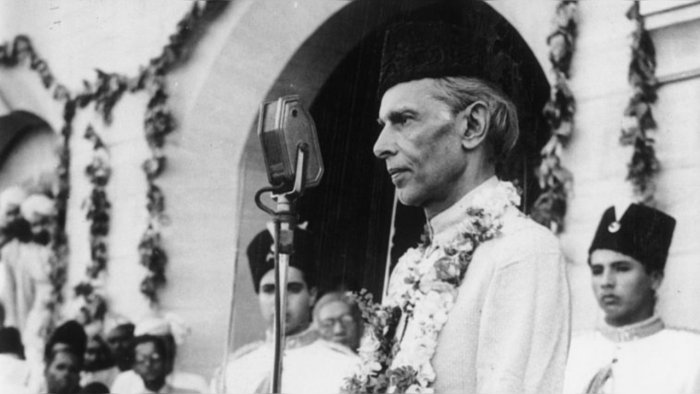
Muhammad Ali Jinnah
7. The question of language and script is another demand of the Muslims. The Muslims insist on Urdu being practically their national language; they want statutory guarantees that the use of [the] Urdu tongue shall not in any wiser manner be curtailed or damaged.
8. The question of the representation of the Muslims in the local bodies is another unsolved question. Muslims demand that the principle underlying the Communal Award, namely, separate electorates and representation according to population strength should apply uniformly in all the various local and other elected bodies from top to bottom.
We can go on multiplying this list but for the present we should like to know the reply of the Congress and Pandit Jawaharlal Nehru to the demands that we have set forth above. We should like Pandit Jawaharlal Nehru fully to understand that the Muslims are more anxious than the Hindus to see complete independence in the real sense of that term established in India. They do not believe in any Muslim Raj for India and will fight a Hindu Raj tooth and nail. They stand for the complete freedom of the country and of all classes inhabiting this country, but they shall oppose the establishment of any majority raj of a kind that will make a clean sweep of the cultural, religious and political guarantees of the various minorities as set forth above. Pandit Jawaharlal Nehru is under the comforting impression that the question set forth above are trivial questions but he should reconsider his position in the light of the emphasis and importance which the minorities which are affected by the programme of the Congress place on these matters. After all it is the minorities which are to judge and not the majorities. It appears to us that with the attitude of mind which Pandit Jawaharlal Nehru betrayed in his speech and which the seconder of that resolution equally exhibited in his speech, namely, that the question of minorities and majorities was an artificial one and created to suit vested interests, it is obvious that nothing can come out of the talks that Pandit Jawaharlal Nehru recently initiated between himself and Mr Jinnah. If the Congress is in the belief that this reiteration of its inane pledge to the minorities will satisfy them and that they will be taken in by mere words, the Congress is badly mistaken.
New Times, Lahore, 1 March 1938
Nehru to Jinnah – 6 April 1938
Calcutta,
6 April 1938
Dear Mr Jinnah,
Your last letter of the 17th March reached me in the Kumaun hills where I had gone for a brief holiday. From there I have come to Calcutta. I propose to return to Allahabad today and I shall probably be there for the greater part of April. If it is convenient for you to come there we could meet. Or if it suits you better to go to Lucknow I shall try to go there.
I am glad that you have indicated in your last letter a number of points which you have in mind. The enclosures you have sent mention these and I take it that they represent your viewpoint. I was somewhat surprised to see this list as I had no idea that you wanted to discuss many of these matters with us. Some of these are wholly covered by previous decisions of the Congress, some others are hardly capable of discussion.
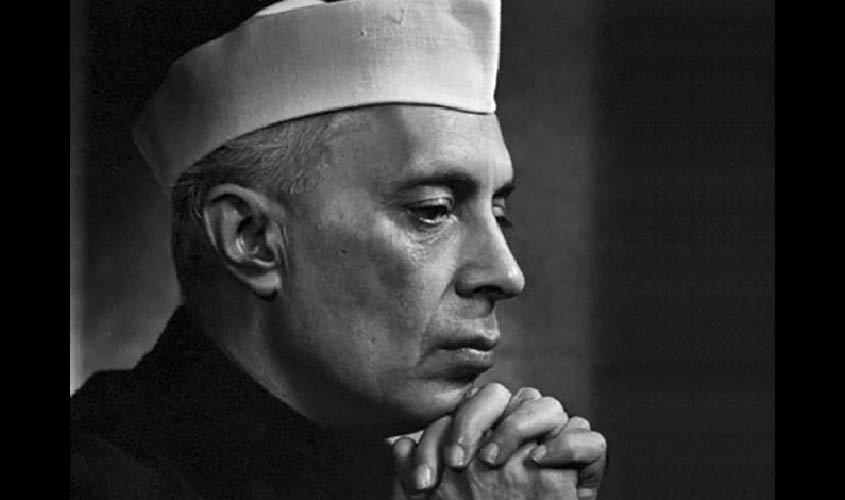
Jawaharlal Nehru
As far as I can make out from your letter and the enclosures you have sent, you wish to discuss the following matters:
1. The Fourteen Points formulated by the Muslim League in 1929.
2. The Congress should withdraw all opposition to the Communal Award and should not describe it as a negation of nationalism.
3. The share of the Muslims in the state services should be definitely fixed in the Constitution by statutory enactment.
4. Muslim Personal Law and culture should be guaranteed by Statute.
5. The Congress should take in hand the agitation in connection with the Shahidganj Mosque and should use its moral pressure to enable the Muslims to gain possession of the mosque.
6. The Muslim’s right to call Azan and perform religious ceremonies should not be fettered in any way.
7. Muslims should have freedom to perform cow-slaughter.
8. Muslim majorities in the Provinces, where such majorities exist at present, must not be affected by any territorial redistribution or adjustments.
9. The Bande Mataram song should be given up.
10. Muslims want Urdu to be the national language of India and they desire to have statutory guarantees that the use of Urdu shall not be curtailed or damaged.
11. Muslim representation in the local bodies should be governed by the principles underlying the Communal Award, that is separate electorates and population strength.
12. The tricolour flag should be changed or, alternatively, the flag of the Muslim League should be given equal importance.
13. Recognition of the Muslim League as the one authoritative and representative organization of Indian Muslims.
14. Coalition ministries.
It is further stated that the formula evolved by you and Babu Rajendra Prasad in 1935 does not satisfy the Muslims now and nothing on those lines will satisfy them. It is added that the list given above is not a complete list and that it can be augmented by the addition of further ‘demands’. Not knowing these possible and unlimited additions I can say nothing about them. But I should like to deal with the various matters specifically mentioned and to indicate what the Congress attitude has been in regard to them.
But before considering them, the political and economic background of the free India we are working for has to be kept in mind, for ultimately that is the controlling factor. Some of these matters do not arise in considering an independent India or take a particular shape or have little importance. We can discuss them in terms of Indian independence or in terms of the British dominance of India continuing. The Congress naturally thinks in terms of independence, though it adjusts itself occasionally to the pressure of transitional and temporary phases. It is thus not interested in amendments to the present constitution, but aims at its removal and its substitution by a constitution framed by the people through a Constituent Assembly.
But before considering them, the political and economic background of the free India we are working for has to be kept in mind, for ultimately that is the controlling factor. Some of these matters do not arise in considering an independent India or take a particular shape or have little importance. We can discuss them in terms of Indian independence or in terms of the British dominance of India continuing. The Congress naturally thinks in terms of independence, though it adjusts itself occasionally to the pressure of transitional and temporary phases. It is thus not interested in amendments to the present constitution, but aims at its removal and its substitution by a constitution framed by the people through a Constituent Assembly.
Another matter has assumed an urgent and vital significance and this is the exceedingly critical international situation and the possibility of war. This must concern India greatly and affect her struggle for freedom. This must therefore be considered the governing factor of the situation and almost everything else becomes of secondary importance, for all our efforts and petty arguments will be of little avail if the very foundation is upset. The Congress has clearly and repeatedly laid down its policy in the event of such a crisis and stated that it will be no party to imperialist war. The Congress will very gladly and willingly cooperate with the Muslim League and all other organizations and individuals in the furtherance of this policy.
I have carefully looked through the various matters to which you have drawn attention in your letter and its enclosures and I find that there is nothing in them which refers to or touches the economic demands of the masses or affects the all-important questions of poverty and unemployment. For all of us in India these are the vital issues and unless some solution is found for them, we function in vain. The question of state services, howsoever important and worthy of consideration it might be, affects a very small number of people. The peasantry, industrial workers, artisans and petty shop-keepers form the vast majority of the population and they are not improved in any way by any of the demands listed above. Their interests should be paramount.
Many of the ‘demands’ involve changes of the constitution which we are not in a position to bring about. Even if some such changes are desirable in themselves, it is not our policy to press for minor constitutional changes. We want to do away completely with the present constitution and replace it by another for a free India.
In the same way, the desire for statutory guarantees involves constitutional changes which we cannot give effect to. All we can do is to state that in a future constitution for a free India we want certain guarantees to be incorporated. We have done this in regard to religious, cultural, linguistic and other rights of minorities in the Karachi resolution on fundamental rights. We would like these fundamental rights to be made a part of the constitution.
I now deal with the various matters listed above.
1. The Fourteen Points, I had thought, were somewhat out of date. Many of their provisions have been given effect to by the Communal Award and in other ways, some others are entirely acceptable to the Congress; yet others require constitutional changes which, as I have mentioned above, are beyond our present competence. Apart from the matters covered by the Communal Award and those involving a change in the constitution, one or two matters remain which give rise to differences of opinion and which are still likely to lead to considerable argument.
2. The Congress has clearly stated its attitude towards the Communal Award, and it comes to this that it seeks alterations only on the basis of mutual consent of the parties concerned. I do not understand how anyone can take objection to this attitude and policy. If we are asked to describe the Award as not being anti-national, that would be patently false. Even apart from what it gives to various groups, its whole basis and structure are anti-national and come in the way of the development of national unity. As you know it gives an overwhelming and wholly underserving weightage to the European elements in certain parts of India. If we think in terms of an independent India, we cannot possibly fit in this Award with it. It is true that under stress of circumstances we have sometimes to accept as a temporary measure something that is on the face of it anti-national. It is also true that in the matters governed by the Communal Award we can only find a satisfactory and abiding solution by the consent and goodwill of the parties concerned. That is the Congress policy.
3. The fixing of the Muslims’ share in the state services by statutory enactment necessarily involves the fixing of the shares of other groups and communities similarly. This would mean a rigid and compartmental state structure which will impede progress and development. At the same time it is generally admitted that state appointments should be fairly and adequately distributed and no community should have cause to complain. It is far better to do this by convention and agreement. The Congress is fully alive to this issue and desires to meet the wishes of various groups in the fullest measure so as to give to all minority communities, as stated in No. 11 of the Fourteen Points, ‘an adequate share in all the services of the state and in local self-governing bodies having due regard to the requirements of efficiency’. The state today is becoming more and more technical and demands expert knowledge in its various departments. It is right that, if a community is backward in this technical and expert knowledge, special efforts should be made to give it this education to bring it up a to higher level.
I understand that at the Unity Conference held at Allahabad in 1933 or thereabouts, a mutually satisfactory solution of this question of state services was arrived at.
4. As regards protection of culture, the Congress has declared its willingness to embody this in the fundamental laws of the constitution. It has also declared that it does not wish to interfere in any way with the personal law of any community.
5. I am considerably surprised at the suggestions that the Congress should take in hand the agitation in connection with the Shahidganj Mosque. That is a matter to be decided either legally or by mutual agreement. The Congress prefers in all such matters the way of mutual agreement and its services can always be utilized for this purpose where there is no opening for them and a desire to this effect on the part of the parties concerned. I am glad that the Premier of the Punjab has suggested that this is the only satisfactory way to a solution of the problem.
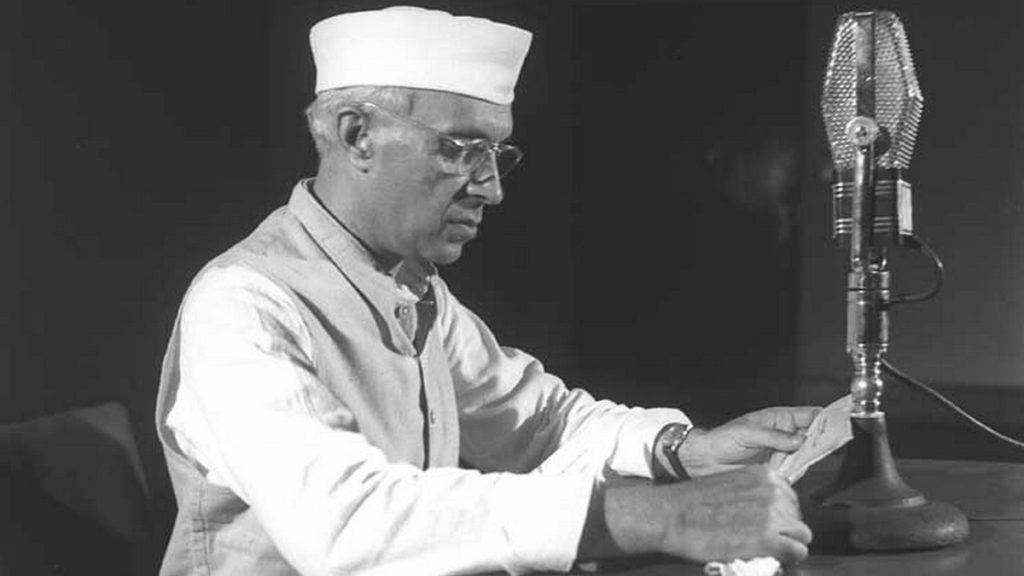
Jawaharlal Nehru
6. The right to perform religious ceremonies should certainly be guaranteed to all communities. The Congress resolution about this is quite clear. I know nothing about the particular incident relating to a Punjab village which has been referred to. No doubt many instances can be gathered together from various parts of India where petty interferences take place with Hindu, Muslim or Sikh ceremonies. These have to be tactfully dealt with wherever they arise. But the principle is quite clear and should be agreed to.
7. As regards cow-slaughter there has been a great deal of entirely false and unfounded propaganda against the Congress suggesting that the Congress was going to stop it forcibly by legislation. The Congress does not wish to undertake any legislative action in this matter to restrict the established rights of the Muslims.
8. The question of territorial distribution has not arisen in any way. If and when it arises it must be dealt with on the basis of mutual agreement of the parties concerned.
9. Regarding the Bande Mataram song the Working Committee issued a long statement in October last to which I would invite your attention. First of all, it has to be remembered that no formal national anthem has been adopted by the Congress at any time. It is true, however, that the Bande Mataram song has been intimately associated with Indian nationalism for more than thirty years and numerous associations of sentiment and sacrifice have gathered round it. Popular songs are not made to order, nor can they be successfully imposed. They grow out of public sentiment. During all these thirty or more years the Bande Mataram song was never considered as having any religious significance and was treated as a national song in praise of India. Nor, to my knowledge, was any objection taken to it except on political grounds by the Government. When, however, some objections were raised, the Working Committee carefully considered the matter and ultimately decided to recommend that certain stanzas, which contained certain allegorical references, might not be used on national platforms or occasions. The two stanzas that have been recommended by the Working Committee for use as a national song have not a word or a phrase which can offend anybody from any point of view and I am surprised that anyone can object to them. They may appeal to some more than to others. Some may prefer another national song. But to compel large numbers of people to give up what they have long valued and grown attached to is to cause needless hurt to them and injure the national movement itself. It would be improper for a national organization to do this.
10. About Urdu and Hindi I have previously written to you and have also sent you my pamphlet on ‘The Question of Language’. The Congress has declared in favour of guarantees for languages and culture. I want to encourage all the great provincial languages of India and at the same time to make Hindustani, as written both in the Nagri and Urdu scripts, the national language. Both scripts should be officially recognized and the choice should be left to the people concerned. In fact this policy is being pursued by the Congress Ministries.
About Urdu and Hindi I have previously written to you and have also sent you my pamphlet on ‘The Question of Language’. The Congress has declared in favour of guarantees for languages and culture. I want to encourage all the great provincial languages of India and at the same time to make Hindustani, as written both in the Nagri and Urdu scripts, the national language. Both scripts should be officially recognized and the choice should be left to the people concerned.
11. The Congress has long been of opinion that joint electorates are preferable to separate electorates from the point of view of national unity and harmonious co-operation between the different communities. But joint electorates, in order to have real value, must not be imposed on unwilling groups. Hence the Congress is quite clear that their introduction should depend on their acceptance by the people concerned. This is the policy that is being pursued by the Congress Ministries in regard to Local bodies. Recently in a Bill dealing with local bodies introduced in the Bombay Assembly, separate electorates were maintained but an option was given to the people concerned to adopt a joint electorate, if they so chose. This principle seems to be in exact accordance with No. 5 of the Fourteen Points, which lays down that ‘representation of communal groups shall continue to be by means of separate electorate as at present, provided that it shall be open to any community, at any time, to abandon its separate electorate in favour of joint electorate’. It surprises me that the Muslim League group in the Bombay Assembly should have opposed the Bill with its optional clause although this carried out the very policy of the Muslim League.
May I also point out that in the resolution passed by the Muslim League in 1929, at the time it adopted the Fourteen Points, it was stated that ‘the Mussalmans will not consent to join electorates unless Sind is actually constituted into a separate province and reforms in fact are introduced in the NWF Province and Baluchistan on the same footing as in other provinces’. Since then Sind has been separated and the NWF Province has been placed on a level with other provinces. So far as Baluchistan is concerned the Congress is committed to a levelling up of this area in the same way.
12. The national tricolour flag was adopted originally in 1929 by the Congress after full and careful consultation with eminent Muslim, Sikh and other leaders. Obviously a country and national movement must have a national flag representing the nation and all communities in it. No communal flag can represent the nation. If we did not possess a national flag now we would have to evolve one. The present national flag had its colours originally selected in order to represent the various communities, but we did not like to lay stress on this communal aspect of colours. Artistically I think the combination of orange, white and green resulted in a flag which is probably the most beautiful of all national flags. For these many years our flag has been used and it has spread to the remotest village and brought hope and courage and a sense of all India unity to our masses. It has been associated with great sacrifices on the part of our people, including Hindus, Muslims and Sikhs, and many have suffered lathi blows and imprisonment and even death in defending it from insult or injury. Thus a powerful sentiment has grown in its favour. On innumerable occasions Maulana Mohamed Ali, Maulana Shaukat Ali and many leaders of the Muslim League today have associated themselves with this flag and emphasized its virtues and significance as a symbol of Indian unity. It has spread outside the Congress ranks and been generally recognized as the flag of the nation. It is difficult to understand how anyone can reasonably object to it now.
Communal flags cannot obviously take its place for that can only mean a host of flags of various communities being used together and thus emphasizing our disunity and separateness. Communal flags might be used for religious functions but they have no place at any national functions or over any public building meant for various communities.
May I add that during the past few months, on several occasions, the national flag has been insulted by some members or volunteers of the Muslim League. This has pained us greatly but we have deliberately avoided anything in the nature of conflict in order not to add to communal bitterness. We have also issued strict orders, and they have been obeyed, that no interference should take place with the Muslim League flag, even though it might be inappropriately displayed.

Jawaharlal Nehru and Muhammad Ali Jinnah in a meeting with Lord Mountbatten
13. I do not understand what is meant by our recognition of the Muslim League as the one and only organization of Indian Muslims. Obviously the Muslim League is an important communal organization and we deal with it as such. But we have to deal with all organizations and individuals that come within our ken. We do not determine the measure or importance or distinction they possess. There are a large number, about a hundred thousand, of Muslims on the Congress rolls, many of whom have been our close companions, in prisons and outside, for many years and we value their comradeship highly. There are many organizations which contain Muslims and non-Muslims alike, such as trade unions, peasant unions, kisan sabhas, debt committees, zamindar associations, chambers of commerce, employers’ association, etc., and we have contacts with them. There are special Muslim organizations such as the Jamiat-ul-Ulema, the Proja Party, the Ahrars and others, which claim attention. Inevitably the more important the organization, the more the attention paid to it, but this importance does not come from outside recognition but from inherent strength. And the other organizations, even though they might be younger and smaller, cannot be ignored.
14. I should like to know what is meant by coalition ministries. A ministry must have a definite political and economic programme and policy. Any other kind of ministry would be a disjointed and ineffective body, with no clear mind or direction. Given a common political and economic programme and policy, cooperation is easy. You know probably that some such cooperation was sought for and obtained by the Congress in the Frontier Province. In Bombay also repeated attempts were made on behalf of the Congress to obtain this cooperation on the basis of a common programme. The Congress has gone to the assemblies with a definite programme and in furtherance of clear policy. It will always gladly cooperate with other groups, whether it is a majority or a minority in an assembly, in furtherance of that programme and policy. On that basis I conceive of even coalition ministries being formed. Without that basis the Congress has no interest in a ministry or in an assembly.
I have dealt, I am afraid at exceeding length, with the various points raised in your letter and its enclosures. I am glad that I have had a glimpse into your mind through this correspondence as this enables me to understand a little better the problems that are before you and perhaps others. I agree entirely that it is the duty of every Indian to bring about [a] harmonious joint effort of all of us for the achievement of India’s freedom and the ending of the poverty of her people. For me, and I take it for most of us, the Congress has been a means to that end and not an end in itself. It has been a high privilege for us to work through the Congress because it has drawn to itself the love of millions of our countrymen, and through their sacrifice and united effort, taken us a long way to our goal. But much remains to be done and we have all to pull together to that end.
Personally the idea of pacts and the like does not appeal to me, though perhaps they might be necessary occasionally. What seems to me far more important is a more basic understanding of each other, bringing with it the desire and ability to cooperate together. That larger cooperation, if it is to include our millions must necessarily be in the interests of these millions. My mind therefore is continually occupied with the problems of these unhappy masses of this country and I view all other problems in this light. I should live to view the communal problem also in this perspective for otherwise it has no great significance for me.
Personally the idea of pacts and the like does not appeal to me, though perhaps they might be necessary occasionally. What seems to me far more important is a more basic understanding of each other, bringing with it the desire and ability to cooperate together. That larger cooperation, if it is to include our millions must necessarily be in the interests of these millions. My mind therefore is continually occupied with the problems of these unhappy masses of this country and I view all other problems in this light. I should live to view the communal problem also in this perspective for otherwise it has no great significance for me.
You seem to imagine that I wanted you to put forward suggestions as a petitioner, and then you propose that the Congress should officially communicate with you. Surely you have misunderstood me and done yourself and me an injustice. There is no question of petitioning either by you or by me, but a desire to understand each other and the problem that we have been discussing. I do not understand the significance of your wanting an official intimation from the Congress. I did not ask you for an official reply on behalf of the Muslim League. Organizations do not function in this way. It is not a question of prestige for the Congress or for any of us, for we are keener on reaching the goal we have set before us, than on small matters of prestige. The Congress is a great enough organization to ignore such petty matters, and if some of us have gained a measure of influence and popularity, we have done so in the shadow of the Congress.
You will remember that I took the initiative in writing to you and requesting you to enlighten me as to what your objections were to the Congress policy and what, according to you, were the points in dispute. I had read many of your speeches, as reported in the press, and I found to my regret that they were full of strong attacks on the Congress which, according to my way of thinking, were not justified. I wanted to remove any misunderstandings, where such existed, and to clear the air.
I have found, chiefly in the Urdu press, the most astounding falsehoods about the Congress. I refer to facts, not to opinions, and to facts within my knowledge. Two days ago, here in Calcutta, I saw a circular letter or notice issued by a secretary of the Muslim League. This contained a list of the so-called misdeeds of the UP Government. I read this with amazement for there was not an atom of truth in most of the charges. I suppose they were garnered from the Urdu press. Through the press and the platform such charges have been repeated on numerous occasions and communal passions have thus been roused and bitterness created. This has grieved me and I have sought by writing to you and to Nawab Ismail Khan to find a way of checking this deplorable deterioration of our public life, as well as a surer basis for cooperation. That problem still faces us and I hope we shall solve it.
I have mentioned earlier in this letter the critical international situation and the terrible sense of impending catastrophe that hangs over the world. My mind is obsessed with this and I want India to realize it and be ready for all consequences, good or ill, that may flow from it. In this period of world crisis all of us, to whatever party or group we might belong and whatever our differences might be, have the primary duty of holding together to protect our people from perils that might encompass them.
I have mentioned earlier in this letter the critical international situation and the terrible sense of impending catastrophe that hangs over the world. My mind is obsessed with this and I want India to realize it and be ready for all consequences, good or ill, that may flow from it. In this period of world crisis all of us, to whatever party or group we might belong and whatever our differences might be, have the primary duty of holding together to protect our people from perils that might encompass them.
Our differences and arguments seem trivial when the future of the world and of India hangs in the balance. It is in the hope that all of us will succeed in building up this larger unity in our country that I have written to you and others repeatedly and at length.
There is one small matter I should like to mention. The report of my speech at Haripura, as given in your letter and the newspaper article, is not correct.
We have been corresponding for some time and many vague rumours float about as to what we have been saying to each other. Anxious inquiries come to me and I have no doubt that similar inquiries are addressed to you also. I think that we might take the public into our confidence now for this is a public matter on which many are interested. I suggest, therefore, that our correspondence might be released to the press. I presume you will have no objection.
Yours sincerely,
Jawaharlal Nehru
Jinnah to Nehru – 12 April 1938
Bombay,
12 April 1938
Dear Pandit Jawaharlal,
I an in receipt of your letter of the 6th April 1938. I am extremely obliged to you for informing me that you propose to return to Allahabad and shall probably be there for the greater part of April and suggesting that, if it would be convenient for me to come there, we could meet, or, if it suits me better to go to Lucknow, you will try to go there. I am afraid that it is not possible for me owing to my other engagements, but I shall be in Bombay about the end of April and if it is convenient to you, I shall be very glad to meet you.

Muhammad Ali Jinnah
It seems to me that you cannot even accurately interpret my letter, as you very honestly say that your ‘mind is obsessed with the international situation and the terrible sense of impending catastrophe that hangs over the world’, so you are thinking in terms entirely divorced from realities which face us in India. I can only express my great regret at your turning and twisting what I wrote to you and putting entirely a wrong complexion upon the position I have placed before you at your request.
As to the rest of your letter, it has been to me a most painful reading. It seems to me that you cannot even accurately interpret my letter, as you very honestly say that your ‘mind is obsessed with the international situation and the terrible sense of impending catastrophe that hangs over the world’, so you are thinking in terms entirely divorced from realities which face us in India. I can only express my great regret at your turning and twisting what I wrote to you and putting entirely a wrong complexion upon the position I have placed before you at your request. You have formulated certain points in your letter which you father upon me to begin with as my proposals. I sent you extracts from the press which had recently appeared simply because I believed you when you repeatedly asserted and appealed to me that you would be grateful if I would refer you to any recent statements made in the press or platform which would help you in understanding matters. Those are some of the matters which are undoubtedly agitating Muslim India, but the question how to meet them and to what extent and by what means and methods, is the business, as I have said before, of every true nationalist to solve. Whether constitutional changes are necessary, whether we should do it by agreement or conventions and so forth, are matters, I thought, for discussion, but I am extremely sorry to find that you have in your letter already pronounced your judgment and given your decisions on a good many of them with a preamble which negatives any suggestion of discussion which may lead to a settlement, as you start by saying ‘I was somewhat surprised to see this list as I had no idea that you wanted to discuss many of these matters with us; some of these are wholly covered by previous decisions of the Congress, some others are hardly capable of discussion’, and then you proceed to your conclusions having formulated the points according to your own notions. Your tone and language again display the same arrogance and militant spirit as if the Congress is the sovereign power and, as an indication, you extend your patronage by saying that ‘obviously the Muslim League is an important communal organization and we deal with it as such, as we have to deal with all organizations and individuals that come within our ken. We do not determine the measure of importance or distinction they possess,’ and then you mention various other organizations. Here I may add that in my opinion, as I have publicly stated so often, that unless the Congress recognizes the Muslim League on a footing of complete equality and is prepared as such to negotiate for a Hindu-Muslim settlement, we shall have to wait and depend upon our inherent strength which will ‘determine the measure of importance or distinction it possesses’. Having regard to your mentality it is really difficult for me to make you understand the position any further. Of course, as I have said before, I do not propose to discuss the various matters, referred to by you, by means of and through correspondence, as, in my opinion, that is not the way to tackle this matter.
Your tone and language again display the same arrogance and militant spirit as if the Congress is the sovereign power and, as an indication, you extend your patronage by saying that ‘obviously the Muslim League is an important communal organization and we deal with it as such, as we have to deal with all organizations and individuals that come within our ken. We do not determine the measure of importance or distinction they possess,’ and then you mention various other organizations.
With regard to your reference to certain falsehoods that have appeared about the Congress in the Urdu press, which, you say, have astounded you, and with regard to the circular letter referred to about the misdeeds of the UP Government, I can express no opinion without investigation, but I can give you [a] number of falsehoods that have appeared in the Congress press and in statements of Congressmen with regard to the All-India Muslim League, some of the leaders and those who are connected with it. Similarly I can give instances of reports appearing in the Congress press and speeches of Congressmen which are daily deliberately misrepresenting and vilifying the Muslim composition of the Bengal, Sind, Punjab and Assam Governments with a view to break those governments, but that is not the subject matter of our correspondence and besides no useful purpose will be served in doing so.
With regard to your request that our correspondence should be released to the press, I have no objection provided the correspondence between me and Mr Gandhi is also published simultaneously, as we both have referred to him and his correspondence with me in ours. You will please therefore obtain the permission of Mr Gandhi to that effect or, if you wish, I will write to him, informing him that you desire to release the correspondence between us to the press and I am willing to agree to it provided he agrees that the correspondence between him and myself is also released.
With regard to your request that our correspondence should be released to the press, I have no objection provided the correspondence between me and Mr Gandhi is also published simultaneously, as we both have referred to him and his correspondence with me in ours. You will please therefore obtain the permission of Mr Gandhi to that effect or, if you wish, I will write to him, informing him that you desire to release the correspondence between us to the press and I am willing to agree to it provided he agrees that the correspondence between him and myself is also released.
Yours sincerely,
M.A. Jinnah
These letters have been republished from Nehru: The Debates that Defined India, courtesy the permission of Tripurdaman Singh and Adeel Hussain. You can buy the book here.

ARCHIVE
Violence of the State
Like inequality, violence too has always been a part of human history, although its forms, scale, and intensity have varied. The advent of the state ushered major changes in the structures for its perpetuation and control. The theory that the Harappan civilization was a peaceful culture held together by tradition rather than force can be questioned on the basis of finds of weaponry and walled citadels. In later centuries too, cities continued to be surrounded by fortification walls, indicating the need for defence against military attack.
As discussed in Chapter 1, Rig Vedic hymns contain many references to violent conflicts among the arya tribes and between the aryas on the one hand and dasas and dasyus on the other. Later Vedic royal rituals such as the rajasuya, ashvamedha, and vajapeya, which included ritual contests between the king and his kinsmen, must have been scripted on the lines of actual, bloody contests for power. Aryavarta, a land inhabited by the culturally superior aryas, was distinguished from that of the uncivilized people of the east. The aryas also distinguished themselves from mlechchhas or barbarians, a category that included foreigners and tribals. Apart from the textual references to warfare, weapons found at archaeological sites in various parts of India in second and first millennium BCE contexts indicate the endemic nature of war.
The sixth/fifth century BCE was not only the age of Mahavira and the Buddha; it was also a period of warring states. The sixteen mahajanapadas (great states) included rajyas (kingdoms) and ganas or sanghas (oligarchies) which were constantly engaged in internecine war. This was a period of military transition when hereditary warriors were being increasingly replaced by a recruited and salaried class of soldiers. The story of the rise of the kingdom of Magadha in eastern India is a bloody one. Bimbisara, king of the Haryanka dynasty, had the title ‘Seniya’ (one who has an army). He is said to have been killed by his son Ajatashatru, and the latter’s four successors were also patricides. The short-lived Shaishunaga dynasty that followed met a violent end. Then came the Nandas. Mahapadma, the first Nanda king, was militarily successful and expanded the Magadhan kingdom. Dhanananda, the last Nanda ruler, was greedy, cruel, and unpopular and was overthrown by Chandragupta Maurya. Chandragupta and his son Bindusara fought wars to expand the Maurya empire. The third Maurya king, Ashoka, is known in history for his pacifism and patronage of Buddhism, but the four-year gap between his accession and consecration and the reference in Buddhist texts to his killing ninety-nine brothers (clearly hyperbole!) suggest a prolonged and violent succession struggle. When the curtain rises on the political history of early historic South India in the third century BCE, it reveals the Chola, Chera, and Pandya kings warring among themselves and with many less powerful chieftains.
The sixth/fifth century BCE was not only the age of Mahavira and the Buddha; it was also a period of warring states. The sixteen mahajanapadas (great “states) included rajyas (kingdoms) and ganas or sanghas (oligarchies) which were constantly engaged in internecine war. This was a period of military transition when hereditary warriors were being increasingly replaced by a recruited and salaried class of soldiers.
It would be tedious (and unnecessary) to list all the wars fought in ancient India. The pervasiveness of violence and war is woven into the history of the rise and fall of dynasties, kingdoms, and empires over the centuries. There is no eye-witness reportage, but it can be assumed that ancient wars involved killing, looting, and raping. This is what armies have often been known to do, across cultures, across time. There is no such thing as a non-violent war. Ancient warfare would also have involved capturing prisoners of war and reducing them to slavery. The functions of the prashasti (praise of the king) in royal inscriptions include giving an impression of smooth and seamless political transitions; concealing violent intra-dynastic conflicts; celebrating the king’s military victories and omitting his defeats; and tempering his martial image and achievements with pacific and benevolent attributes. So the increase of political violence was accompanied by increasingly sophisticated attempts to legitimize, invisibilize, and aestheticize it.
There is no such thing as a non-violent war. Ancient warfare would also have involved capturing prisoners of war and reducing them to slavery. The functions of the prashasti (praise of the king) in royal inscriptions include giving an impression of smooth and seamless political transitions; concealing violent intra-dynastic conflicts; celebrating the king’s military victories and omitting his defeats; and tempering his martial image and achievements with pacific and benevolent attributes. So the increase of political violence was accompanied by increasingly sophisticated attempts to legitimize, invisibilize, and aestheticize it.
Apart from warfare, certain forms of coercion and violence were, and still are, inherent in the state. Throughout history, states have been based on the systematic appropriation of economic and human resources from subjects. There may be no agricultural tax in India today, but in ancient Indian agrarian societies, rulers took a share of the surplus agricultural produce in the form of taxes. Extracting taxes on a regular basis involved coercion and the threat or actual use of force. The harnessing of labour for state projects also involved coercion.
Theories of the origin of kingship in the Agganna Sutta of the Buddhist Digha Nikaya and the Shanti Parva of the Mahabharata highlight the relationship between the king and his subjects. They describe people handing over taxes to the king in return for his performing certain duties, especially maintaining social order and preventing crime and violence. Many texts describe one-sixth of the produce as the king’s share and advise the ruler to be fair and moderate while levying taxes. This fiction of a voluntary social contract between the king and his subjects deliberately conceals the coercion that was involved in making farmers pay taxes.
Violence was also inherent in the interactions of ancient Indian states with forest people. The expansion of agriculture, cities, and states involved a steady clearance of forests, but the most massive forest clearance took place in the middle of the nineteenth century as a result of population increase, commercial farming, and the expansion of the railways. Till then, states lived cheek by jowl with forest tribes. Extracting and controlling valuable economic and military resources like wood, ivory, and elephants involved a steady encroachment on forest habitats and constant conflicts with forest people. The forest was an important object of the exploitation and violence of the state; but it was also a constant source of violent challenge to the state. The term mlechchha included tribals as well as foreigners and presented them as a threat to ‘civilized’ people. But it could also be used to justify the use of violence against tribals and foreigners. One of the theories of the origins of kingship in the Mahabharata (discussed later in this chapter) mentions the Nishada and indicates a recognition of the political importance of forest tribes.
While ancient texts conceal the coercive element involved in taxation and the state’s interface with forest people, they loudly proclaim that the king’s use of danda (literally the rod; by extension, force or punishment) is essential to maintain social order. A favoured metaphor for chaos in ancient texts is matsya-nyaya, literally, the law of the fish, a situation where the big fish eat the small fish, that is, where the mighty oppress the weak. We do not know the details of the mechanisms for settling civil and criminal disputes in ancient times, but the development of a judicial system (howsoever rudimentary) gave the state and its agents the right to adjudicate civil and criminal disputes and to impose punishment, even death. The king’s rod is said to inspire fear in people and prevents them from committing crimes. But all ancient texts emphasize that a ruler must use the rod in accordance with the principles of justice.
While ancient texts conceal the coercive element involved in taxation and the state’s interface with forest people, they loudly proclaim that the king’s use of danda (literally the rod; by extension, force or punishment) is essential to maintain social order. A favoured metaphor for chaos in ancient texts is matsya-nyaya, literally, the law of the fish, a situation where the big fish eat the small fish, that is, where the mighty oppress the weak.
The power of the state to punish subjects is discussed in great detail in the Arthashastra. Although there is little evidence suggesting that the ‘laws’ contained in this text were actually used in civil or criminal cases, they are important for the history of legal ideas. The system of criminal and civil law in the Arthashastra involves judges, with the king theoretically presiding over the justice system at a higher level. Punishments include fines, confiscation of property, exile, corporeal punishment, mutilation, branding, torture, forced labour, and death. Torture is both a punishment and a means of acquiring information during interrogation and includes striking, whipping, caning, suspension from a rope, and inserting needles under the nails. The Arthashastra also refers to capital punishment, distinguishing between shuddha-vadha (simple death), and chitra-vadha (death by torture). The latter refers to painful deaths which may have involved public spectacle. They include burning on a pyre, drowning in water, cooking in a big jar, impaling on a stake, setting fire to different parts of the body, and tearing the body apart by bullocks.
To be fair to him, Kautilya was not, as is often imagined, an advocate of unrestricted or wanton state violence. In line with the larger ancient Indian political discourse, he argues that the king’s punishment must be rooted in vinaya (discipline). A ruler who imposes wrongful punishment cannot escape punishment himself. If used indiscriminately, unfairly, out of anger or malice, the rod destroys the king. In the absence of institutional checks, the political theorists sought to control the king’s propensity to exercise brute force by warning of the disastrous consequences of excessive force and by emphasizing the need for rulers to be wise, educated, disciplined, and receptive to good advice.
Given the pervasiveness of warfare and the force or threat of force implied in systems of taxation and justice, violence can indeed be described as an intrinsic part of human history, and ancient India is no exception.
Given the pervasiveness of warfare and the force or threat of force implied in systems of taxation and justice, violence can indeed be described as an intrinsic part of human history, and ancient India is no exception.
War was central to ancient Indian political culture
Beyond the pervasiveness of warfare in ancient Indian political history, I would like to suggest that war was central to ancient Indian culture (as it was to many other cultures). It is impossible to imagine the Sanskrit epics—Mahabharata and Ramayana—without war. The oldest Tamil literature, the Sangam poems, also reflect a warrior ethos. In these and other texts, war forms a context within which many other important issues are discussed—human relationships, social duty, the goals of life, happiness, death and its aftermath, heaven and hell, and the relationship with the gods. The ideas and values represented in such texts must have percolated down to various strata of society.
Puram poems and hero stones
The puram poems of the Sangam corpus attach great value to a heroic death. Bravery in battle was an attribute of masculinity, cowardice a source of shame. The spirit of a warrior who died in battle was believed to dwell in paradise. Consider the following poem, supposed to have been written by a poetess:
Many said,
That old woman, the one whose veins show
on her weak, dry arms where the flesh is hanging,
whose stomach is flat as a lotus leaf,
has a son who lost his nerve in battle and fled.
At that, she grew enraged and she said,
‘If he has run away in the thick of battle,
I will cut off these breasts from which he sucked,’
and, sword in hand, she turned over fallen corpses,
groping her way on the red field.
Then she saw her son lying there in pieces
and she rejoiced more than the day she bore him.
Bodies of warriors who did not die in battle were cut with swords before the funerary rites, in order to simulate death in battle. At times, kings who had been defeated in war committed ritual suicide through starvation, accompanied by their near and dear ones. A poet describes King Kopperuncholan performing this act after defeat in war; he is grief-stricken that the king had not asked him to accompany him into death.

Hero Stone with a 1286 AD old Kannada inscription during rule of Yadava King Ramachandra in the Kedareshvara Temple, Balligavi, in Shimoga district, Karnataka
Sangam poems speak of memorial stones known as natukal and virakal set up in honour of heroes who had died fighting. These stones were decorated with garlands and peacock feathers; the warrior’s weapons were sometimes placed beside them. The spirit of the dead hero was believed to reside in the stone and it was worshipped with ritual offerings of rice balls, liquor, and animals.
Apart from poetry, hero stones (mentioned in Chapter 3) commemorating the death of men in battles proliferated over the centuries, not only in South India, but also in other parts of the subcontinent. The events they commemorated were usually not the large-scale wars celebrated in royal inscriptions but small-scale local events, often cattle raids, that were important in the life and historical memory of villagers and local communities. These stones consist of one or more carved panels and are usually uninscribed. It is not easy to date them, but the practice seems to go back to the third century BCE. More elaborate hero stones make their appearance in the third and fourth centuries CE, for instance at Nagarjunakonda in the Krishna valley. Here, at the site of the ancient Ikshvaku capital of Vijayapuri, there are a large number of memorial pillars commemorating the heroic death of army generals and groups of soldiers.
Although the details of the beliefs and customs associated with them must have varied across time and regions, the thousands of hero stones found in various parts of India reflect the pervasiveness of ideas of masculinity and honour that valorized a violent, heroic death.
War and dharma
The close connection between war and social values is expressed more eloquently in the various tellings of the Mahabharata and Ramayana, which had great cultural impact across India and Southeast Asia. The Mahabharata was probably woven around the memory of an actual conflict between warring kin and reflects the rivalry that must have commonly existed among ruling elites. The war at Kurukshetra is said to have been one of many episodes of conflict between gods and demons, a dharma-yuddha (righteous war). This is because it was fought for Yudhishthira’s right to the throne (he was the eldest son); the Pandavas were semi-divine; and the god Krishna fought on their side. But the ideas about this dharma-yuddha are accompanied by questions and doubt which bring out the problematic nature of both dharma and war. The Mahabharata combines the old idea of the Kshatriya warrior whose aim was to die in battle and attain heaven with a newer, higher goal—moksha. In the epic, war becomes a setting that triggers discussion and debate about many other profound issues, especially dharma. All important issues have to be sorted out in the face of possible death on the battlefield, after which no further discussion and debate would be possible.
The Mahabharata combines the old idea of the Kshatriya warrior whose aim was to die in battle and attain heaven with a newer, higher goal—moksha. In the epic, war becomes a setting that triggers discussion and debate about many other profound issues, especially dharma. All important issues have to be sorted out in the face of possible death on the battlefield, after which no further discussion and debate would be possible.
The relationship between war and dharma is best illustrated in the Bhagavad Gita, which brings together many diverse philosophical strands to create a new synthesis. The narrative setting of the battlefield is dramatic. Arjuna stands in his chariot and sees his kin, teachers, and friends arrayed before him. His mouth goes dry, his body feels weak and tremulous, his bow slips from his hands. He is assailed by a terrible confusion. Killing is not the problem; that is what Kshatriyas do. It is the killing of one’s own people (sva-jana)—one’s close relatives, teachers, and friends—that is problematic. The killing of kin leads to the destruction of the kula (lineage), the corruption of its women, and social chaos. Surely, fighting such a war would be a papa (great sin). Arjuna expresses these misgivings to his charioteer, Krishna. He puts away his bow and arrows, sits down in his chariot, and says that he will not fight.
The rest of the Bhagavad Gita consists of Krishna’s teaching to Arjuna. One must follow one’s dharma (sva-dharma), that is the dharma of the varna one belongs to. A warrior who dies fighting in such a dharma-yuddha will attain heaven and eternal fame. Turning away from battle will result in shame and infamy, which is much worse than death. Killing the enemy is not something to feel sorrowful about because death is inevitable. In any case, it is only the physical body of the enemy that is killed; the embodied self (atman) is indestructible and eternal.
“Weapons do not pierce this (the embodied Self), fire does not burn this, water does not wet this, nor does the wind cause it to wither.
This cannot be pierced, burned, wetted or withered; this is eternal, all pervading, fixed; this is unmoving and primeval.”
A wise man performs his duty with complete mastery over his senses, unconcerned about their consequences. This is desireless action.
Krishna also uses the argument of bhakti. If Arjuna seeks shelter in him (Krishna), is absorbed in him (Krishna), in return, he (Arjuna) will be set free from all sin. Arjuna’s doubts are removed and he picks up his bow and arrows, ready to fight. The Pandavas ultimately win the war at Kurukshetra, but it is after a great deal of slaughter, and they do not live happily ever after. Although the Mahabharata contains a powerful philosophical justification of war, it also contains in its eleventh book, the Stri Parva, a powerful lament on its consequences.
While the Mahabharata war is fought between two confederate armies for the sake of a kingdom, in the Ramayana, none of the princes hanker for the throne. Rama goes to war to rescue his beloved wife Sita, who has been abducted by Ravana, the demon king of Lanka. This war too is presented as another round of the conflict between the gods and demons. Rama and his three brothers are parts of Vishnu. Rama’s birth as a man is part of a divine plan to kill Ravana, who has created mayhem by obstructing the activities of the gods, Brahmanas, gandharvas, yakshas, and sages. But this war is very different from the one fought at Kurukshetra. Rama and Lakshmana set out for the island of Lanka seated on the shoulders of the vanaras Hanuman and Angada, their army consisting almost entirely of vanaras. The vanaras are monkeys only in appearance—they are actually the sons of various gods and have been created in order to help Rama defeat Ravana.
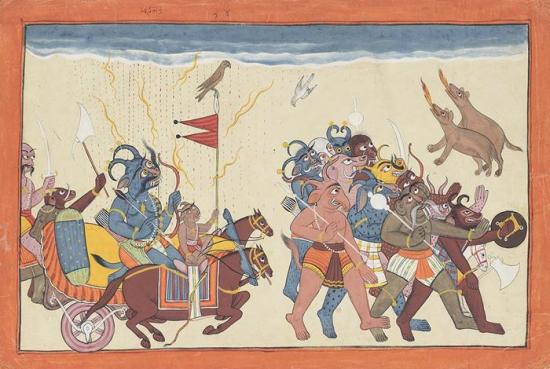
Epic Tales from Ancient India. Paintings from The San Diego Museum of Art
Both epics have the idea of a code of honour in battle but acknowledge the occasional need to resort to unfair practices to achieve one’s goals. Rama transgresses the warrior’s code when he shoots the vanara Vali in the back while the latter is fighting Sugriva. But by and large, Rama is presented as compassionate even towards his enemies. The practice of deceit for the sake of victory is much more pronounced in the Mahabharata, and it is practised by both sides. The Pandavas rattle and then kill Drona by announcing that Ashvatthama—the name of Drona’s son, but also that of an elephant that Bhima had killed for the deceit—is dead. Karna is killed while trying to free his chariot wheel from the mud. Bhima kills Duryodhana by giving a low blow to his thigh. As the Pandavas shamefacedly watch Duryodhana die, recalling all their transgressions of the warrior’s honour code, Krishna offers a justification. The Kauravas were militarily stronger and could not have been defeated in fair fight; that is why he had devised these strategies.
“You should not take it to heart that this king [Duryodhana] has been slain, for, when enemies become too numerous and powerful, they should be slain by deceit and strategems. This is the path formerly trodden by the gods to slay the demons; and a path trodden by the virtuous may be trodden by all.”
Dharma is complicated. Nothing illustrates this better than what transpires over eighteen days at Kurukshetra. War is the stage on which many questions related to human existence are asked and answered, often inconclusively.
Dharma is complicated. Nothing illustrates this better than what transpires over eighteen days at Kurukshetra. War is the stage on which many questions related to human existence are asked and answered, often inconclusively.
War as a natural part of politics
The importance of war in ancient Indian politics is clear from the fact that political theorists discuss it in great detail. War is the subject of Book 10 of the Arthashastra but is also a prominent subject of discussion in several other books. In fact, it seems that the analysis of war was one of Kautilya’s important contributions to the discussion of statecraft. The theory of the raja-mandala (circle of kings) presumes the existence of multiple warring states, vying for political supremacy. Kautilya advises the vijigishu—the king desirous of victory—on how to overreach his rivals and become the hub of the circle of kings, that is, to attain paramountcy.
The theory of the circle of kings is connected to the six measures (gunas) of inter-state policy and the four expedients (upayas). The six measures are peace/treaty (sandhi), war/initiating hostilities (vigraha), staying quiet (asana), initiating a military march (yana), seeking shelter (samshraya), and the dual policy of peace or treaty with one king and war against another (dvaidhibhava). The four expedients are an important part of governance as well as the conduct of inter-state relations; they comprise pacification (sama), giving gifts (dana), force (danda), and creating dissension (bheda).
Apart from military strategy, the Arthashastra has a great deal to say about the organization of the army. It talks of the four-fold army (chaturanga-bala) consisting of infantry, cavalry, chariot wing, and elephant corps. It lists six types of troops (bala)—hereditary (maula), hired (bhrita), banded (shreni), ally’s (mitra), alien (amitra), and forest (atavika). Hereditary troops are considered the best and forest troops the worst. Battle arrays, siege tactics, salaries, and keeping soldiers happy and loyal are important issues that are addressed. Kautilya talks of the harassment and oppression of the people as a result of war. According to him, the harassment inflicted on the people by another’s army is worse than that inflicted by one’s own army. The harassment by the enemy’s army afflicts the entire land, ruins it through plunder, killing, burning, destruction, and deportation. The destruction of the enemy’s crops in the course of the march is mentioned. Plunder is part of warfare and Kautilya suggests how to divide it up among confederate armies. But according to Kautilya, war must never be waged without a careful cost-benefit calculation. If the gains of war and peace are likely to be similar, the king should opt for peace, because war has many negative results.
Kautilya gives a basic three-fold classification of war—prakashayuddha (open war), kuta-yuddha (crooked war), and tushnim-yuddha (silent war). Open war is when fighting takes place at a designated and announced time and place. Crooked war involves creating fright, sudden assault, striking when there is an error or calamity on the enemy’s side, and retreating and then striking at the same place. All these tactics have the element of sudden, unexpected attack. Silent war includes pretence, ambush, and luring the enemy’s troops with the prospect of gain. It involves the use of trickery, secret practices, and instigation. There is also a fourth type of war—mantra-yuddha (diplomatic warfare). This involves discussion, persuasion, and negotiation with the enemy, as opposed to military action. Kautilya talks of three kinds of victors. The dharma-vijayi (righteous victor) is satisfied with submission. The lobha-vijayi (greedy victor) is satisfied with the seizure of land and goods. The asura-vijayi (demonic victor) is only satisfied with seizing the enemy’s land, goods, sons, wives, and life. But apart from this passing reference to dharma-vijaya, the Arthashastra is more concerned with victory than honour.
While Kautilya has no compunctions about the use of force to attain political ends, he also warns of its dangers. Going against the other experts, he argues that mantra-shakti (the power of counsel) is superior to prabhu-shakti (military might) and utsaha-shakti (the power of energy). He also suggests that the results of war can be achieved through other means, including marriage alliances, buying peace, and assassination. Other recommended ways of dealing with enemies include the use of poison, magic, spells, and charms. Kautilya views judicious force as one of the many ways whereby the vijigishu can achieve his political aims, but force should always be a last resort. A ruler’s greatest weapon is his intellect.
Many centuries later, another political theorist, Kamandaka, wrote a work titled the Nitisara. This too discusses war. It details the uncertain and possibly disastrous results of war, especially one launched hastily without due consideration and consultation. Kamandaka lists sixteen types of war that should not be fought. War is a risky business and should hence be avoided by a prudent king. ‘As victory in war is always uncertain, it should not be launched without careful deliberation.’ War, Kamandaka asserts, has inherently disastrous doshas (qualities). While Kautilya urges caution in war, Kamandaka expresses stronger reservations. But war is still considered an integral part of politics and the aim is carefully calculated military victory.
The aesthetics of war
Political theorists deliberated on the nature and conduct of war. Poets, playwrights, royal biographers, and composers of royal inscriptions celebrated the military prowess and victories of kings. Through an elegant sleight of hand, they divested war of its ugliness and violence and presented it as something necessary, desirable, even beautiful. Two examples of this stand out—the Allahabad pillar inscription of Samudragupta and the Raghuvamsha of Kalidasa.
Political theorists deliberated on the nature and conduct of war. Poets, playwrights, royal biographers, and composers of royal inscriptions celebrated the military prowess and victories of kings. Through an elegant sleight of hand, they divested war of its ugliness and violence and presented it as something necessary, desirable, even beautiful. Two examples of this stand out—the Allahabad pillar inscription of Samudragupta and the Raghuvamsha of Kalidasa.
A remarkable sandstone pillar, presently standing in the Allahabad Fort, bears inscriptions of four emperors—a set of six edicts and two minor pillar edicts of the Maurya emperor Ashoka; a prashasti paneygyric) of the Gupta emperor Samudragupta; and an inscription of the Mughal emperor Jahangir. The inscription of Samudragupta (c. 350–370 CE) was composed by Harishena, a high-ranking official and military commander.
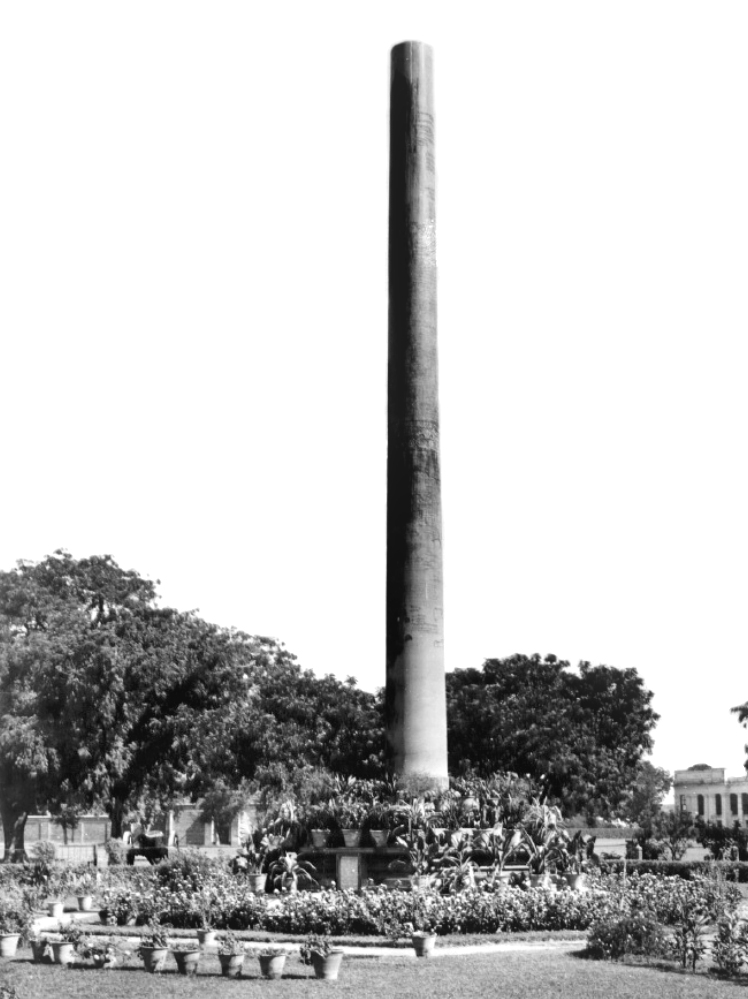
The Allahabad Pillar, in Allahabad. Photo, Circa 1900 . The pillar also contains inscriptions on Samudragupta and Jahangir. The pillar is made of polished stone, extends 10.7 m in height and is incised with an Ashokan edict.
Samudragupta’s martial qualities and achievements are described in detail in the Allahabad pillar inscription. Harishena’s achievement was to give an account of Samudragupta’s irresistible and spectacular wars and successes, which, at first glance, gives the illusion of his being emperor of the whole subcontinent, but on closer reading, presents a more complex and limited picture of the empire. Also striking is the way he aestheticizes war. He describes the king as one who has engaged in hundreds of battles, and whose body is beautiful on account of being covered with hundreds of scars caused by various types of enemy weapons. This is a king whose ‘…fame has tired itself with a journey over the whole world caused by the restoration of many fallen kingdoms and overthrown royal families.’ But the references to the king’s many military victories are regularly punctuated by references to his non-martial qualities and achievements.
Kalidasa’s Raghuvamsha (fourth/fifth century CE) is an extremely important and influential poetic work, which deals both with the ideals and realities of kingship. It tells the history of kings of the Ikshvaku dynasty, including Dilipa, Raghu, and Rama. The fourth canto describes the digvijaya (victory over the quarters) of Raghu. Kalidasa describes this as an elaborate clockwise military circumambulation of the subcontinent. The description is marked by great poetic beauty and elegance, with references to the landscape, trees and flowers, and the produce of various regions. By and large, Kalidasa avoids graphic descriptions of the violence of war in favour of aestheticized descriptions.
“His [Raghu’s] march was clearly marked by many kings who were dispossessed, deposed or overthrown, as the march of an elephant is marked by uprooted, broken trees, devoid of fruit.”
And yet, notwithstanding the importance of victories in battle, Kalidasa makes it clear that great kings do not seek political paramountcy for the sake of land or riches but for the sake of fame. Nor do they cling to power. After his conquest of the quarters, Raghu performs a grand sacrifice called the vishvajit (victory over the world) in which he uses up all the wealth he had obtained in his wars. Having discharged his duties, Raghu hands over the reins of power to his son Aja, retires from worldly life, and realizes the ultimate reality through the performance of yoga and meditation. The Raghuvamsha expresses the idea that empire involved military victories but not necessarily conquest. War is idealized and aestheticized and combined with renunciation. Its mundane objectives and violence are erased.
Violence against the state
The upheavals of ancient Indian political history indicate that kings and dynasties faced frequent challenges from rivals. Further evidence of threats of violence against the state comes from reading between the lines of texts, especially taking note of their apprehensions, insecurities, and anxieties.
One of the accounts of the origin of kingship in the Shanti Parva of the Mahabharata talks of the gods approaching Brahma and Vishnu to intervene in order to put an end to social disorder. Vishnu produced a mind-born son Virajas, who was followed by his son Kirtiman and grandson Kardama. But these three men wanted to renounce the world and did not want to rule. Then came Ananga (who was a good king) and Atibala (who did not have control over his senses). They were followed by Vena, who was dominated by passion and hate and was unrighteous in his behaviour towards his subjects. The sages decided to get rid of him and stabbed him to death with blades of kusha grass. They churned his right thigh and out of it emerged an ugly man named Nishada who was told to go away because he was unfit to be king. Then they churned Vena’s right hand and therefrom emerged Prithu, a man with a refined mind and an understanding of the Vedas, dharma, artha, the military arts, and politics. Prithu proved to be an exemplary ruler. Although this story cannot be considered an account of historical events, it is significant for the many ideas it enfolds—kings who do not want to rule, the tension between kingship and renunciation, the inferiority of forest tribes, and the justification for killing evil kings.
The Mahabharata discusses the king’s duties and warns of the consequences of not performing them. A just king goes to heaven, one who is unjust goes to hell. There are other warnings as well:
“A cruel king, who does not protect his people, who robs them in the name of levying taxes, is evil [Kali] incarnate and should be killed by his subjects. A king who, after declaring ‘I will protect you,’ does not protect them, should be killed by his people coming together, as though he were a mad dog.”
So once again, as in the story of Vena, the epic sanctions the killing of bad kings. There are several stories in ancient Indian texts of evil men who are also kings being killed (Duryodhana, Ravana, and Kamsa are some of the well-known ones), but the overall attitude of the Mahabharata—indeed of all ancient Indian texts—is pro-government and pro-monarchy. Kinglessness is seen as the equivalent of anarchy.
The most comprehensive and pragmatic discussion of violence against the state occurs in the Arthashastra. Kautilya advocates ruthless, carefully calculated, and effective use of violence by the state in order to prevent and respond to violence against the state. Kautilya’s king lives in constant fear of assassination, especially at the hands of his wives and sons. Other threats include enemy kings, neighbouring rulers, angry subjects, forest tribes, robbers, mlechchhas, and rebellious troops. Kautilya advises the king to have an elaborate espionage system and to deal firmly with revolts and conspiracies. Those who cannot be killed openly, such as high-ranking officers, should be dealt with through upamshu-danda (silent punishment), that is, secret killing. Silent punishment can also be used against hostile subjects.
Kautilya recognizes violence against the king as a serious political problem that has to be dealt with ruthlessly and effectively through pre-emptive action, punishment, and retaliation. The punishment for one who reviles or spreads evil news about the king or reveals secret counsel is the tearing out of the tongue. More severe crimes against the king and kingdom invite more violent punishments. Death by setting fire to the hands and head is the punishment for one who covets the kingdom, attacks the king’s palace, incites forest people or enemies, or causes rebellion in the fortified city, countryside, or army. In several cases (including crimes which invite mutilation), Kautilya refers to the possibility of commuting punishments to fines. But unless there is some crucial mitigating circumstance, no commutation is suggested where the crime merits the death penalty, especially for treason or loss to the state Whether or not Kautilya’s recommendations were actually applied, we know that autocracies tend to react violently to criticism and come down hard on rebels.
Kautilya recognizes violence against the king as a serious political problem that has to be dealt with ruthlessly and effectively through pre-emptive action, punishment, and retaliation. The punishment for one who reviles or spreads evil news about the king or reveals secret counsel is the tearing out of the tongue. More severe crimes against the king and kingdom invite more violent punishments. Death by setting fire to the hands and head is the punishment for one who covets the kingdom, attacks the king’s palace, incites forest people or enemies, or causes rebellion in the fortified city, countryside, or army.
The Arthashastra contains several references to disaffection among subjects and prakriti-kopa (the anger of the people). These suggest an anxiety about the possibility of a mass rebellion of unhappy, dissatisfied subjects. But ancient Indian sources do not record a single historical instance of popular rebellion against the state. Does this mean that ancient Indians were docile and obedient, never questioning the inequities and oppression of their rulers? There are other possible reasons—the concealment of such incidents by the sources; the effectiveness of the state’s coercive and repressive machinery in preventing and crushing any resistance; and the absence of collective will, resources, and organization that would have enabled the victims of state oppression to come together and revolt against the state.
Occasionally, cracks can be seen in the façade. Land grant inscriptions routinely state that the gifted village land was not to be entered by the king’s troops. This only makes sense in a context of a military presence in the countryside. The fifth century Chammak copper plate of the Vakataka king Pravarasena II records the gift of Charmanka village to a thousand Brahmanas and states that the grant was to last as long as the sun and the moon endured (that is, forever). But it adds the curious caveat that the grant would last as long as the Brahmanas in question committed no treason against the kingdom; were not found guilty of the murder of a Brahmana, theft, or adultery; did not wage war; and did not harm other villages. If they did any of these things, the king would do no wrong in taking the land away from them. This inscription suggests that Brahmanas patronized by the king were considered capable of presenting a threat to society and to the state.
Incidents of violent rebellion are known in early medieval India, but none of them were ‘popular’ rebellions. For instance, the Kaivarta rebellion in eastern India in the late eleventh century was basically a revolt of politically powerful landowners. The Damara rebellion in Kashmir too involved powerful landlords, not ordinary folk. On the other hand, there are a few inscriptional references to agrarian conflicts, in some cases involving the state. For instance, a thirteenth century inscription from Karnataka states that when farmers protested against their village being converted into a brahmadeya (Brahmana village) a royal army was sent to punish them. Then, as now, farmers were no match for an all-powerful state.
Incidents of violent rebellion are known in early medieval India, but none of them were ‘popular’ rebellions. For instance, the Kaivarta rebellion in eastern India in the late eleventh century was basically a revolt of politically powerful landowners. The Damara rebellion in Kashmir too involved powerful landlords, not ordinary folk. On the other hand, there are a few inscriptional references to agrarian conflicts, in some cases involving the state. For instance, a thirteenth century inscription from Karnataka states that when farmers protested against their village being converted into a brahmadeya (Brahmana village) a royal army was sent to punish them. Then, as now, farmers were no match for an all-powerful state.
This excerpt has been carried courtesy the permission of Upinder Singh and Aleph Book Company. You can buy Ancient India: Culture of Contradictions, here.
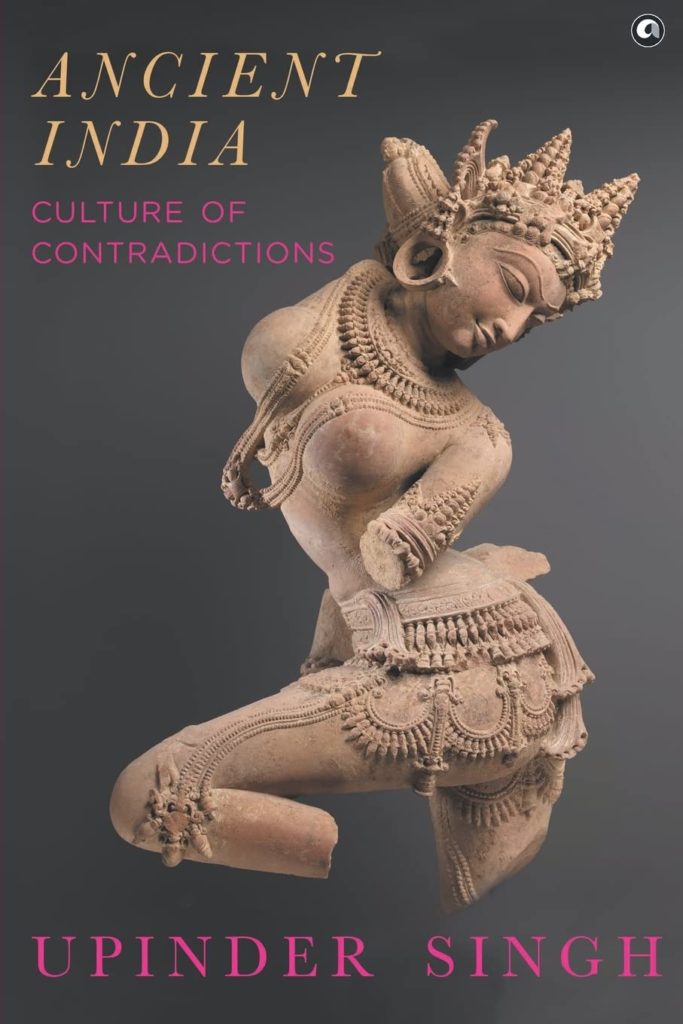
ARCHIVE
The Nature and Purpose of Literature
Presidential Address of Munshi Premchand, delivered at the First All India Progressive Writers’ Conference, held at Lucknow on 10 April 1936. (Translated from Hindustani.)
This conference is a memorable occasion in the history of our literature. Hitherto we had been content to discuss language and its problems; the existing critical literature of Urdu and Hindi has dealt with the construction and the structure of the language alone. This was doubtless an important and necessary work. And the pioneers of our literature have supplied this preliminary need and performed their task admirably. But language is a means, not an end; a stage, not the journey’s end. Its purpose is to mould our thoughts and emotions, and to give them the right direction. We have now to concern ourselves with the meaning of things, and to find the means of fulfilling the purpose for which language has been constructed. This is the main purpose of this conference.
Literature properly so-called is not only realistic, true to life, but is also an expression of our experiences and of the life that surrounds us. It employs easy and refined language which alike affects our intellect and our sentiments. Literature assumes these qualities only when it deals with the realities and experiences of life. Fairy tales and romantic stories of princely lovers may have impressed us in olden days, but they mean very little to us today. Unless literature deals with reality it has no appeal for us. Literature can best be defined as a criticism of life. The literature of our immediate past had nothing to do with actuality; our writers were living in a world of dreams and were writing things like Fasanai Ajaib or Chandra Kanta; tales told only for entertainment, or to satisfy our sense of wonder. Life and literature were considered to be two different things which bore no relation to each other. Literature reflects the age. In the past days of decadence the main function of literature was to entertain the parasitic class. In this literature the dominant notes were either sex or mysticism, pessimism or fatalism. It was devoid of vigour, originality, and even the power of observation.
But our literary taste is undergoing a rapid transformation. It is coming more and more to grips with the realities of life; it interests itself with society or man as a social unit. It is not satisfied now with the singing of frustrated love; or with writing to satisfy only our sense of wonder; it concerns itself with the problems of our life; and such themes as have a social value. The literature which does not arouse in us a critical spirit, or satisfy our spiritual and intellectual needs, which is not ‘force-giving’ and dynamic, which does not awaken our sense of beauty, which does not make us face the grim realities of life in a spirit of determination, has no use for us today. It cannot even be termed as literature.
The literature which does not arouse in us a critical spirit, or satisfy our spiritual and intellectual needs, which is not ‘force-giving’ and dynamic, which does not awaken our sense of beauty, which does not make us face the grim realities of life in a spirit of determination, has no use for us today. It cannot even be termed as literature.
In the past, religion had taken upon itself the task of striving after man’s spiritual and moral guidance; it used fear and cajolery, reward and retribution as its chief instruments in this work. Today, however, literature has undertaken a new task, and its instrument is our inherent sense of beauty; it tries to achieve its aim by arousing this sense of beauty in us. The more a writer develops this sense through his observation of nature, the more effective will his writing become. All that is ugly or detestable, all that is inhuman, becomes intolerable to such a writer. He becomes the standard bearer of humanity, of moral uprightness, of nobility. It becomes his duty to help all those who are downtrodden, oppressed and exploited — individuals or groups — and to advocate their cause. And his judge is society itself: it is before society that he brings his plaint. He knows that the more realistic his story is, the more full of expression and movement his picture, the more intimate his observation of human nature, human psychology, the greater the effect he will produce. It is not even enough that from a psychological point of view, his characters resemble human beings; we must further be satisfied that they are real human beings of bones and flesh. We do not believe in an imaginary man; his acts and his thoughts do not impress us.
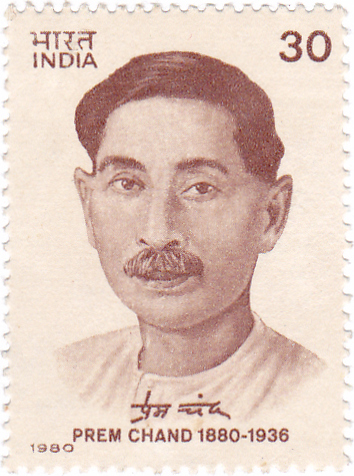
A postage stamp released by the Government of India to commemorate Premchand
The question may be asked, but what is beauty? Why does a waterfall, the sunset, and other such natural scenes and phenomena affect us? Because, there is a certain harmony of colour or sound in them. We ourselves are created by a harmony of elements, and our spirit always seeks the same balance and harmony in everything else. It is the harmony which creates beauty. Nature demands that this harmony should exist everywhere, and, the more art keeps in touch with nature and with reality, the better it will be.
In this sense, the name ‘progressive writer’ is defective: an artist or a writer is by his very nature progressive. But perhaps it is necessary to use this qualifying word because progress has a different meaning for different people. For us ‘progressive’ is that which creates in us the power to act; which makes us examine those subjective and objective causes that have brought us to such a pass of sterility and degeneration; and finally which helps us to overcome and remove those causes, and become men once again. We have no use today for those poetical fancies which overwhelm us with their insistence on the ephemeral nature of this world and whose only effect is to fill our hearts with despondency and indifference. We must, resolutely, give up writing those love romances with which our periodicals are flooded. We have no time to waste over sentimental art. The only art which has value for us today is that which is dynamic and leads to action.
For us ‘progressive’ is that which creates in us the power to act; which makes us examine those subjective and objective causes that have brought us to such a pass of sterility and degeneration; and finally which helps us to overcome and remove those causes, and become men once again. We have no use today for those poetical fancies which overwhelm us with their insistence on the ephemeral nature of this world and whose only effect is to fill our hearts with despondency and indifference. We must, resolutely, give up writing those love romances with which our periodicals are flooded.
According to us, subjective art is that which drags us down to inaction and passivity; and such an art is good neither for the individual nor for the society. I have no hesitation in saying that I judge art from the point of view of its utility. Undoubtedly, the aim of art is to satisfy our sense of beauty; and it is the key to our spiritual happiness. But happiness itself is a thing of ‘utility’. The same object from this point of view, may stir in us feelings of joy or sorrow.
But beauty like everything else is not absolute; it too has relative value. The same thing which gives happiness to one, causes pain to another. A rich man sitting in his beautiful garden and listening to the song of the birds thinks of paradise; to a poor but intelligent human being who regards this pomp of wealth as being tainted with the blood of workers, it is the most hateful thing.

Progressive writers (left to right) Sibte Hasan, Faiz Ahmed Faiz, Hameed Akhtar and Ahmed Nadeem Qasmi.
Brotherhood and equality, from the dawn of human culture and civilisation have been the golden dream of idealists. Religious leaders have made repeated attempts to realise their dream by creating religious, moral and spiritual sanctions. But they have not succeeded. Buddha, Christ, Mohammed, all the prophets, tried without success to lay the foundation of their equality on moral precepts without any success. Today the distinction between high and low, rich and poor, is manifesting itself with a brutality which has never been surpassed before. There is a saying amongst us that to try that which has already been tried is a sign of stupidity— we shall fail again if we attempt to attain our goal with the help of religion or ethics.
Are we then to give up our ideals? If that were so, the human race might as well perish. The ideal which we have cherished since the dawn of civilisation; for which man has made God knows how many sacrifices; which gave birth to religion — the history of human society is a history of the struggle for the fulfilment of this ideal — we too have to place that ideal before ourselves; we have to accept it as an unalterable reality and then see the vulgar pride, ostentation and lack of sensibility in the one, the strength of modesty, faith and endeavour in the other. And our art will notice those things only when our artistic vision takes the entire universe within its purview; when the entire humanity will form its subject matter, then it will no longer be tied to the apron strings of a particular class. Then we shall no longer tolerate a social system under which a single individual can tyrannise over thousands of human beings; then our self-respecting humanity will raise the standard of revolt against capitalism, militarism and imperialism; and we shall not sit quiet and inane after doing a little bit of creative work on pieces of paper, but we shall actively participate in building that new order which is not opposed to beauty, good taste and self-respect. The role of literature is not simply to provide us with amusement, or recreation; it does not follow, but is, on the contrary, a torch-bearer to all the progressive movements in society.
Then we shall no longer tolerate a social system under which a single individual can tyrannise over thousands of human beings; then our self-respecting humanity will raise the standard of revolt against capitalism, militarism and imperialism; and we shall not sit quiet and inane after doing a little bit of creative work on pieces of paper, but we shall actively participate in building that new order which is not opposed to beauty, good taste and self-respect. The role of literature is not simply to provide us with amusement, or recreation; it does not follow, but is, on the contrary, a torch-bearer to all the progressive movements in society.
We sometimes complain that literary men are not given an honourable place in society. That is to say, in Indian society. In other civilised countries, literary men are placed very high on the ladder of social esteem. The highest placed people in the land consider it an honour to meet and to know these men. But, then, India is still in many ways living under medieval conditions. If our writers have played the sycophant to the rich to earn their livelihood by flattery, if they are unaware of the dynamic forces working in modern society, if they choose to shut themselves up in ivory towers, completely oblivious of their surroundings, it is not surprising that they find themselves as a class more and more discarded by society. It is true that writers are born and not made, but we should not forget that rigorous intellectual, moral, spiritual and emotional discipline which Aristotle has prescribed for them. With us a simple inclination to write is considered sufficient reason for a man to take to the profession of writing. He need not equip himself for it, he need have no knowledge of politics, economics or psychology; and still he will be a writer. This should not be so, for it is a sign of stagnation.

Progressive Writers Rashid Jahan (second from right) and Mahmood-uz-Zafar (extreme left), who contributed to the short story collection ‘Angarey,’ considered the genesis of the PWA
The ideal which we want to put before literature today is not that of subjectivism or individualism, for literature does not see the individual as something apart from society, but considers him as a social unit; because his existence is dependent on the society as a whole. Taken apart from society he is a mere cypher and non-entity. It follows, therefore, that those of us who have the good fortune to be educated and who have been endowed with a trained intellect, have certain obligations towards society. Just as we consider the capitalist to be an usurper and an oppressor, because he lives on the labour of others, in the same way we should strongly condemn the ‘intellectual capitalist’, who, after having received the best education uses it for his own private ends. It is the duty of our intellectuals to serve society in every possible way. They should acquire not only the art of writing well, but should also acquaint themselves with the general condition of society. If we read the reports of International Writers’ Conferences we find that there is hardly a subject concerning life, literature, economic problems, historical controversies, philosophy, which is not discussed there. When we compare ourselves with these people, we really feel ashamed of our ignorance. We must, therefore, raise the cultural level of our writers. I know it is difficult under the present economic system, but let us at least strive after this. Even if we do not reach the top of the mountain, we shall at least raise ourselves from the surface of the earth to a higher place. With love to guide our activities, and with the service of humanity as the outward manifestation of this love, there is no difficulty which we cannot overcome. For those who are after wealth and riches, there is no place in the temple of love. If we place our services at the disposal of the masses of this country, we shall have done our duty. The happiness which we get from serving humanity will be our reward. We stand or fall with society, and as true artists we should disdain self advancement and cheap exhibitionism.
Just as we consider the capitalist to be an usurper and an oppressor, because he lives on the labour of others, in the same way we should strongly condemn the ‘intellectual capitalist’, who, after having received the best education uses it for his own private ends. It is the duty of our intellectuals to serve society in every possible way. They should acquire not only the art of writing well, but should also acquaint themselves with the general condition of society.
Such are the objects which have led to the formation of the Indian Progressive Writers’ Association. It wants literature to bear the message of efforts and action. It is not concerned with the problems of language as such. With a correct ideology, language will become simpler and better. So long as the content of our writing is on the right lines, we need not worry about the form. The literature which is patronised by the privileged classes will adopt their forms of expression; the literature which is of the masses will speak their language. Our object is to create such an atmosphere in this country as would help the growth of progressive literature. We want to establish branches of our Association in all the literary centres of India; we want to organise the creative literary life in those centres, by reading papers, by discussions and through criticism. It is in this way that our literary renaissance will take place. We want a branch of the Association in every province and in every linguistic zone, so that we can carry our message to all parts of the country. For some time past, Indian writers have been feeling the necessity for such an organisation. At various places some steps have already been taken in this direction. Our object is to help all such progressive tendencies in our literary world. We writers suffer from one great defect, and that is the absence of action in our lives. It is a bitter reality; we cannot shut our eyes to it. Indeed, this absence of an active life was considered to be a virtue by our writers, for it was agreed, an active life leads to intolerance and narrow-mindedness. A puritan, enforcing his doctrine on others, is certainly a greater nuisance than a libertine; the latter may save himself, whereas there is no hope for an arrogant puritan. So long as the object of literature was mere entertainment, so long as it was a means of escape from life, when it demanded a mere shedding of tears over life and its sorrows, an active participation in the social struggles was not required from a literary man. We, however, have a different conception of literature and the duties of a writer. We shall consider only that literature as progressive which is thoughtful, which awakens in us the spirit of freedom and of beauty; which is creative; which is luminous with the realities of life; which moves us; which leads us to action and which does not set on us as a narcotic; which does not produce in us a state of intellectual somnolence— for, if we continue to remain in that state it can only mean that we are no longer alive.
ARCHIVE
PREFACE
Andal’s life and legend is so completely founded in the divine that merely thinking of translating Andal ought to make one speechless, struck with ineffability. Additionally, the genre of ancient Tamil poetry to which the Thiruppavai and the Naciyar Thirumoli belong is said to incorporate inner spaces, hidden meanings. How, then, might a translator go about the task of translating Andal, if one dares at all? Priya Sarukkai Chabbria and Ravi Shankar seem to derive their translation strategy from this openfield in Andal’s poetics.
There are two Andals in this book: Priya’s Andal, and Ravi’s Andal. The two translators do not divide Andal, they share her entirely, translating the same poems. Reading their translations one after another may alarm a reader who has dogmatic expectations of translations, or fixed ideas about fidelity; she may stop and wonder, which is the ‘real’ translation, which particular, ‘true’? Are Andal’s breasts in Pasuram 8 the ‘full hills’ of Priya’s translation or supple ‘upturned blossoms’ of Ravi’s?
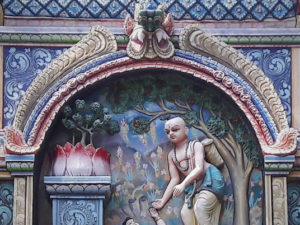
Recognising the distinct styles and divergent translations of Priya and Ravi calls to mind the story of the Septuagint, where seventy-two translators come up with an identical translation of the Hebrew Bible. While this example is usually cited to establish the authenticity and the fidelity of that translation, it has always raised for me another question, the reality of the process. Can the translator be said to exist, if she is transparent? Even Anne Carson, whose exacting translation of Sappho places us as if right next to a poem fragment on an ancient papyrus, admits: “I like to think that, the more I stand out of the way, the more Sappho shows through. This is an amiable fantasy (transparency of self) within which most translators labor.” Every translator has a unique lens. This is not just about interpretation, an intellectual activity, this is also about personality, personal history, biography. An Urdu couplet explains it well: Ishq ki chot toh padti hi har dil pe iksaan. Zarf ke farq se avaaz badal jati hai. ‘The strike or the hurt of love falls the same way on each heart/mind, but depending on the material (i.e., nature, character, what stuff the person is made of) it sounds different.’ We must expect translations to be individual, otherwise the task of the translator may as well be the ‘task of the computer,’ or even the ‘task of the dictionary.’
Andal’s life and legend is so completely founded in the divine that merely thinking of translating Andal ought to make one speechless, struck with ineffability. Additionally, the genre of ancient Tamil poetry to which the Thiruppavai and the Naciyar Thirumoli belong is said to incorporate inner spaces, hidden meanings.
Priya uses imperatives (‘come, make this vow’), nouns as verbs (‘to hymn his magic’), and graphic images (‘lightning nerved air’) for a translation charged with momentum and force. Her triptych in Nachiyar is an enactment (abhinaya) much like in a dance-drama, where a statement is presented once, and then again, and then again, slightly different each time, the rasa more heightened. Assuming the first part is most literal, or as literal as you can get with Andal, and the second stanza yet another translation or telling, carrying an echo or trace of the first, the third stanza is a mutter, a trailing off, an entry into the psyche of Andal and the translator so impacted that she continues to voice her, not quite consciously. Ravi’s translation startles expectations that we may have of men-translators translating a woman-poet. In Take Me to the Land of My Lord, Andal asks, ‘[l]eave me there on my haunches,’ the limbs of Hrisikesa (Krishna) ‘quivering in time like a veena string’ – his translation embodies Andal. Ravi also circumambulates the ideas and images of a poem with each stanza, but works his imaginary into a smooth, narrative flow. Both translators bring us the textures of Tamil; whereas Ravi intersperses Tamil words in his translation, Priya’s English itself seems shaped by the source language. Their two Andals walk alongside. If Priya’s Thiruppavai is solemn, chant-like, Ravi’s Thiruppavai is conversational. Priya tells us that the gopis’ hands are too small to enclose the udders of the cows. Ravi tells us the udders groan to fill the pots. Two sets of eyes trained on the scene, the vision of the reader gains depth; and returning to the same poems from two different angles that are also rich spectrums in themselves drives the reader into the deep, of Andal. While Priya and Ravi respond to Andal, they also seem to respond to each other. What Ravi presents in Dark Flower expands into a bouquet in Priya, or perhaps Priya first shows us the flowers, and then Ravi the bunch? The collaborative strategy has an expansive effect, it is Andal who proliferates.

In order to appreciate, understand, or just locate the methodology of this Andal translation, it is useful to consider the conventions of how a ‘text’ or a source thrives in the Indian tradition. When we find railway metaphors in a song attributed to circa 15th century Kabir, we know that the corpus of Kabir represents an imaginary, Kabir songs pay homage to the collective idea of Kabir. And we do not split hairs over the definition of the Tulsidas Ramayana, wonder whether it is a translation, version, adaptation, creative translation, transcreation, retelling or commentary. It is multiplicity that achieves the transmission and continuity of source texts, whether oral, or written. Texts that we think of as ‘fixed’ also assimilate the voices of readers. Look at the tradition of Gita dissemination—it has relied, and continues to rely, on people who study, recite, translate, explain and comment on the Gita while drawing from previous commentaries (bhasyas). It is only in the context of modern book-culture that we expect a Gita translation to be the ‘representation’ of a source text, and expect commentary within footnotes and with reduced emphasis. And if we do not regard many Gita translations as many Gitas, that is a comment on our expectations of translations, and on our naiveté about interpretation, not on a translation’s management of fidelity.
In order to appreciate, understand, or just locate the methodology of this Andal translation, it is useful to consider the conventions of how a ‘text’ or a source thrives in the Indian tradition. When we find railway metaphors in a song attributed to circa 15th century Kabir, we know that the corpus of Kabir represents an imaginary, Kabir songs pay homage to the collective idea of Kabir.
Then the bhakti tradition admits intuition as methodology. In The Flute Calls Still, Dilip Kumar Roy writes about Indira Devi who became his disciple in 1949 in Pondicherry. Indira was such an intense seeker and bhakta, devotional singing sessions sent her into trances. She had visions of Mirabai singing in “a voice throbbing with “love’s yearning and pain,” recalled and wrote down these songs, and sang them. Commenting on this phenomenon, Sri Aurobindo (who was Roy’s guru) said, it was evident that “her consciousness and the consciousness of Mira are collaborating on some plane superconscient to the ordinary human mind.”
This book is a translation that must also be located within this Indic tradition, deriving its freedoms from it. It is a conversation with a mystic text, and must be appraised as one. Priya and Ravi utilize a range of methodologies from past and contemporary rubrics of translation, they are Indian and not only Indian, they are translators and poets besides, they work from Andal’s text and over and above, they translate, and they do more. Dear reader, may you be open to Andal in all sorts of ways.
– Mani Rao
INTRODUCTION
Andal and her Poetry
Andal (often referred to as Andal/Aandaal or Antal), the 9th-century mystic poet was elevated to goddess status within a few centuries of her birth in the southern Indian state of Tamil Nadu. She was the only woman among the twelve medieval Vaishnava saints, known as the Alvars who ‘dived deep and drowned themselves in the love of god’ implying their complete devotion to Vishnu-Narayana, one of three main deities in the Hindu pantheon, often called Tirumal, The Sacred Dark One, in Tamil. Unlike other mystics Andal is unique in demanding to be taken as bride by Vishnu not as spirit but as a living maiden. Legend goes that when she was around sixteen she merged with her god at his temple in Srirangam, Tamil Nadu. Since then she has existed as myth and deity.
The Alvars, along with their counterparts, the Siva-worshipping Nayanmars, are the earliest proponents of the bhakti movement, a devotional and socially radical form of worship that emerged in medieval India which emphasized the quality of god as saulabhyam, or easily accessible to all. This celebration of personal prayer stressed composing in the poets’ mother tongue –as against Brahminic Sanskrit – some see it as striking against the caste system. Even as kings ‘re-converted’ to Hindu faith, the bhakti movement became a popular force instrumental in the retreat of wealthy Buddhist and Jain sects and, simultaneously, curtailed Brahmin monopoly on religion.
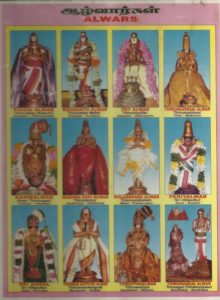
Andal’s first work – composed when she was about thirteen – the Tiruppavai (The Path to Krishna) is a lyrical description of the vows undertaken by young women to obtain a good husband; it is a song of congregational worship. In her second and last work, Nacciyar Tirumoli (The Sacred Songs of The Lady), Andal sings of her individual need for spiritual and sexual congress with her chosen god and of an abundant female desire explicitly sited in the body which too is holy. The Tiruppavai and the Nacciyar Tirumoli are included in the circa 11th century compilation Nalayira Divya Prabandham (Four Thousand Divine Compositions) that Tamil Srivaishanvas consider on par with the Sanskrit Vedas. The compilation’s literal translation is ‘Four’ (nali) ‘Thousand’ (aayiram) ‘Divine’ (divya) ‘affection’ (pra) ‘bonding’ (bandham) again is indicative of the Alwars’ intimacy of address to Vishnu-Narayana.
Andal calls to Vishnu, The Pervader, the cohesive principle of sattva, supreme illumination. The Brhad-devata (2.69.[213]) suggests his name may originate in the Sanskrit root vis which means to spread, to enter and to surround. “Having created the universe, he entered it” states the Taittiriya Upanishad (1.2.6. [274]). In Vaishnava theology, Vishnu is the Self in all of life and manifests endlessly in the world of forms and orders of creation, “just as from an inexhaustible lake thousands of streams flow on all sides” to guide and protect creation. Vishnu is prayed to as Hari, Remover of Sorrow and Illusions which is especially poignant in Andal’s case as she beseeches him time and again to accept and to save her. She addresses him variously: as Narayana (who moves on causal waters on the serpent Seshnaga), as Narayana Nampi (Universal Abode), Tirumal or Mal (The Dark One of Tamil theology) and through seven of his ten prominent avatars. But most often she addresses him as Krishna, divine child and lover.
Andal (often referred to as Andal/Aandaal or Antal), the 9th-century mystic poet was elevated to goddess status within a few centuries of her birth in the southern Indian state of Tamil Nadu. She was the only woman among the twelve medieval Vaishnava saints, known as the Alvars who ‘dived deep and drowned themselves in the love of god’ implying their complete devotion to Vishnu-Narayana, one of three main deities in the Hindu pantheon, often called Tirumal, The Sacred Dark One, in Tamil.
Each of Andal’s pasurams (songs) is drenched in the way the sacred is embedded in every material that constitutes ephemeral life; at the same time she summons timeless grace, arul, to illumine her. Her work calls to question all markers of identity and boundaries as she passionately sings for bliss to enter her body and spirit. When we receive Andal, we must keep her youthfulness in mind. She conflates extreme violence with swooning surrender; splices the desires of the sexual body with visions of cosmic temporality. Yet we refrain from applying the term ‘transgressive’ to Andal as it suggests a deliberate breaking of rules. It appears she did not bother with any social conventions or rules at all – except those of poetry.
From Saint-Poet to Goddess and Teen Icon
Andal’s first work – composed when she was about thirteen – the Tiruppavai (The Path to Krishna) is a lyrical description of the vows undertaken by young women to obtain a good husband; it is a song of congregational worship. In her second and last work, Nacciyar Tirumoli (The Sacred Songs of The Lady), Andal sings of her individual need for spiritual and sexual congress with her chosen god and of an abundant female desire explicitly sited in the body which too is holy. Andal eventually would become a teenage saint-poet and then a goddess, when she became Vishnu’s consort, famously rejecting any marriage to a mortal man, considering herself betrothed to the divine.

Performative interpretations of Andal’s life of an all-surrendering love and passionate piety are enacted in Chennai during the annual music and dance festival as ‘high’ art, as also in films and popular TV dramas. Dingy roadside photo studios exhibit saturated images of girls in their coming-of-age ceremony dressed as Andal in vibrant silk saris, flower garlanded, hair dressed in a small bun on the right and then left to cascade. (The girls are also photographed variably as faux geishas, in salvar-kameez ‘suits’, as Bollywood starlets in jeans and spangling tops etc, thereby co-opting every current image of desirability. The Andal iconographic image, however, is a constant.) Perhaps the photographs imply that each girl is a fit bride for a god or perhaps they are shaded with upper caste aspirations, but it seems possible that there is a more powerful and unfathomed cultural imagination at work 13 centuries after Andal’s brief life.
Andal’s first work – composed when she was about thirteen – the Tiruppavai (The Path to Krishna) is a lyrical description of the vows undertaken by young women to obtain a good husband; it is a song of congregational worship. In her second and last work, Nacciyar Tirumoli (The Sacred Songs of The Lady), Andal sings of her individual need for spiritual and sexual congress with her chosen god and of an abundant female desire explicitly sited in the body which too is holy.
Andal’s first work, Tiruppavai (The Path to Krishna) is famed in Southern India, especially Tamil Nadu and sung by devotees during the sacred month of Markali. It is a lyrical and bhakti-filled description of vows undertaken by young women to obtain a good husband and is a song of congregational worship. However, in the later Nacciyar Tirumoli (The Sacred Songs of the Lady), Andal sings of her individual need for sexual congress with her chosen god. Except for Hymn Six – which elucidates her dreams of the marriage rituals and is sung at weddings even today – the other 13 hymns are not as often heard, perhaps because they speak of an abundant female desire explicitly sited in the body. Similar to the Gnostic texts which were omitted from what is commonly referred to as the Judeo-Christian Bible for their more overt sexual symbolism and heterodoxy which verged on the heretical, many of Andal’s hymns from the Nacciyar Tirumoli are considered by many (though not by us) to be ‘transgressive’.
Prismatic Soundings
We, the two translators of this project, are poets ourselves and so approach the translation with neither a historiographical nor theological approach, but rather a poetic one that sees her utterances as songs that need an innovative approach in order to sing fully in English. Priya grew up hearing Andal’s collection of hymns sung at weddings and festivals. For decades, the holy-poet-become-goddess hovered in her imagination like a cloud over the sea, nebulous yet lit on the horizon of the liminal, until one day she decided the goddess must land on the shore of her first language: English. At this time she met Ravi Shankar, the Indian American poet and professor, who shared her passion for Tamil literature and Andal in particular.
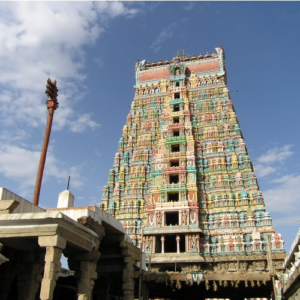
That’s how the two of us became collaborators and in working together, we realized that a new approach was necessary if we were to do justice to the richness and spiritual intensity of these poems. Our intention is to make the poems come alive in English and so we dispensed with attempting a literal translation, verging instead into a polyphonous mode of capturing the multiplicity inherent in Andal’s songs by experimenting with form and sometimes including multiple versions of the same poem, as well as more collaborative translations. We spoke about our aspirations for this project to the elder of the two scholar-poets whom we consulted for help with the manuscript, octogenarian S.V. Seshadri, who helped us understand the complexity of Tamil Sangam era (2 BCE–2 CE) poetics in which Andal composed.
Andal’s first work, Tiruppavai (The Path to Krishna) is famed in Southern India, especially Tamil Nadu and sung by devotees during the sacred month of Markali. It is a lyrical and bhakti-filled description of vows undertaken by young women to obtain a good husband and is a song of congregational worship.
To provide a sense of the difficulty in translating Old Tamil, consider the following saying, poem and verse which present conundrums because of specific poetic codes and suggested ‘unmarked’ meanings compressed in each.
- ‘If you wish to destroy a thorn tree, call for the axe.’
- When told of her lover’s interest in another woman she smiled and said:
Drunk
with honey
from the opening lotus
pond the bee flies
to its hive in the sandalwood grove.
- Bring me his garments translucent, yellow, shimmering
as pollen through which the dark majesty of his thighs rise
glistening and drape me in his scent
so my every pore is perfumed. Then shall I be content!
The meanings of these three distinctive utterances need contextual clues in order to be unravelled. The first is an epigram that translates as words of advice:
If you wish to kill your enemy, O king, do so quickly.
The second is a secular poem in which the woman implies that her lover enjoys her deeply, mutually as she enjoys him, that their love is sweet and as fresh and pure as blossoming lotuses whose roots are deep and entwined as their vows to each other and that he will carry her love with him as faithfully as a bee returning to its hive as he journeys to his home high on the hill far away, and that their love will remain fragrant and long lasting as sandalwood until he returns to her.
The third is a sacred hymn that follows the rules of Old Tamil prosody in making a similar, yet very different erotic demand. Unlike the earlier poem, its desires are not veiled in symbolic allegory. But while it seems direct, it could misdirect, for the desired ‘he’ is not a mortal, but the Protector of Universes, the dreaming Vishnu, who, in the starry cosmic ocean, rests on the cloud-coloured serpent Ananta, who represents ‘the eternity of time’s endless revolutions’. The speaker of this verse is Andal who was possibly fifteen at the time. This instance of sexual and devotional intensity is from the Nacciyar Tirumoli, Song Thirteen, verse one. In theological terms, the yellow silk is often interpreted as the veiling of the sacred wisdom of Narayana’s body. The speaker’s assumed extreme familiarity with god gives these poems their uncanny edge of heightened eroticism.
We have translated her bhakti or devotion-drenched hymns as The Autobiography of a Goddess. Alongside, we refer to the commentary of the 13th century scholar, Periyavaccan Pillai (Veritable Great Teacher) as he is the most revered early interpreter of these hymns.
We have translated her bhakti or devotion-drenched hymns as The Autobiography of a Goddess. Alongside, we refer to the commentary of the 13th century scholar, Periyavaccan Pillai (Veritable Great Teacher) as he is the most revered early interpreter of these hymns. We sought the guidance of Dr S. Raghuraman-Pulavar who has lectured and published extensively on the daunting Tholkaapiyameypaatiyal and is possibly the leading expert on cen or ancient Tamil grammar and poetics. He induced our passion for the holographic Tamil poetic form. At times we consulted Dr Prema Nandakumar, scholar of visistadvita philosophy (qualified non-dualism) to tease out inherent theological references. Also invaluable to us were Vidya Dehejia’s Andal and Her Path of Love: Poems of a Woman Saint from South India (State University of New York Press, 1990) and Archana Venkatesan’s The Secret Garland: Antal’s Tiruppavai and Nacciyar Tirumoli (Oxford University Press, 2010), the two most recent translations of Andal’s work into English, albeit in a very different form and manner than what we have attempted.
Drowning in love and language
As a bhakti saint, Andal composed in cen or Old Tamil. However, this implied following many of the rules codified in the Tolkaappiyam, the classical treatise on grammar and poetics. She did not follow its tinnai conventions that morph moods of love and evocative landscape into symbolic spaces of passion but worked with much of its other riddling complexities. Compounding the difficulty of translating this work, here is the catch: the ancient Tamils relied on the listeners and readers to ‘complete’ the poems by comprehending various allusions, including the invocation of myth and the utilization of complex poetic strategies. This is similar to postmodern reader-response theory that argues against the concept that meaning is embedded in the text, but rather believes that meaning only emerges dialectically between the relationship of text and reader.
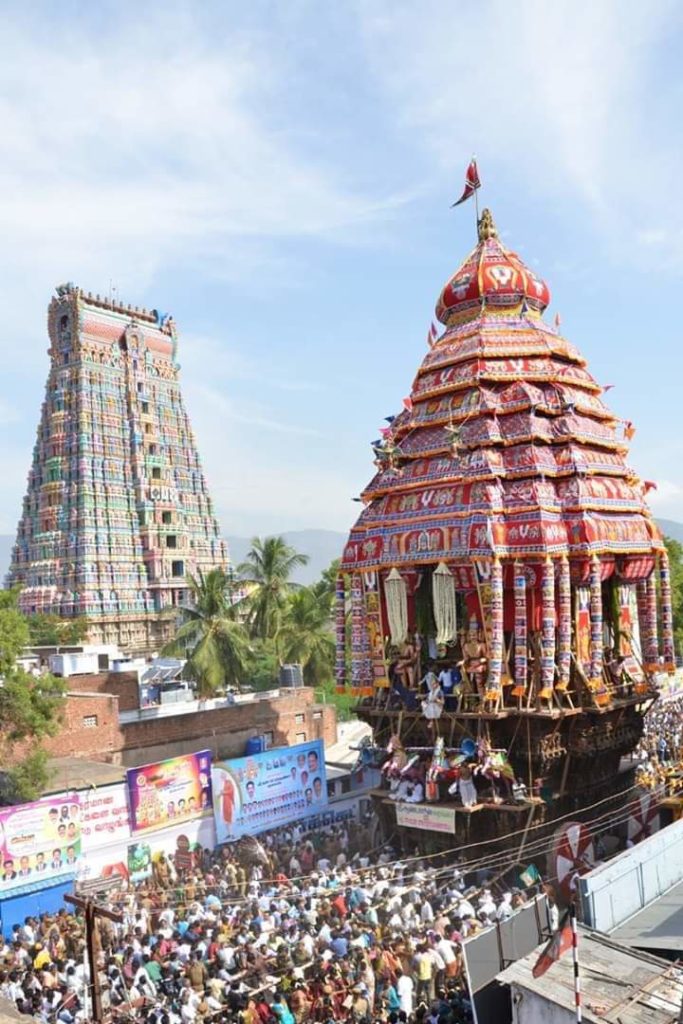
A staggeringly exhaustive and codified compendium, the Tolkaappiyam recommends that both poet and reader immerse themselves in systems of poetics, grammar, versification, forms, metrical and rhythm schemes and possess an adequate mental thesaurus before attempting to read or write poetry. The level of sophistication of classical Tamil poetry is profound and there have been many manuals written on its prosodic elements, which included an elaboration of elullu, or the phoneme, acai, or the metreme, cir, or the metrical foot, talai, or the linkage, ali, or the line, and totai, or ornamentation. Sangam literature, written in classical Tamil, offers us poetic works with re-combinations of the above elements in extremely refined ways.
As a bhakti saint, Andal composed in cen or Old Tamil. However, this implied following many of the rules codified in the Tolkaappiyam, the classical treatise on grammar and poetics. She did not follow its tinnai conventions that morph moods of love and evocative landscape into symbolic spaces of passion but worked with much of its other riddling complexities.
For example, Andal’s Tiruppavai is written in eight-line stanzas in the koccakakalippa meter, or four metrical feet, whereas the Nacciyar Tirumoli employs five different meters in lines that range from four to eight feet. We have not attempted to mimic that complex meter in English, as it would be a virtual impossibility, as well as resultant in a stilted form of poetry. We have instead attempted to abide in her imagery and metaphor, and find a suitable form that reinforces and mirrors the ecstatic content of her songs, especially as relates to the traditions of Tamil love poetry.
Take this anonymous verse about amorous poetry which states:
Aagapaattuvaannam
mudindadu polmudiyadadi
aahum
Here’s a literal translation, compounded by the difficulty that Tamil morphology is akin to a mantra with a maraiporul, or a secret hidden meaning:
Love-poetry sounds/forms/presents
complete as if not complete
is like that
or, put another way:
Love poetry seems
completed
but isn’t.
The loop is only completed when the listener participates in the performance of the poem somatically and collectively, and that kind of participatory model of interpretation points to the thriving local literary culture that existed at that time. Translating this element of historicity for a contemporary audience now provides us the space and freedom to make multiple connections between lines and between verses, and productive misinterpretations notwithstanding, allows for the liberation of imagination in trying to bring to light the numerous flowing undercurrents and holographic affects that are taking place simultaneously. For this reason, we have developed a radical mode of translation meant to illuminate a wide spectrum of Andal’s spirit, rather than to slavishly hew to the letter of her work.
This excerpt has been carried courtesy the permission of Zubaan Books. You can buy Andal: The Autobiography of a Goddess, here.
ARCHIVE
An excerpt from R.C. Majumdar’s Historiography of Modern India, originally published in 1970, which lists problems with the historiography of the Indian historians of his time, caused by factors like a need to “trace the course of progress towards liberty” or an “inadequate knowledge of data” or to cater to “the policy of a political party”. “‘History is past politics’, is likely to be substituted soon by a new phrase,” writes Majumdar. “‘History is present politics’.”
Ramesh Chandra Majumdar (1888-1980), or R.C. Majumdar – as he is better known – is not just a major historian of the past century but also one of its intriguing figures. His vast body of work, written across a long career, ranges from ancient to regional to international histories and includes a history of the independence struggle as well as an extensive (if controversial) series which he edited and contributed to called The History and Culture of the Indian People. Appointed by the government to head a committee to write the history of the freedom struggle, he left over differences with the Education Ministry, publishing his own work on the subject separately instead. (You can read more about him in his bio.)
Even those who contradict or differ from him, make an allowance for his scholarship. Marxist historian Irfan Habib, for instance, disagrees vehemently with some of Majumdar’s interpretations, particularly those running through The History and Culture of the Indian People. Writes Habib:
“To him the entire period from c. 1200 onwards was one of foreign rule; Muslims were alien to Indian (Hindu) culture; the Hindus, oppressed and humiliated, wished nothing better than to slaughter ‘the Mlechhas’ (Muslims); the British regime was a successor more civilised than ‘Muslim rule’; yet real opposition to the British came from Hindus, not Muslims, even in 1857; and, finally, the national movement’s course was throughout distorted by concessions made to Muslims by Gandhiji, who was so much personally to blame for Partition.”
“The often unproven hypotheses and inferences that he bequeathed,” writes Habib. “Have all become firm truths for a very large number of educated people in India.”
Nonetheless, Habib states unequivocally that Majumdar was a “distinguished”, “tall” and “serious” historian and “whatever he speaks is on facts that all historians admit to be true”. Further, that Majumdar’s “great industry must extract admiration from his worst critics”.
Ramachandra Guha, in his book Democrats and Dissenters laments the lack of “conservatives of the past” like Majumdar; a historian “with whom one could have a debate”.
The excerpt we are carrying below is from Majumdar’s Historiography of Modern India, published in 1970. It was curated for Swapan Dasgupta’s Awakening Bharat Mata: The Political Beliefs of the Indian Right, which comprises – after three introductory chapters spanning 150 pages by Dasgupta, establishing context – a collection of primary sources expressing the Indian conservative viewpoint; interviews, addresses and writings with and/or from personalities as varied as Sister Nivedita, Bankimchandra Chattopadhyay, R.G. Bhandarkar, V.D. Savarkar, Ramananda Chatterjee, Sardar Vallabhbhai Patel, V.S. Naipaul and historians like Jadunath Sarkar and R.C. Majumdar.
In the following excerpt Majumdar points out flaws in Indian historiography (the writing of history based on a critical examination of sources) around three broad areas:
– A false glorification of India’s early past, such as in K.P. Jayaswal’s “theory of a Parliamentary form of Government in Ancient India, which is a replica of the British Parliament including the formal Address from the Throne, etc.” Also, “conscious attempts” made to “explain away, ignore, or minimize, the harsh treatment accorded by the high caste Hindus to the lower castes, particularly Sũdras and Caṇḍālas”. Also, the Gandhian idea that non-violence as an ideal “has been followed throughout the course of Indian history”.
“One rubs his eyes with wonder,” writes Majumdar. “For not only are all the known facts of Indian rulers against the assumption that they were averse to war, but war has been recommended by political texts as a normal practice and sanctioned by religion through the aśvamedha sacrifice and eulogy of digvijaya. The Court-poets flattered the patron king by giving him the proud epithet of ‘hero of hundred fights’.”
– Secondly, with regard to Medieval India, Majumdar sees “a distinct and conscious attempt to rewrite the whole chapter of the bigotry and intolerance of the Muslim rulers towards Hindu religion… prompted by the political motive of bringing together the Hindus and Musalmans in a common fight against the British.” This can be seen, according to Majumdar, in the repudiation of charges that “Muslim rulers ever broke any Hindu temple”, the assertion “that they were the most tolerant in matters of religion” and that “the Hindu population was better off under the Muslims than under the Hindu tributaries or independent rulers”, the exoneration of “Mahmūd of Ghaznī’s bigotry and fanaticism”, and “several writers in India” defending “Aurangzīb against Jadunath [Sarkar]’s charge of religious intolerance.”
Similarly, Majumdar takes issue with the thesis “that the Hindus and Muslims had no cultural conflict” and most certainly with the assertion made by Lala Lajpat Rai “that the Hindus and Muslims have coalesced into an Indian people very much in the same way as the Angles, Saxons, Jutes, Danes and Normans formed the English people of today”.
Referring to a presidential address at a 1965 Indian History Congress, held at Allahabad, Majumdar writes: “We are told that ‘Akbar’s political outlook was an outcome of the accumulated political wisdom of the generations that had gone by and was a logical development inherent in the very nature of the situation’. Unfortunately, nothing is said about his successors, particularly Aurangzīb… ”
– Finally, when it comes to the British period, Majumdar feels “national sentiments” “prejudiced a calm consideration” of episodes such as “(1) the Black Hole Tragedy and character of Sirāju’d-daulah; and (2) the nature of the outbreak of 1857”. Later, he provides an illustration by way of the official history of the ‘Freedom Movement in Bihar’ (1957):
“Much has been said in it of Kunwar Singh as the local organizer and a hero of the great ‘War of Independence’ in 1857. But no mention has been made of a document which shows that the local sepoys, who had already mutinied, threatened to plunder his house and property if he did not join them. It can hardly be excused on the ground of ignorance, for it was the author of this history who first brought this document to light and published it in a local magazine.”
This illustration – of the author of a history (in this case Kalikinkar Datta), excluding from it a document of significance that the author had himself brought to light – brings us to the larger points Majumdar raises in this excerpt, which go beyond the areas of Indian historiography he points out flaws in, to what Majumdar sees as the root cause of these flaws.
For some of Majumdar’s historiographical assertions have themselves been questioned. The approach reflected in his generalized statement regarding “the whole chapter of the bigotry and intolerance of the Muslim rulers towards Hindu religion”, for example, has been refuted by Habib who examined Majumdar’s perspective alongside that of Ishtiaq Hussain Qureshi who projected “the history of ‘Muslims in India’… as a struggle for a separate nation right from A.D. 712, when Muhammad ibn Qasim entered Sind at the head of an Arab army.”
“In 1961,” writes Habib. “When I wrote an article criticizing what I held to be communal approaches by two distinguished historians, R.C. Majumdar and I.H. Qureshi, I noted that while their interpretations (mainly in laying blame or lavishing praise) were so different, their ‘facts’ were often identical, derived from the same evidence.”
Those interested in this debate might also like to read excerpts we have carried from Brajadulal Chattopadhyaya’s Representing the Other? Sanskrit Sources and Muslims and Manan Ahmed Asif’s The Loss of Hindustan – The Invention of India.
This particular excerpt, however, is more about the larger points Majumdar raises as to the roots of historiographical bias, which are as relevant today as they were then:
– Does History have an objective ‘greater’ than itself? Is “the real task of history” to “reveal the spirit of humanity and trace the course of progress towards liberty”?
Majumdar quotes passages from the proceedings of Indian History Congresses held in 1964 and 1965, which argue in favour of this:
“History has a mission and obligation to lead humanity to a higher ideal and nobler future. The historian cannot shirk this responsibility by hiding his head into the false dogma of objectivity, that his job is merely to chronicle the past. His task is to reveal the spirit of humanity and guide it towards self-expression.”
History must avoid “ghastly aberrations of human nature, of dastardly crimes, of divisions and conflicts, of degeneration and decay, but of the higher values of life, of traditions of culture and of the nobler deeds of sacrifice and devotion to the service of humanity.”
“The most important subject awaiting the critical touch of the historian, however, is the national movement, particularly the age dominated by Mahatma Gandhi, which restored the independence of the country. The historian has to get behind the external of the events and detect the spirit which animated them, and thereby reveal the soul of India. That approach alone will help to surmount the danger of provoking communal, regional, linguistic and class hatreds which unfortunately beset history writing.”
“In other words,” writes Majumdar. “History should record the spread of Buddhism by Aśoka, but not the horrors of the Kaliṅga war, carefully avoid all references to the devastation and massacre of Mahmūd of Ghaznĩ, destruction of temples by Aurangzīb, the Jallianwala Bagh massacre by General Dyer, the holocaust during communal riots, and so on. The reason for these omissions is that such things bring some ‘unhealthy trends which militate against the concept of national solidarity or international peace’.”
Majumdar rejects this idea of historical study entirely. “The real purpose of history,” he writes. “Is to report correctly the progress of events, which did not in all cases mark the progress towards liberty”.
To reiterate, he quotes Jadunath Sarkar:
“I would not care whether truth is pleasant or unpleasant, and in consonance with or opposed to current views. I would not mind in the least whether truth is or is not a blow to the glory of my country. If necessary, I shall bear in patience the ridicule and slander of friends and society for the sake of preaching truth. But still I shall seek truth, understand truth, and accept truth. This should be the firm resolve of a historian.”
– The second question: Is the historical data available suitable for the generalisations often posited by Indian historians?
Majumdar prefaces this question by quoting the views of certain European historians on such generalisations:
“No; there is no one rhythm or plot in history, but there are rhythms, plots, patterns, even repetitions. So that it is possible to make generalizations and to draw lessons.” —A L Rowse
“History is a series of interesting happenings, often illogical and cataclysmic, not a logical and orderly development from causes to inevitable results. In short, history
is full of ‘might have beens’, and these sometimes deserve as much attention as the actual, but by no means necessary, course of events.” —Sir Charles Oman
Then, writes Majumder: “But whatever view we may adopt in this matter so far as the history of Europe is concerned, our very inadequate knowledge of data in Indian history renders such generalizations a difficult and risky process.”
He quotes Sarkar again:
“We have yet to collect and edit our materials, and to construct the necessary foundation—the bed-rock of ascertained and unassailable facts—on which alone the superstructure of a philosophy of history can be raised by our happier successors. Premature philosophizing, based on unsifted facts and untrustworthy chronicles, will only yield a crop of wild theories and fanciful reconstructions of the past.”
– The third question: How can one save history from the policy of the government of the day “which is at best the policy of a political party”?
Majumdar quotes Arab historian Ibn Khaldun who includes, in a long list of defects of historians:
“a very common desire to gain the favour of those of high rank, by praising them, by spreading their fame, by flattering them, by embellishing their doings and by interpreting in the most favourable way all their actions.”
Majumdar places the Indian National Congress government squarely in the dock for ‘inspiring’ or at least ‘influencing to a large extent’ the trends in historiography which he has raised issues with. Also, for “seeking to utilize history for the spread of ideas which they have elevated to the rank of national policy to their own satisfaction”.
“They are not willing to tolerate any history which mentions facts incompatible with their ideas of national integration and solidarity,” he writes. “They do not inquire whether the facts stated are true or the views expressed are reasonable deductions from facts, but condemn outright any historical writings which in their opinion are likely to go against their views about such things as Hindu-Muslim fraternity, the non-existence of separate Hindu and Muslim cultures on account of their fusion into one Indian culture, etc.”
Majumdar shares the story of Jadunath Sarkar’s exchange with President Rajendra Prasad on what a national history of India should look like. According to Sarkar, it should “not… try to suppress or whitewash everything in our country’s past that is disgraceful”. Prasad’s reply throws light on what could be at least one real purpose of history:
“No history is worth the name which suppresses or distorts facts. A historian who purposely does so under the impression that he thereby does good to his native country really harms it in the end. Much more so in the case of a country like ours which has suffered much on account of its national defects, and which must know and understand them to be able to remedy them.”
To drive his point home, Majumdar ends by quoting a book which critiques historiographical research in the authoritarian Soviet Union:
“The partisan approach to history prevents the observer from recognizing the sanctity of objective facts and requires him, where necessary, to deny the evidence of his senses; for there are occasions when he must subordinate his own personal concept of truth to that held by an individual or group of individuals, namely the party.”
Why is all of this relevant today, when there is neither any Soviet Union in the world, nor an Indian National Congress leading the national government agenda? Because the “party system” underlined by Majumdar, that constitutes “dangerous impediments to the growth of true historiography” still very much exists. The “ideas… elevated to the rank of national policy” may have changed, but the principal idea – of utilizing history to spread these ideas – has not gone anywhere.
It is irrelevant, in this context, what you think of ideas such as national integration or cultural essentialism. What is relevant is whether you believe history should be subservient to any agenda but its own – which is finding out the truth, the whole truth, and nothing but the truth – rather than national mythmaking.
It would be interesting to wonder how Majumdar might have reacted to the government of this day. He has referred to the killing of cows for the purpose of giving away their meat in charity – in the Mahabharata – in The History and Culture of the Indian People, and Habib often narrates an anecdote about him refusing to write for The Organiser after “it had published a paper alleging that monuments like the Red Fort and Taj Mahal had really been built by Hindu rulers”, and declining “to agree with K.M Munshi’s theory of an Aryan homeland in India”. In the following excerpt too, Majumdar refers in passing to a “recent acrimonious discussion on the killing of cows” and “a truly scientific spirit of history” being “sacrificed in discussions of such subjects as, ‘Did the Aryans come to India from outside?’, ‘Was there a caste system in the Ŗgveda?’”
R.C. Majumdar – whether or not you agree with him – was nobody’s fool. He was an independent and unique mind, which many of us haven’t heard enough from. It is time that – irrespective of what our ideological or historiographical convictions are – we hear more of what he had to say.
Excerpt from Awakening Bharat Mata: The Political Beliefs of the Indian Right by Swapan Dasgupta, and Historiography of Modern India by R.C. Majumdar
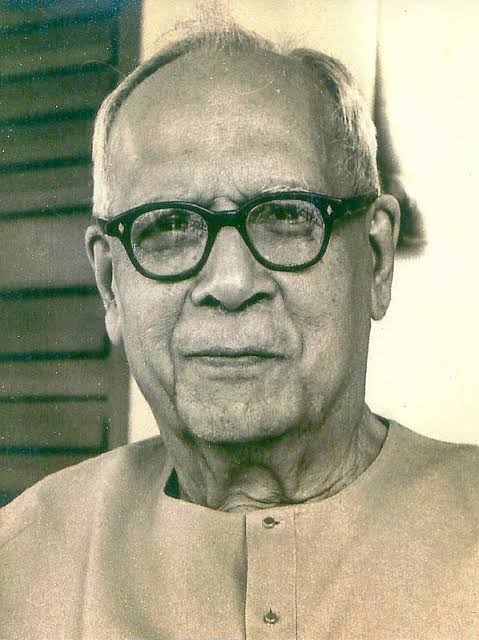
R.C. Majumdar
So far about the British historians. As regards the Indian historians the chief defect arose from national sentiments and patriotic fervour which magnified the virtues and minimized the defects of their own people. It was partly a reaction against the undue depreciation of the Indians in the pages of British histories like those of Mill, and partly an effect of the growth of national consciousness and a desire for improvement in their political status. It is a noticeable fact that these defects gained momentum with the movement for political reforms, and later, in the course of the struggle for freedom.
An extreme example is furnished by K.P. Jayaswal. The repeated declarations of British historians that absolute despotism was the only form of Government in Ancient India provoked Indian historians, who, following the footsteps of Rhys Davids, emphasized the existence of republican and oligarchical forms of Government. This reaction was, generally speaking, kept within reasonable limits of historical truth; but Jayaswal carried the whole thing to ludicrous excess in his Hindu Polity, by his theory of a Parliamentary form of Government in Ancient India, which is a replica of the British Parliament including the formal Address from the Throne, etc.; and many other statements of the kind. Similarly, historical discussions on social and religious matters are not unoften coloured by the orthodox views on the subject. The recent acrimonious discussion on the killing of cows shows how even clearly established facts of history are twisted to suit present views. A truly scientific spirit of history is often sacrificed in discussions of such subjects as, ‘Did the Aryans come to India from outside?’, ‘Was there a caste system in the Ŗgveda?’, and conscious attempts are often made to explain away, ignore, or minimize, the harsh treatment accorded by the high caste Hindus to the lower castes, particularly Sũdras and Caṇḍālas.
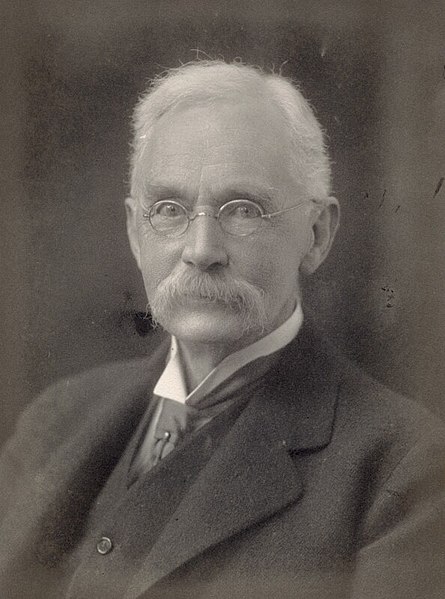
Thomas William Rhys Davids
A truly scientific spirit of history is often sacrificed in discussions of such subjects as, ‘Did the Aryans come to India from outside?’, ‘Was there a caste system in the Ŗgveda?’, and conscious attempts are often made to explain away, ignore, or minimize, the harsh treatment accorded by the high caste Hindus to the lower castes, particularly Sũdras and Caṇḍālas.
So far as Medieval India is concerned, there is a distinct and conscious attempt to rewrite the whole chapter of the bigotry and intolerance of the Muslim rulers towards Hindu religion. This was prompted by the political motive of bringing together the Hindus and Musalmans in a common fight against the British. A history written under the auspices of the Indian National Congress sought to repudiate the charge that the Muslim rulers ever broke any Hindu temple, and asserted that they were the most tolerant in matters of religion. Following in its footsteps a noted historian has sought to exonerate Mahmūd of Ghaznī’s bigotry and fanaticism, and several writers in India have come forward to defend Aurangzīb against Jadunath’s charge of religious intolerance. It is interesting to note that in the revised edition of the Encyclopaedia of Islam, one of them, while rewriting the article on Aurangzīb originally written by Sir William Irvine, has expressed the view that the charge of breaking Hindu temples brought against Aurangzīb is a disputed point. Alas for poor Jadunath Sarkar, who must have turned in his grave if he were buried. For after reading his History of Aurangzeb, one would be tempted to ask, if the temple-breaking policy of Aurangzīb is a disputed point, is there a single fact in the whole recorded history of mankind which may be taken as undisputed? A noted historian has sought to prove that ‘the Hindu population was better off under the Muslims than under the Hindu tributaries or independent rulers’. While some historians have sought to show that the Hindu and Muslim cultures were fundamentally different and formed two distinct and separate units flourishing side by side, the late K.M. Ashraf sought to prove that the Hindus and Muslims had no cultural conflict. But the climax was reached by the politician-cum-historian Lala Lajpat Rai when he asserted ‘that the Hindus and Muslims have coalesced into an Indian people very much in the same way as the Angles, Saxons, Jutes, Danes and Normans formed the English people of today’. His further assertion ‘that the Muslim rule in India was not a foreign rule’ has now become the oft-repeated slogan of a certain political party. The pity of the whole thing is that history books which do not incorporate these views are not likely to be prescribed as textbooks, and anyone who challenges these statements would be included in the black list of the Government of India.
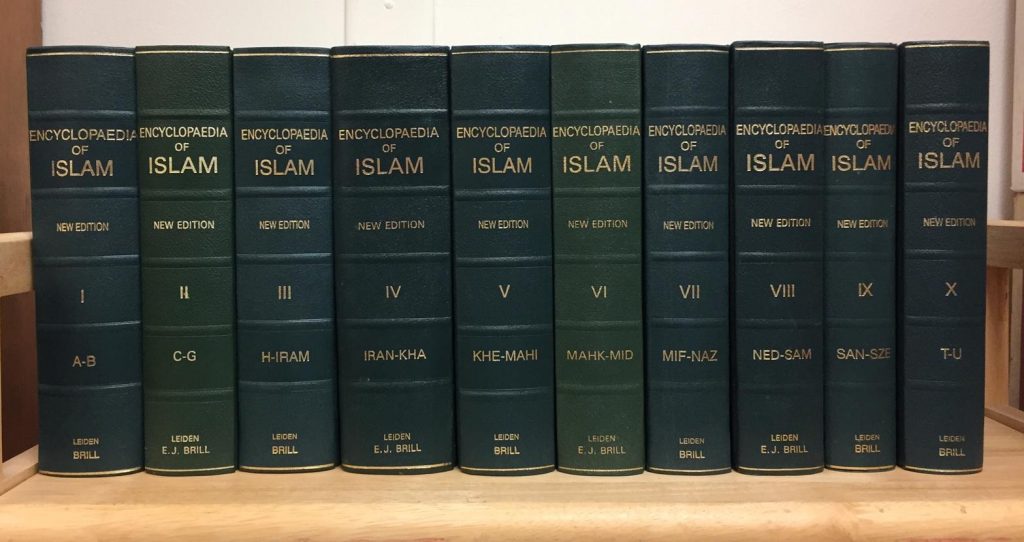
Encyclopaedia of Islam
While some historians have sought to show that the Hindu and Muslim cultures were fundamentally different and formed two distinct and separate units flourishing side by side, the late K.M. Ashraf sought to prove that the Hindus and Muslims had no cultural conflict. But the climax was reached by the politician-cum-historian Lala Lajpat Rai when he asserted ‘that the Hindus and Muslims have coalesced into an Indian people very much in the same way as the Angles, Saxons, Jutes, Danes and Normans formed the English people of today’.

Lala Lajpat Rai
Coming to the British period, national sentiments prejudiced a calm consideration of several episodes. Two of these are, (1) the Black Hole Tragedy and character of Sirāju’d-daulah; and (2) the nature of the outbreak of 1857. Having myself written on both these topics I would not like to dwell on the merits of the different points of view. Reference has already been made above to other episodes where historians have been influenced by racial or national sentiments. To these may be added many questions concerning economic and administrative systems; in almost all of which the British and Indian views have been influenced more or less by national or patriotic feelings.
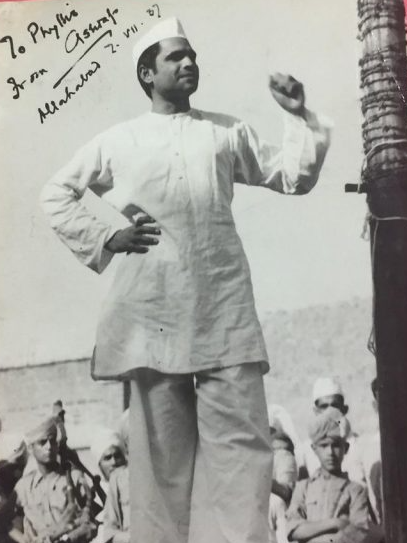
K. M. Ashraf
To this long array of defects of modern historiography in India, may be added another charge mostly levelled by Indians in recent times. It is said that the historians merely collect facts but do not make any generalizations or frame laws on their basis, while the real task of history is to reveal the spirit of humanity and trace the course of progress towards liberty. I do not think the charge is a legitimate one and would try to rebut it by the observations of some eminent scholars. The views of Fisher already quoted by me have been rebutted by other eminent historians like Acton who looks upon history as ‘the unfolding story of human freedom’. A.L. Rowse also refutes Fisher’s view and says: ‘No; there is no one rhythm or plot in history, but there are rhythms, plots, patterns, even repetitions. So that it is possible to make generalizations and to draw lessons.’ On the other hand, Sir Charles Oman in a way supports Fisher.
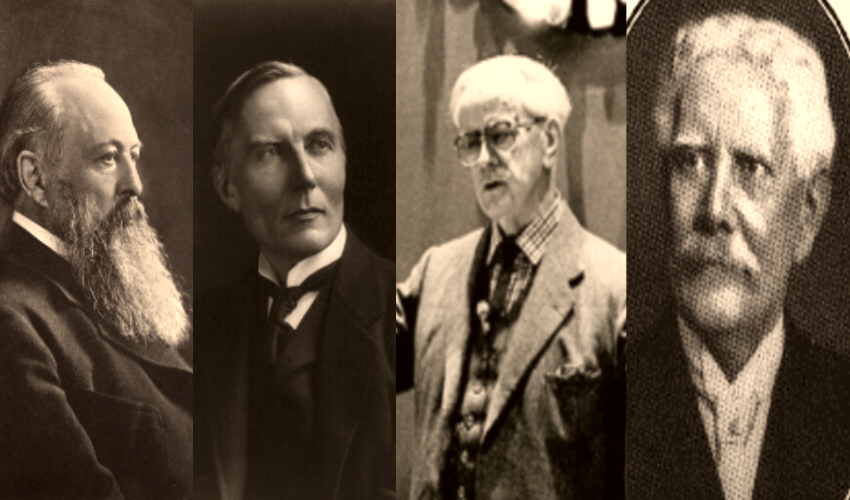
Left to Right: Acton, Fisher, A.L. Rowse, Sir Charles Oman
‘History’, says he, ‘is a series of interesting happenings, often illogical and cataclysmic, not a logical and orderly development from causes to inevitable results. In short, history is full of “might have beens”, and these sometimes deserve as much attention as the actual, but by no means necessary, course of events.’ But whatever view we may adopt in this matter so far as the history of Europe is concerned, our very inadequate knowledge of data in Indian history renders such generalizations a difficult and risky process. I fully share the views expressed by Sir Jadunath Sarkar in the course of his estimate of Sir William Irvine as a historian. He observes: ‘Some are inclined to deny Mr. Irvine the title of the Gibbon of India, on the ground that he wrote a mere narrative of events, without giving those reflections and generalizations that raise the Decline and Fall to the rank of a philosophical treatise and a classic in literature. But they forget that Indian historical studies are at present at a much more primitive stage than Roman history was when Gibbon began to write. We have yet to collect and edit our materials, and to construct the necessary foundation—the bed-rock of ascertained and unassailable facts—on which alone the superstructure of a philosophy of history can be raised by our happier successors. Premature philosophizing, based on unsifted facts and untrustworthy chronicles, will only yield a crop of wild theories and fanciful reconstructions of the past like those which J.T. Wheeler garnered in his now forgotten History of India, as the futile result of years of toil.’
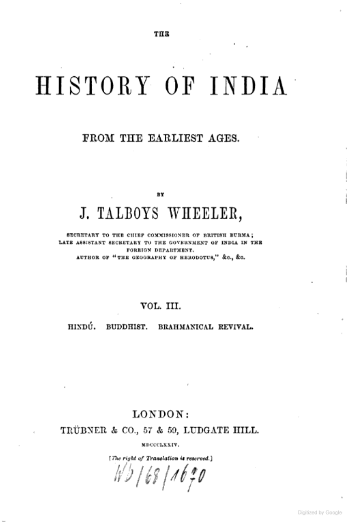
J.T. Wheeler’s History Of India
‘History’, says he [Sir Charles Oman], ‘is a series of interesting happenings, often illogical and cataclysmic, not a logical and orderly development from causes to inevitable results. In short, history is full of “might have beens”, and these sometimes deserve as much attention as the actual, but by no means necessary, course of events.’ But whatever view we may adopt in this matter so far as the history of Europe is concerned, our very inadequate knowledge of data in Indian history renders such generalizations a difficult and risky process.
‘Premature philosophizing, based on unsifted facts and untrustworthy chronicles, will only yield a crop of wild theories and fanciful reconstructions of the past like those which J.T. Wheeler garnered in his now forgotten History of India, as the futile result of years of toil.’ —Jadunath Sarkar

Jadunath Sarkar
During the post-Independence period, certain new trends are noticeable among the Indian historians in addition to those noted above. Strangely enough, these were foreseen by the great Arab historian Ibn Khaldun. He includes, in a long list of defects of historians, ‘a very common desire to gain the favour of those of high rank, by praising them, by spreading their fame, by flattering them, by embellishing their doings and by interpreting in the most favourable way all their actions’. He then justly observes that all this gives a distorted version of historical events. This characteristic is a growing menace to historiography in Modern India. The evil is enhanced by the fact that the Government, directly or indirectly, seeks to utilize history to buttress some definite ideas, such as the Gandhian philosophy of non-violence, the artificial conception of fraternal relation between the two great communities of India sedulously propagated by him, and several popular slogans evoked by the exigencies of the struggle for freedom. These have been accepted as a rich legacy by the Government, even though it practically means in many cases the sacrifice of truth, the greatest legacy which Gandhi meant to bequeath to mankind.
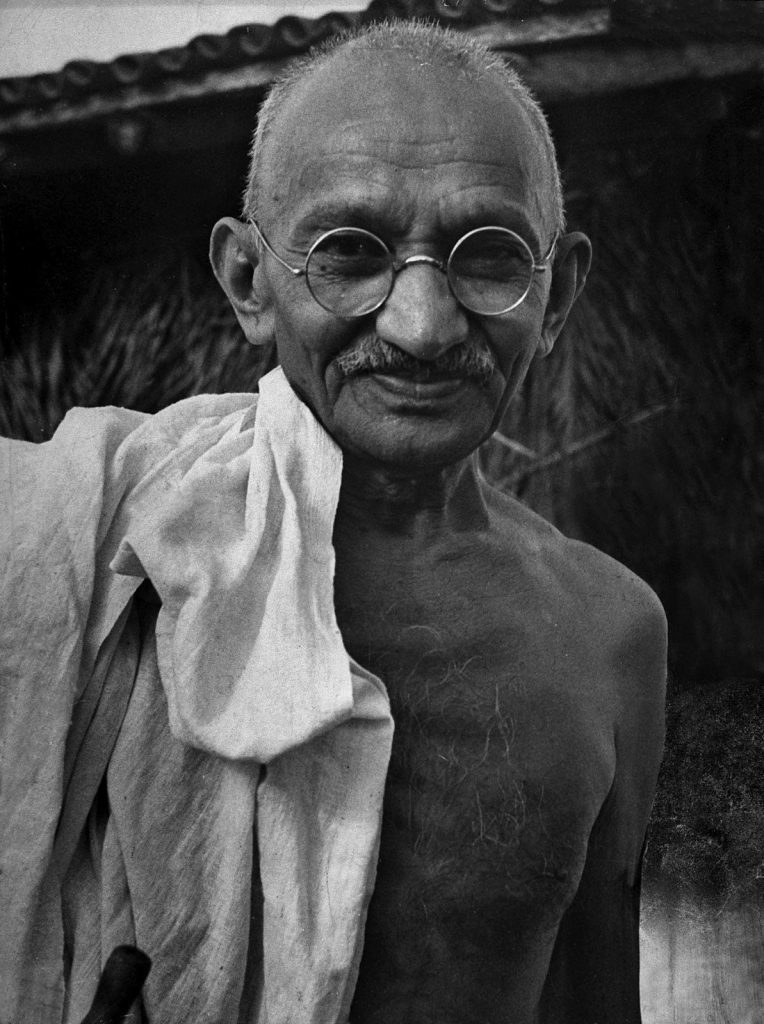
Mahatma Gandhi
Thus the cult of non-violence is an ideal devoutly to be wished for, but when historians of India seriously maintain that this ideal has been followed throughout the course of Indian history, one rubs his eyes with wonder, for not only are all the known facts of Indian rulers against the assumption that they were averse to war, but war has been recommended by political texts as a normal practice and sanctioned by religion through the aśvamedha sacrifice and eulogy of digvijaya. The Court-poets flattered the patron king by giving him the proud epithet of ‘hero of hundred fights’.
Such distortion of history can never be excused even in the name of Mahatma Gandhi. Similar distortions have been made on other topics mentioned above. The net result has been that the oft-quoted phrase, ‘History is past politics’, is likely to be substituted soon by a new phrase, ‘History is present politics’. The attitude of the British Government towards Cunningham who dared include unpalatable truths in history, has not quitted India along with the British, and an Indian historian today is not always really free to write even true history if it is likely to offend the ruling party. I know from personal experience that any expression of views, not in consonance with the officially accepted view, is dubbed as anti-national, and is likely to provoke the wrath of the Government.
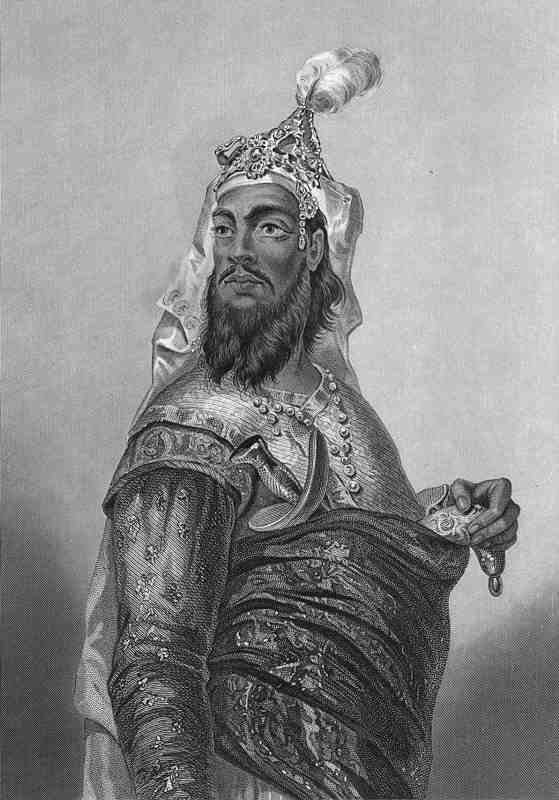
Kunwar Singh
No wonder that even eminent historians feel shy of, even if not prevented from, telling the whole truth. An apt illustration is furnished by the official history of the ‘Freedom Movement in Bihar’ (1957). Much has been said in it of Kunwar Singh as the local organizer and a hero of the great ‘War of Independence’ in 1857. But no mention has been made of a document which shows that the local sepoys, who had already mutinied, threatened to plunder his house and property if he did not join them. It can hardly be excused on the ground of ignorance, for it was the author of this history who first brought this document to light and published it in a local magazine. Some other documents of similar nature have also been withheld.
Arab historian Ibn Khaldun… includes, in a long list of defects of historians, ‘a very common desire to gain the favour of those of high rank, by praising them, by spreading their fame, by flattering them, by embellishing their doings and by interpreting in the most favourable way all their actions’… This characteristic is a growing menace to historiography in Modern India… The net result has been that the oft-quoted phrase, ‘History is past politics’, is likely to be substituted soon by a new phrase, ‘History is present politics’.
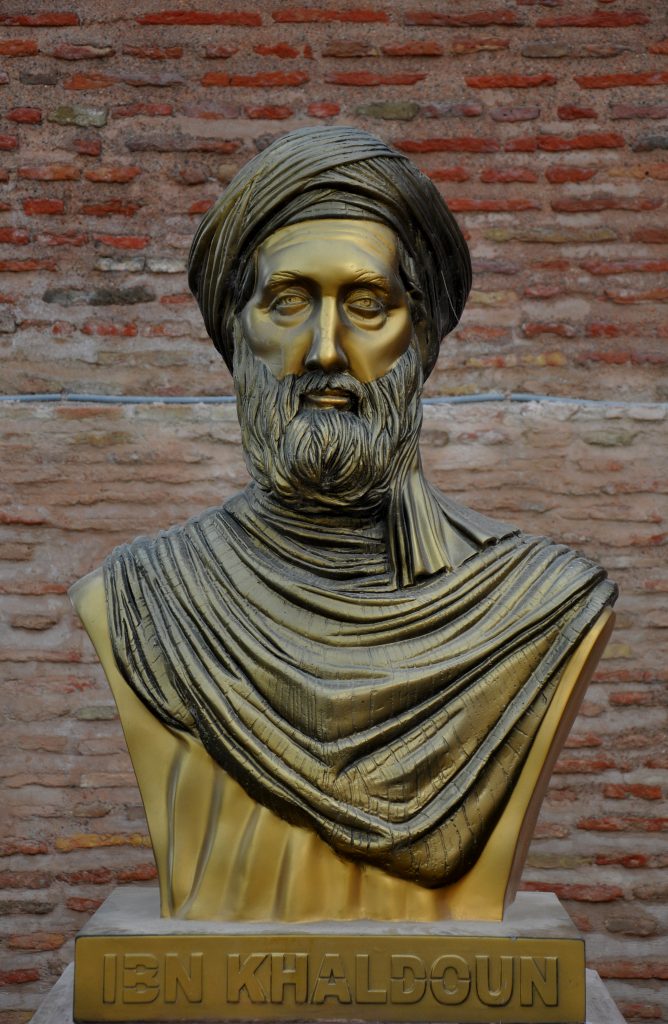
Bust of Arab historian Ibn Khaldun
When I was writing out the first draft of this lecture, the Proceedings of the Indian History Congress in 1964 and 1965 reached my hands. The Address of the General President in the 1964 session contains an elaborate presentation of the trends and concepts of history which appear to me to be a great departure from the ideals and concepts of history which I have outlined above. It may be reasonably assumed that these trends and concepts dominate at least a section of Indian historians today, and as such deserve careful scrutiny. ‘History,’ we are told, ‘has a mission and obligation to lead humanity to a higher ideal and nobler future. The historian cannot shirk this responsibility by hiding his head into the false dogma of objectivity, that his job is merely to chronicle the past. His task is to reveal the spirit of humanity and guide it towards self-expression.’ Some concrete steps are suggested for achieving this noble end. History must not call to memory ‘ghastly aberrations of human nature, of dastardly crimes, of divisions and conflicts, of degeneration and decay, but of the higher values of life, of traditions of culture and of the nobler deeds of sacrifice and devotion to the service of humanity’. In other words, history should record the spread of Buddhism by Aśoka, but not the horrors of the Kaliṅga war, carefully avoid all references to the devastation and massacre of Mahmūd of Ghaznĩ, destruction of temples by Aurangzīb, the Jallianwala Bagh massacre by General Dyer, the holocaust during communal riots, and so on. The reason for these omissions is that such things bring some ‘unhealthy trends which militate against the concept of national solidarity or international peace’. We are further told that ‘the purpose of history was to trace the course of progress towards liberty’. To crown all, it is declared that even ‘facts of Indian history and the Process of its march have to be judged by the criterion of progress towards liberty, morality and opportunities for self-expression’. So far as I understand, all these mark a definite departure from the accepted principles of historiography. As a concrete instance of the radical difference in the ideals of historiography which animates the post-Independence era in India, I may quote another passage from the Presidential Address: ‘The most important subject awaiting the critical touch of the historian, however, is the national movement, particularly the age dominated by Mahatma Gandhi, which restored the independence of the country. The historian has to get behind the external of the events and detect the spirit which animated them, and thereby reveal the soul of India. That approach alone will help to surmount the danger of provoking communal, regional, linguistic and class hatreds which unfortunately beset history writing.’
I must confess that in writing the ‘History of Freedom Movement’ I have not kept all this high ideal before me. I have preferred to follow the footsteps of Ranke, and may say in his words: ‘My book does not aspire to such lofty functions as are laid down in the Presidential address. Its aim is merely to show what actually occurred, with such comments as are obviously suggested by it.’
For a similar reason I demur to the principle that the purpose of history is to trace the course of progress towards liberty, and that even facts have to be arranged and judged by that criterion. The real purpose of history is to report correctly the progress of events, which did not in all cases mark the progress towards liberty. When all this is coupled with a definite instruction for avoiding mention of violent deeds, or even such facts as militate against the concept of national solidarity or international peace, we cannot but feel that Gandhian philosophy, which sought in vain to regenerate politics by infusing morality into it, has succeeded in inoculating history with his moral ideas. It may be a laudable project, but then, I would humbly suggest that history as a subject of study be omitted from our curriculum and replaced by books containing Gandhi’s philosophy and morality. The lack of knowledge of history may perhaps be made good by development of moral character.
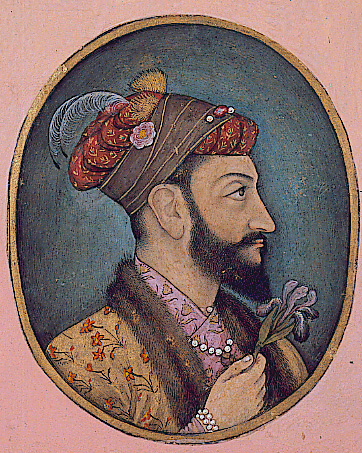
Aurangzeb, 1650
The real purpose of history is to report correctly the progress of events, which did not in all cases mark the progress towards liberty. When all this is coupled with a definite instruction for avoiding mention of violent deeds, or even such facts as militate against the concept of national solidarity or international peace, we cannot but feel that Gandhian philosophy, which sought in vain to regenerate politics by infusing morality into it, has succeeded in inoculating history with his moral ideas. It may be a laudable project, but then, I would humbly suggest that history as a subject of study be omitted from our curriculum and replaced by books containing Gandhi’s philosophy and morality.
I would cite only one more example which gives a forecast of the shape that Indian history would take in the future. The President of Section II (Medieval India) of the Indian History Congress held at Allahabad in 1965 begins his address by pointing out the chief errors of Sir Henry Elliot and other Anglo-Indian writers of Medieval India. One of these is, to quote his own words, ‘the wholly impossible and erroneous conclusion that the Musalmans, as such, were a governing class, while the Hindus, as such, were the governed’. Another error is that ‘while pointing out the crimes of the medieval kings and their governing classes they quite overlooked what was happening at the same time in contemporary Europe’.
The President then refers to ‘India’s contact with Islam which had a deep impact on social, cultural, political and economic life of the country’. The net result of this is reflected in the following successive stages in the evolution of Medieval India. First, the Turkish State of the Ilbarites; second, the Indo-Muslim State of the Khaljī and the Tughlaqs, and third, the emergence of the Indian State of the Mughals. We are told that ‘Akbar’s political outlook was an outcome of the accumulated political wisdom of the generations that had gone by and was a logical development inherent in the very nature of the situation’. Unfortunately, nothing is said about his successors, particularly Aurangzīb, though it is claimed that on account of the continuity in this cultural evolution, the Mughal empire lasted longer than the whole of the Sultanate period.
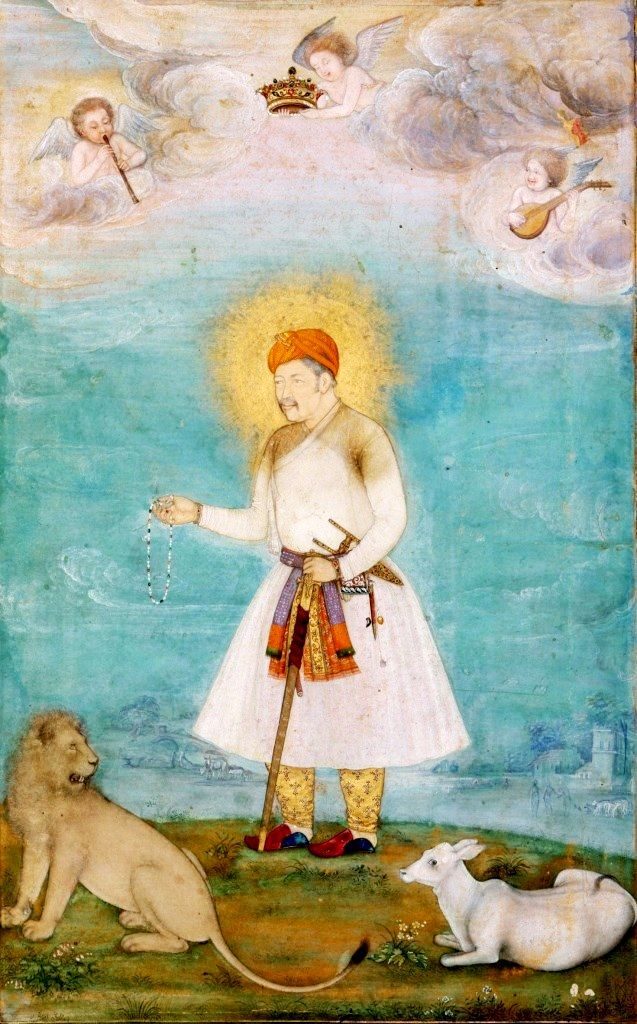
Akbar with Lion and Calf, by Govardhan
There is hardly any doubt that the modern trends of Indian historiography noted above are inspired, or at least influenced to a large extent, by the attitude of the Government in deliberately seeking to utilize history for the spread of ideas which they have elevated to the rank of national policy to their own satisfaction. They are not willing to tolerate any history which mentions facts incompatible with their ideas of national integration and solidarity. They do not inquire whether the facts stated are true or the views expressed are reasonable deductions from facts, but condemn outright any historical writings which in their opinion are likely to go against their views about such things as Hindu-Muslim fraternity, the non-existence of separate Hindu and Muslim cultures on account of their fusion into one Indian culture, etc. I mention these particular instances, as I am in a position to substantiate them by documentary evidence, but reference may be made to many other illustrations, less susceptible to positive evidence. All these things are done in the name of national policy, which is at best the policy of a political party. But it violates the only national policy, which cannot be challenged by any party, namely ‘Truth shall prevail’, the motto engraved on our national emblem. This policy also underlies the most advanced ideal of historiography, as I have discussed above, and was expressed more than fifty years ago by the greatest historian of India, Sir Jadunath Sarkar, as chairman of a historical conference in Bengal. The following is a literal English translation of the original Bengali passage: ‘I would not care whether truth is pleasant or unpleasant, and in consonance with or opposed to current views. I would not mind in the least whether truth is or is not a blow to the glory of my country. If necessary, I shall bear in patience the ridicule and slander of friends and society for the sake of preaching truth. But still I shall seek truth, understand truth, and accept truth. This should be the firm resolve of a historian.’
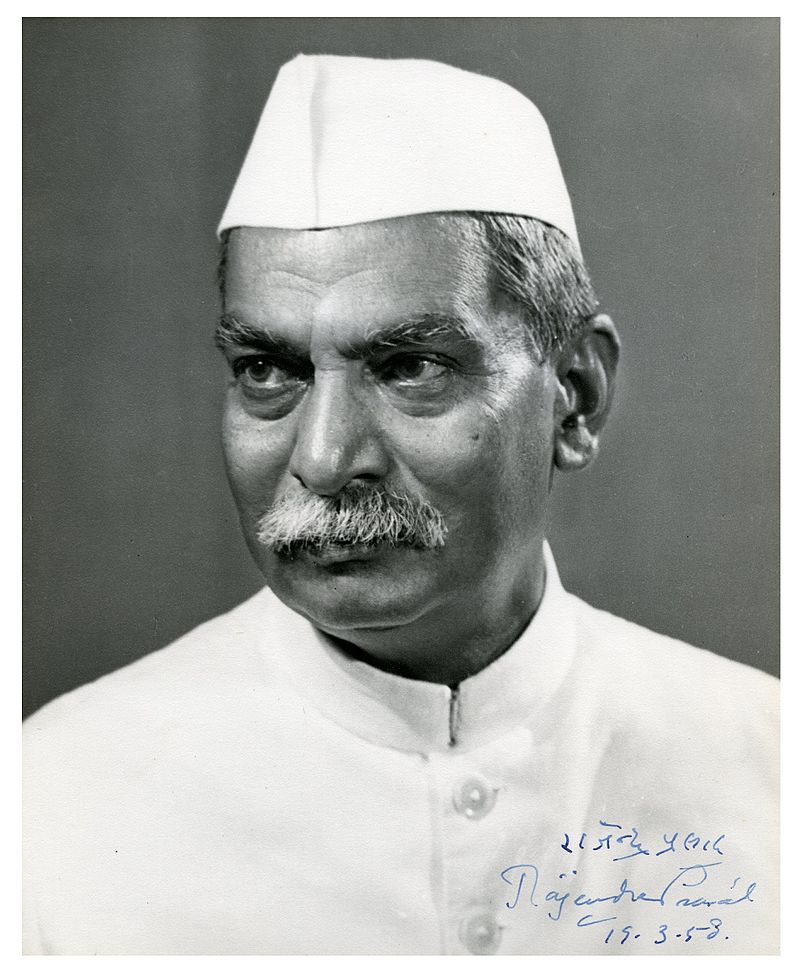
Rajendra Prasad
Later, when Dr. Rajendra Prasad launched a scheme to write a comprehensive national history of India on a cooperative basis and requested Jadunath to become its chief editor, Jadunath wrote to him on 19 November 1937: ‘National history, like every other history worthy of the name and deserving to endure, must be true as regards the facts and reasonable in the interpretation of them. It will be national not in the sense that it will try to suppress or whitewash everything in our country’s past that is disgraceful, but because it will admit them and at the same time point out that there were other and nobler aspects in the stages of our nation’s evolution which offset the former. . . . In this task the historian must be a judge. He will not suppress any defect of the national character, but add to his portraiture those higher qualities which, taken together with the former, help to constitute the entire individual.’
In his reply to the above, dated 22 November 1937, Dr. Rajendra Prasad wrote: ‘I entirely agree with you that no history is worth the name which suppresses or distorts facts. A historian who purposely does so under the impression that he thereby does good to his native country really harms it in the end. Much more so in the case of a country like ours which has suffered much on account of its national defects, and which must know and understand them to be able to remedy them.’

Jadunath Sarkar
‘I entirely agree with you that no history is worth the name which suppresses or distorts facts. A historian who purposely does so under the impression that he thereby does good to his native country really harms it in the end. Much more so in the case of a country like ours which has suffered much on account of its national defects, and which must know and understand them to be able to remedy them.’ —President Rajendra Prasad to Historian Jadunath Sarkar
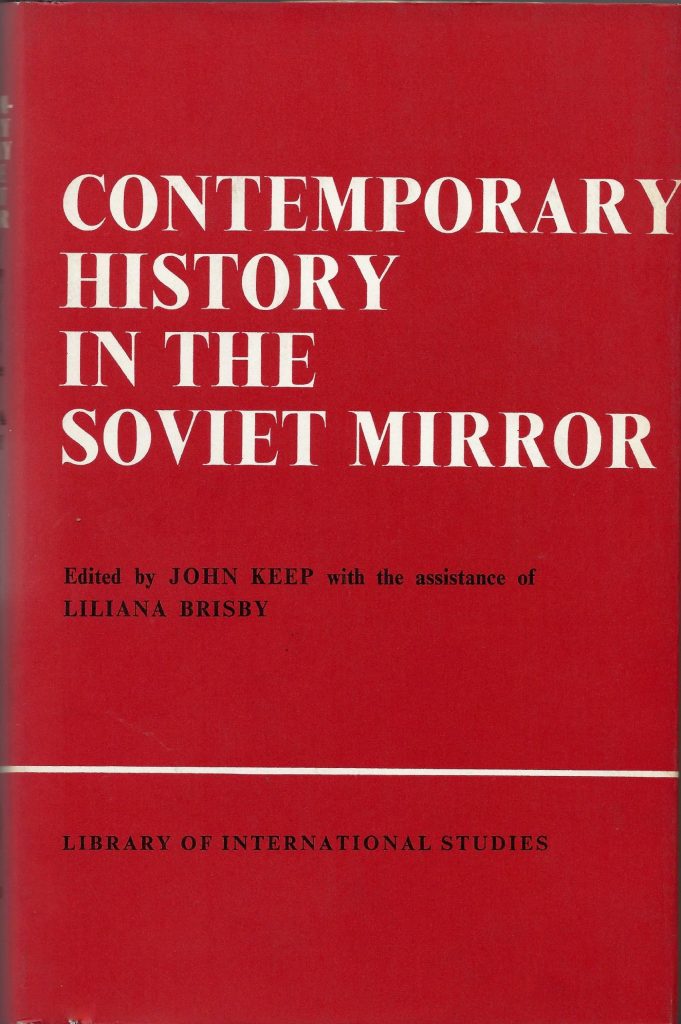
Contemporary History in the Soviet Mirror
I solemnly hope and pray that these words would be remembered by the present and future generations of Indian historians, for I see great dangers lurking ahead. I was reading recently a book entitled Contemporary History in the Soviet Mirror published in 1964. I was struck by many passages, a few of which I quote at random.
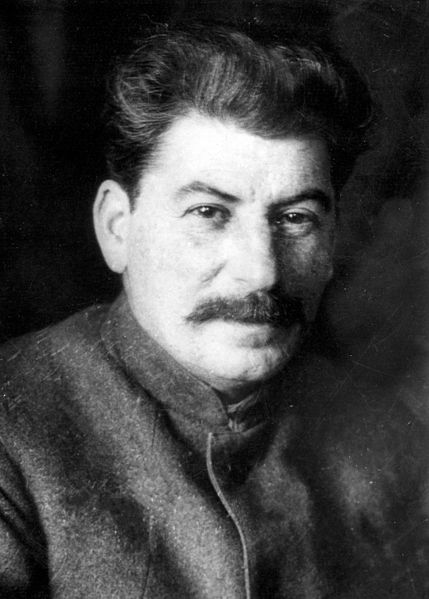
Stalin
‘The present official line in historiography is, if anything, even more militantly partisan than it was in Stalin’s day.’
‘The Soviet politicians have a narrow and utilitarian view of the functions of scholarship.’
‘Nothing could be more destructive of historical scholarship than the claim that the party is the repository of supreme wisdom. . . . In the Soviet Union today historians, like everyone else, are required to believe that, by some mysterious process unfathomable to an ordinary mortal, the party has been infallible.’
‘The partisan approach to history prevents the observer from recognizing the sanctity of objective facts and requires him, where necessary, to deny the evidence of his senses; for there are occasions when he must subordinate his own personal concept of truth to that held by an individual or group of individuals, namely the party.’
I hope it would be obvious to most people that these symptoms constitute dangerous impediments to the growth of true historiography. What is less obvious is that our country, dominated by party system, is rapidly moving towards the same tragic end.
This excerpt has been carried courtesy the permission of Swapan Dasgupta. You can buy Awakening Bharat Mata: The Political beliefs of the Indian Right here.
ARCHIVE
In 1951 a provisional parliament elected on a limited franchise voted – before a general election – to pass the first amendment to our Constitution that restricted key Indian liberties. Indian liberalism has still not recovered from this initial assault on our fundamental rights, and the precedents it set for the future. This is the story of “the first battle of Indian liberalism” and the “unlikeliest of characters” on either side of the battle lines.
“They would say ‘means are after all means’. I would say means are after all everything… There is no wall of separation between means and end.”
—Mohandas Karamchand Gandhi
Let us begin with the introduction of Tripurdaman Singh’s book Sixteen Stormy Days: The Story of the First Amendment to the Constitution of India, which takes us back to 1951, when India had a provisional parliament elected on a limited franchise. (Members of the former constituent assembly were members of this provisional parliament. The franchise was ‘limited’ because they had been elected indirectly by members of the provincial assemblies. Also, the provisional parliament consisted of one house instead of two. This state of affairs carried on till 1952, when the country’s first general elections were concluded and a parliament was elected directly by the people of India.)
Prime Minister Jawaharlal Nehru declared that while fundamental rights, individual liberty and freedom were ideas that had dominated the nineteenth century, they were now overtaken by the bigger and better ideas of the twentieth: dynamic social reform and social engineering, enshrined in the Directive Principles of State Policy as well as the programmes of the Congress party (Jawaharlal Nehru, 16 May 1951, Parliamentary Debates, Part II, Vol. XII, p. 8822).
But for ideas like “Land reform, zamindari abolition, nationalization of industry, reservations for ‘backward classes’ in employment and education” to see the light of day, many a hurdle remained to be crossed. Add to this the fact that a “pliant press”, as Nehru had probably hoped for, was not forthcoming and nothing could be done about this. “Armed with Part III of the new constitution—guaranteeing the fundamental rights of citizens—zamindars, businessmen, editors and concerned individuals had repeatedly taken the Central and state governments to court over their attempts to curtail civil liberties, regulate the press, limit upper-caste students in universities and acquire zamindari property,” writes Singh. “Over the fourteen months the constitution had been in force, the courts had come down heavily on the side of the citizens and struck mighty blows against the government.”
To cite a few examples, the government’s attempt to censor The Organiser (an RSS newspaper) and Cross Roads (a left-leaning weekly) had been countermanded. Laws used to censor and punish the press had been declared void by the Supreme Court because of the violation of the freedom of speech. The Allahabad High Court had passed injunctions restraining the government from implementing the newly passed Zamindari Abolition Act. The Patna High Court had declared the State Management of Estates and Tenures Act to be ultra vires of the constitution for violating Articles 14 (the right to equality) and 31 (the right to property). The Central Provinces and Berar Regulation of Manufacture of Bidis Act, which controlled and regulated bidi production, was held void by the Supreme Court because it violated the right to carry on any trade or profession. The Madras High Court struck down the ‘Communal Government Order’ granting caste-based reservations in educational institutions for contravening Article 15(1) preventing discrimination on caste, communal, racial and linguistic grounds. The Supreme Court upheld this decision and also struck down communal reservations in government jobs.
And yet, even as “the Congress programme to remake India” encountered such “formidable roadblocks”—“fundamental rights guaranteed by the Constitution, tenacious citizens, a belligerent press and a resolute judiciary determined to vigorously uphold fundamental freedoms”—the country’s first general elections were looming close (eventually held at the end of 1951, and carrying on into 1952).
A major problem for the Congress, as Nehru stated in a note to the Home Ministry (25 July, 1950, Selected Works of Jawaharlal Nehru, edited by Sarvepalli Gopal, Vol. 14/2, p. 223) was explaining the situation to the people. “Having raised their expectations and asked them to believe in the promises of Congress leaders, how were they to now go back to them and explain legal and constitutional niceties?” Singh writes. “Who was going to tell the people that the word of the government and the prime minister was not the law, that there was now a greater power, the Constitution of India? And what might happen if they did?”
Nehru wrote to his chief ministers: “It is impossible to hang up urgent social changes because the Constitution comes in the way… We shall have to find a remedy, even though this might involve a change in the Constitution.”
And so, eventually, the prime minister introduced the Constitution (First Amendment) Bill in Parliament on 12 May, 1951. Singh sums up the bill in a nutshell. If passed, it would:
– “introduce new grounds on which freedom of speech could be curbed— public order, the interests of the security of the state” (originally the grounds “had been limited to libel, slander and defamation, contempt of court and anything that undermined the security of the state or tended to overthrow it.”);
– it would “enable caste-based reservations by restricting the right to freedom against discrimination from applying to government provisions for the advancement of backward classes”;
– it would “circumscribe the right to property and validate zamindari abolition by adding two new articles empowering the state to acquire estates without paying equitable compensation and ensuring that any law providing for such acquisition could not be deemed void even if it abridged this right”;
– and, finally, it would “introduce a special schedule where laws could be placed to make them immune to judicial challenge even if they violated fundamental rights”.
Singh also outlines how the vision of a constitution of India that defended the “personal liberties of individual Indians” had been a crucial demand of the nationalist struggle for independence: “From the time the demand was first articulated in 1895 through the Constitution of India Bill (popularly called the Swaraj Bill and rumoured to have been authored by Bal Gangadhar Tilak), through the Commonwealth of India Bill in 1925, the Motilal Nehru Report in 1928 and the Purna Swaraj resolution of 1930, the journey had been long and arduous.” Further, he elaborates on how, when the new Constituent Assembly first convened at 11 am on 9 December 1946, “no one had been in doubt as to the momentous nature of the task at hand”. Dr. Bhim Rao Ambedkar described individual rights and their safeguards as the “very soul of the Constitution and the very heart of it”. “Indeed if I may say so,” he had asserted in the Constituent Assembly. “If things were to go wrong under the new Constitution, the reason will not be that we had a bad Constitution. What we will have to say is that man was vile.”
And yet, the Constitution (First Amendment) Bill was passed, and the changes ran so deep that the consequent constitution was called “the second constitution” or “the Nehruvian constitution” by legal historians like Prof. Upendra Baxi.
Singh’s book is the story of how the Constitution went from “being a charter for freedom for India’s people and the fulfilment of their dreams in 1950 to an impediment in the way of the will of the same by 1951”. The chapter we have chosen to carry here below, on Republic Day, called ‘The Battle Rages’, is the story of how things played out, in the provisional parliament and outside it, in the final days of the old constitution. The chapter begins with the Speaker G.V. Mavalankar, like the President Rajendra Prasad, expressing his objections over the Constitution (First Amendment) Bill to Prime Minister Nehru and ends with the bill being passed. It’s gripping account of events gives the reader a sense of being in the middle of history as it is being made (or unmade, as the case may be) as well as the occasional vantage point from which to analyse this history.
The chapter, like the book, also questions “easy dichotomies that have traditionally been drawn… between liberal and authoritarian visions of India” which are “more than blurred when taken up for closer examination”. Singh, calling the battle over the first amendment “the first battle of Indian liberalism” writes about the “unlikeliest of characters” making up the list of the first defenders of our individual rights and freedoms: “Hindu nationalists like S.P. Mookerjee and M.R. Jayakar, Gandhian stalwarts like Acharya Kripalani, committed socialists like Shibban Lal Saksena and Jayaprakash Narayan, conscientious Congress rebels like H.V. Kamath, Syamnandan Sahay and K.K. Bhattacharya, jurists like Pran Nath Mehta and M.C. Chagla, press associations, editors, lawyers and businessmen; men whose ideological and editorial successors today might scarcely believe (but would do well to remember) that their predecessors held the views they did.” And on the other side, pushing for this amendment, we have champions of freedom like Prime Minister Nehru and Law Minister Ambedkar who were holding strong on the magnificence of the Constitution and sanctity of fundamental rights less than a year or two before the amendment was presented in parliament. “It (the book) is the story of how the Government of India discovered that mouthing platitudes to civil liberties was one thing, and upholding them as principles quite another. It is the story of how the primacy of a government’s social agenda over the Constitution and individual freedom was affirmed.”
So let us come back to where we began – the question of ends and means – and examine quickly the legacy of the first amendment and its passing and where it has left us today:
– The moral precedent set by the passing of such an amendment by a provisional parliament, elected on a limited franchise, even as the country’s first general elections are just around the corner, is unconscionable to say the least.
Further, there was the question of there being only one house in this parliament. President Prasad had written to Alladi Krishnaswamy Aiyar before giving his assent to the Bill. Singh writes:
“The problem as he saw it was twofold. First, the provisional parliament only had one House whereas Article 368, which gave Parliament the power to amend the Constitution, required a two-thirds majority in both Houses. Was a single chamber provisional parliament then competent to amend the Constitution?
“Second, the government had got around this difficulty by adapting Article 368 to temporarily refer to Parliament rather than two separate Houses by using the Constitution (Removal of Difficulties) Order No. 2—issued by the president on 26 January 1950 (under powers granted to him by Article 392) to make minor adaptations to the Constitution in order to remove any procedural difficulties that arose before a full Parliament was elected. Could this adaptation itself be ultra vires since, under the guise of removing difficulties, it effectively (albeit temporarily) amended Article 368 without adhering to the amending procedure as the article itself required?”
Aiyar’s reply is not on record. Historian Granville Austin notes that, “Earlier, when Prasad had addressed him with such concerns, Aiyar had told him he must give his assent.” Prasad assented to the bill on 18 June, 1951.
– This chapter shows how the Speaker Mavalankar, the opposition leader Mookerjee and the All India Newspaper Editors Conference (AINEC) pushed emphatically for the solicitation of a “wide range of public opinion” before such a drastic move. The passing of such a major amendment without the inviting of this “wide range of public opinion” set a dangerous precedent that has been followed, in varying degrees, by many Indian governments since, including the current one.
– The creation of a (Ninth) schedule where laws could be placed to make them immune to judicial review, was problematic in two respects: it took away the teeth of the judiciary, blatantly infringing upon the principles of ‘separation of powers’ and ‘checks and balances’ and, as members of parliament have been shown to point out in this chapter: “The experience gained under the Constitution was insufficient to justify an amendment, they did not have the texts of the laws to be validated [laws that would be placed in the Ninth Schedule].”
– The worst and most direct legacy of the first amendment is the chilling impact it has had, and continues to have, on free speech in India. Singh writes: “Activists, human rights figures, intellectuals, writers, historians, politicians, journalists and even comedians have often faced the brunt of a repressive state and onerous laws, for which the enabling constitutional infrastructure was built by this amendment in 1951.” Let us take the example of Section 124A of the Indian Penal Code, which deals with sedition. “Not even its most prominent critics ever note that the founding fathers of the Constitution of India did not intend for it to remain on the statute books. It had found no constitutional support in the original Constitution,” writes Singh. “It was revalidated in 1951, despite intense opposition, by the introduction of new grounds under which free speech could be curtailed— ‘the interests of the security of the state’ rather than undermining the security of the state or overthrowing it. Far from being a simple remnant of colonialism, sedition is the outcome of the first amendment of the Constitution.”
Readers would do well to view the argument against the first amendment – as laid out in this chapter and this book – through an intrinsic lens, instead of an ideological one. It speaks not to the question of what you think of the social agenda of the government of the time (eg. the abolition of the zamindari, land reform, nationalization, reservations for social and educationally Vs. economic backward classes) but to the question of whether you believe that due process and free speech should be the irrevocable cornerstones of a democracy.
For, if you don’t, and believe instead in a revolution that can build a new order on a foundation that excludes these cornerstones, do keep in mind that any order built without these two cornerstones – due process and free speech – can just as soon crumble or be reversed.
The reversal might well employ similar authoritarian weapons, premeditated around a disregard for due process and free speech.
“India has often been said to be flirting with authoritarianism,” Singh writes at the conclusion of his book. “Yet, this was not always so. There was once a time, before authoritarianism became enshrined in its Constitution, when India also flirted with liberalism. At that moment, Mookerjee had warned Nehru to stick with the original Constitution, that he was creating legal tools that would one day be wielded by his opponents, that his rule or that of his ideological co-travellers would not be eternal. It is a warning that every government and every citizen would do well to remember.”
The Battle Rages
A vigorous defence
On the evening of 15 May 1951, the evening before fireworks began in Parliament, Speaker G.V. Mavalankar wrote to Prime Minister Nehru to express his objections to the proposed amendments. Echoing the critics outside the Congress, Mavalankar thought the amendment ill-timed and unnecessary in the present circumstances. Like the president, he didn’t believe there was any pressing need to curb free speech, and even if there was, the amendment must not be pushed through without soliciting a wide range of public opinion. He also found the changes to Article 31 a grave infringement which would effectively deprive the individual of all fundamental rights in relation to property, on which, he argued, most peaceful progress and social reorganization depended.
‘We have felt the urgency of having some such amendment because the situation in the zamindari areas is becoming increasingly difficult,’ replied Nehru. ‘We are on the eve of what might be called a revolutionary situation . . . It is in our opinion, very important that rapid effect should be given to the Zamindari Abolition Acts.’ ‘Any attempt to postpone this measure rather indefinitely may well lead to very serious consequences,’ he admitted to the Speaker. ‘For the Congress it would be fatal, because they would have failed in their primary objectives. I feel therefore that any circulation of the Bill involving long delays would be unjustified and possibly dangerous.’ Coming straight from the metaphoric horse’s mouth, it was a remarkably candid admission about the cause of the prime minister’s frenzied rush towards an amendment, and confirmation of the Opposition’s charge that the Constitution was being changed to suit the Congress party. Much like the president, the Speaker ultimately also found his objections curtly brushed aside.
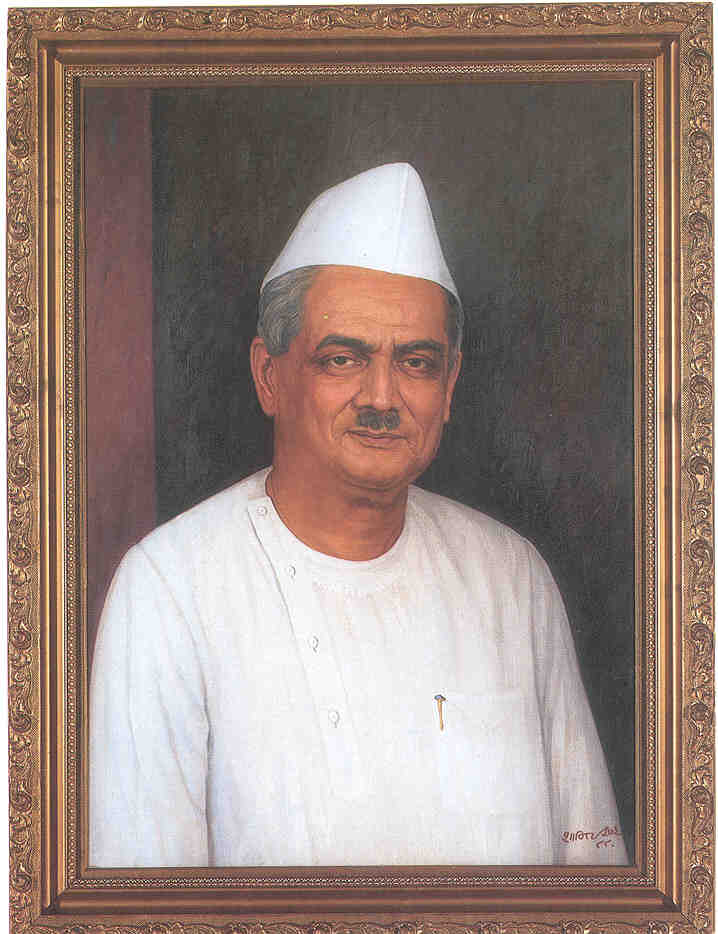
Speaker G.V. Mavalankar
Of the continuing parliamentary debate over 17 and 18 May, the Times of India reported:
Whatever of the Prime Minister’s imperative to Parliament to amend the Constitution survived the incisive logic of criticism yesterday was today well and nigh totally demolished by the formidable tide of argument that flowed from Congressmen and Independents alike, which not one supporter of the Bill was able to adequately answer.’
Despite supportive speeches from Congress leaders like Renuka Ray, Krishna Chandra Sharma and M.P. Mishra—who even contended that there was no need to elicit any public opinion because ‘no public opinion can be more weighty than the will of the Members of this Parliament’—Nehru was eviscerated by his opponents, who, according to press reports, ‘decimated the force’ of his arguments. Such opponents included not only independent members like H.N. Kunzru and Ramnarain Singh and Opposition figures like Hussain Imam, but also—to Nehru’s surprise and discomfiture—renegade Congressmen like Deshbandhu Gupta, H.V. Kamath and Syamnandan Sahay.
‘We have felt the urgency of having some such amendment because the situation in the zamindari areas is becoming increasingly difficult,’ replied Nehru. ‘We are on the eve of what might be called a revolutionary situation . . . It is in our opinion, very important that rapid effect should be given to the Zamindari Abolition Acts.’ ‘Any attempt to postpone this measure rather indefinitely may well lead to very serious consequences,’ he admitted to the Speaker. ‘For the Congress it would be fatal, because they would have failed in their primary objectives. I feel therefore that any circulation of the Bill involving long delays would be unjustified and possibly dangerous.’ Coming straight from the metaphoric horse’s mouth, it was a remarkably candid admission about the cause of the prime minister’s frenzied rush towards an amendment, and confirmation of the Opposition’s charge that the Constitution was being changed to suit the Congress party.
Kunzru declared that Articles 19 and 31 were not being amended, they were effectively being repealed, and if passed, the new article would extinguish freedom of speech and expression almost entirely. There was only one reason for this extraordinary course of events: the upcoming general election. H.V. Kamath suggested ‘that what needed amending was not the Constitution, but the policies of the Government’. The blanket validation of land reform legislation and the creation of the Ninth Schedule constituted, in his opinion, ‘nothing short of midsummer madness’. Hussain Imam described the amendment as ‘laying the foundations of an authoritarian state’ and Syamnandan Sahay thought it tragic that the Constitution was being reduced to the level of ordinary legislation. Deshbandhu Gupta charged the prime minister with showing little faith in the people of the country, who, according to the Preamble to the Constitution of India, more than any Parliament, had given themselves the Constitution as a charter of freedom.
The government found itself struggling to answer the simplest questions: If they did not desire to use any of the enabling provisions of the amendment, then what was the hurry? If the Supreme Court hadn’t pronounced any verdict on zamindari abolition, where was the need to change the Constitution? Why was the government so keen to circumscribe freedom of expression? What was the imminent threat that Nehru kept referring to? Why were they so disinclined to set a positive example and create exemplary democratic traditions? Unable to face the heat, the government wheeled out Law Minister B.R. Ambedkar to mount a vigorous defence.
In a nearly two-hour-long speech, Ambedkar assured the House that the government did not intend to misuse any of the powers it was acquiring, and the amendment was only meant to arm Parliament with the power to pass certain legislation when necessary rather than enact any specific laws in the immediate future. He reiterated Nehru’s spiel that judicial pronouncements were ‘utterly unsatisfactory’ and not in consonance with the Constitution—especially the invalidation of the Communal GO and the policy of quotas—and that the government was committed to fulfilling its obligations as enumerated in the directive principles. New restrictions on free speech were necessitated by the refusal of the Supreme Court to interpret into the Constitution the doctrine of ‘inherent police powers’ like the United States, he argued. In order to secure itself from threats and fulfil its obligations, he maintained, it was vital that the Constitution be amended.

Law Minister Dr. Bhim Rao Ambedkar
Keen critics of the proposed Article 31B, which created the Ninth Schedule as a constitutional vault for land reform legislation, Naziruddin Ahmed, Syamnandan Sahay and H.V. Kamath questioned Ambedkar on the need for such an outrageous constitutional device to provide blanket protection to bad and possibly unconstitutional laws. ‘Just imagine the amount of burden that would be cast upon myself, on the Law Ministry, the Food and Agriculture Ministry and other Ministries involved if we were to sit here and examine every section of each of these Acts to find out whether they deviate,’ came Ambedkar’s terse reply. A more graphic revelation of the government’s unending search for short cuts and its apathetic and lackadaisical attitude would have been hard to find.
The government found itself struggling to answer the simplest questions: If they did not desire to use any of the enabling provisions of the amendment, then what was the hurry? If the Supreme Court hadn’t pronounced any verdict on zamindari abolition, where was the need to change the Constitution? Why was the government so keen to circumscribe freedom of expression? What was the imminent threat that Nehru kept referring to? Why were they so disinclined to set a positive example and create exemplary democratic traditions? Unable to face the heat, the government wheeled out Law Minister B.R. Ambedkar to mount a vigorous defence.
In his closing speech requesting MPs to refer the bill to the Select Committee, Nehru too spoke with fervour in defence of the amendment to Article 15 and continued to dwell on the confusion caused by the contrary judgments of the Allahabad and Patna High Courts—an obviously disingenuous turn of phrase. ‘This business of equality before the law,’ he exclaimed,
. . . [Is] a dangerous thing . . . and it is completely opposed to the whole structure and method of this Constitution and what is laid down in the Directive Principles . . . I am not changing the Constitution by an iota . . . I am merely giving effect to the real intentions of the framers of the Constitution and the wording of the Constitution.
An overwhelming majority of MPs did in the end vote to send the bill to the Select Committee, with instructions to report back on 23 May. Only two votes were cast against Nehru’s motion, demonstrating yet again the prime minister’s firm grip on the Congress Parliamentary Party. The measure clearly had the support of a substantial number of Congress MPs. But the ferocity of the debate, the equivocation from several Congressmen—particularly with regards to freedom of speech—and outright hostility from others, also brought home to Nehru that he was in for stormy days ahead, even if Congress MPs remained subservient for the moment.
The dramatic resignation of Acharya Kripalani from the Congress amid the ongoing parliamentary combat heightened this sense of tension. Declaring war on the government, Kripalani announced his intention to bring all Opposition forces into one fold. Some even speculated that another high-profile resignation from Communications Minister Rafi Ahmed Kidwai, a member of Kripalani’s dissident Democratic Front, could soon follow. Eventually, no such schism surfaced and Kidwai and other supposedly dissident members remained loyal to Nehru.
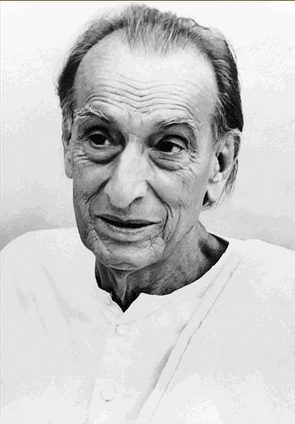
Acharya Kripalani
When the Congress Parliamentary Party met two days later, however, a formal motion to drop the proposed amendment to Article 19 was moved by Deshbandhu Gupta. It was easily defeated. But the fact that it was suggested and voted on at all was an unambiguous indication to the ‘high command’ that it could not rely blindly on the support of all its MPs; that many of them were getting restive about the assault on the freedom of speech and on the constitutional ideals that they themselves had helped shape. The unceasing criticism was also getting to Nehru. ‘I think much of the criticism is misconceived,’ he wrote to his chief ministers. ‘There is a strange fear in the minds of some that Parliament might misbehave and therefore should not have too much power given to it.’ None bothered to tell him that such a robust fear of excessive executive power was the bedrock of liberal democracy.
A twelve-member delegation of the All India Newspaper Editors Conference (AINEC) led by its president—the same renegade Congress MP Deshbandhu Gupta—also met the prime minister on 20 May to press its demand that the government drop the proposed amendments in the present circumstances or postpone it to a later date so that ‘public opinion may be fully elicited on the subject’. The doyens of the press were told by the prime minister that while the government was not prepared to meet either demand, it would nevertheless try to modify the amendment to try and mitigate their concern. Many wondered, was the unrelenting pressure forcing him to soften his stand? AINEC remained unconvinced.
When the Congress Parliamentary Party met two days later, however, a formal motion to drop the proposed amendment to Article 19 was moved by Deshbandhu Gupta. It was easily defeated. But the fact that it was suggested and voted on at all was an unambiguous indication to the ‘high command’ that it could not rely blindly on the support of all its MPs; that many of them were getting restive about the assault on the freedom of speech and on the constitutional ideals that they themselves had helped shape.

Supporting the First Amendment in Parliament: Top Row, Left to Right – Jawaharlal Nehru, B.R. Ambedkar, Seth Govind Das, Renuka Ray, Joachim Alva; Bottom Row, Left to Right – Tribhuvan Narayan Singh, Frank Anthony, Jerome D’Souza, Rafi Ahmed Kidwai, Krishna Chandra Sharma
The interlude
From Parliament, the Constitution (First Amendment) Bill now made its way to the Select Committee. Much like Parliament itself, the Select Committee was dominated by the Congress party. Having weathered the torrid debate in the House, Congress members were confident of passing this hurdle with relative ease. Opposition leaders Syama Prasad Mookerjee, H.N. Kunzru, Sardar Hukam Singh, K.T. Shah and Naziruddin Ahmed, who made up a small but vocal and vociferous minority, were equally determined to mount a strenuous defence of fundamental rights and civil liberties. Both supporters and detractors of the bill now waited with breathless anticipation for the Select Committee’s report to appear and settled down to a brief interlude.
Meanwhile, outside the corridors of power, the emotionally charged debates in Parliament provoked an ever-growing torrent of adverse opinion. As the committee deliberated on the clauses of the amendment, vehement criticism from pressmen, businesses, lawyers, civil society groups and political figures alike continued to flood the pages of newspapers and the government’s undue haste and lack of respect for democratic propriety became a common topic of public discussion.
The Supreme Court Bar Association took the lead by denouncing the amendment and demanding that the executive function within the limits prescribed by the Constitution. Assembled lawyers appealed to all ‘public bodies who believe in civil liberties and particularly freedom of speech and expression’ to ‘mobilize public opinion and express themselves in unequivocal terms’. Following in its footsteps, the Nagpur High Court Bar Association ‘passed a resolution expressing its emphatic view that the proposed amendments were improper, unjustified, highly undemocratic and opposed to the fundamental rights of the citizens of India’. Former judges like N.C. Chatterjee of the Calcutta High Court and S.P. Sinha of the Allahabad High Court also inveighed against the measure and gave public statements castigating the government.
The Progressive Group, Bombay—a liberal organization consisting mostly of Muslims and Parsees—challenged the competence of a provisional parliament elected on a limited franchise and opposed any amendment of the Constitution before a general election. The All India Newspaper Editors Conference, unconvinced by Nehru’s assurances to its delegation, restated its demand for the complete withdrawal of the proposed amendment to Article 19 and the freedom of speech and expression. The Standing Committee of AINEC ‘placed on record its considered opinion that the proposed amendment (was) unwarranted and uncalled for, and hoped that the representations made by the President would persuade the Government to reconsider their attitude’.
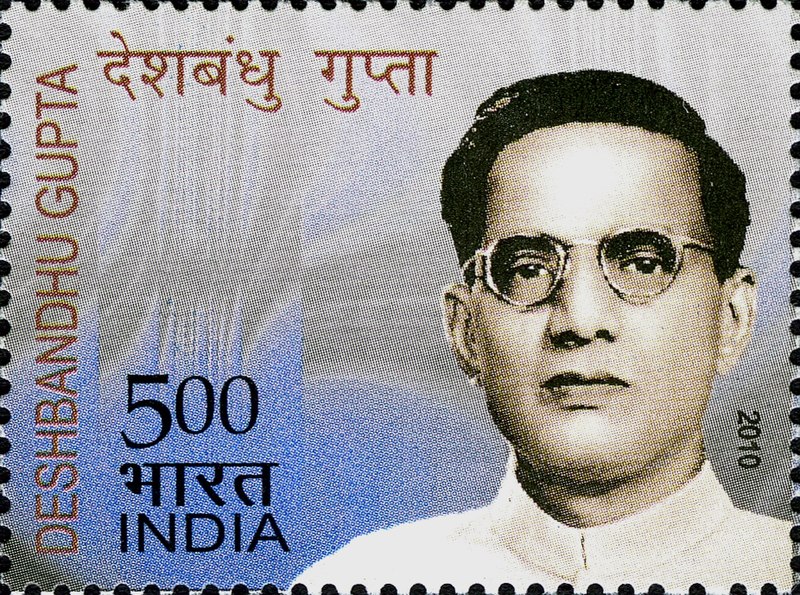
Deshbandhu Gupta
Nehru, concerned at the reactions in the press, invited major editors and correspondents—Devadas Gandhi of Hindustan Times, Ramnath Goenka of the Indian Express and Shiva Rao of The Hindu—for a briefing with him. It did little to stem the tide of disapproval. In private correspondence, Deshbandhu Gupta informed the prime minister that his verbal assurances lacked any constitutional validity, and to give concrete form to them, suggested the inclusion of a new clause in the Constitution guaranteeing the freedom of the press—something akin to Article 1 of the American Constitution. ‘These wide powers [which the government was appropriating via the amendment],’ Gupta maintained, ‘were an open invitation to parliamentary majorities to abridge the freedom of the press.’ Nehru promptly rejected Gupta’s suggestions out of hand.
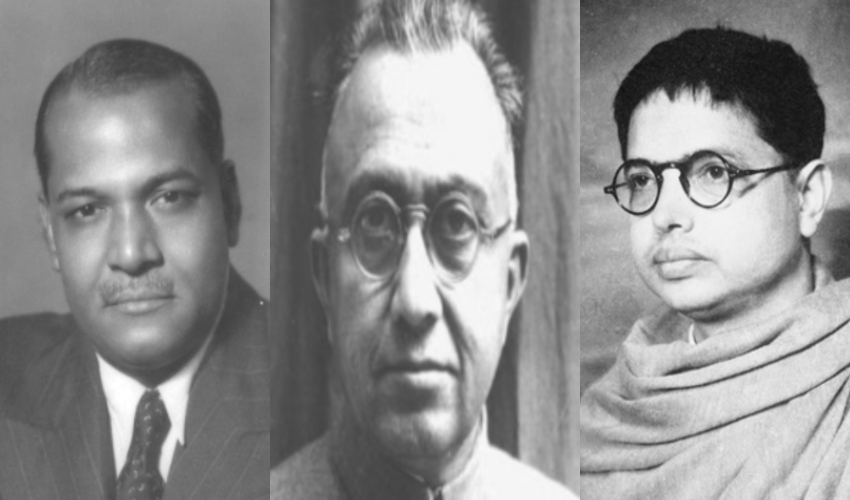
Left to Right: Ramnath Goenka of the Indian Express, Shiva Rao of The Hindu, Devadas Gandhi of Hindustan Times
In Kanpur, the tremendously well-respected elder statesman Sir Jwala Prasad Srivastava, former cabinet minister, former member of the Viceroy’s Executive Council and former member of the original Constituent Assembly, stated that the proposed amendments ‘were ill-timed, inept and ill-advised’ and warned that they ‘sought to take away the guarantees in the Constitution’. An interesting aside: Srivastava’s son-in-law Minocher ‘Minoo’ Masani would one day found the Swatantra Party and become one of Nehru’s fiercest critics, leading the liberal fightback against Congress dominance.
The Progressive Group, Bombay—a liberal organization consisting mostly of Muslims and Parsees—challenged the competence of a provisional parliament elected on a limited franchise and opposed any amendment of the Constitution before a general election… ‘These wide powers [which the government was appropriating via the amendment],’ [Deshbandhu] Gupta maintained, ‘were an open invitation to parliamentary majorities to abridge the freedom of the press.’ Nehru promptly rejected Gupta’s suggestions out of hand.
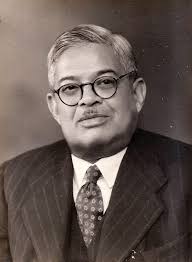
Sir Jwala Prasad Srivastava
Within the fourth estate, reactions to an amendment that placed ‘the press literally at the mercy of bureaucratic whims’ were universally condemnatory and vituperative, with open declarations that the ‘press will and must organize its resources to fight this encroachment on fundamental freedoms.’
One writer railed:
Public order is the foundation of a stable state. But to empower governments with the expansive right to abridge freedom of expression in matters pertaining to public order is surely to strike at the roots of democratic rule and life . . . Tomorrow a communist government under cover of the proposed amendment to restrict free comment on foreign affairs might dragoon the press into bowing to the behests of the Kremlin . . . In the name of public order a dictatorial administration . . . may scotch all opposition to itself by a blanket ban on criticism against the Government on the ground that this is likely to undermine public order. These are the dangers to democracy and democratic rule inherent in the new amendments.
‘The whirling of time has indeed brought forth its revenges’ mused another senior commentator.
Those who in former times championed most vociferously freedom of speech and expression, having now settled down in the seats of power, see no incongruity in themselves proposing to impose more rigid restrictions upon them. Clearly they show no understanding of the nature of freedom.
‘If further restrictions are to be imposed’ he asked the government,
[It] must surely be shown that because of the absence of these restrictions our friendly relations with foreign governments have been imperilled, public order has been endangered and there has been widespread incitement to offences. So far as one can make out from the debates, there has been no attempt to show that throughout the country conditions have been such as to necessitate these changes. All we find is mention of a few judicial pronouncements—occasionally even judicial obiter dicta—from which it is argued that the changes are necessary.
Without the amendments of Articles 15 and 31, ‘certain inconveniences will undoubtedly be caused to the party in power, certain policies sponsored by the party will not show all the results expected from them, and this may cause the electorate in certain areas to be not too enthusiastic in its support,’ he argued. ‘But surely these furnish no reasons for forcing through fundamental changes . . .’
The legal correspondent for the Times of India accused Law Minister Ambedkar of trying to be too clever by half in censuring the Supreme Court for refusing to support his doctrine of ‘implied police powers’ and published long extracts of his speeches to the Constituent Assembly in 1948 to demonstrate how he had gone back on his own claims. In 1948, Ambedkar had categorically asserted before the Constituent Assembly that instead of formulating fundamental rights in absolute terms and depending on the Supreme Court to invent the doctrine of ‘police powers’ and read limitations into them (as happened in the United States), they were going to directly write such restrictions into the Constitution itself, forestalling the need or the ability of the Supreme Court to invent any doctrines. Having made such a statement in the Constituent Assembly, in the correspondent’s opinion, for the law minister to now demand ‘implied police powers’ was nothing short of dishonesty.
Without the amendments of Articles 15 and 31, ‘certain inconveniences will undoubtedly be caused to the party in power, certain policies sponsored by the party will not show all the results expected from them, and this may cause the electorate in certain areas to be not too enthusiastic in its support,’ he [a senior commentator] argued. ‘But surely these furnish no reasons for forcing through fundamental changes . . .’
The legal correspondent for the Times of India accused Law Minister Ambedkar of trying to be too clever by half in censuring the Supreme Court for refusing to support his doctrine of ‘implied police powers’ and published long extracts of his speeches to the Constituent Assembly in 1948 to demonstrate how he had gone back on his own claims.
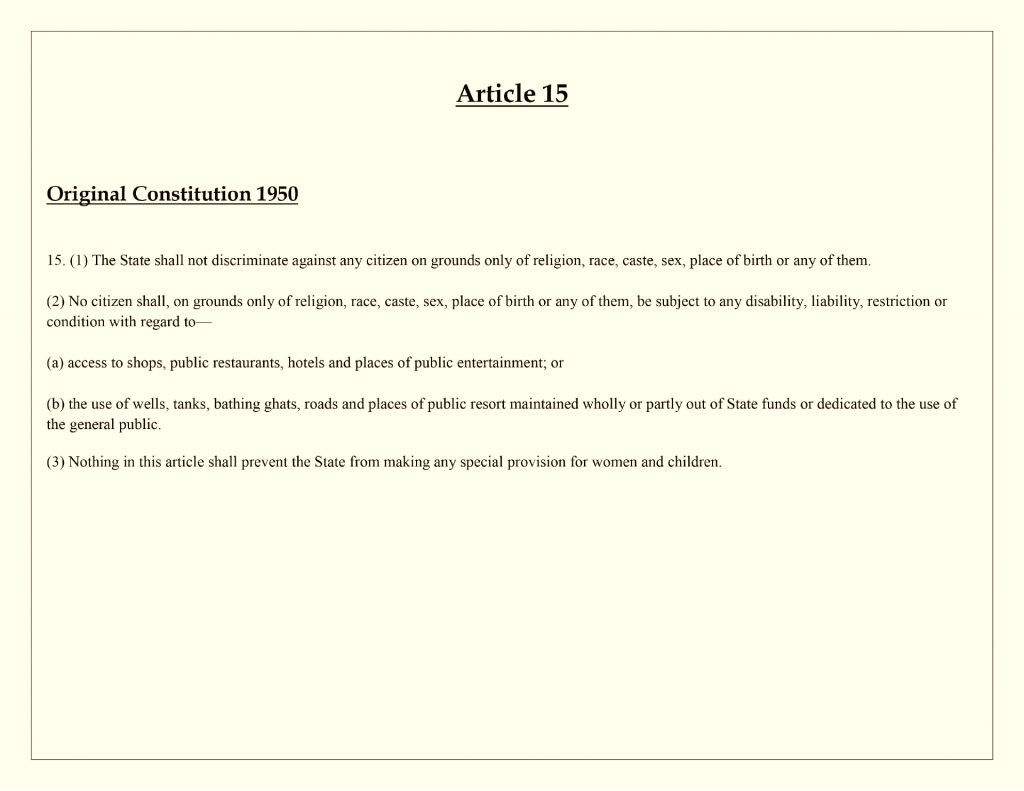
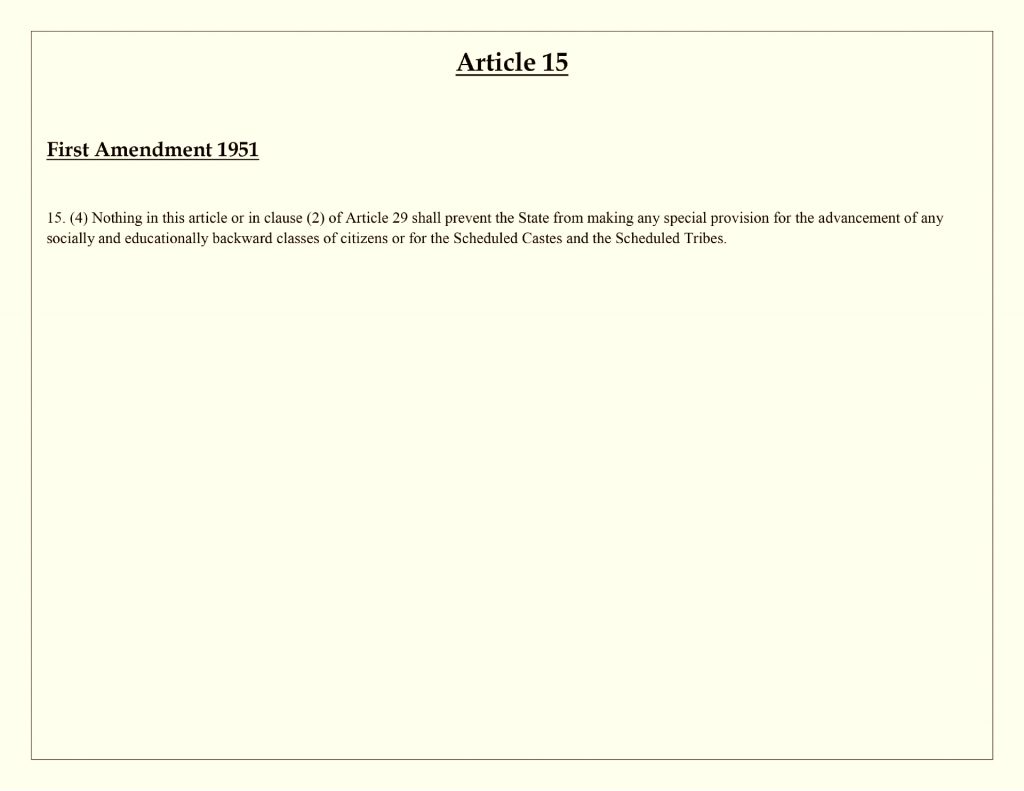
‘In supporting the Constitution (First Amendment) Bill the prime minister stated, inter alia, “it was not to be used by the present Government but will be handed down as a legacy to future parliaments,” wrote an irate citizen from Bombay in a letter to a major newspaper. ‘Then what is the necessity of introducing it in the present Parliament? If, as Mr Nehru admits, “nothing could be static or unchanging” and the situation may alter radically, it is hardly fair to act presumptuously towards the next Parliament.’
The spate of criticism and adverse opinion, incessant and implacable, momentarily shook the prime minister. Within the Select Committee, he came under increasing pressure on the issue of freedom of speech and expression, on which a growing number of Congressmen disagreed with him. Many supporters pressed him to include the phrase ‘reasonable restrictions’ to allow any of the restrictions placed to be justiciable rather than grant the government blanket and arbitrary powers to curb free speech and completely exclude any possibility of judicial review. Nehru, who self-confessedly wanted to circumscribe the judiciary’s power and show the judges their place in the pecking order, recoiled at this advice.
‘I confess I do not like the word “restriction” or “reasonable” added to it,’ he wrote to T.T. Krishnamachari, Congress MP from Madras and former member of the Drafting Committee in the Constituent Assembly.
So far as I can see, the courts have always had the right to consider any legislation . . . It is true that if this amendment is passed, they will be somewhat restricted in their interpretation. But I feel that putting in the word “reasonable” would be an invitation for every such case to go to the courts with ensuing uncertainty.
In the prime minister’s own words, he did not want the restrictions on the freedom of speech to need to pass any test of reasonableness. He wanted to exclude the courts from adjudicating on them altogether. The word or the idea of restrictions may not have appealed to him very much, but the idea of them being reasonable appealed to him even less. It was a strangely contradictory position to take: to dislike restrictions but want them to be overarching and non-justiciable when written into the Constitution. Between the fundamental rights of the country’s citizens and the prime minister’s single-minded devotion to remaking India in his own image, the latter was the undeniable victor.
Resistance, rebellion and sleight of hand
The Select Committee finished its deliberations on the evening of 22 May 1951. By Nehru’s own account, Opposition figures forced extensive discussions on every single issue, often compelling the committee to meet both in the morning and in the afternoon to complete its work. Article 19 and the freedom of speech remained a major bone of contention. ‘I feel quite exhausted,’ the prime minister confessed at the end of four days of deliberations.
Outside, the storm of criticism refused to abate. Under fire from the press, the commentariat and the Opposition, large numbers of Congress MPs began to vacillate on the extent of their support for Nehru’s line, particularly the attack on Article 19. When the Congress Parliamentary Party met on 23 May to take stock of the situation, the prime minister was presented with a petition signed by seventy-seven MPs asking for a free vote when the amendment was discussed in Parliament. Nehru was taken aback by the move and surprised by the rapid slide in support. From a near-unanimous majority for the amendment to Article 19 in the meeting on 20 May to the demand for a free vote on 23 May, the deterioration in the party’s mood was swift and, for Nehru, dangerous.
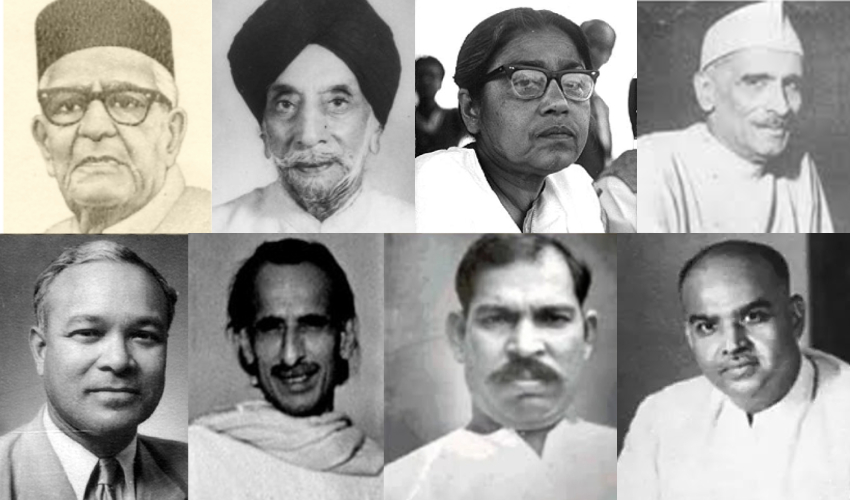
Opposing the First Amendment in Parliament: Top Row, Left to Right – Hriday Nath Kunzru, Sardar Hukam Singh, Sucheta Kripalani, H.V Kamath; Bottom Row, Left to Right – Jaipal Singh, Acharya Kripalani, Shibban Lal Saxena, Syama Prasad Mookerjee
The prime minister sensed the precariousness of the situation. The party might have been in his thrall and there may not have been any open rebellion, but there were enough doubters and dissidents to deny him his victory over the Constitution if he did not moderate his stand. By the time the Union Cabinet met in the evening, Nehru was already under significant pressure from rebellious MPs and probably mulling his options. Within the Cabinet, several ministers now started to insist that the word ‘reasonable’ be included in the amending bill to safeguard judicial oversight of restrictions on fundamental rights. Many perhaps realized that without it, the amendment constituted a near-existential threat to Part III of the Constitution. Support for Nehru’s draconian vision of emasculating the courts was now fading at an alarming rate.
‘So far as I can see, the courts have always had the right to consider any legislation . . . It is true that if this amendment is passed, they will be somewhat restricted in their interpretation. But I feel that putting in the word “reasonable” would be an invitation for every such case to go to the courts with ensuing uncertainty.’ —Nehru
The surprising turn of events shocked the prime minister and convinced him of the need to pedal back. It brought home the limits to which both the Cabinet and the Congress Parliamentary Party were willing to obey his diktats. Hemmed in on the issue, Nehru conceded ground and accepted the inclusion of the word ‘reasonable’ in order to prevent a split in the Cabinet and ensure that there were fewer avenues for internal dissent when trying to muster a two-thirds majority. ‘The cabinet is understood to have decided to meet the mounting criticism against the proposed amendment to Article 19(2) of the Constitution, relating to “restrictions” on the freedom of speech and expression by accepting a modification that will render it justiciable,’ reported a correspondent. ‘The clause in question is to be amended by limiting to “reasonable restrictions” the proposed unfettered right of the State to impose restrictions in the interests of public order and maintaining friendly relations with foreign states.’
It was a very limited concession, extracted much against the prime minister’s own will and volition. But it served to dilute the absolute worst part of the proposed amendment and placate the agitated members of the Cabinet. Whatever restrictions the government might legislate on the right to freedom of speech, they would have to submit to a judicial determination of their reasonableness. The unrestrained ability of the state to curtail fundamental rights, the most extreme of Nehru’s ideas, was negated. Unbeknownst to the participants in that momentous Cabinet meeting, their rearguard action had just warded off one of the gravest threats the Constitution ever faced, or was likely to face in the future. A handful of doubters and dissenters, having built up the conviction to stand up to a larger-than-life prime minister that towered over them in the public eye, had just saved the foundations of Indian democracy and its constitutional order.
Whether the concession would be enough to mollify restive Congress parliamentarians, of course, was another question altogether. The sobering experiences of 23 May left Nehru unsettled and disturbed. Could he rely on his MPs to fall in line behind him as in the past? Suddenly he was not so sure. ‘You can have no idea whatever of the tremendous difficulties we have had with this Bill and we are not out of the woods yet,’ he confided to West Bengal chief minister Bidhan Chandra Roy. ‘Till the last moment I shall not know whether we can have the requisite two-thirds number for passing these clauses.’
While the effects of the concession on the Congress Parliamentary Party remained a matter of conjecture, it distinctly failed to impress the doyens of the press. Now decidedly nervous, the All India Newspaper Editors Conference resolved to hold a special plenary session ‘to consider the steps which should be taken to protect the liberties of the press now threatened by the proposed amendment to Article 19(2) of the Constitution’. In an attempt to embarrass Nehru into reconsidering his stance, correspondence between Deshbandhu Gupta and the prime minister was made public. It had little effect.
On the question of reservations and Article 15, however, there was much more consensus within the Cabinet. Insistent requests had continued to pour in from Madras arguing that the proposed alteration of Article 15 was insufficient to protect reservations for the backwards and ‘hence a new clause should be added to the article to the effect that nothing in the article or in Article 29(2) should prevent special provisions for the educational, economic, and social advancement of the backward classes.’ Cabinet ministers, and Congress members in the Select Committee, accepted this demand to bring Article 29—which prohibited discrimination in admissions to schools and colleges—into the ambit of the amending bill. They were now of the view ‘that this provision is not likely to be, and indeed cannot be, misused by any government for perpetuating any class discrimination against the spirit of the Constitution, or for treating non-backward classes as backward for the purpose of conferring privileges on them’.
In a new twist, they also recommended that all references to ‘economic’ and ‘economically’ be dropped and the language be limited to ‘socially and educationally backward classes’. Through this sleight of hand, the cabinet sought to achieve two objectives. First, it would remove any prospect of economic criteria coming in the way of calculating the backwardness of a class based on their ‘social and educational’ standing. Second, it would pre-empt and negate any demands for special provisions or reservations for those who could be termed economically backward without the corresponding status of social or educational backwardness. In other words, they wanted to acquire the power to legislate for caste- and community-based reservations—what the Constitution scholar Granville Austin called ‘compensatory discrimination’— while preventing the creation of any affirmative action mechanisms based on economic criteria.
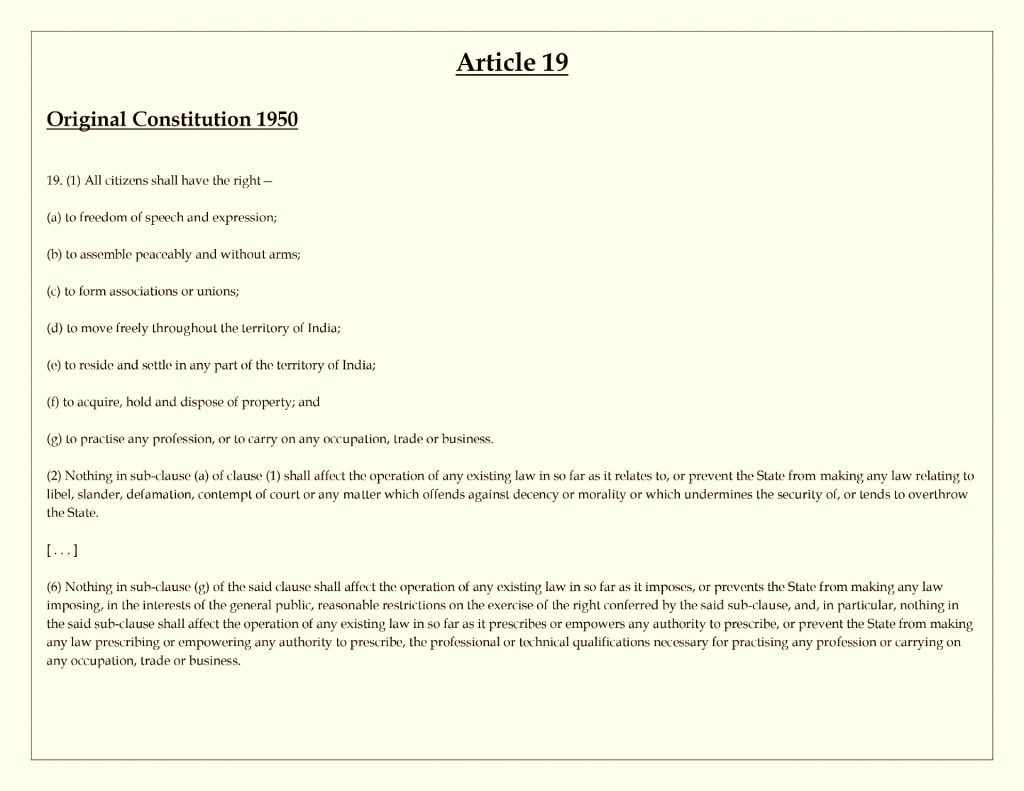
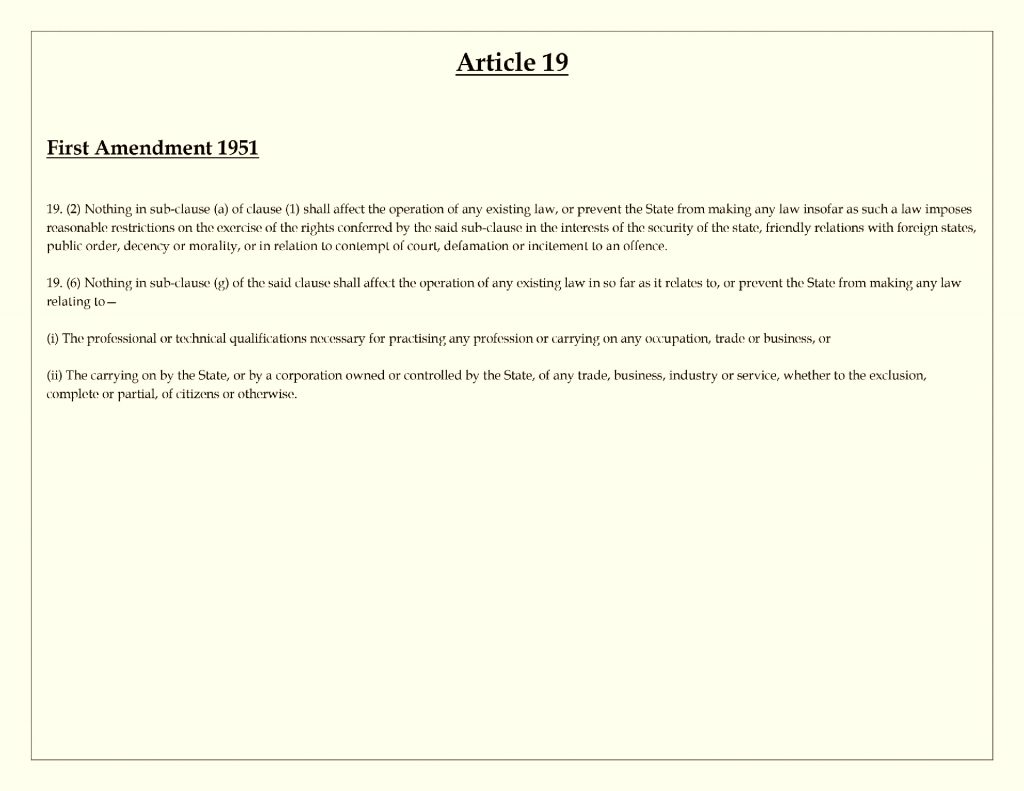
In a new twist, they also recommended that all references to ‘economic’ and ‘economically’ be dropped and the language be limited to ‘socially and educationally backward classes’. Through this sleight of hand, the cabinet sought to achieve two objectives. First, it would remove any prospect of economic criteria coming in the way of calculating the backwardness of a class based on their ‘social and educational’ standing. Second, it would pre-empt and negate any demands for special provisions or reservations for those who could be termed economically backward without the corresponding status of social or educational backwardness.
The exclusion of economic backwardness from the ambit of India’s reservation and affirmative action policies—either as a test for community-based reservations or as a criterion in and of its own accord—would open up a new political fault line that has endured to this day. Today, the debate around this fault line is expressed either in terms of demands for reservation for ‘economically weaker sections’ among the forward castes or demands for exclusion of the ‘creamy layer’ in reservations for Other Backward Classes. But few recall just where the race to social backwardness first began. Much before V.P. Singh and Mandal in 1990, much before the ninety-third amendment and Arjun Singh in 2006, it was in this dimly remembered cabinet meeting that the constitutional groundwork for this debate was first laid.
President Rajendra Prasad, who had been keeping a close eye on proceedings as the debate raged in Parliament and outside, now made a final, eleventh-hour effort to persuade the government to abandon the reckless course it had set itself on. In a note to the prime minister, Prasad reminded him of his view that the amendment was ‘premature and uncalled for’, and of the need to lead by example by establishing good conventions. He again cautioned Nehru against an attempt to overrule judicial pronouncements through a constitutional amendment, admonishing him that it would raise fundamental issues related to the separate functions of the legislature and the judiciary. Nehru, already irritated by what he thought was Rajendra Prasad’s propensity to exceed his brief, was incensed.
‘As you are aware, the Bill for the amendment of the Constitution has been discussed with great thoroughness both in Parliament and the Select Committee, as well as in the Press and by the outside public,’ came the prime minister’s terse response to the substance of the President’s objections.
Before the Bill took shape, the matter was considered by a subcommittee of the Cabinet and a committee appointed by the Congress party in the Parliament. The two committees held consultations together. We consulted also eminent lawyers, including the Attorney-General and Shri Alladi Krishnaswamy Aiyyar. Both of them were clearly of the opinion that it was within the competence of Parliament to consider and pass this measure . . . After this very full consideration of this subject from every point of view, the Cabinet have come to certain firm conclusions, which are now embodied in the Select Committee’s report . . . The Government is convinced of the necessity as well as the validity of the amendments proposed.
‘It would be exceedingly unfortunate if the public became aware that the President held a contrary opinion to that of the Cabinet in such a matter and was pressing for its adoption by the Cabinet,’ he reprimanded Rajendra Prasad. ‘I shall certainly place your note before the Cabinet as desired by you . . . I do not propose to circulate this for fear of leakage and undesirable publicity. I trust also that your office has not sent copies of this note to anyone else.’ For the second time, the president of the republic found his advice spurned and his views treated as unworthy of serious consideration. Committed to the constitutional order and the maintenance of decorum, Rajendra Prasad, despite his strong feelings on the matter, followed Nehru’s advice and scrupulously avoided publicizing his opposition.
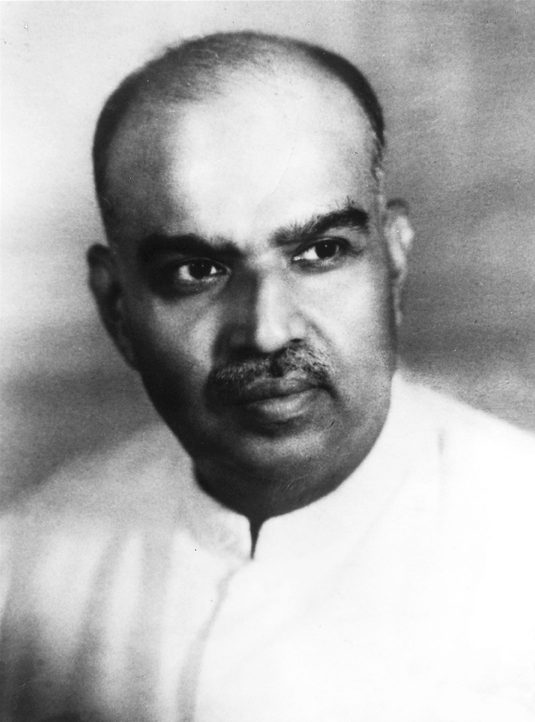
Dr. Syama Prasad Mookerjee
On 25 May 1951, the new draft of the Constitution (First Amendment) Bill emerged from the Select Committee. Along with the draft, the report from the Select Committee was submitted to Parliament the same morning. After several days of intense deliberations, the twenty-one members produced an eighteen-page-long report. Recommendations from the committee took two pages; scathing minutes of dissent by Opposition members filled sixteen. As the press prominently noted, ‘All the five non-Congress members of the committee recorded minutes of dissent, some of them including Dr. Syama Prasad Mookerjee and Pandit Hriday Nath Kunzru doubting the very advisability of amending the Constitution in such haste after it had been in operation for only sixteen months.’
In his minute of dissent, S.P. Mookerjee strongly questioned the need for any further restrictions on the freedom of speech and expression. ‘The onus of proving the need for changes has not been satisfactorily discharged,’ he argued. ‘The main reason advanced was that the judiciary had pronounced its opinion on certain laws which were disfavoured by the government.’ ‘The existing restrictions on the right to free speech and expression were more than sufficiently restrictive and there should be no fresh additions to these restrictions,’ he urged, and ‘the word public order must be subject to the “clear and present danger” test, namely that the substantive evil must be extremely serious and the degree of imminence extremely high.’ ‘Nothing has as of yet happened to justify the taking away of the jurisdiction of the judiciary in this sweeping manner,’ he wrote, castigating the government for its scramble to amend Article 31 and create a schedule of unconstitutional laws. ‘Instead of amending the lawless laws and making their provisions consistent with fundamental rights, the Government are following a strange procedure of adhering to such reactionary laws and changing the fundamental rights.’
‘Instead of amending the lawless laws and making their provisions consistent with fundamental rights, the Government are following a strange procedure of adhering to such reactionary laws and changing the fundamental rights.’ —Syama Prasad Mookerjee
‘The history of Section 124A is well known. It was passed in its present form in 1818 to curb the activities of Indian patriots . . . Now that India is free, it should find no place in a statute book in its existing form.’ —Pandit Hriday Nath Kunzru on the revalidation of Sections 124A and 153A of the Indian Penal Code: sedition and causing enmity between groups respectively.
‘Restrictions like the pre-censorship of news and the banning of the entry of a newspaper into a state were imposed during the war under the Defence of India Rules,’ read the excoriating observations of H.N. Kunzru, challenging the Congress to explain ‘why the Government in a free India should be allowed to exercise such powers as were not exercised even during the British regime in peacetime’. Turning his attention to the revalidation of Sections 124A and 153A of the Indian Penal Code—sedition and causing enmity between groups respectively—Kunzru wrote: ‘The history of Section 124A is well known. It was passed in its present form in 1818 to curb the activities of Indian patriots . . . Now that India is free, it should find no place in a statute book in its existing form.’
K.T. Shah, Sardar Hukam Singh and Naziruddin Ahmed produced a joint minute of dissent asserting their opinion ‘that the experience gained under the Constitution was insufficient to justify an amendment, they did not have the texts of the laws to be validated [laws that would be placed in the Ninth Schedule] and there was no evidence at all to justify this wholly gratuitous and unwarranted restriction on civil liberties’. ‘We have grave doubts and misgivings as to the wisdom, propriety and justification of the Bill,’ the trio concluded, flagging their reluctance to support the government’s invasion of individual freedom.
In the new democratic republic, however, the views of the Opposition, no matter how well reasoned or how well intentioned, counted for little in the eyes of the country’s new regime. Opposition leaders, much like the president and the Speaker, found themselves sidelined and their views treated with indifference and scorn. This was to become a norm. In this new Nehruvian India, ‘there were numerous committees and consultation was frequent,’ wrote Sarvepalli Gopal, ‘ . . . the deficiency was in spirit and animation.’
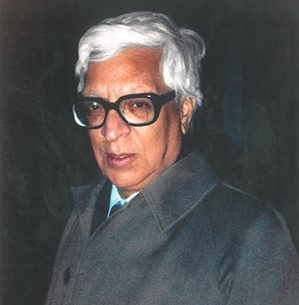
Sarvepalli Gopal
If ever more evidence was needed, the Select Committee report convincingly demonstrated the complete and utter lack of consensus on the matter and the absence of any respect for the Opposition’s views. There was little doubt left that the amendment of the Constitution was a Congress project driven by the prime minister with no support from Opposition figures—not even from those who conceded the principles of land reform and affirmative action.
Despite the passionate arguments put forward by Opposition figures, the majority of the Select Committee felt otherwise. Fervent appeals to Nehru’s sense of democratic propriety and the need for the ‘provisional parliament’ to show moral uprightness by waiting for a general election fell on deaf ears. All warnings that a dangerous precedent was being created went unheeded. The only major changes the committee recommended were the use of the word ‘reasonable’ before restrictions to make justiciable any legislation on the subject in respect of Article 19, a limitation of the language to ‘socially and educationally backward’ and the removal of all reference to economic backwardness, and the inclusion of Article 29(2) within the ambit of the qualification to be added to Article 15. In all other respects, including the alteration of Article 31 and the creation of the hugely controversial Ninth Schedule, the committee ignored the intense resistance of the Opposition and placed its stamp of approval on the bill drafted by the government.
Newspapers had been optimistically speculating on the concessions that Nehru might agree to in a bid to propitiate his critics and assuage his restive MPs. The recommendations of the Select Committee left them disappointed and angry. ‘Except for a grudging concession to the press and certain other modifications for elucidating other provisions the Bill to amend the Constitution has emerged unscathed from the 21 member Select Committee,’ lamented a report in a major newspaper. Having ruminated on the changes suggested by the committee for several days, another correspondent reaffirmed the stand of the press by stating that ‘the so-called concessions to popular demand are no adequate substitutes for existing safeguards’.
In a muscular editorial evocatively titled ‘Not Enough’, the Times of India contended that phrases such as ‘reasonable restrictions’, meant to be safeguards against the heavy hand of the government ‘can at best constitute only a partial check on the executive’s abuse of powers. Experience shows that terms such as “reasonable compensation” can carry a multitude of meanings. Moreover, those who may be victims of the new repressive laws are not always likely to have the means to seek legal redress.’ ‘A more pernicious feature of the new amendment is that the scope of the permitted restrictions remains as wide as the original draft,’ raged the writer. ‘As for the new restrictions allowed in the sacred name of public order, these can only help unscrupulous regimes to identify their own safety with the “security of the state” and to stifle all organized protest.’
‘Why are “economically backward” people less deserving of help than “socially and educationally backward classes”?’ the editorial fumed. ‘As for securing special rights for Backward Classes, Clause 4 of Article 15 as redrafted does not prevent the treating of non-Backward Classes as Backward for the purpose of privileges on them.’ Positively seething, the writer of the editorial warned Nehru: ‘At the root of democratic progress is the belief that the heterodoxies of today may become the orthodoxies of tomorrow and that the opposition of today may in the course of time achieve the majesty of government.’ It was a warning that was apocalyptic and oracular in equal measure. Nearly seventy years on, facing the full force of the amendment, the Congress party, Nehru’s ideological descendants and co-travellers, and the one-time cheerleaders of the Nehruvian offensive, live on to testify to the veracity of the unknown writer’s prophetic warning.
Positively seething, the writer of the editorial warned Nehru: ‘At the root of democratic progress is the belief that the heterodoxies of today may become the orthodoxies of tomorrow and that the opposition of today may in the course of time achieve the majesty of government.’ It was a warning that was apocalyptic and oracular in equal measure. Nearly seventy years on, facing the full force of the amendment, the Congress party, Nehru’s ideological descendants and co-travellers, and the one-time cheerleaders of the Nehruvian offensive, live on to testify to the veracity of the unknown writer’s prophetic warning.

Jawaharlal Nehru signing the Constitution of India
Nevertheless, at that moment in May 1951, so far-fetched did the possibility of the Opposition achieving the majesty of government seem that none bothered to take it seriously. Small in number, limited in electoral appeal and lacking any party organization, the threat of the Opposition one day using Nehru’s own stick to beat him with carried near-negligible weight as a deterrent. But what the Opposition lacked in numbers and electoral appeal, it made up for in its strength of purpose and its dedication to the defence of the Constitution. Having failed to convince the government to heed their opinions in the Select Committee, Opposition leaders now prepared to make a last ditch stand in Parliament.
‘The Opposition’ noted one journalist,
[M]ay be numerically small in view of a strong Congress Party whip, and many doubters have certainly been satisfied by the change rendering justiciable the restrictions that might be imposed on freedom of speech and expression. But for all that, the Opposition will be intense and will probably be speaking for more than those who might care to walk out of the “noes” lobby . . . Members of the former Democratic Front [Kripalani’s group of dissident Congressmen] have taken counsel together on this measure . . . they are expected to oppose tooth and nail the very principle of a constitutional amendment at this stage.
As the amendment bill and the debate around it moved inexorably towards a conclusion, Opposition figures from across the political spectrum, few and far between as they were, now braced themselves and prepared for a fateful parliamentary confrontation. Much like the warriors of yore, woefully outnumbered and comprehensively outgunned, these intrepid defenders of constitutional freedoms unsheathed their verbal swords and rode out to battle.
Parliamentary encounter IV: Storm over Parliament
The battle was joined on 29 May 1951 as Prime Minister Nehru moved the bill as amended by the Select Committee for Parliament’s consideration. Even before Nehru began speaking, he was interrupted by H.V. Kamath objecting to the ‘vitiated’ proceedings in the Select Committee. He was quickly shouted down by the Speaker to allow Nehru to begin proceedings. The mood was sombre—this time, there would be no niceties.
‘We live in a haunted age,’ Nehru informed his colleagues.
I do not know how many members have this sense . . . of ghosts and apparitions surrounding us, ideas, passions, hatred, violence, preparations for war, many things you cannot grip, nevertheless which are more dangerous than other things . . . Hon. Members tell me that this Constitution has been in existence for sixteen months. Can any member tell me what the fate of the world will be in another sixteen months?
The apocalyptic imagery was fitting.
In his seventy-minute address, the prime minister justified the amendments to Article 19 by vague allusions to a grave danger to the state and repeated the allegation that fundamental rights were now an obsolete idea. The addition of the word ‘reasonable’ made anything done under the act patently justiciable, he continued, and admitted that they had avoided using that word earlier ‘to avoid an excess of litigation about every matter, everything being held up and hundreds, maybe thousands, of references constantly made by odd individuals or odd groups thereby holding up the work of the state.’
The brazen admission by the prime minister that he considered individuals fighting for their constitutional rights to be odd and had wanted to prevent them from knocking on the doors of the judiciary provoked an indignant reaction from H.V. Kamath about the sacrosanct nature of fundamental rights. Nehru remained unfazed. ‘I wish the House would be clear about this and realize the times we live in,’ he sneered, ‘in this country and other countries, and not to quote so much some ancient script or ancient thing that was said at the time of the French Revolution or the American Revolution. Many things have happened since then.’
‘It is not merely a question of what words you put in the Constitution’ he glowered.
It is a question of dealing with the situation . . . of saving the country from going to pieces, as some people want and try to make it . . . Are we going to fight it with these words, to be told that this word comes in the way and that word prevents you from doing this? No word will be allowed to come in the way because the country demands it . . . Do you think any Constitution will prevent me from dealing with such a situation? No. Otherwise the whole Constitution goes . . . I want to be perfectly clear in declaring that if I am responsible and this Government is responsible, anything that goes towards disrupting the community . . . will be met with the heavy hand of the Government. There has been enough loose talk about this. It is for this country and this House to have or not to have this Government. But these are the terms of this Government, no other terms.
‘It is not merely a question of what words you put in the Constitution. It is a question of dealing with the situation . . . of saving the country from going to pieces, as some people want and try to make it . . . Are we going to fight it with these words, to be told that this word comes in the way and that word prevents you from doing this? No word will be allowed to come in the way because the country demands it . . . Do you think any Constitution will prevent me from dealing with such a situation? No. Otherwise the whole Constitution goes . . . I want to be perfectly clear in declaring that if I am responsible and this Government is responsible, anything that goes towards disrupting the community . . . will be met with the heavy hand of the Government.’ —Nehru
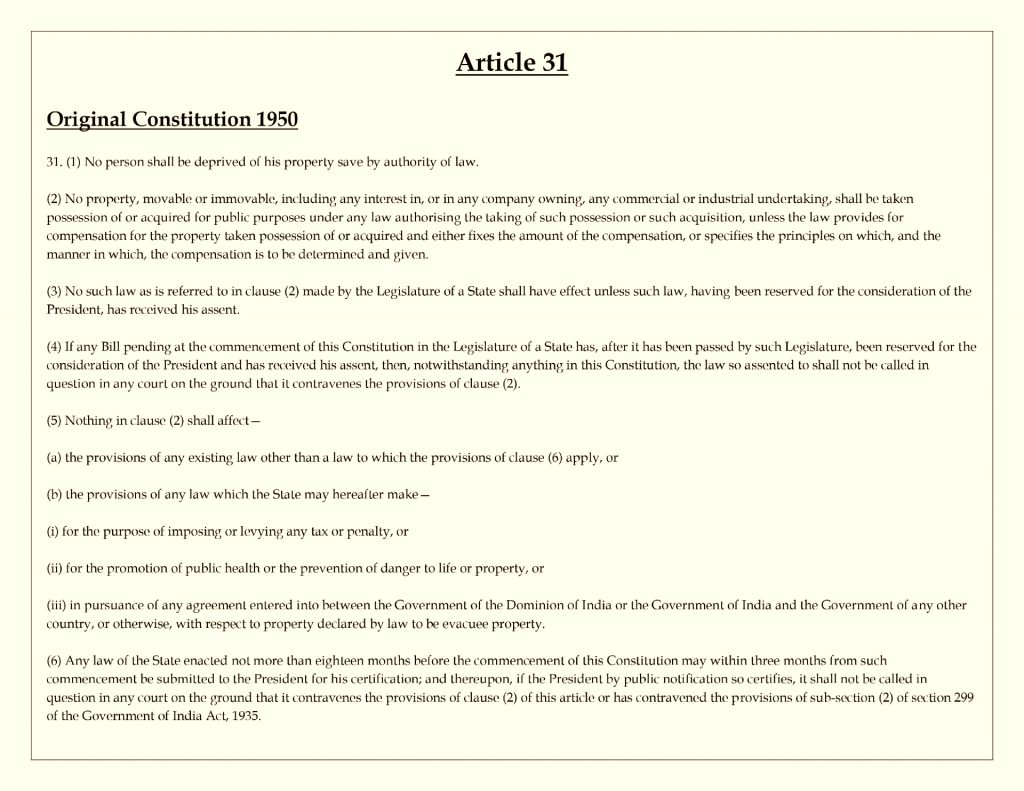

If the exposition of his repressive and absolutist vision for the new republic needed further elaboration, Nehru proceeded to delineate it while giving the press a piece of his mind. ‘I know something of the press, and I have been connected with the Press too somewhat, and can understand their apprehensions,’ he insisted.
Yet I say that what they have said is entirely unfair to this Government. And I say that the Press, if it wants that freedom— which it ought to have—must also have some balance of mind which it seldom possesses. They cannot have it both ways—no balance and freedom. Every freedom in the world is limited.
As for why the government had included relations with foreign states as a ground to restrict fundamental rights, Nehru’s reasoning was equally outlandish. He only wanted to cover incitement to war and defamation of foreign heads of state, he claimed, but it was phrased to say friendly relations with foreign states because it was a friendly way of saying this and nice from the literary point of view. Exactly what amounted to a danger to friendly relations with foreign states, as usual, Nehru declined to specify. None bothered to point out that constitutional provisions were unlikely to be judged on literary merit. But the grim prognosis of the heavy hand of government and the limits of freedom evoked lusty cheers from Congress MPs.
The prime minister mounted a spirited defence of the amendment to Article 15, which he contended, had been necessitated by the events in Madras. ‘The argument of the Courts was valid from one point of view,’ he contended, ‘namely that communities as such could not be discriminated against. But for a variety of historical reasons, all manner of socially, educationally and economically backward classes existed and in order to encourage their progress ‘something special’ had to be done for them.’

Syama Prasad Mookerjee, 1978 stamp of India
‘Some apprehensions had been expressed that this amendment might be used to perpetuate class discrimination,’ reported an eyewitness, ‘but Mr Nehru assured the House, this power would not be misused.’ Some critics such as K.T. Shah and H.V. Kamath had pointed out that 80 percent of the people were backward in those terms, regardless of their caste or community. Any special provisions should thus cater for all of them. ‘It is no good saying that,’ Nehru replied disdainfully.
Much of this was, of course, a reiteration of what the Prime Minister had previously argued—an elaboration of his views and an outline of his perspective on democracy. They were the standard tropes: the Constitution needed to be flexible and follow the curves of life; it could not be allowed to ossify around ancient slogans from the French Revolution and archaic ideas about fundamental rights; the press and his critics were out of control and needed to be disciplined; the Constitution could not be allowed to come in the way of the Congress manifesto; the judiciary was overreaching itself by preventing the government from ignoring the Constitution and doing whatever it wanted to, which of course was obviously for the security of the nation. It was the most articulate depiction of the premises that underpinned Nehru’s conception of the democratic state, premises that progressively became principles of the new post-colonial order.
Opposition leaders K.T. Shah and Naziruddin Ahmed, who were the next to speak, both ripped into Nehru’s contention. ‘Prof. K.T. Shah threw ridicule on this (the PM’s) argument by stating that the Constitution already made adequate provision for grave emergencies,’ reported a newspaper. ‘By a declaration of emergency, the President could suspend the entire Constitution and Government would be armed with unfettered power to take any measure that might be necessary.’ Naziruddin Ahmed maintained that if any laws had been invalidated,
[T]he fault lay not with the Courts, which had interpreted the Constitution correctly, but with the Government, who had failed to adapt such laws as was enjoined upon them by Article 372 of the Constitution . . . (much) as the British Government had adapted a whole series of enactments to the 1935 Act by a single consolidated measure.
The prime minister mounted a spirited defence of the amendment to Article 15, which he contended, had been necessitated by the events in Madras. ‘The argument of the Courts was valid from one point of view,’ he contended, ‘namely that communities as such could not be discriminated against. But for a variety of historical reasons, all manner of socially, educationally and economically backward classes existed and in order to encourage their progress ‘something special’ had to be done for them.’
‘Some apprehensions had been expressed that this amendment might be used to perpetuate class discrimination,’ reported an eyewitness, ‘but Mr Nehru assured the House, this power would not be misused.’ Some critics such as K.T. Shah and H.V. Kamath had pointed out that 80 percent of the people were backward in those terms, regardless of their caste or community. Any special provisions should thus cater for all of them. ‘It is no good saying that,’ Nehru replied disdainfully.
The gods now decided it was their turn to communicate their displeasure. Claps of thunder rolled across the sky. As Naziruddin Ahmed savaged the amending bill, a sudden thunderstorm broke over the national capital. ‘The gale and accompanying thunder showers came upon New Delhi so suddenly,’ reported the Times of India, that even before windows and skylights could be closed, many MPs on the Congress benches were drenched in the rain. On a more portentous note, power went out and the lighting inside Parliament failed, plunging the chamber into gloom.
The darkness was an unmistakable omen for the new republic, a moment of delicious irony. ‘Freedom of Speech is being taken away,’ remarked H.V. Kamath to general guffaws, ‘and there is a storm over it.’
Parliamentary encounter V: No holds barred
As the debate over taking the bill into consideration played out over 30 and 31 May, Parliament witnessed a fierce war of words on the subject as a spirited Opposition continued to confront the government. ‘As an obvious result of yesterday’s party whip, Congress members abandoned all criticism in the House and this only brought into sharp relief whatever opposition came from independent members,’ noted The Statesman. Having weathered tremendous criticism, several proponents of the amendment were pressed into service to give speeches supporting the government’s stand. Yet, even here, support was either lukewarm or often driven by ulterior motives or general frustration.
Reverend Jerome D’Souza, Congressman and Jesuit priest, was enthusiastic about the restoration of the Madras Communal GO because it was impossible to overlook the fact of backwardness, but he was more concerned with extending caste-based reservations for Christians so that socially backward classes could freely convert to Christianity without losing their backward status. He wanted race and culture as well as caste and community to be recognized to determine such backwardness, but insisted that religious differences should be ignored, presaging the modern demand for recognition of Schedule Caste and Backward Class Christians. As for freedom of speech as given and practised in England, he professed his condescending belief that since Indians did not possess the ‘phlegmatic’ English character distinguished by its stolidity and balance, it was necessary to restrain the organs of public opinion. The statement was greeted by widespread cheering across the treasury benches.
The famous Anglo-Indian educationist Frank Anthony, venting his frustration over the conundrum the bill represented, declared that he was not ‘prepared to accept the argument that these amendments are only an amplification, a clarification . . . They are a revolutionary, radical change in the original Article 19(2).’ ‘The only way to stop the inevitable, ultimate dictatorship, communist dictatorship is a dictatorship of Jawaharlal Nehru,’ he lamented. ‘But because I believe that a dictatorship today is the only way to prevent a later dictatorship, I am prepared to give blanket powers to Jawaharlal Nehru. That is my only reason for supporting these amendments completely.’
Our leaders are incapable of thinking and practising in terms of democracy,’ he continued with his complaint. ‘The British occupation taught us . . . respect for the forms and trappings of democracy but the spirit and content of democracy have escaped the people and they have escaped our leaders . . . If the Constitution is largely dead, if it is largely still-born, why worry about making an excision?
On the Opposition side, the charge was led by Syama Prasad Mookerjee and Acharya Kripalani.
Mookerjee reminded the House that they had deliberately chosen a written Constitution incorporating a chapter on fundamental rights. They could well have decided not to create a chapter on fundamental rights in writing, but having done so, they necessarily had to admit the corollary that their powers to legislate on such matters were limited by the Constitution they themselves had created. Fundamental rights ‘were so many checks on the hasty and tyrannical action of the majority and served to protect the liberty of individuals and minorities,’ he stressed. ‘And if fundamental rights were enumerated in writing, that was in order to withdraw them from the arena of political controversy.’ ‘You cannot pass or amend a Constitution to fight with ghosts,’ he warned Nehru, likening him to the Prince of Denmark fighting imaginary troubles in Shakespeare’s Hamlet.
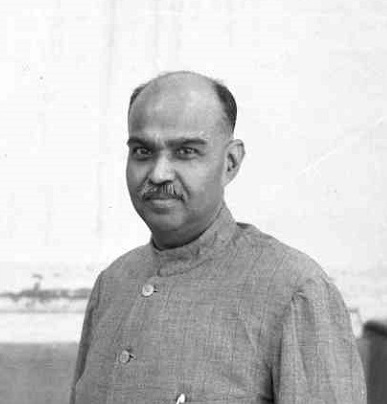
Syama Prasad Mookerjee
‘[Fundamental rights] were so many checks on the hasty and tyrannical action of the majority and served to protect the liberty of individuals and minorities.’ —Syama Prasad Mookerjee
‘You cannot pass or amend a Constitution to fight with ghosts.’ —Syama Prasad Mookerjee to Nehru
In spite of the opponents of the bill being in a minority, Mookerjee argued vehemently against the revalidation of repressive laws originally created to stifle Indian freedom under colonial rule, warning that they were ‘sounding the death-knell of democracy’. ‘We are giving more powers to Parliament to enact more laws restricting freedom,’ he censured his colleagues. ‘I submit that this is a completely wrong approach to the problem.’ ‘But in any case,’ he remonstrated with the government, ‘the power which you are now taking is not power which is necessary for any emergency that has arisen in the country, but for perpetuating certain lawless laws which our British masters had forged for the purpose of curbing freedom in India. That is what we are doing.’
‘Let me exhort and conjure you never to suffer an invasion of your political constitution, however minute the instance may appear, to pass by without a determined persevering resistance,’ he fervently entreated the House, quoting the Letters of Junius, a tranche of open letters written by an anonymous eighteenth century British polemicist critical of King George III. ‘They soon accumulate and constitute law. What yesterday was fact, today is doctrine.’
Acharya Kripalani, veteran Gandhian, erstwhile Congress president and a leading light of the struggle for independence, was vitriolic in upbraiding the government. The country was pledged to zamindari abolition, he argued, and the population’s views on the subject were well known. It was perfectly reasonable to change the Constitution to effect this, ‘but the country was also solemnly pledged to the freedom of speech and expression, especially in light of the restrictions imposed on these freedoms by an alien government. Yet these freedoms were now to be abridged.’ Public order and incitement to offence were undefinable terms, the Acharya opined. Satyagraha was an offence, all processions and demonstrations disturbed public order. Were all these to be stopped by using the might of the state against its own citizens?
The country was pledged to zamindari abolition, he [Acharya Kripalani] argued, and the population’s views on the subject were well known. It was perfectly reasonable to change the Constitution to effect this, ‘but the country was also solemnly pledged to the freedom of speech and expression, especially in light of the restrictions imposed on these freedoms by an alien government. Yet these freedoms were now to be abridged.’ Public order and incitement to offence were undefinable terms, the Acharya opined. Satyagraha was an offence, all processions and demonstrations disturbed public order. Were all these to be stopped by using the might of the state against its own citizens?
There were no replies. Kripalani, one of Gandhi’s most ardent disciples, spoke slowly and with a bite to his voice, relishing the opportunity to take his former party apart. Sidelined, ignored and humiliated by his one-time colleagues, he now laid into them with bitter acerbity. The chamber, which had emptied out as Congress leaders dutifully extolled the virtues of the amendment, rapidly began to fill as Kripalani continued. ‘It is superfluous to speak at this stage. Government seem to have made up their mind and they have a solid majority behind them; whatever is proposed will be carried out,’ he acknowledged with unsentimental frankness. ‘But sometimes, it becomes one’s duty to raise a voice of protest when things that we never imagined before are done.’
‘We are accused of being idol worshippers,’ he claimed. ‘By whom are we accused? I am sure the greatest beneficiary of this idol worship is our Prime Minister and also, may I add, his government. But for this idol worship this government would have fallen at least twenty times during the course of the last three years.’ ‘I know from experience that when people who are weak are given power, they use their power to their own injury,’ he apprised the prime minister, his voice gleaming with glacial sarcasm.
A government that cannot dismiss a peon in office wants to clothe itself with extraordinary powers! I submit, these extraordinary powers will be used to your injury; and who will use them? It will be they that will come after you. You are not going to be eternal. No government is going to be eternal . . . More power will only injure you. So please be satisfied with limited power, because your capacity is very limited indeed.
Meanwhile, outside Parliament, political observers, commentators and ordinary citizens alike continued to fulminate against the government and the prime minister. ‘Mr Nehru’s apologia for the Constitution Amendment Bill as it emerged from the Select Committee fails to convince,’ wrote the Times of India, ‘ . . . the prime minister urged that a Constitution has to be flexible and move with and adapt itself to the curves of life. If Governmental reactions to the Constitution could be traced in a graph, they would be more curvaceous than a scenic railway.’ ‘We might be living in the arid days of the tired thirties,’ it snidely remarked, ‘when foreign bureaucrats spoke thus to the representatives of the people.’
Another commentator tartly observed:
How can we have a straight, stiff, stable constitution, eternally hugging the dead distant slogans of obsolete revolutions—Liberty, Equality, Fraternity, Justice—the crude claptrap with which politicians create imaginary utopias? . . . It is good to be reminded now and then in the midst of canting moral and political platitudes that our life and the Constitution which moulds it are of such insubstantial and delusive stuff.
‘Though in the interests of the Fundamental Rights, the Constitution itself cannot be taken as sacrosanct,’ reasoned an angry citizen in a letter to the newspaper, ‘legislation by a constant clash with the Constitution should not render it chimerical by passing amendments to suit the purposes of the administration. Any attempt to recast the Constitution with the needs of the Government would be a mockery of democracy.’
In Lucknow, the socialist leader Jayaprakash Narayan, who had spent much of the year targeting the Government of India for its dictatorial tendencies and holding Nehru personally responsible for them, gave a long statement outlining his views:
It is a great tragedy that in a single-party Parliament the ruling party should take advantage of its majority to tamper even with Fundamental Rights. The very purpose of defining the Fundamental Rights in the Constitution is to place them beyond the interference of parliamentary majorities. Pandit Nehru’s repeated reference to the security of the State was itself a pointer to a grave danger that has been created for the future of Indian democracy. Except those in power, no one else in the country seems to be aware of any threat to the security of the State and yet these crippling amendments are sought to be made in the name of this danger.

Jayaprakash Narayan
Inside Parliament, however, an unruffled Prime Minister Nehru continued to rail against the press, its descent into ‘obscenity and vulgarity applied to politics’ and ‘the whole nature of the development of mechanical civilisation’ due to which the mind of the people was becoming mechanized. He was ashamed to see the cartoons that were printed in the newspapers, he denounced their degradation of public life, and fretted about the effects of such ‘freedom of speech’ on the morale of poor villagers and soldiers. He even raged about the low quality of human beings in India. He was thinking neither of the press nor of the upcoming election when he brought this amendment he piously affirmed, and repeatedly asked his colleagues to trust his words.
“The very purpose of defining the Fundamental Rights in the Constitution is to place them beyond the interference of parliamentary majorities.” —Jayaprakash Narayan
Given his own views as previously expressed both in his private correspondence and in his public statements, many of these pious affirmations were little short of outright lies. Neither Nehru nor his colleagues cared. Such moral edicts had already been consumed in the fiery birth of the postcolonial order.
On 31 May 1951, at 2 p.m., the Speaker called for a division on the motion for Parliament to take the bill into consideration. With 246 ayes to fourteen noes, the motion was passed. Twenty-nine members abstained. The announcement of the result was greeted with loud cheers. ‘Big Majority for Nehru Motion,’ read headlines the next morning. The final, decisive phase of the parliamentary battle had begun.
Parliamentary encounter VI: The guillotine is applied
Reporting on the terminal debate on the amendment, one prominent newspaper wrote, ‘The Bill will be taken up for detailed consideration for the next two days and the guillotine will be applied at 1 p.m. on Saturday.’ It was a decidedly apt turn of phrase. For what was happening, as the liberal MP Hriday Nath Kunzru frequently and persistently proclaimed in Parliament, was nothing short of an amputation of some of the most vital fundamental rights provisions in the Constitution, the same ones that Prime Minister Nehru openly derided as ossified, archaic remnants of the ideas that fired the French and American Revolutions. The right to freedom of speech and the right to property were effectively being repealed.
On the evening of 31 May, Prof. K.K. Bhattacharya, Congress MP from Uttar Pradesh, wrote to Nehru seeking a free vote on the bill. ‘If you do not give me this freedom,’ he informed the prime minister, ‘it will be my painful duty to leave the Congress Party in Parliament so as to be free to vote in accordance with the dictates of my conscience.’ Nehru refused, and as Parliament convened on Friday, 1 June, Bhattacharya resigned from the Congress party and joined the ranks of the amendment’s opponents. Nonetheless, even with this late defection, Opposition leaders knew that there was little they could do: their loss was already preordained. Nothing they said, nothing they did could alter the unshakeable majority the Congress commanded. Still, they decided to fight to the last man. And the last two days witnessed fearsome verbal combat.
As each clause of the Constitution (First Amendment) Bill was taken up for discussion over 1 and 2 June, Opposition figures moved dozens of amendments to each clause. In the amendment to Article 15, H.V. Kamath attempted to add a proviso that special provisions for backward classes would not impose unreasonable restrictions upon the right to equality guaranteed to all citizens. Congress mutineer Shibban Lal Saksena pressed to include the word ‘economically’ in the description of ‘socially and educationally backward classes’. ‘If the amendment is allowed to pass in its present form,’ he averred, ‘it will mean that any class which has entrenched itself in power may use this clause to advance its own particular class’. Congress members such as M.A. Ayyangar from Madras remained unyielding in their claim that after the Scheduled Castes and Tribes, backward classes must be the first charge on the attention of the state.
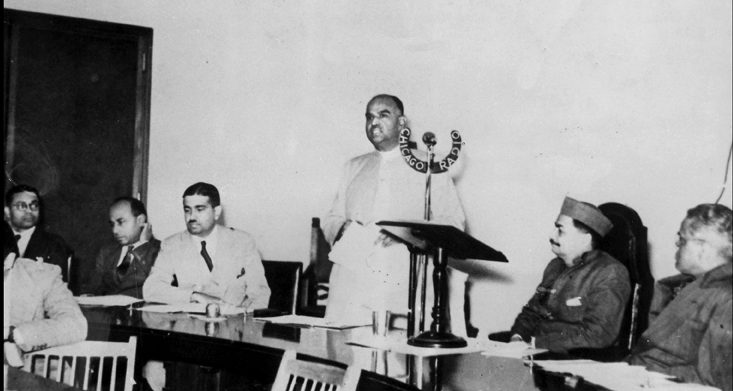
Syama Prasad Mookerjee
When the amendments to Article 19 were taken up for discussion, Syama Prasad Mookerjee forcefully demanded that if the freedom of speech had to be curtailed, then the amendment should provide for such power to be vested solely in Parliament and not in the state legislatures to achieve uniformity across the country and minimize the chances of misuse. On this issue, Mookerjee traded lengthy, heated arguments with Home Minister C. Rajagopalachari and Law Minister B.R. Ambedkar. In impassioned, animated exchanges, both sides pointedly accused each other of obstinacy and irresponsibility. Prime Minister Nehru was charged with suppressing news from China that was critical of the communist regime, to which he replied that the news of communist atrocities in China and Tibet was grossly exaggerated.
On the amendments to Article 31, Naziruddin Ahmed, Syamnandan Sahay and Shibban Lal Saksena again took the lead in criticizing the government. The new Article 31B, creating the Ninth Schedule, was severely criticized, and the government were accused of ‘drifting away from a policy of respect for private property’ and establishing a terrible precedent. In an ultimate appeal, H.N. Kunzru again warned of the dangers of the amendment: the revalidation of sedition and revival of censorship.
Yet, argue as they might, the bill’s opponents were only succeeding in delaying the inevitable. None of their amendments to the bill were accepted. In vote after vote, when the House divided, Opposition amendments were voted down and the government’s version of the bill carried through with large majorities. ‘There was fearful slaughter of over a hundred non-official amendments of varying importance,’ noted press reports and only three changes were accepted: two verbal clarifications to 19(2) and 31A and the addition of the Hyderabad (Abolition of Jagirs) Regulation in the Ninth Schedule. Even the most controversial and emotionally charged clause related to freedom of speech and expression was carried by an overwhelming majority of 228 votes to nineteen. Most of the journalist members abstained. All Opposition amendments were voted down, just as they were when changes to Article 15 and Article 31 were considered.
As the debate neared its conclusion, tempers within the chamber ran high. There were tempestuous exchanges between Syama Prasad Mookerjee and H.V. Kamath on one side and Speaker G.V. Mavalankar and Law Minister B.R. Ambedkar on the other over voting procedures on amendments. The doughty old socialist Shibban Lal Saksena again requested the prime minister to take the House into confidence and explain the grave difficulties that had compelled him to curtail fundamental rights and resurrect sedition as a major crime. ‘It is shameful for all of us to resurrect all such obnoxious laws by the back-door,’ he bewailed. ‘I am very sorry that this Bill is being passed by this House. We cannot help it but certainly we can record our protest against the enactment of this measure.’
Congress support for the bill remained untempered. Joachim Alva, Tribhuvan Narayan Singh, Renuka Ray, Seth Govind Das and Mohanlal Gautam spoke extensively on the usefulness of the bill as the clock wound down towards 6 p.m. Drawing the curtains on the case for the Opposition, Mookerjee castigated Parliament for failing to establish a healthy convention by refusing to elicit public opinion and giving retrospective effect to constitutional changes. He described the new amended Article 31 and the Ninth Schedule as a ‘constitutional monstrosity’ and accused the prime minister of deliberately curbing the rights of the citizens without giving adequate reasons.
‘The answer to popular discontent is not by passing repressive measures,’ he pleaded with Nehru.
I would therefore appeal to the Prime Minister even at this stage—of course you have got your majority; you will carry this Bill through; you carry it through—but in giving effect to it you must not be guided merely by a sense of intoxication of the power that is in your hands because you have 240 supporters inside the House. Outside the House, there are millions who are against you and you will have to remember how to placate them properly . . .
Several days of bruising debates and devastating criticism had got to Nehru—recalling the debate, he would say, ‘Listening to constant accusations and denunciations was too much for my patience.’ ‘I say this opposition is not a true opposition, not a faithful opposition, not a loyal opposition. I say it deliberately,’ an infuriated prime minister responded. ‘Yours is not a true Bill,’ came Mookerjee’s sharp retort, further stoking Nehru’s temper. The prime minister and the leader of Opposition now hurled insults across the floor of the House.
Nehru, shaking his fists in fury, charged Mookerjee with making false statements and scandalous speeches. ‘Because your intolerance is scandalous,’ came Mookerjee’s riposte. ‘It has become the fashion in this country for some people to go about in the name of nationalism and in the name of liberty to preach the narrowest doctrines of communalism,’ growled Nehru. ‘You are an arch-communalist, responsible for the partition of this country,’ replied Mookerjee.
Writing in the Times of India the next morning, a reporter described the verbal duel as ‘an intemperate and impassioned slanging match between the prime minister and Dr. Syama Prasad Mookerjee.’ Parliamentarians sat glued to their seats as two of India’s finest orators traded barbs across the chamber. Both Nehru and Mookerjee declared that the other was going to hear many truths before the debate was finished. Tempers frayed and passions were aroused. ‘For ten minutes,’ an eyewitness observed, ‘the chamber was treated to the furious political oratory of the hustings with its challenges and replies.’
Writing in the Times of India the next morning, a reporter described the verbal duel as ‘an intemperate and impassioned slanging match between the prime minister and Dr. Syama Prasad Mookerjee.’ Parliamentarians sat glued to their seats as two of India’s finest orators traded barbs across the chamber. Both Nehru and Mookerjee declared that the other was going to hear many truths before the debate was finished. Tempers frayed and passions were aroused. ‘For ten minutes,’ an eyewitness observed, ‘the chamber was treated to the furious political oratory of the hustings with its challenges and replies.’
‘We here have had to put up with much from a few Members in this House who have challenged . . .’ seethed Nehru. Even before he could finish, Mookerjee cut in, ‘This is dictatorship and not democracy.’ When an anxious and exasperated Govind Malviya—son of the Congress stalwart and educationist Madan Mohan Malviya—complained about the constant interruptions of the prime minister’s speech, Nehru sneered: ‘I have invited them . . . I only wanted to see how much restraint Dr. Mookerjee has . . .’ ‘What restraint have you shown?’ Mookerjee snapped back, ‘what restraint have you shown?’
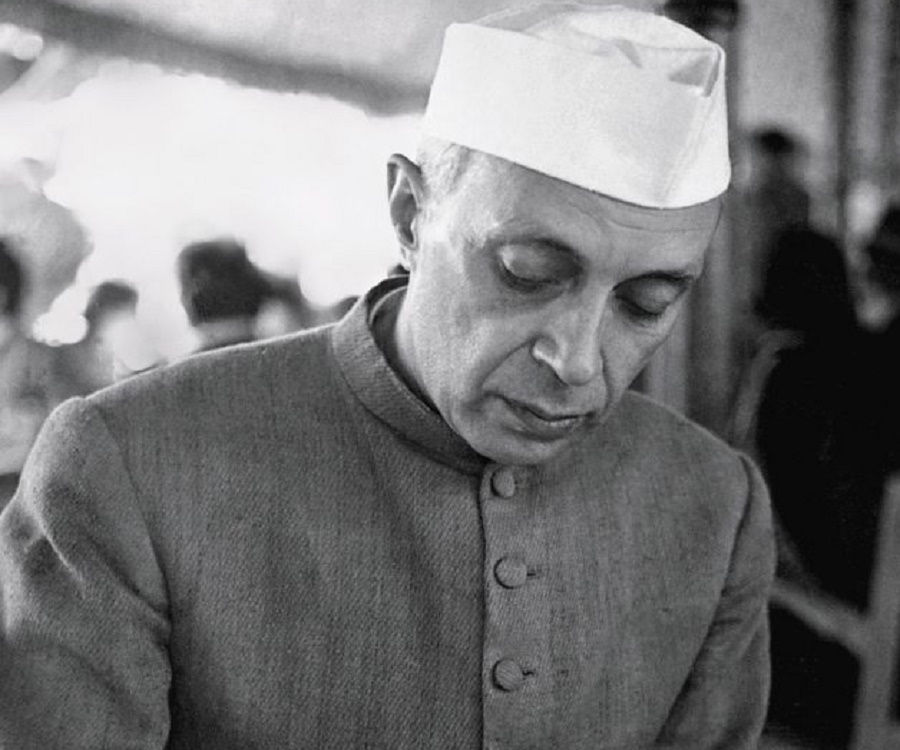
Pandit Jawaharlal Nehru
In the heat of the moment, Prime Minister Nehru challenged his opponents to combat, ‘combat everywhere, intellectually or any other kind of combat on this issue and every other issue’. ‘It is we who have brought about these major changes,’ he thundered:
[A]nd not these petty critics of the Government and it is we who are going to bring about major changes in this country. We are not going to allow petty critics and others to stop changes. They advance arguments which might have had some relevance some hundreds of years ago but which have no relevance now.
At 6.40 p.m., the guillotine was finally applied and the emotionally charged and bitterly acrimonious debate came to an end—a stormy conclusion to a debate described by a major newspaper as ‘the lowest level of parliamentary dignity witnessed this session’. The Speaker rang the bell for the House to divide. Opposition figures S.P. Mookerjee, H.N. Kunzru, Naziruddin Ahmed, Acharya Kripalani, Ramnarain Singh, K.T. Shah, Hussain Imam and Sardar Hukam Singh were joined in the noes lobby by conscientious Congress rebels H.V. Kamath, K.K. Bhattacharya, Sarangadhar Das, Shibban Lal Saksena, Damodar Swarup Seth and Sucheta Kripalani. Another prominent face among them was the tribal leader Jaipal Singh, the man who had captained the Indian hockey team to a gold medal in the 1928 Olympics.
The final count was taken. There were 228 ayes, twenty noes. Close to fifty members had abstained. ‘The motion is adopted by a majority of the total Membership of the House and by a majority of not less than two-thirds of the Members present and voting,’ announced the Deputy Speaker solemnly. ‘The Constitution (First Amendment) Bill, as amended, is passed.’ Indian democracy, dubbed as top dressing on undemocratic soil even at the moment of its birth, would never be the same again.
This excerpt has been carried courtesy the permission of Tripurdaman Singh. You can buy Sixteen Stormy Days: The Story of the First Amendment of the Constitution of India here.
ARCHIVE
Sj. Subhas C. Bose – Under Regulation III OP 1818
The moment Sj. Subhas Chandra Bose touched the Indian soil on the 8th of March, he was arrested under Regulation No. III of 1818. We would like to discuss here primarily the legal and constitutional aspect of his detention.
The Home Member of the Government of India has declared in the Legislative Assembly that Sj. Bose was involved in a terrorist crime. There is clear provision both in the Bengal Criminal Law Amendment Act and in the Bengal Suppression of Terrorist Outrages Act to deal with offenders who are in any way connected with terrorism. The provisions of these enactments are so wide and all-comprehensive that any activities connected with terrorism can be effectively dealt with under the various sections.
If Government seriously maintains that Sj. Subhas Bose is in any way connected with terrorism, it is the bounden duty of the Government to deal with his case under any of those emergency legislations. The only ground for not proceeding against him under the Emergency Laws, as stated by the Hon’ble Home Member, is that the sources of information might be dried up and the life of the witnesses would be endangered. The argument of the Law Member Sir Nripendra Nath Sircar that the reason for not enforcing the Criminal Law Amendment Act was that Government out of kindness was giving him better facilities due to his higher station in life is not only frivolous but also very unkind.

Subhas Chandra Bose
It was demanded by Sj. Bose and all his friends as well as in the public Press that he should be placed under regular trial. We propose to quote some of the sections from the recently enacted Emergency Laws to show conclusively that the apprehensions of the Home Member of the Government of India are also without any foundation.
Under section 31 of Bengal Act XII of 1932 the trying courts have power to exclude persons or the public from the precincts of courts. The section runs thus:
“The Special Magistrate may, if he thinks fit, order at any stage of a trial that the public generally, or any particular person, shall not have access to, or be or remain in, the room or building used by the Special Magistrate as a court.
“Provided that where in any case the public prosecutor or Advocate-General, as the case may be, certifies in writing to the Special Magistrate that it is expedient in the interests of the public peace or safety or of the peace or safety of any of the witnesses in the trial that the public generally should not have access to, or be or remain in, the room or building used by the Special Magistrate as a court, the Special Magistrate shall order accordingly.”
There is clear provision both in the Bengal Criminal Law Amendment Act and in the Bengal Suppression of Terrorist Outrages Act to deal with offenders who are in any way connected with terrorism… The argument of the Law Member Sir Nripendra Nath Sircar that the reason for not enforcing the Criminal Law Amendment Act was that Government out of kindness was giving him (Bose) better facilities due to his higher station in life is not only frivolous but also very unkind. It was demanded by Sj. Bose and all his friends as well as in the public Press that he should be placed under regular trial.
The same powers of exclusion of the public for safety of witnesses were extended to trials by commissioners by Secs. VIIIA and VIIIB by the Bengal Criminal Law Second Amendment Act, 1932. So it is clear that the plea of the safety of the witnesses and the fear of drying up of the sources of police information are now absolutely groundless.
The court will certainly take the initiative or in any case the Public Prosecutor will not hesitate in the least to have in-camera trials when there is the least danger to the life of the witnesses. It is a fact that various terrorist offences have been tried in Bengal by Special Commission under these sections of Emergency legislation and no witnesses to our knowledge during recent years have been murdered or interfered with. The Bengal Suppression of Terrorist Outrages Act is so drastic that under its provision any officer of Government authorized in this behalf may arrest and detain, have power to take possession of immovable and movable properties and have also the power to prohibit or limit access to any building or place in their occupation and may requisition the assistance of any person and can prohibit the use of any place and can take possession of places used for purposes of certain association and also have the general power of searches, can impose collective fines on inhabitants of a locality, and can make offences cognizable and non-bailable, while under the ordinary law they are not such.
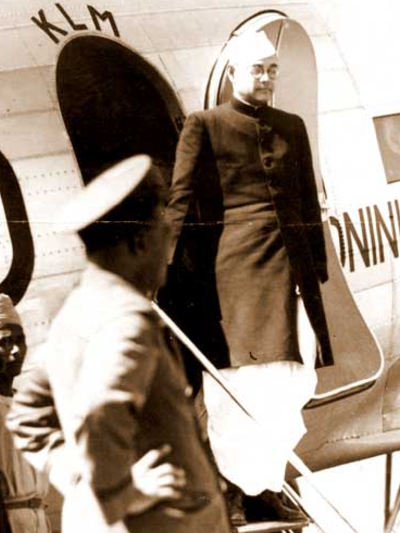
Subhas Chandra Bose arrives at Calcutta’s Dum Dum Aerodrome
As we have already quoted, special arrangements have been made for the trial of such cases and of special rules of evidence to be adopted, if found necessary, and of trial en camera.
We are not contending about the rigour of the law. But we maintain that when the scope of the law is so wide and every safeguard has been provided for the protection of witnesses and against the fear of drying up of the sources of police information, it does not lie in the mouth of the Government now further to plead that a person like Sj. Subhas Chandra Bose cannot have a trial.
During recent years there have been several big conspiracy cases connected with terrorist crimes which have been tried under the Emergency laws and convictions have been secured, unattended by any of the evil effects as apprehended by the Home Member. In the eye of the law there should be no distinction between one person and another. If other people can be tried and convicted with impunity under the Emergency Laws, why should Sj. Subhas Chandra Bose, who does not pray for any special mercies, be spared the consequences of his alleged action? We know from our long and intimate acquaintance with Sj. Subhas Bose that he is incapable of having any connection with terrorist crime, and that is the reason why we challenge Government to deal with him legally. We shall now show that Regulation No. III of 1818 is inapplicable in his case.
In the preamble to the Regulation it is stated that it would apply:
(i) “For the due maintenance of alliances formed by the British Government with foreign powers.
(ii) “For the preservation of tranquillity in the territories of Native Princes entitled to the protection of the British Government.
(iii) “For the security of the British Dominions from foreign hostility or internal commotion.’’
It is on one of these three grounds that a person can be arrested and kept under detention under Regulation III.
We maintain that when the scope of the law is so wide and every safeguard has been provided for the protection of witnesses and against the fear of drying up of the sources of police information, it does not lie in the mouth of the Government now further to plead that a person like Sj. Subhas Chandra Bose cannot have a trial… We know from our long and intimate acquaintance with Sj. Subhas Bose that he is incapable of having any connection with terrorist crime, and that is the reason why we challenge Government to deal with him legally.
We shall try to show that none of these provisions are applicable in Sj. Bose’s case. When this Regulation was made there were in the country numerous and powerful feudatories of the sovereign recently conquered and several ceded provinces, nominally subjects of His Majesty but from whom danger might at any time be apprehended. So this regulation was not intended for application against political agitators, sedition-mongers or terrorists.

Victims of Regulation III First Row (L to R): Lala lajpat Rai, Sirdar Ajit Singh, Subhas Chandra Bose; Second Row (L to R): Sj. Krishna Kr. Mitra, Ashwini Kumar Dutt, Sj. Pulin Behary Das.
The first application of this regulation was in July, 1869, in connection with the Wahabi movements when Ameer Khan was a victim of Regulation III in Bengal. The next case was in 1897 when the two Natu brothers of Poona were dealt with under the same regulation. In 1907, Lala Lajpat Rai and Sirdar Ajit Singh were deported under the provision of the Regulation and in 1908 the late Aswini Kumar Dutt, Sj. Krishna Kr. Mitra, Raja Subodh Ch. Mallik, the late Shyam Sundar Chakravarty, Sj. Pulin Behary Das, Sj. Satish Ch. Chatterjee, the late Monoranjan Guha Thakurta, Sj. Sachindra Prasad Bose, and Sj. Bhupesh Chandra Nag were deported under the same regulation.
During the Great War numerous persons were dealt with under the same regulation.
So there is no reason why the ordinary laws should be suspended at a time when there is no war in which England is involved or there is any insecurity of the British Dominions “from foreign hostility and from internal commotion.”
We do not know what were the charges framed against Sj. Subhas Chandra Bose for his arrest and detention. All that we can gather from the speeches of the Home Member of the Government of India is that Mr. Bose is guilty of possessing intellectual powers and organizing capacity and the bold assertion is that he is deeply involved in terrorist crime.
During the recent discussion on the question of the repeal of repressive laws in the Legislative Assembly both the Home Member and the Law Member made large promises that they would substantiate by facts the complicity of Sj. Subhas Chandra Bose with terrorist crime.
From the scrappy report that appeared in the daily press it appeared that the only point there to be made was about the letter of Sj. Krishnadas, the paid secretary of the All-India Congress Office, who in one of his intercepted letters to Gandhiji wrote that Sj. Subhas Chandra Bose was connected with the Jugantar group.
Krishnadas himself in a recent statement said that his information about several schools of revolutionaries in Bengal was gathered by him in prison from all sorts of people including a host of Government emissaries and agent provocateurs. He made it clear that he had no direct knowledge of Sj. Subhas Chandra Bose’s complicity with the Jugantar party of the revolutionaries and what he wrote was based on hearsay or gossip.
All that we can gather from the speeches of the Home Member of the Government of India is that Mr. Bose is guilty of possessing intellectual powers and organizing capacity and the bold assertion is that he is deeply involved in terrorist crime… From the scrappy report that appeared in the daily press it appeared that the only point there to be made was about the letter of Sj. Krishnadas… who in one of his intercepted letters to Gandhiji wrote that Sj. Subhas Chandra Bose was connected with the Jugantar group. Krishnadas himself in a recent statement… made it clear that he had no direct knowledge of Sj. Subhas Chandra Bose’s complicity with the Jugantar party of the revolutionaries and what he wrote was based on hearsay or gossip.
It is to be regretted that Government sometimes comes to conclusion from such flimsy and unsubstantial evidence. It is much to be regretted that the lives and liberties of such respected citizens are jeopardized on such untrustworthy evidence, and that Government could not disclose any better evidence than the flimsy hearsay evidence contained in the letter of Sj. Krishnadas. All this would appear to show that their declaration of having definite proof against Sj. Subhas Chandra Bose is a mere myth. They dare not face a trial in open court when the witnesses may be properly tested by thorough cross-examination.
With a view to find out if any substantial allegation has been made out against Sj. Subhas Chandra Bose, we have carefully gone through the Note presented by the Secretary of State for India on terrorism in India which he laid before the Joint Committee on Indian Constitutional Reforms.
There are a few references to Sj. Subhas Chandra Bose in that note and we shall presently mention them to evaluate their worth. On page 333 of the said report it is said:
“According to the confession of Dr. Narayan Roy, ‘his mind had been inflamed’ by speeches made by Subhas Chandra Bose and another well-known political agitator.”
If those speeches of Sj. Subhas Bose were seditious which inflamed the mind of Dr. Narayan Roy, it was the clear duty of the Government to prosecute him for sedition. But if they have failed to do so, it is no use arguing now that he was involved in terrorism.
On page 348 it is stated:
“Dr. Bhupendra Nath Dutta (an old terrorist), Kanai Lal, Subhas Bose (detained twice under Regulation III), Bankim Chandra Mukherjee and others devoted their energies, from varying motives, to the development and growth of organizations based on communist or semicommunist ideas.”
There was a conspiracy case known as the Meerut Conspiracy case in which alleged communist leaders of varying degrees were arraigned and found convicted, but Sj. Subhas Chandra Bose is not one of them. In the same report it is stated:
“At the instance of Subhas Chandra Bose, Pandit Jawahar Lal Nehru presided over the All-Bengal Students’ Conference in 1928 and in his speech advocated communism and internationalism for India. Immediately on his departure an Independence League was started by Subhas Bose with a number of ex-detenus and State Prisoners. They drew up a manifesto on Bolshevik lines, which evoked some protest. When later, however, Jawahar Lal himself started the ‘Independence for India League,’ having for its object the achievement of Swaraj for India, with the help and support of Kanai Ganguli and Bhupendra Dutt, it met with strong opposition from Subhas Chandra Bose and his followers, who now formed a separate ‘Independence for India League’ in Bengal.”
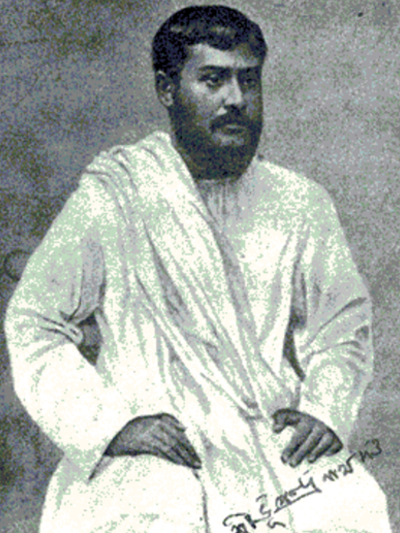
Bhupendra Nath Dutta
“At the instance of Subhas Chandra Bose, Pandit Jawahar Lal Nehru presided over the All-Bengal Students’ Conference in 1928 and in his speech advocated communism and internationalism for India. Immediately on his departure an Independence League was started by Subhas Bose with a number of ex-detenus and State Prisoners. They drew up a manifesto on Bolshevik lines, which evoked some protest.” —Note presented by the Secretary of State for India on terrorism in India which he laid before the Joint Committee on Indian Constitutional Reforms
In a later passage it is said:
“During the Jute Mills Strike of 1929 there were indications that the Congress Scheme was to get the intelligentsia to organize a mass upheaval through the youth and students’ and volunteer movements with a view to coerce the Government. The scheme did not materialize and the Meerut case has for the time being ended attempts to form organizations on communist lines.”
There are other passages as on page 338 as follows:
“To complete the picture it is necessary to say a word about the connection of the Congress Committee, and the Calcutta Corporation and the manner in which subversive movements in general and terrorism in particular have received encouragement from the Corporation.
The present Calcutta Corporation was the creation of the Act of 1923. In 1929 the Congress under the leadership of late Mr. C. R. Das obtained a large majority in it and since then has dominated it under the leadership successively of late Mr. J. M. Sen Gupta and Mr. Subhas Ch. Bose, both ex-presidents of the Bengal Provincial Congress Committee and of Dr. B. C. Roy. The former two were bitter critics of Government and at various times were incarcerated under Regulation III of 1818 and the latter suffered imprisonment during the Civil Disobedience Movements.”
Those are some of the specimens cited by the Secretary of State as indicative of terrorism in Bengal. It has been opined that:
“It is true that the Congress formally dissociated itself from terrorism but it was equally clear that, if some of the workers and leaders of Congress were given a free hand, they would not be averse to giving their general support to terrorism.”
This is the bold inference of the Secretary of State on Mahatma Gandhi’s Civil Disobedience Movement, which, according to him, “aroused anti-British sentiment and a spirit of lawlessness in the province” and that “seditious literature of the most violent description was being broadcast in the shape of pamphlets and books”. It is certainly claimed that the Government saved the situation by passing of ordinances and emergency legislation and the “situation had apparently greatly improved” and we do not see any reason why the law was not applied against Sj. Subhas Chandra Bose, if the Government considered him guilty, and why the old Regulation, which was not designed to meet such situations, was misapplied. Sj. Bose has been suffering from serious intestinal troubles for the last four or five years and he was away from India for his treatment.
His immediate arrest on his return from the continent of Europe to his native land after a prolonged absence makes it clear that his detention is not due to his activities but to his pronounced views about Swaraj for India. That Government officials are not known for consistency or accuracy of their remarks about Indian leaders will be evident from the following anecdote.
Lord Morley in his letter to Lord Minto wrote:
“You have nine men locked up a year ago by ‘letter de cache!’ because you believed them to be criminally connected with criminal plots, and because you expected their arrest to check these plots.”
“You have nine men locked up a year ago by ‘letter de cache!’ because you believed them to be criminally connected with criminal plots, and because you expected their arrest to check these plots.” — Lord Morley in his letter to Lord Minto
But speaking on the 7th January, 1924, on the Ordinance Bill in the Bengal Legislative Council Sir Hugh Stephenson referred to those arrests and said that Sj. Krishna Kumar Mitra and others were deported because of violent boycott speeches and not for their connection with terrorist crime.
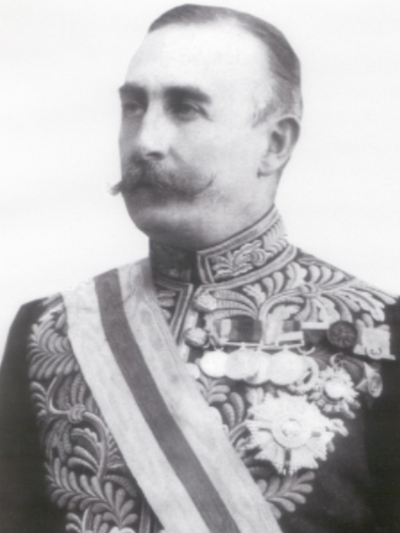
Lord Minto
But speaking on the 7th January, 1924, on the Ordinance Bill in the Bengal Legislative Council Sir Hugh Stephenson referred to those arrests and said that Sj. Krishna Kumar Mitra and others were deported because of violent boycott speeches and not for their connection with terrorist crime. We quote his exact words:
“The first two are those of Babu Aswini Kumar Dutta and Babu Krishna Kumar Mitra. It has been said that no one will believe that they had anything to do with terrorist crime and that therefore the secret information of the police must have been false and Government may equally well be deceived by such false information now.
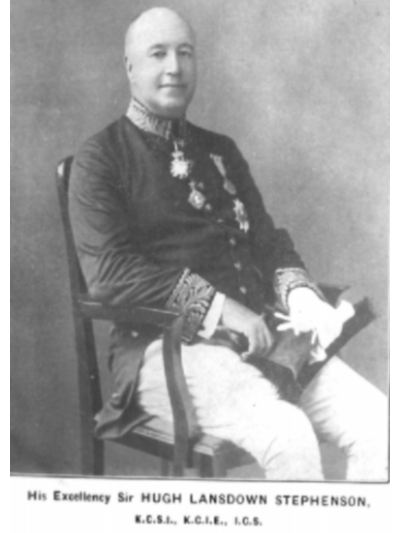
Sir Hugh Stephenson
“I never knew Babu Aswini Kr. Dutta but I hope Babu Krishna Kumar will not be ashamed if I call him my friend and I wholeheartedly acquit him of sympathy with terrorist crime, but as far as I know no one has ever accused him or Babu Aswini Kumar Dutta of promoting crime still less of taking part in it. The Bengal Government asked for the arrest under the Bengal Regulation III of 1818 of Babu Krishna Kumar Mitra in 1908 because of his violent boycott speeches and his activity in organising volunteers involved in the danger of internal commotion. In the same way the Eastern Bengal Government asked for the use of the said Regulation in the case of Babu Aswini Kumar Dutta because of his whirlwind campaign of anti-Government speeches and of his control of the Brojo Mohan Institution, from which a stream of Swadeshi preachers was constantly pouring.
“We believe the time will come when an equally highly placed official from his place in the Government will declare that Sj. Subhas Chandra Bose could not be conceived of being implicated in any terrorist crime, but that his arrest and detention were due to his great love for his country, his high intellectual power and his great organizing abilities, his unbounded influence over the youth of the country and the great love and respect in which he is held by his countrymen at large.”
Lord Morley has truly said:
“Excess of severity is not the path to order. On the contrary it is the path to the bomb.”
If Government sincerely believe that Sj. Subhas Chandra Bose is implicated in any terrorist activities, it is the clear duty of the Government to haul him up before a Court of Law. Arbitrary detention for an indefinite period as a regular weapon of Government should now cease. Punishment without trial is abhorrent. Sir Surendra Nath Banerjea rightly said that:
“Security of life and property are the great foundation upon which rests the vast, the stupendous, the colossal fabric of British rule in India. What becomes then of these inestimable blessings, if at any moment your property may be confiscated, you may be arrested, kept in custody for months together without a trial and without a word of explanation? What becomes of the boasted vaunt of the boon of personal liberty and personal security under British rule under the circumstances?”
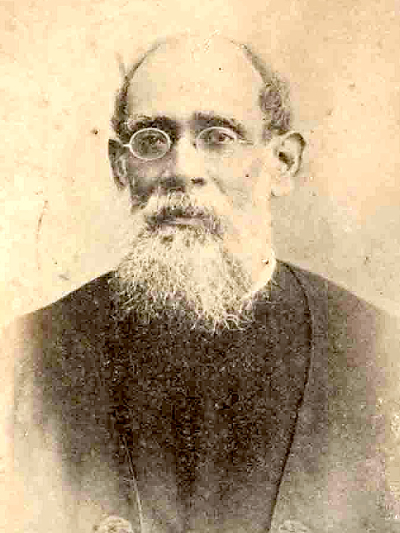
Sir Surendra Nath Banerjea
“Excess of severity is not the path to order. On the contrary it is the path to the bomb.” —Lord Morley
Arbitrary detention for an indefinite period as a regular weapon of Government should now cease. Punishment without trial is abhorrent.
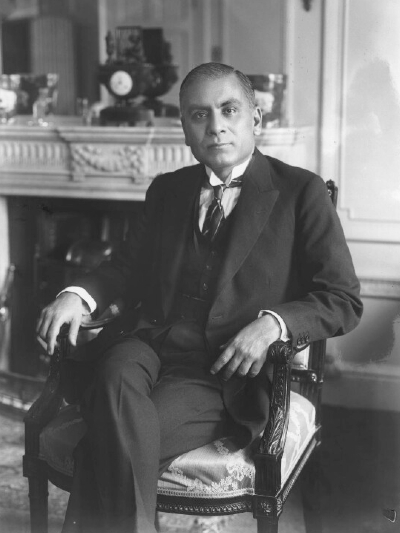
Sir Tej Bahadur Sapru
The Repressive Laws Committee was constituted in compliance with a resolution passed by the Council of State in 1921 with Sir Tej Bahadur Sapru, the then Law Member, as its President. In their report they said that Regulation III of 1818 should not, in future, be put in operation anywhere, except the North-western Frontier Province. The Government of India accepted the recommendations of the Committee. But it seems they have resiled from their former position and are now making free use of the old Regulation.
All that we want is that there should be the rule of law and persons should not suffer merely for their love of their country.

Sarat Chandra Bose
Addendum, June 1936:
Removal of Subhas Chandra Bose to Kurseong
It is some relief that Mr. Subhas Chandra Bose has been removed from the sultry climate of Poona, where he was confined in Yeravada Central Prison, to the cool heights of Kurseong in the Darjeeling district, where he is interned in the house of his brother Mr. Sarat Chandra Bose, who had himself been interned there.
The (unproved) allegations made by Government against both the brothers are similar. Both in turn have been interned in the same town and house. May it be hoped then that Mr. Subhas Chandra Bose will be now released as his brother was? That will give some satisfaction to the public.
But nothing can completely satisfy the public except the repeal of all laws, regulations and other measures sanctioning the arbitrary imprisonment of men and women for indefinite periods without trial and conviction according to ordinary judicial processes.
May 1936
ABOUT ‘THE MODERN REVIEW’:
The Modern Review was founded in 1907 by Ramananda Chatterjee, who also founded and edited the Bengali magazine, Prabasi and the Hindi magazine, Vishal Bharat. All three periodicals can be best described as journals of opinion.
The Modern Review published essays by practically every well-known leader of the Indian nationalist movement, along with the views of foreign sympathisers. It also carried rousing editorials from Ramananda Babu himself. After his demise in 1943, his son Kedarnath carried on the good work until he passed away in 1965. The magazine also published fiction, book and art reviews, travelogues, etc., including essays by pioneers like the anthropologist Verrier Elwin and historian, Jadunath Sarkar.
Ramananda Babu allowed his contributors to present every shade of opinion and argue their cases, while ensuring the magazine itself maintained an impartial editorial stance. He was happy to publish long multi-issue arguments between luminaries like Tagore-Gandhi and Subhas Bose-Sardar Patel about the shape and direction of the nationalist movement. Contemporary opinions about topics such as education, women’s rights, the relations between religions and castes, electoral politics, India’s place in the world, and international relations can be accessed and contextualised by leafing through the archives of this journal of record.
—Devangshu Datta
To read a select anthology of articles, interviews, poetry and fiction published from 1907-1947 in the Modern Review, you can buy‘Patriots, Poets and Prisoners’ here.
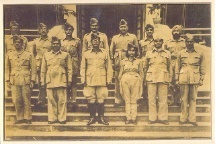
An excerpt from the book My Memories of I.N.A. and Its Netaji by Major General Shahnawaz Khan, where he documents how Bose formed the INA, inspired disillusioned Indian soldiers to revolt, and challenged British rule with Axis support.
Major General Shahnawaz Khan
__
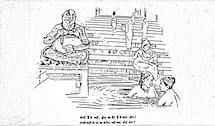
In the colonial period, the threat of the lecherous male gaze was used by the new patriarchy to restrict access to employment and public space for women, maintaining a patriarchal division of labour. Read how this process unfolded in our newest excerpt.
Saurav Kumar Rai
__

Was Lala Lajpat Rai's Hindu nationalism congruent with the principles of secularism? Explore our latest excerpt from Vanya Vaidehi Bhargav's fresh off-the-press book - Being Hindu, Being Indian: Lala Lajpat Rai's Ideas of Nation for more.
Vanya Vaidehi Bhargav
__
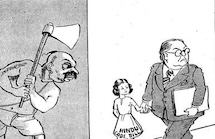
Popularly, we think that political cartoons question the powerful but what if this was not the case? What if political cartoons, replicated structures of the socially dominant? Read how in our new excerpt on political cartoons featuring Dr. Ambedkar.
Unnamati Syama Sundar
__

On Martyrs' day 2024, read the poet Sarojini Naidu's tribute to Gandhi given over All India Radio two days after his assassination.
Sarojini Naidu
__

On Republic Day, the Indian History Collective presents you, twenty-two illustrations from the first illustrated manuscript (1954) of our Constitution.
Indian History Collective
__
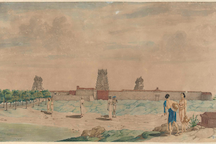
One of the key petitioners in the Ayodhya title dispute was Bhagwan Sri Ram Virajman. This petitioner was no mortal, but God Ram himself. How did Ram find his way from heaven to the Supreme Court of India to plead his case? Read further to find out.
Richard H Davis
__
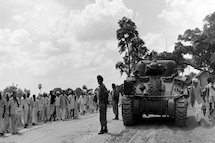
Labelled "one of the shortest, happiest wars ever seen", the integration of the princely state of Hyderabad in 1948 was anything but that. Read about the truth behind the creation of an Indian Union, the fault lines left behind, and what they signify
Afsar Mohammad
__

How did Bengal get a large Muslim population? Was it conversion by ruling elites was there something deeper at play? Read Dr. Eaton's classic essay to find out.
Richard Eaton
__
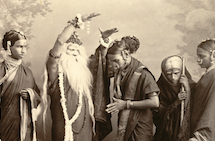
An excerpt from Shailaija Paik's new book 'Vulgarity of Caste' that documents the pivotal role Tamasha (the popular art form) has played in reinforcing and producing caste dynamics in Marathi society.
Shailaja Paik
__
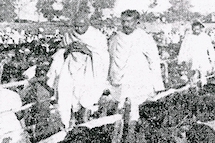
In 1942, two sub-districts in Bengal declared independence and set up a parallel government. The second part of our story brings you archival papers in the form of letters, newspaper reports, and judicial records documenting this remarkable movement.
Indian History Collective
__
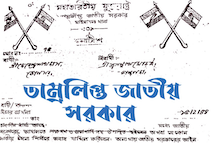
In 1942, five years before India was independent, two sub-divisions in Bengal not only declared their independence— they also instituted a parallel government. The first in a new series.
Indian History Collective
__
TIMELINE
-
2500 BC - Present 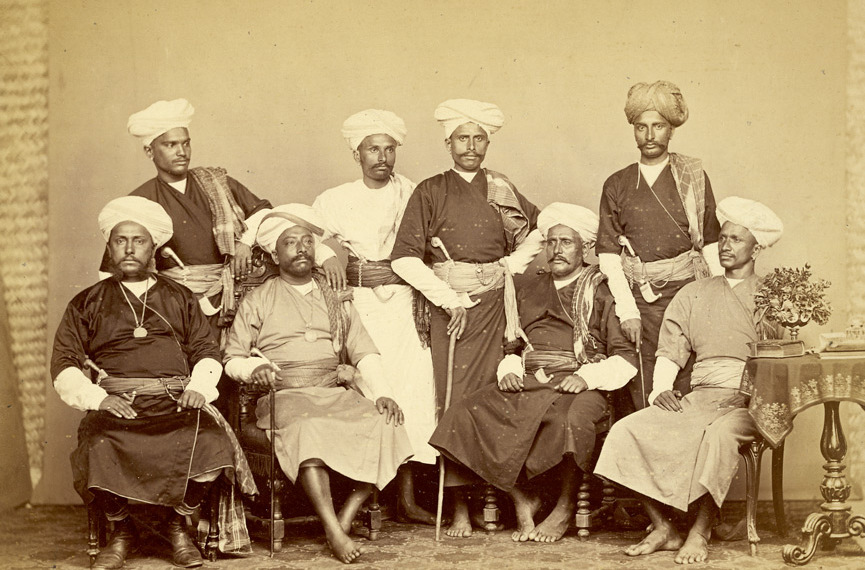
2500 BC - Present Tribal History: Looking for the Origins of the Kodavas -
2200 BC to 600 AD 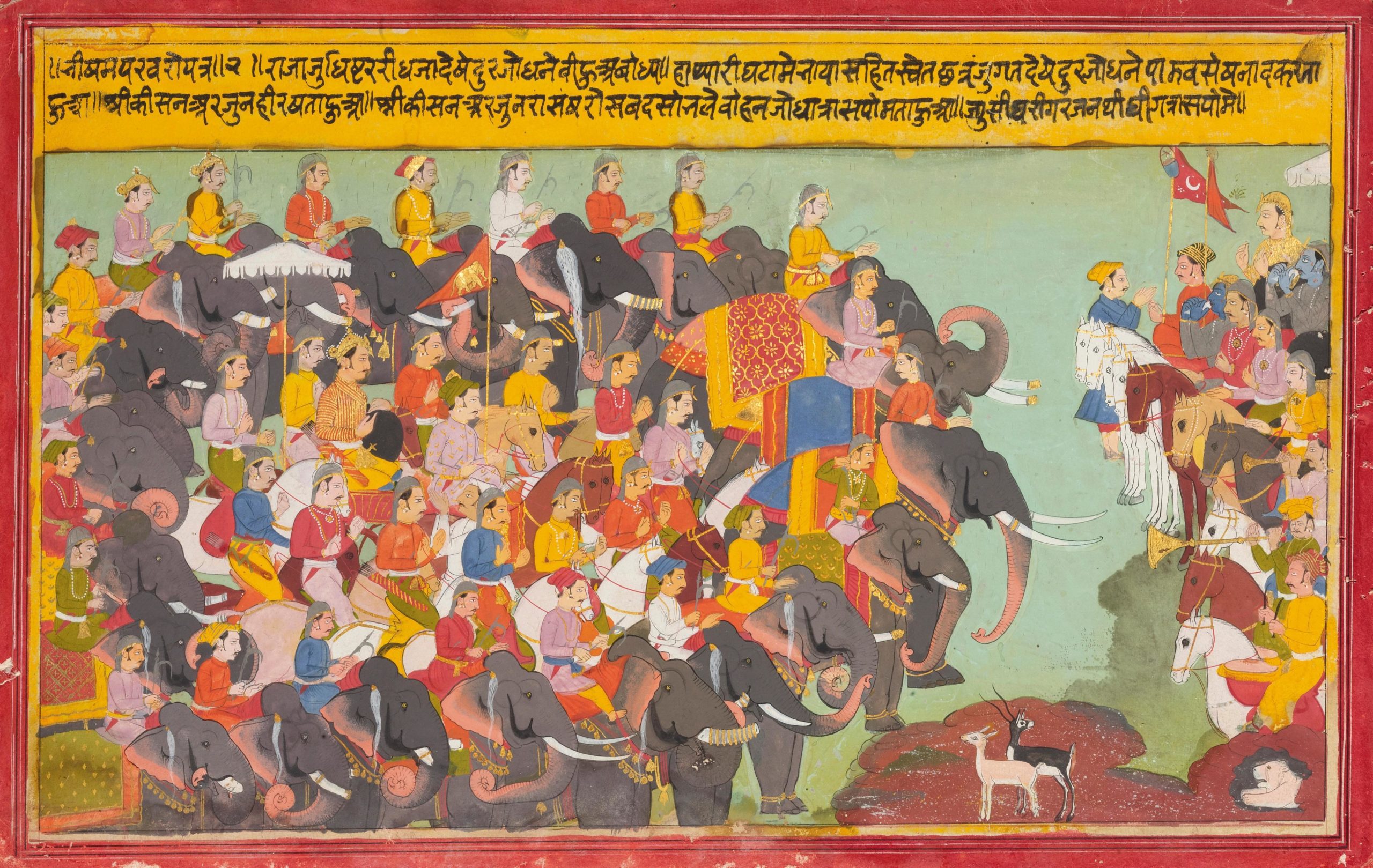
2200 BC to 600 AD War, Political Violence and Rebellion in Ancient India -
400 BC to 1001 AD 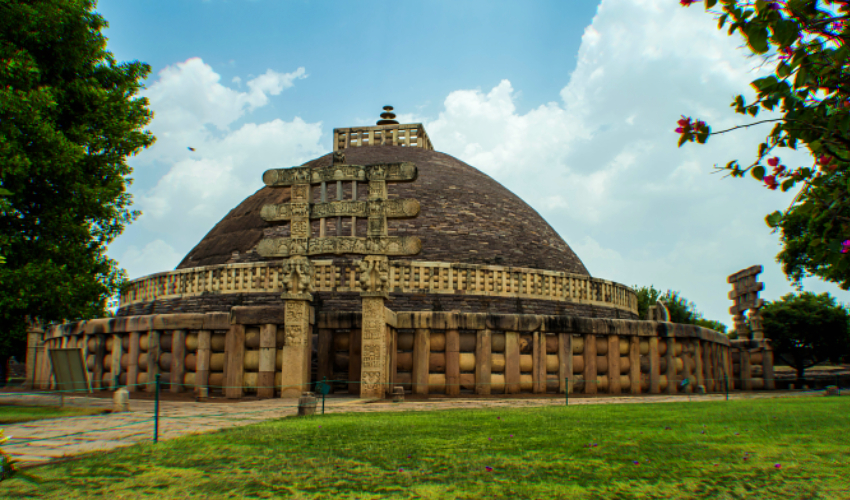
400 BC to 1001 AD The Dissent of the ‘Nastika’ in Early India -
600CE-1200CE 
600CE-1200CE The Other Side of the Vindhyas: An Alternative History of Power -
c. 700 - 1400 AD 
c. 700 - 1400 AD A Historian Recommends: Representing the ‘Other’ in Indian History -
c. 800 - 900 CE 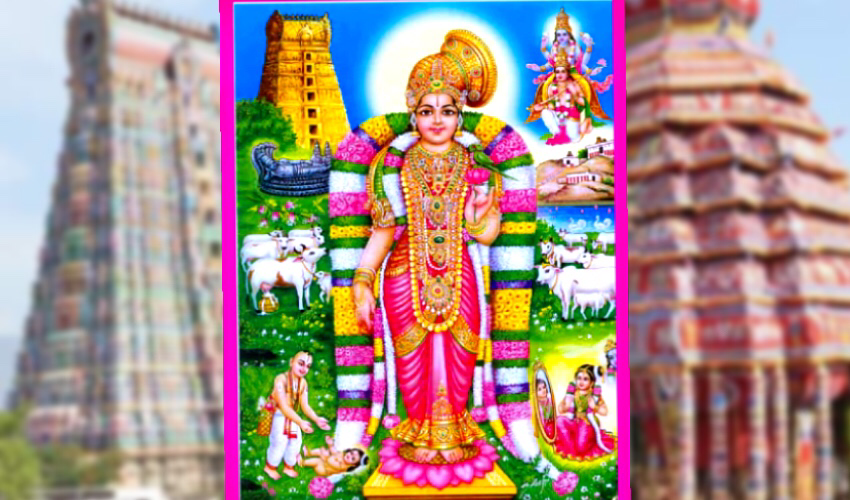
c. 800 - 900 CE ‘Drape me in his scent’: Female Sexuality and Devotion in Andal, the Goddess -
1192 
1192 Sufi Silsilahs: The Mystic Orders in India -
1200 - 1850 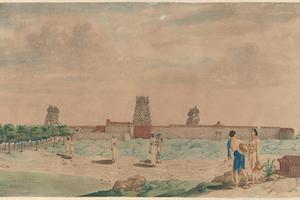
1200 - 1850 Temples, deities, and the law. -
c. 1500 - 1600 AD 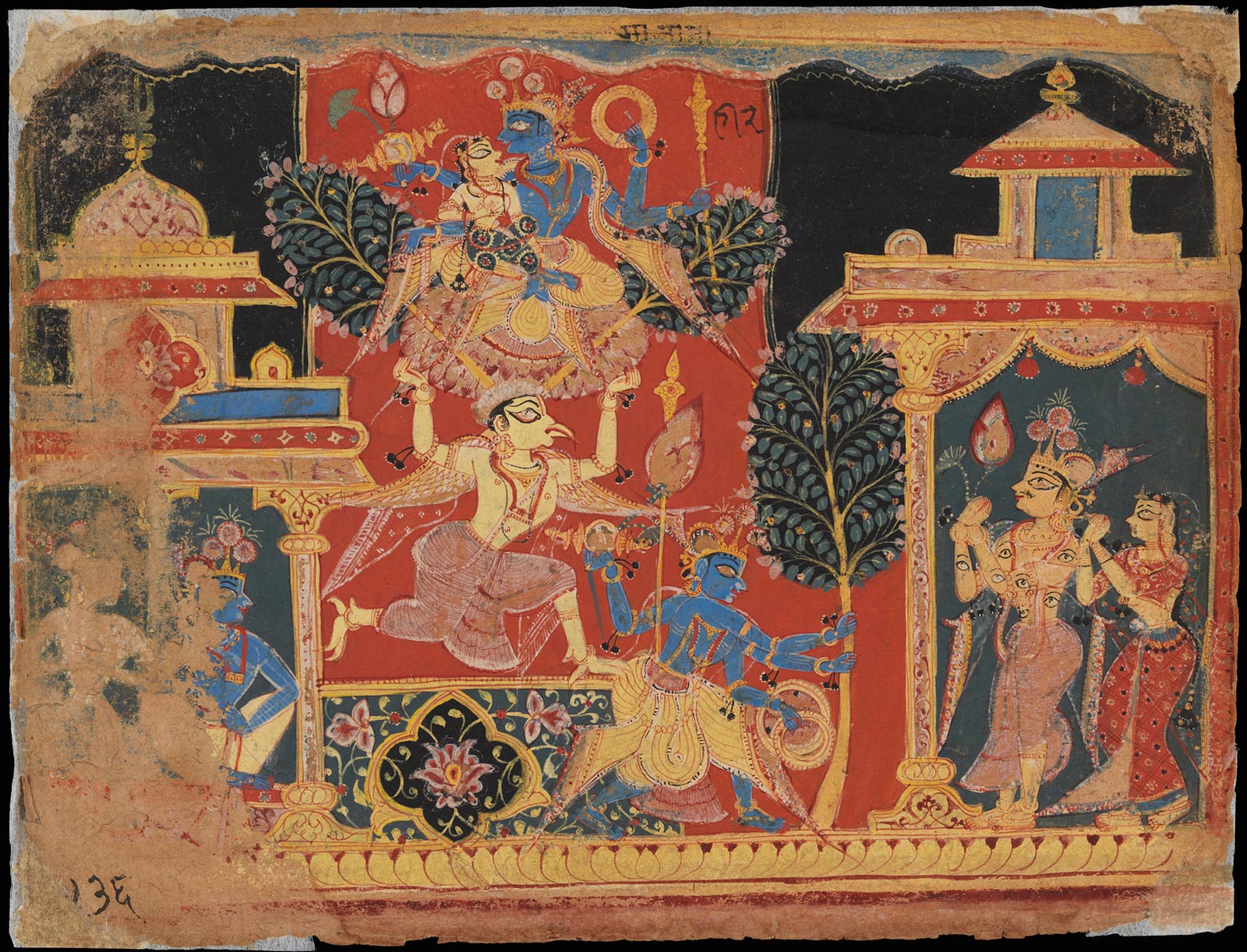
c. 1500 - 1600 AD A Historian Recommends: Religion in Mughal India -
1200-2020 
1200-2020 Policing Untouchables and Producing Tamasha in Maharashtra -
1530-1858 
1530-1858 Rajputs, Mughals and the Handguns of Hindustan -
1575 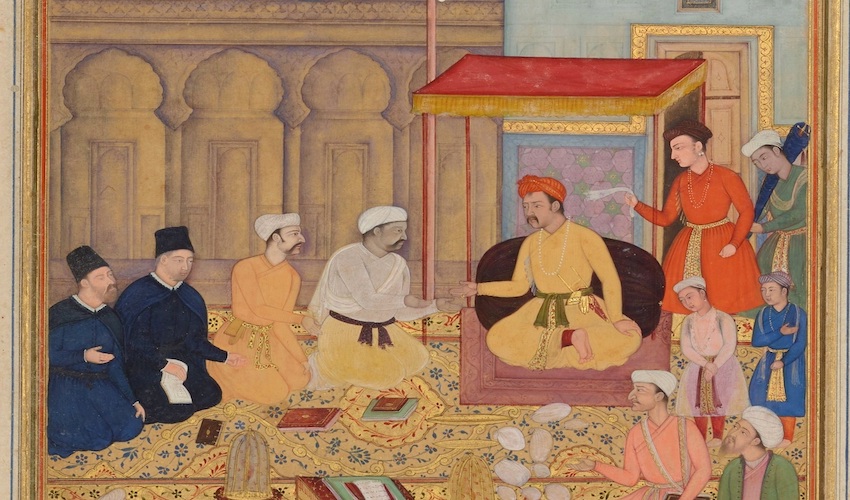
1575 Abdul Qadir Badauni & Abul Fazl: Two Mughal Intellectuals in King Akbar‘s Court -
1579 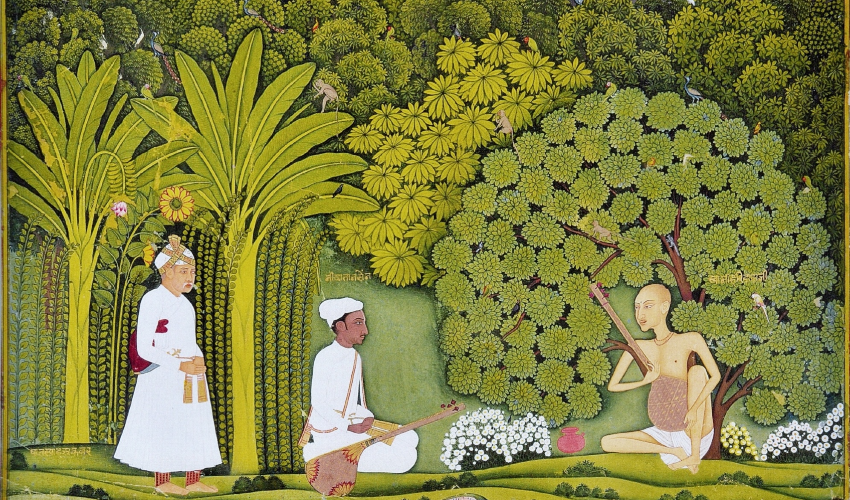
1579 Padshah-i Islam -
1550-1800 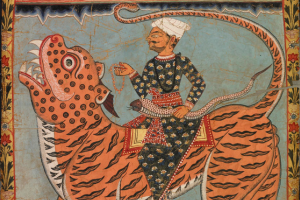
1550-1800 Who are the Bengal Muslims? : Conversion and Islamisation in Bengal -
c. 1600 CE-1900 CE 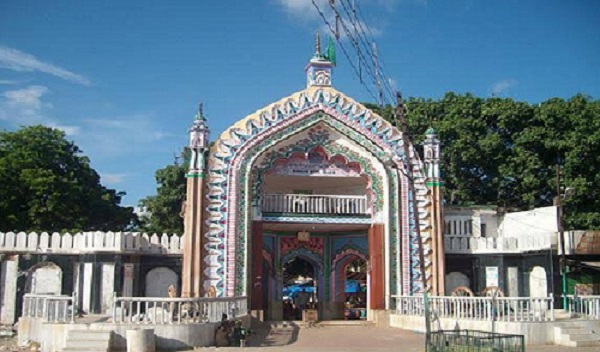
c. 1600 CE-1900 CE The Birth of a Community: UP’s Ghazi Miyan and Narratives of ‘Conquest’ -
1553 - 1900 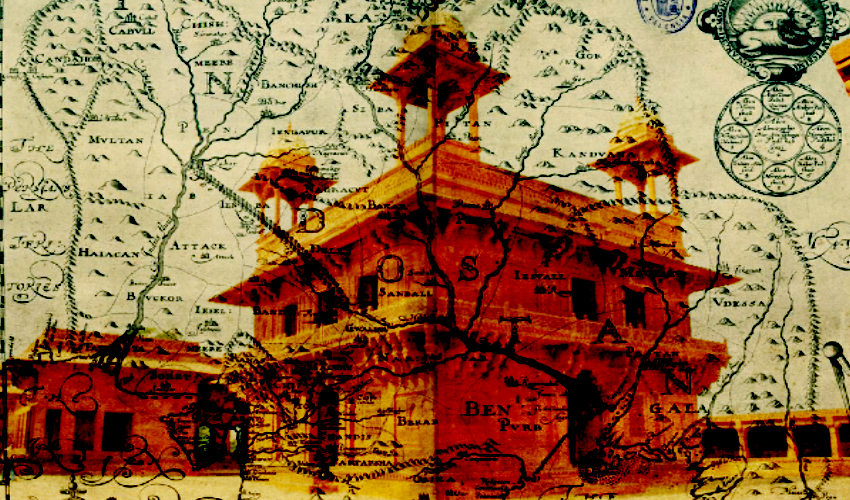
1553 - 1900 What Happened to ‘Hindustan’? -
1630-1680 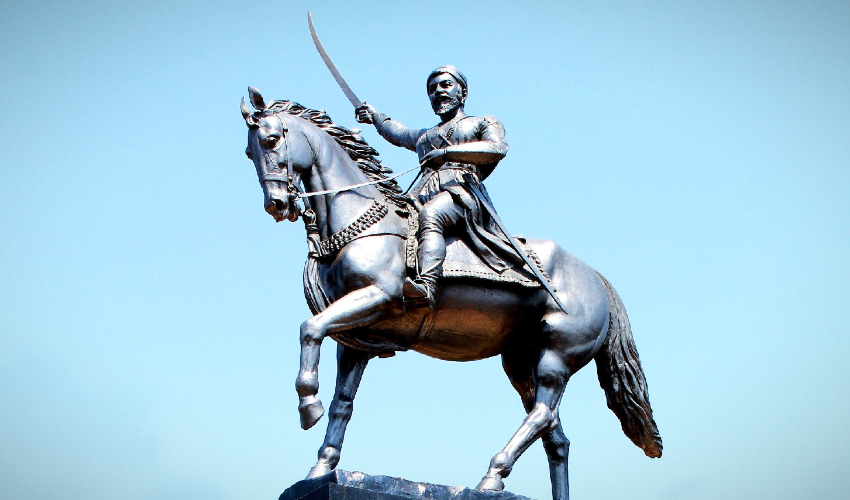
1630-1680 Shivaji: Hindutva Icon or Secular Nationalist? -
1630 -1680 
1630 -1680 Shivaji: His Legacy & His Times -
c. 1724 – 1857 A.D. 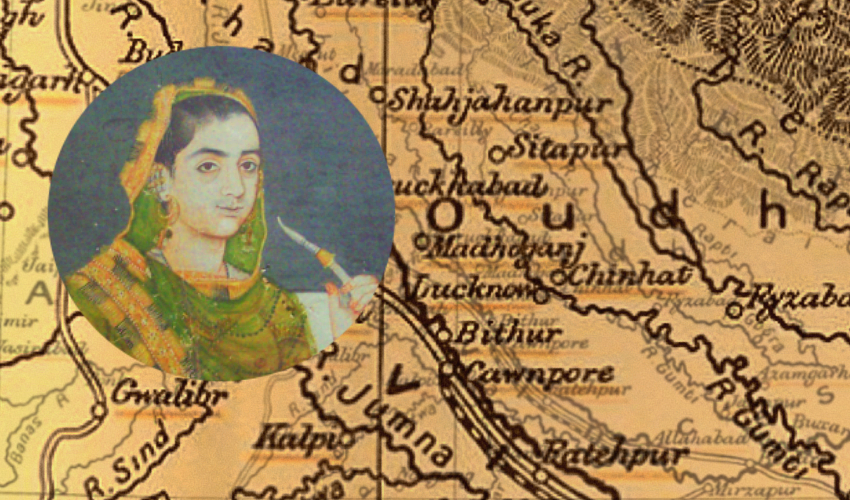
c. 1724 – 1857 A.D. Bahu Begum and the Gendered Struggle for Power -
1818 - Present 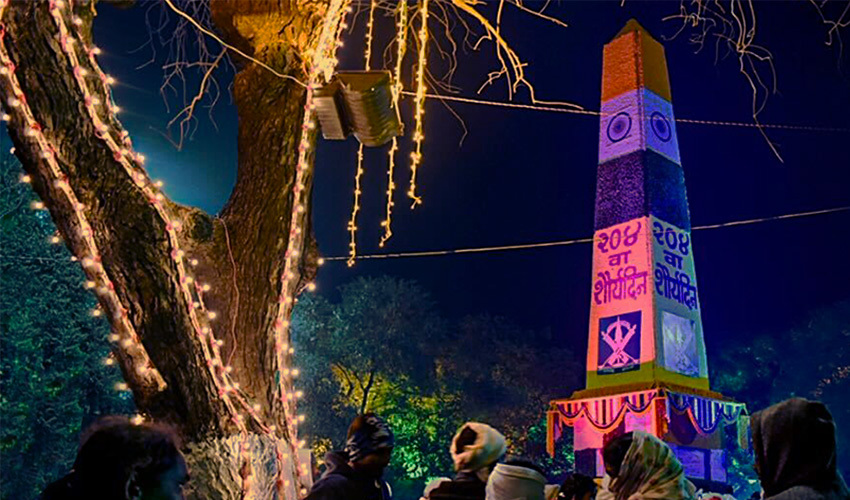
1818 - Present The Contesting Memories of Bhima-Koregaon -
1831 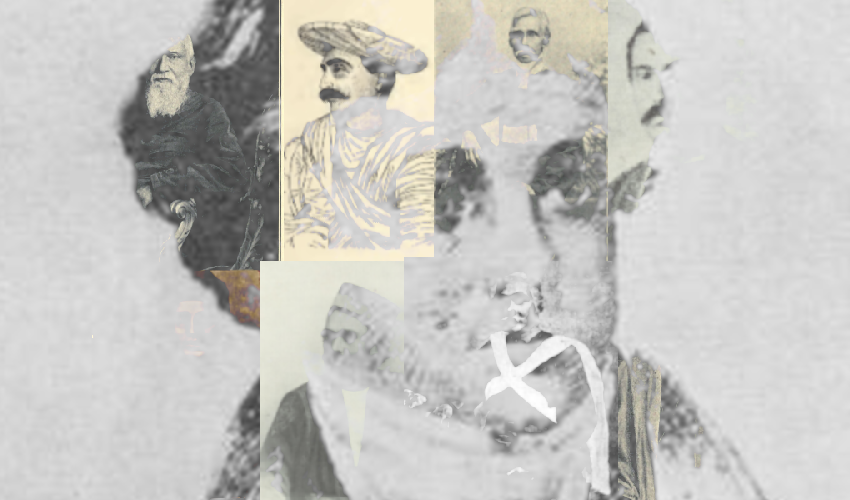
1831 The Derozians’ India -
1855 
1855 Ayodhya 1855 -
1856 
1856 “Worshipping the dead is not an auspicious thing” — Ghalib -
1857 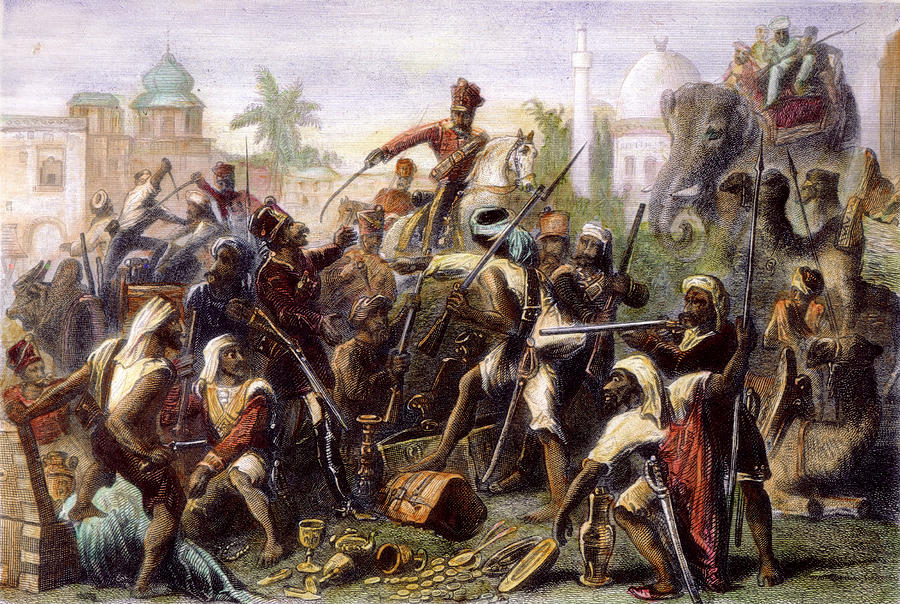
1857 A Subaltern speaks: Dalit women’s counter-history of 1857 -
1858 - 1976 
1858 - 1976 Lifestyle as Resistance: The Curious Case of the Courtesans of Lucknow -
1883 - 1894 
1883 - 1894 The Sea Voyage Question: A Nineteenth century Debate -
1887 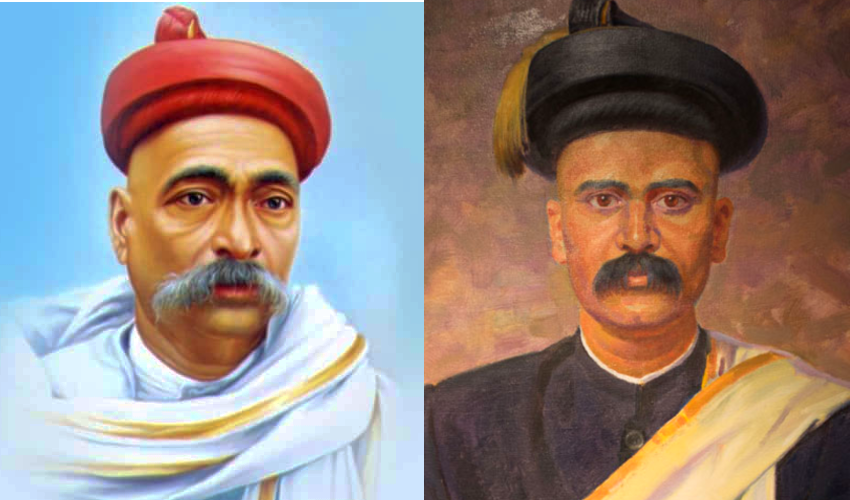
1887 The Great Debaters: Tilak Vs. Agarkar -
1893-1946 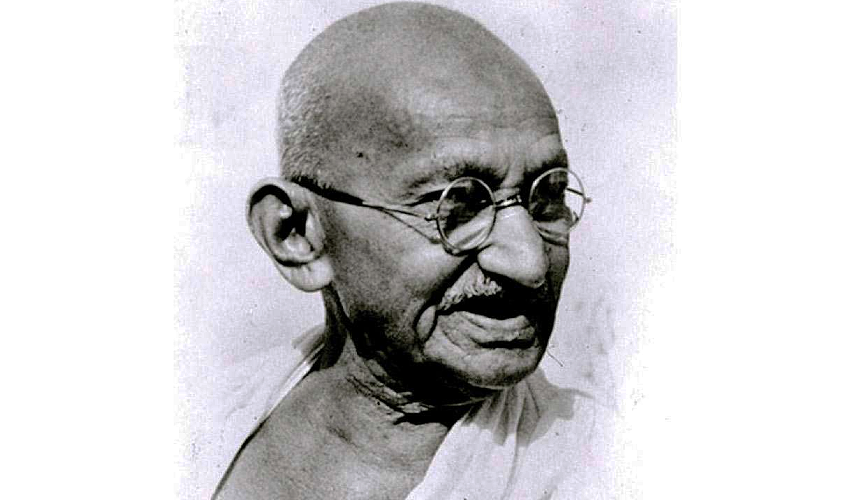
1893-1946 A Historian Recommends: Gandhi Vs. Caste -
1897 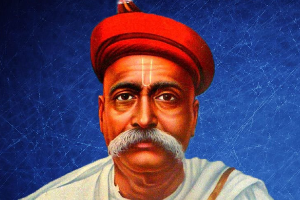
1897 Queen Empress vs. Bal Gangadhar Tilak: An Autopsy -
1913 - 1916 Modern Review 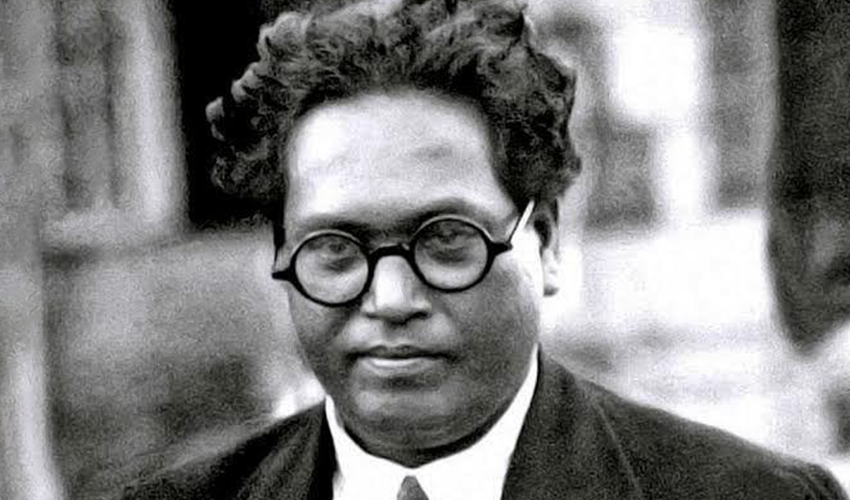
1913 - 1916 A Young Ambedkar in New York -
1916 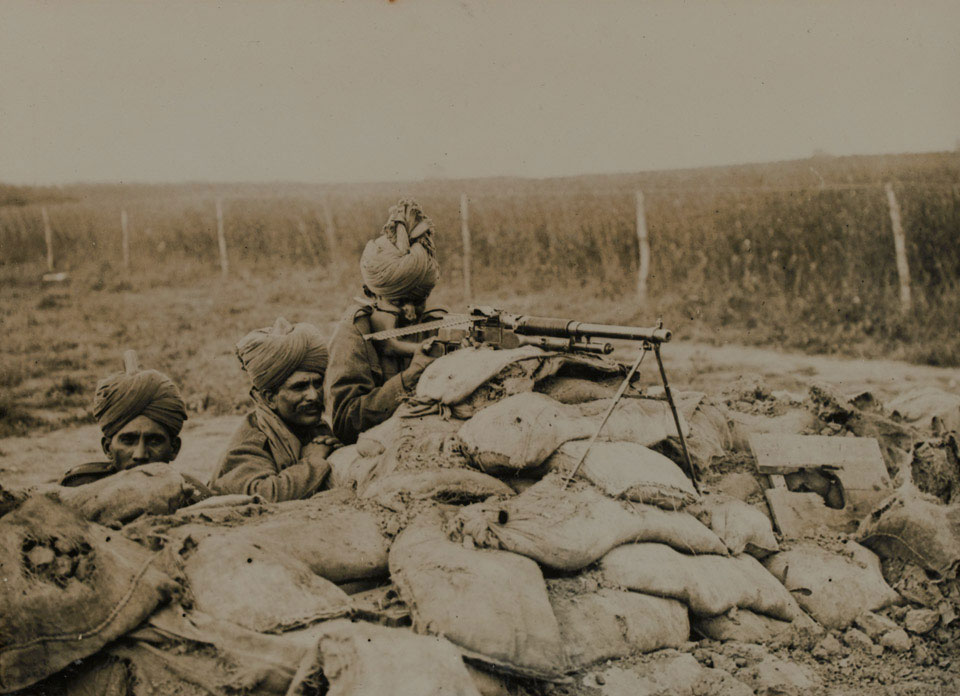
1916 A Rare Account of World War I by an Indian Soldier -
1917 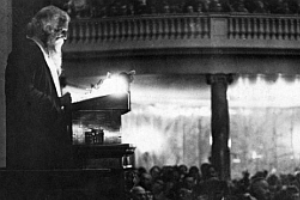
1917 On Nationalism, by Tagore -
1918 - 1919 
1918 - 1919 What Happened to the Virus That Caused the World’s Deadliest Pandemic? -
1920 - 1947 
1920 - 1947 How One Should Celebrate Diwali, According to Gandhi -
1921 
1921 Great Debates: Tagore Vs. Gandhi (1921) -
1921 - 2015 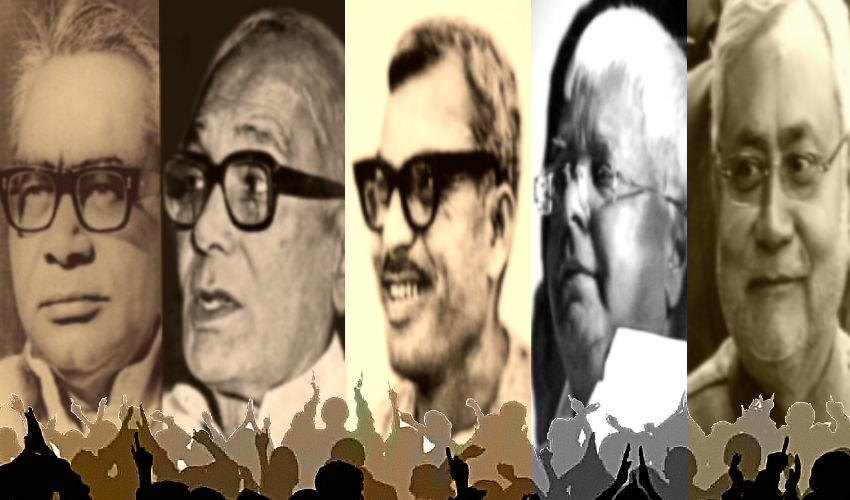
1921 - 2015 A History of Caste Politics and Elections in Bihar -
1915-1921 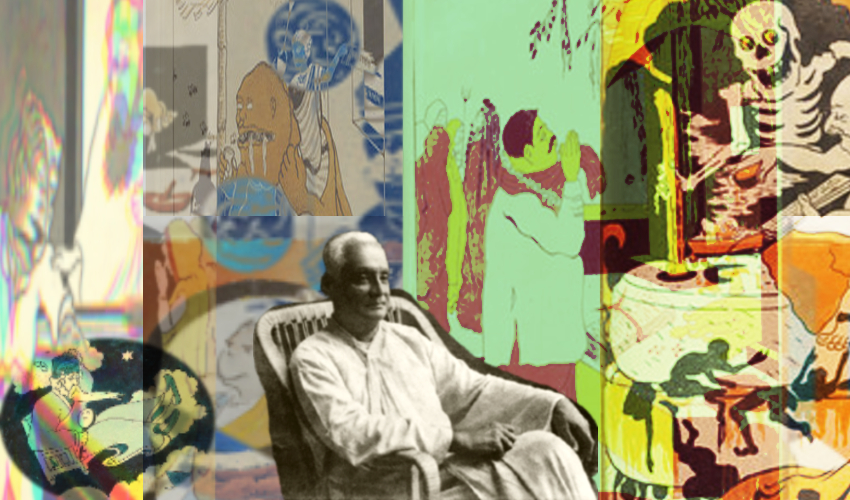
1915-1921 The Satirical Genius of Gaganendranath Tagore -
1924-1937 
1924-1937 What were Gandhi’s Views on Religious Conversion? -
1900-1950 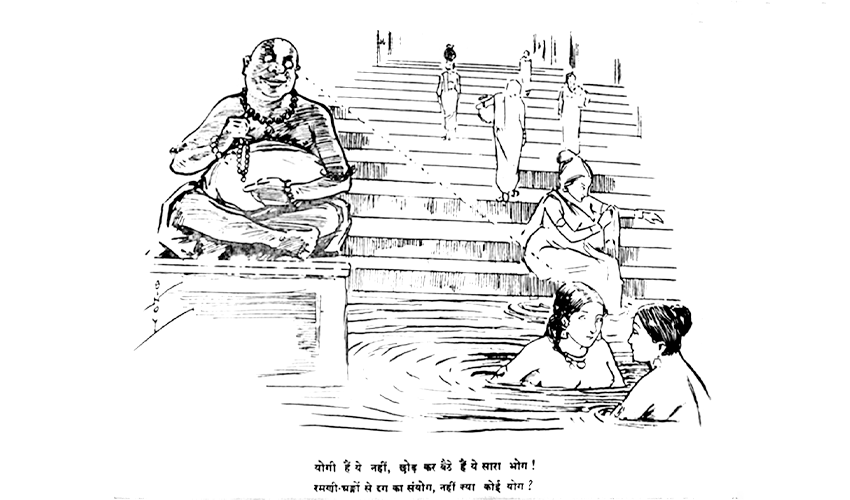
1900-1950 Gazing at the Woman’s Body: Historicising Lust and Lechery in a Patriarchal Society -
1925, 1926 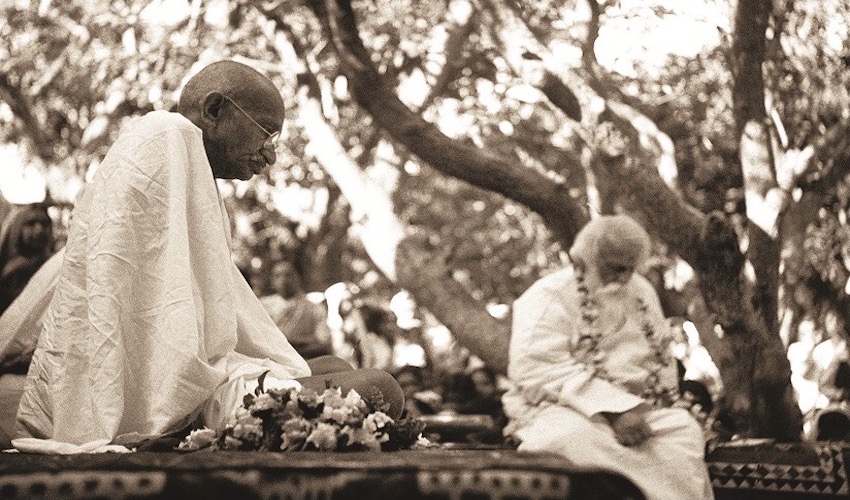
1925, 1926 Great Debates: Tagore vs Gandhi (1925-1926) -
1928 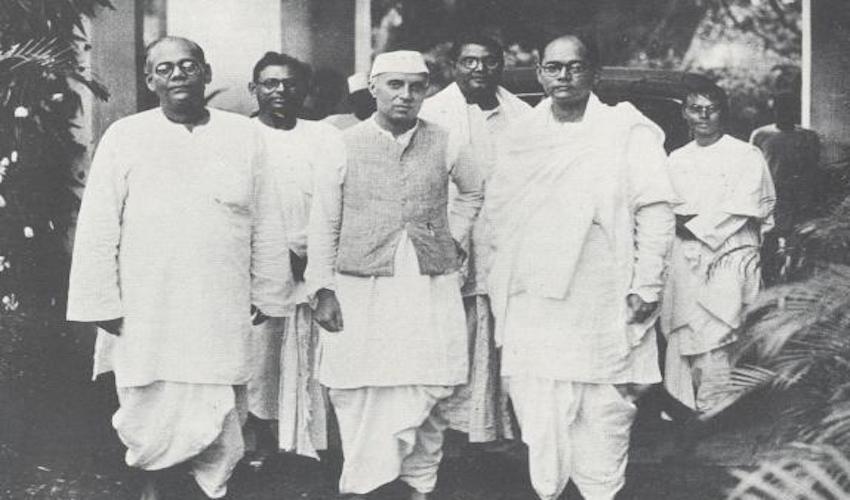
1928 Bhagat Singh’s dilemma: Nehru or Bose? -
1930 Modern Review 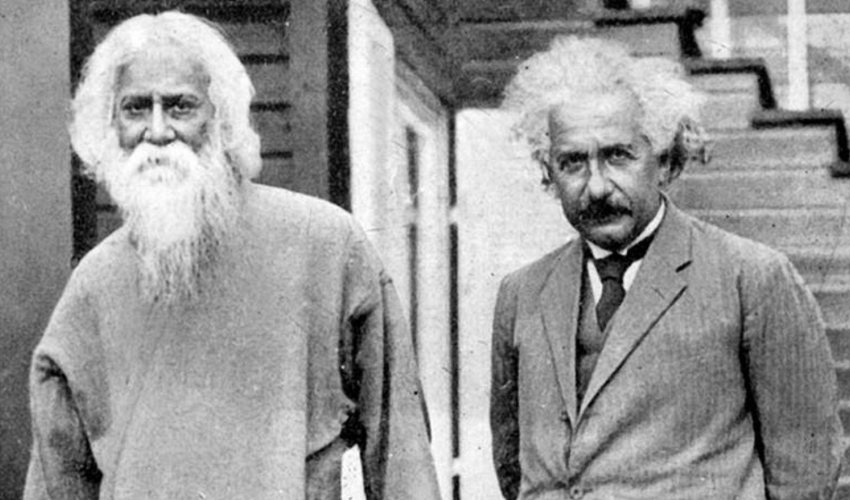
1930 The Modern Review Special: On the Nature of Reality -
1932 
1932 Caste, Gandhi and the Man Beside Gandhi -
1933 - 1991 
1933 - 1991 Raghubir Sinh: The Prince Who Would Be Historian -
1935 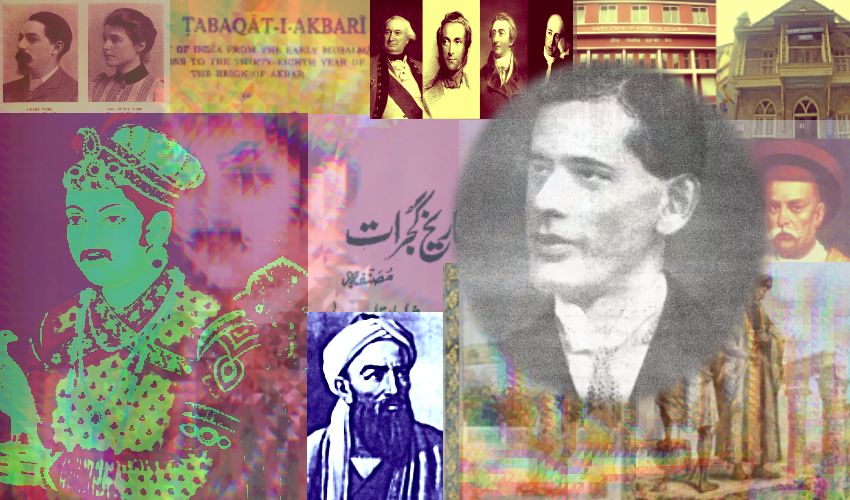
1935 A Historian Recommends: SA Khan’s Timeless Presidential Address -
1865-1928 
1865-1928 Understanding Lajpat Rai’s Hindu Politics and Secularism -
1935 Modern Review 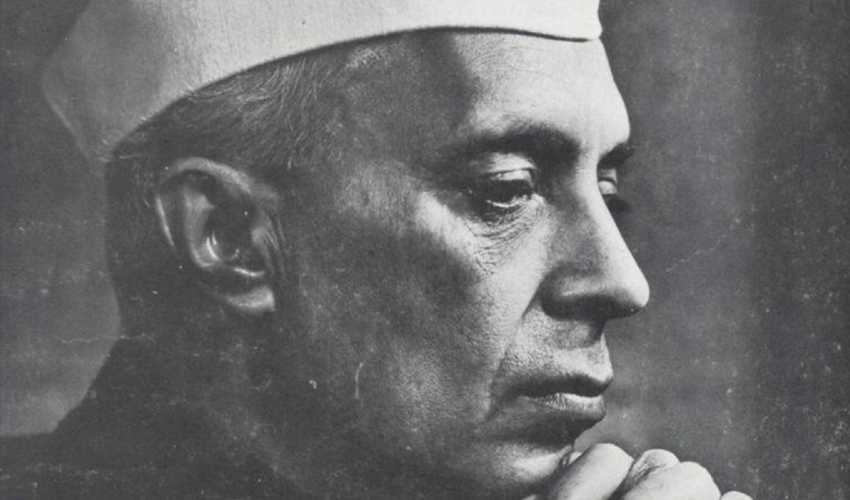
1935 The Modern Review Special: The Mind of a Judge -
1936 Modern Review 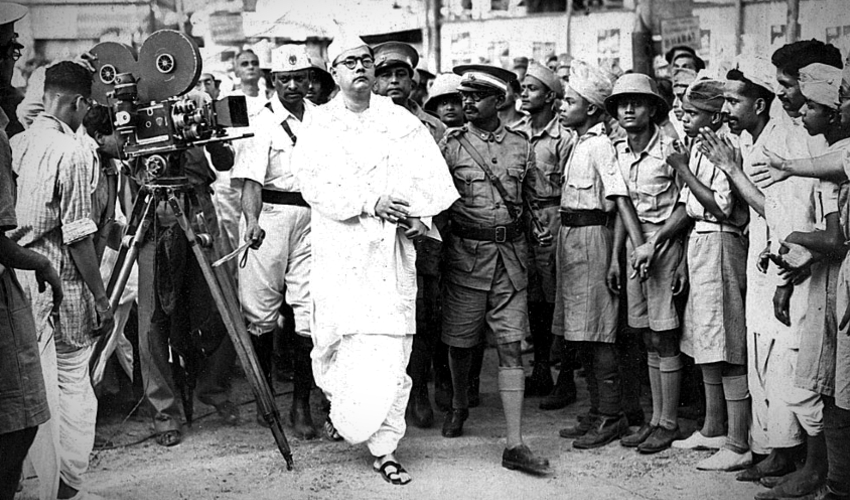
1936 The Modern Review Special: When Netaji Subhas Bose Was Wrongfully Detained for ‘Terrorism’ -
1936 
1936 Annihilation of Caste: Part 1 -
1936 Modern Review 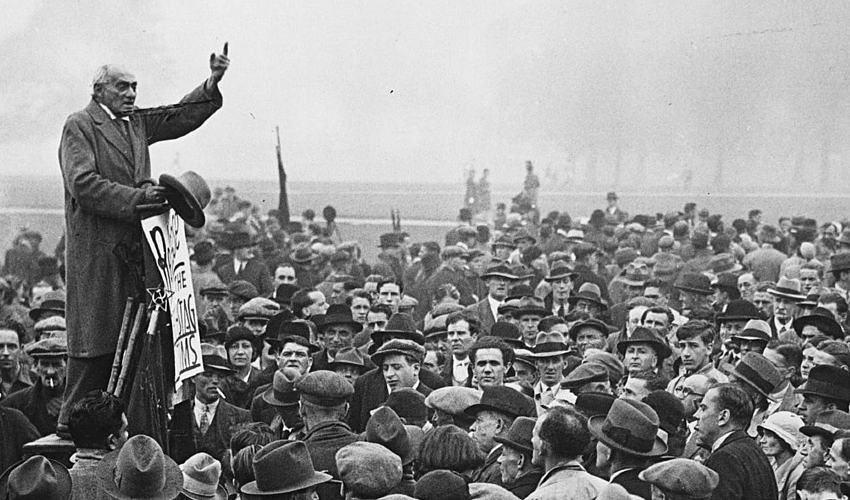
1936 The Modern Review Special: An Indian MP in the British Parliament -
1936 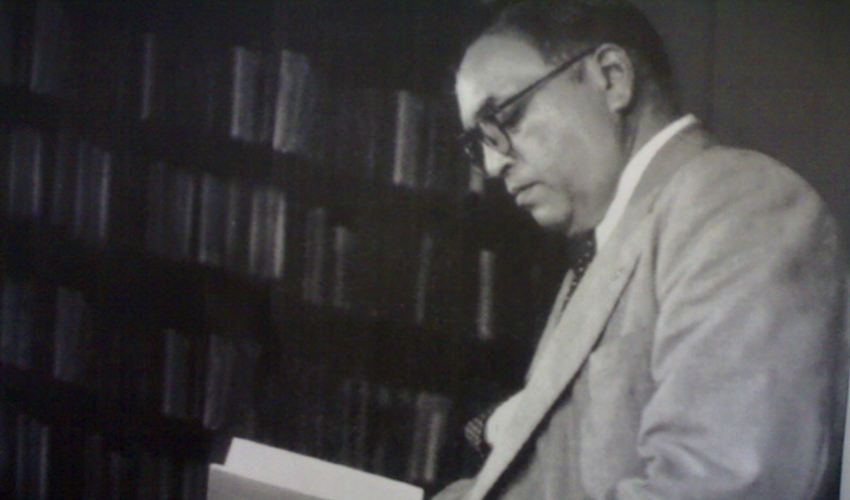
1936 Annihilation of Caste: Part 2 -
1936 
1936 A Reflection of His Age: Munshi Premchand on the True Purpose of Literature -
1936 Modern Review 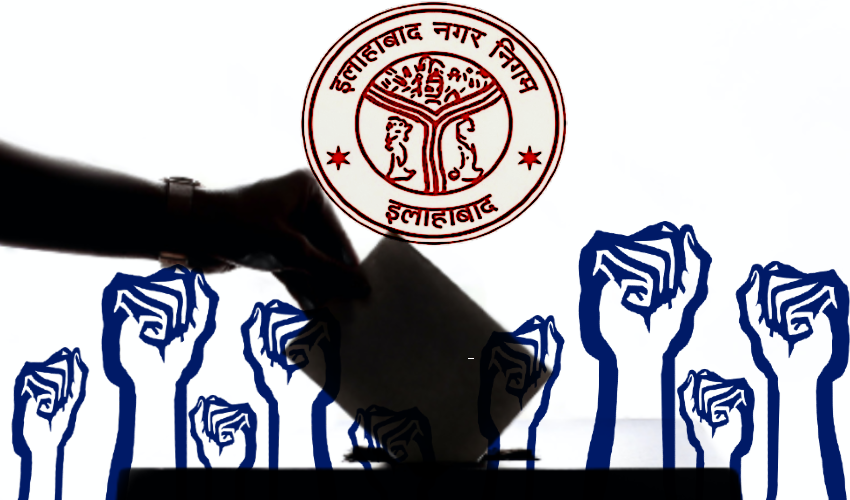
1936 The Modern Review Special: The Defeat of a Dalit Candidate in a 1936 Municipal Election -
1937 Modern Review 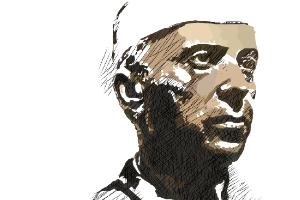
1937 The Modern Review Special: Rashtrapati -
1938 
1938 Great Debates: Nehru Vs. Jinnah (1938) -
1942 Modern Review 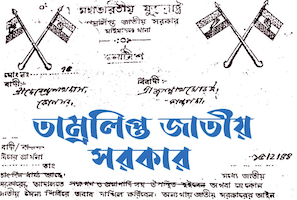
1942 IHC Uncovers: A Parallel Government In British India (Part 1) -
1943-1945 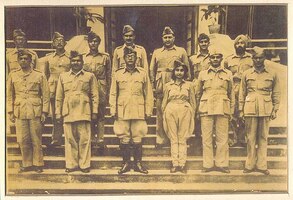
1943-1945 Origin Of The Azad Hind Fauj -
1942-1945 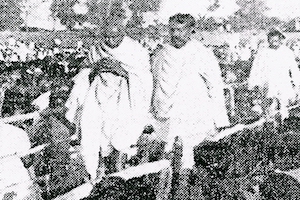
1942-1945 IHC Uncovers: A Parallel Government in British India (Part 2) -
1946 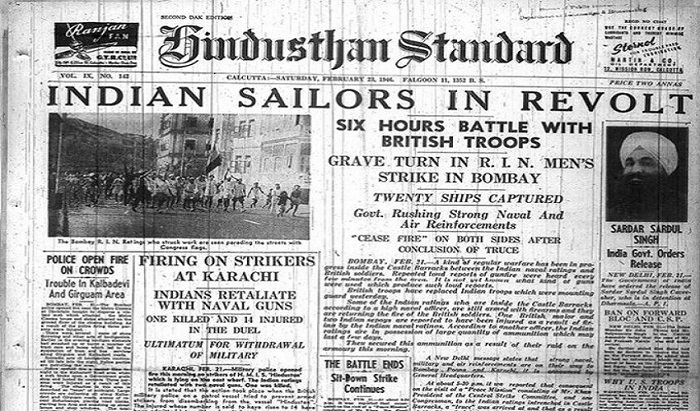
1946 Our Last War of Independence: The Royal Indian Navy Mutiny of 1946 -
1946 
1946 An Artist’s Account of the Tebhaga Movement in Pictures And Prose -
1946 – 1947 
1946 – 1947 “The Most Democratic People on Earth” : An Adivasi Voice in the Constituent Assembly -
1946-1947 
1946-1947 VP Menon and the Birth of Independent India -
1916 - 1947 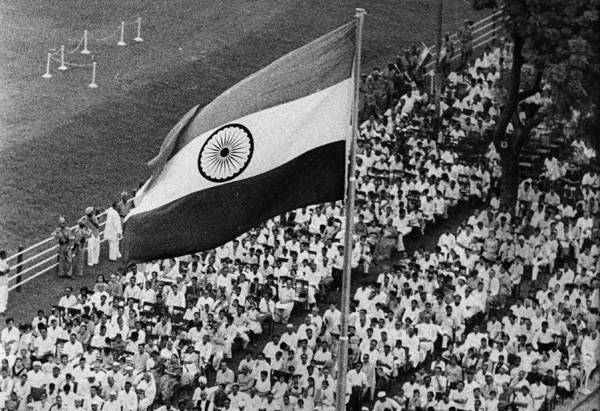
1916 - 1947 8 @ 75: 8 Speeches Independent Indians Must Read -
1947-1951 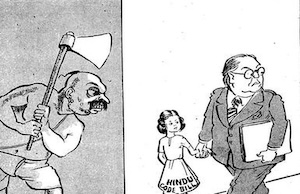
1947-1951 Ambedkar Cartoons: The Joke’s On Us -
1948 
1948 “My Father, Do Not Rest” -
1940-1960 
1940-1960 Integration Myth: A Silenced History of Hyderabad -
1948 
1948 The Assassination of a Mahatma, the Princely States and the ‘Hindu’ Nation -
1949 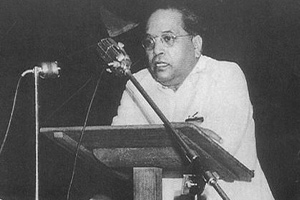
1949 Ambedkar warns against India becoming a ‘Democracy in Form, Dictatorship in Fact’ -
1950 
1950 Illustrations from the constitution -
1951 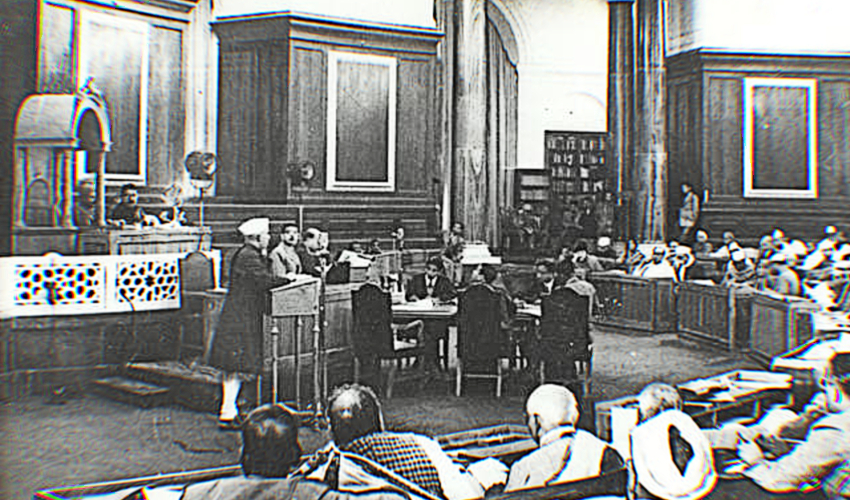
1951 How the First Amendment to the Indian Constitution Circumscribed Our Freedoms & How it was Passed -
1967 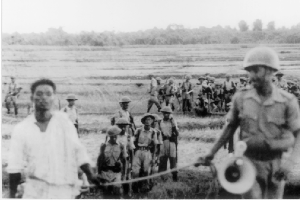
1967 Once Upon A Time In Naxalbari -
1970 
1970 R.C. Majumdar on Shortcomings in Indian Historiography -
1973 - 1993 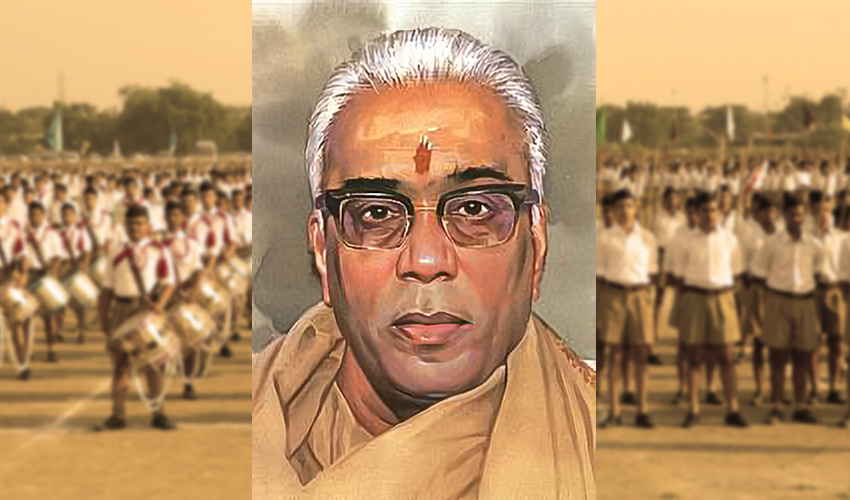
1973 - 1993 Balasaheb Deoras: Kingmaker of the Sangh -
1975 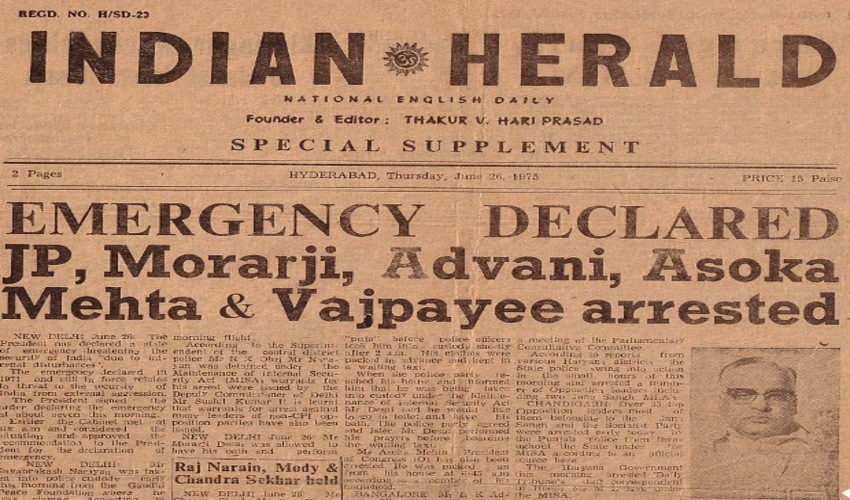
1975 The Emergency Package: Shadow Power -
1975 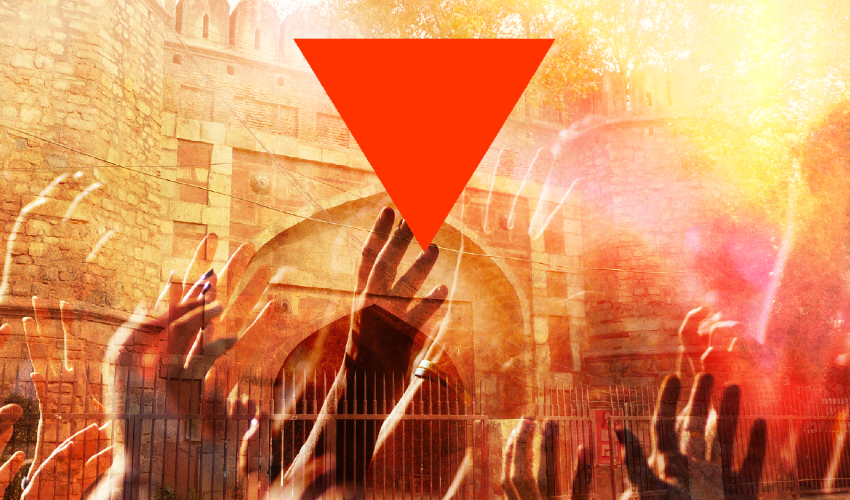
1975 The Emergency Package: The Prehistory of Turkman Gate – Population Control -
1977 – 2011 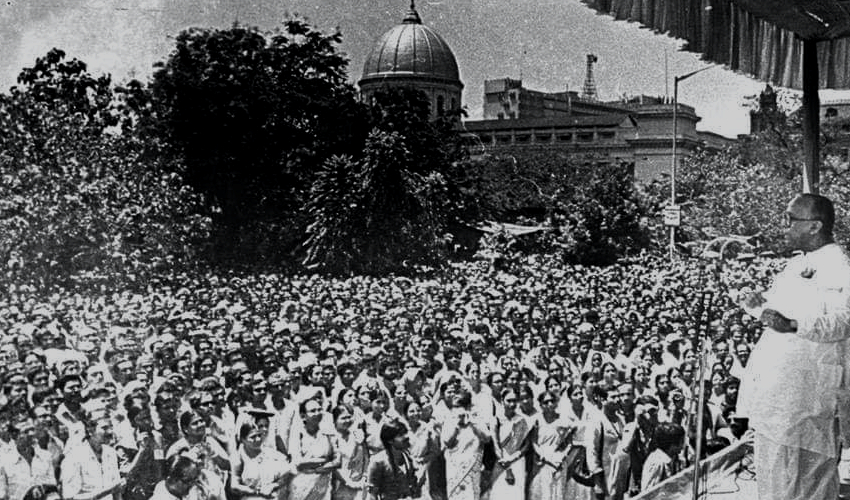
1977 – 2011 Power is an Unforgiving Mistress: Lessons from the Decline of the Left in Bengal -
1984 
1984 Mrs Gandhi’s Final Folly: Operation Blue Star -
1916-2004 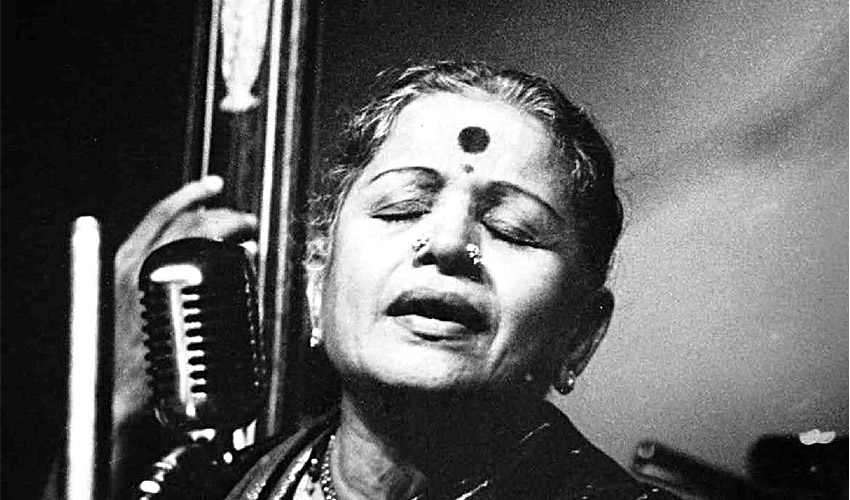
1916-2004 Amjad Ali Khan on M.S. Subbulakshmi: “A Glorious Chapter for Indian Classical Music” -
2008 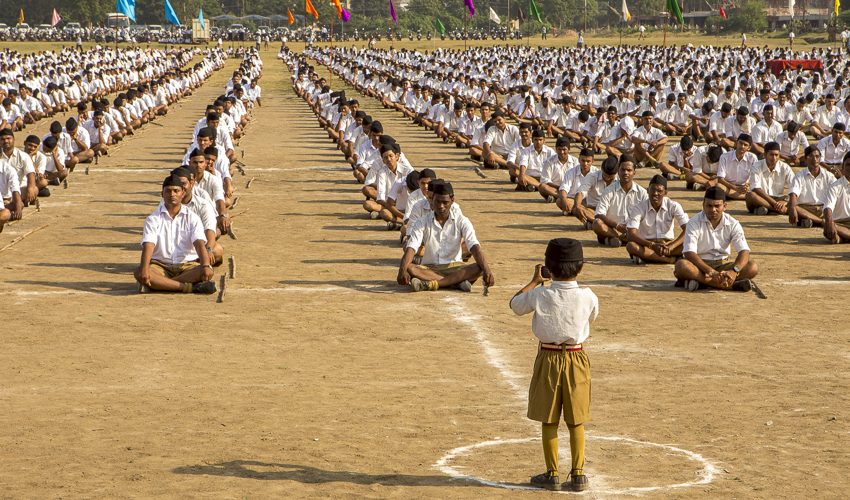
2008 Whose History Textbook Is It Anyway? -
2006 - 2009 
2006 - 2009 Singur-Nandigram-Lalgarh: Movements that Remade Mamata Banerjee -
2020 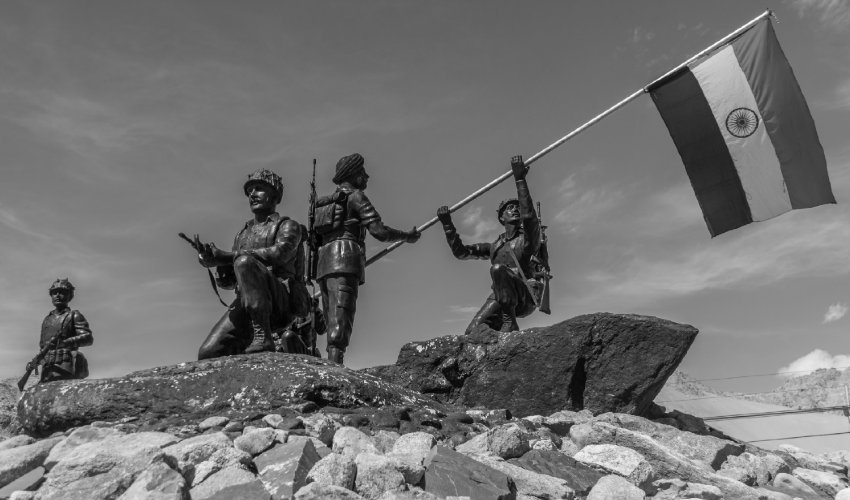
2020 The Indo-China Conflict: 10 Books We Need To Read -
2021 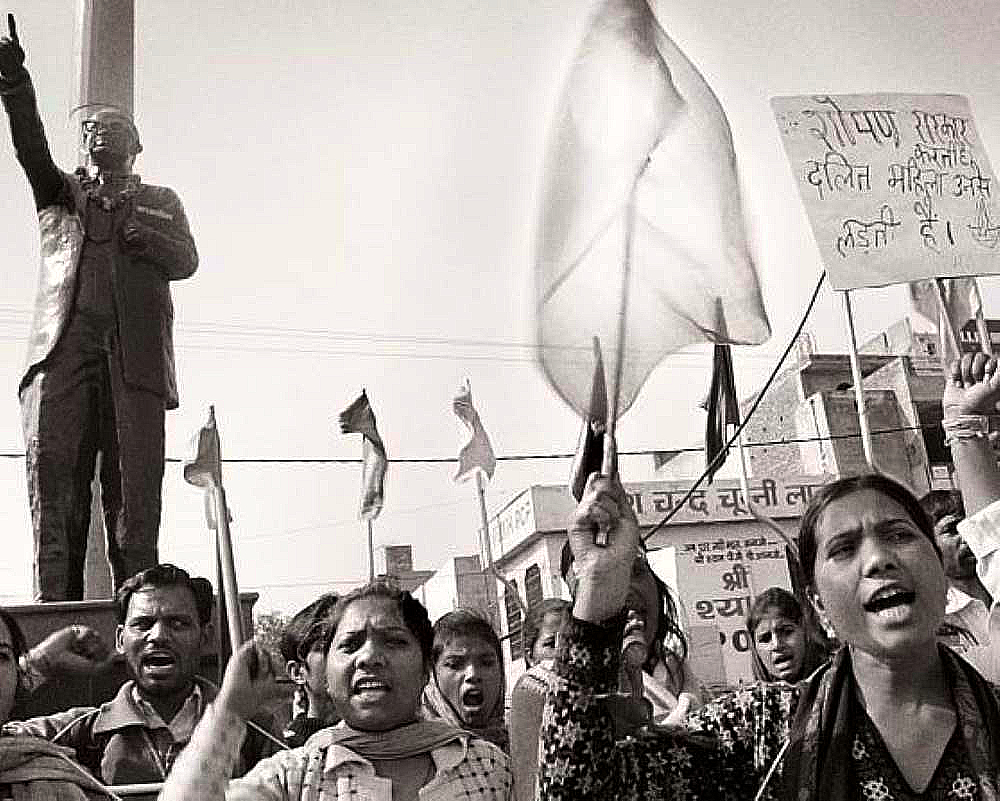
2021 Singing/Writing Liberation: Dalit Women’s Narratives



